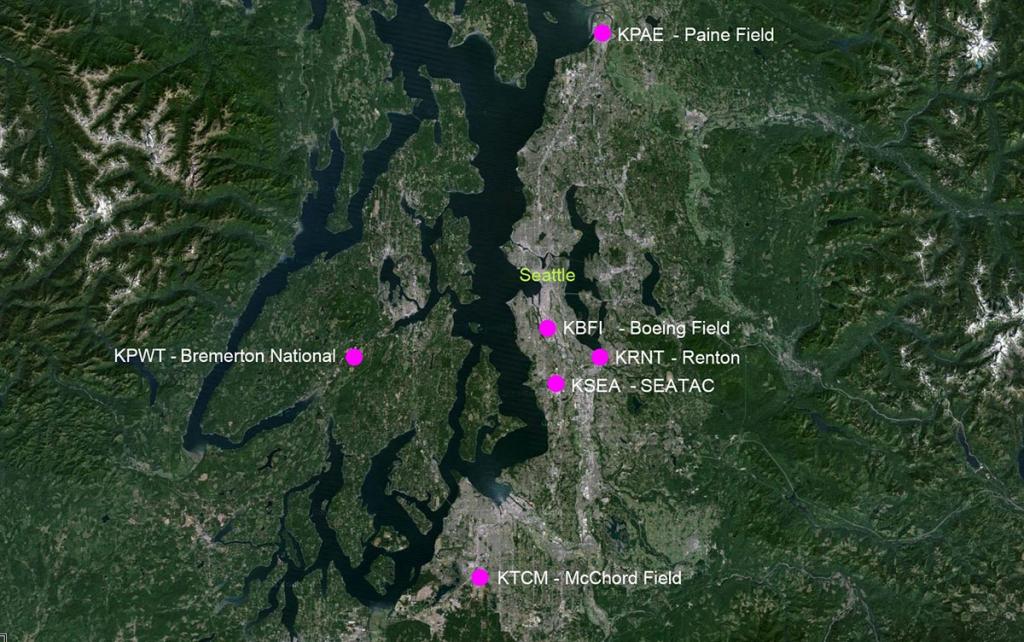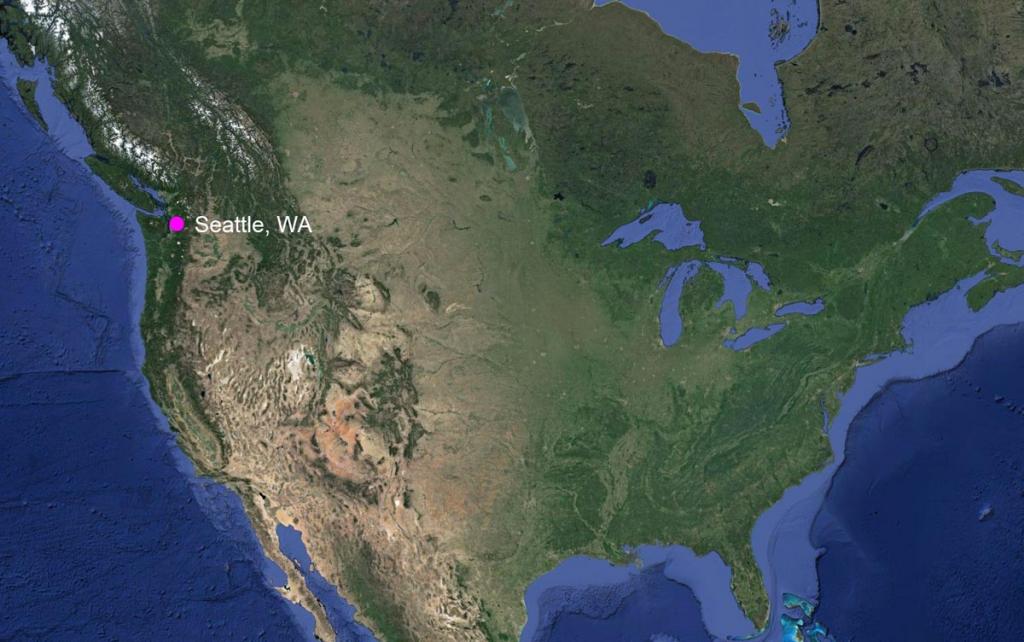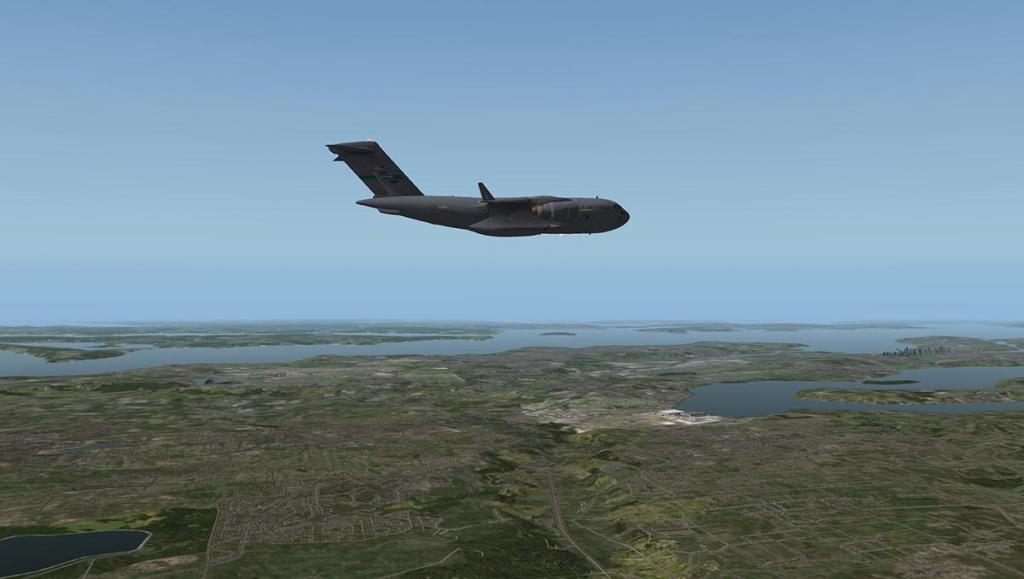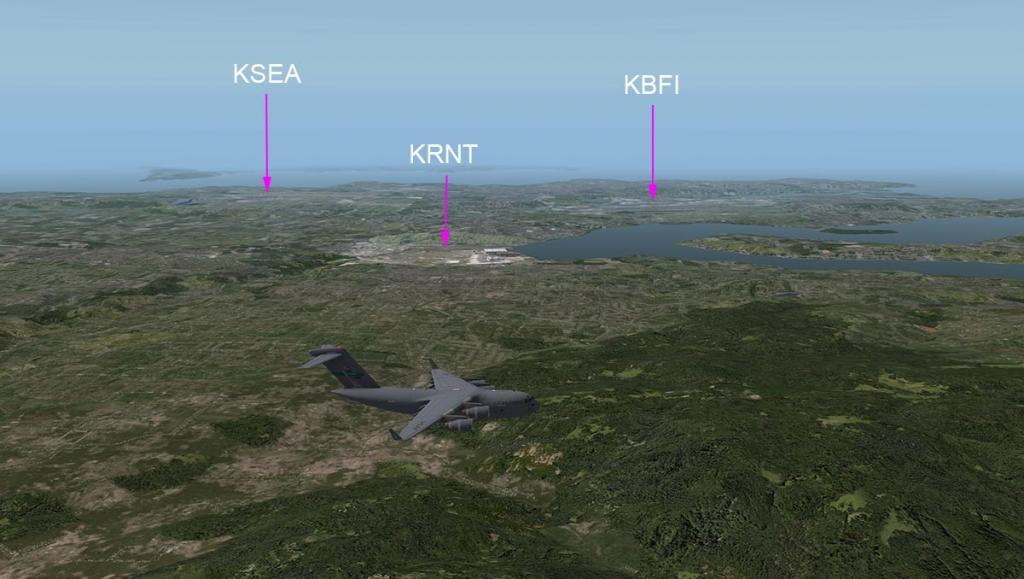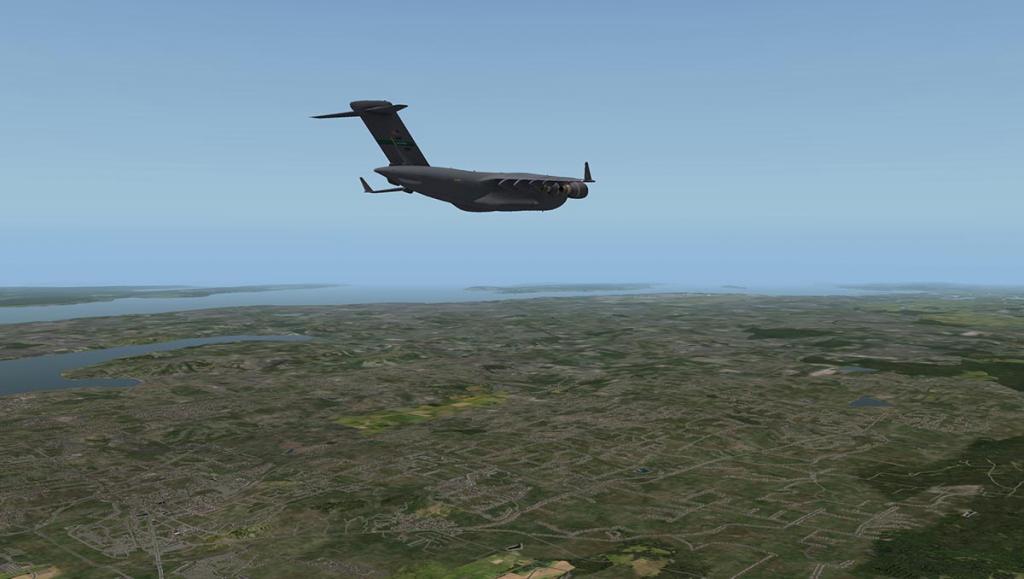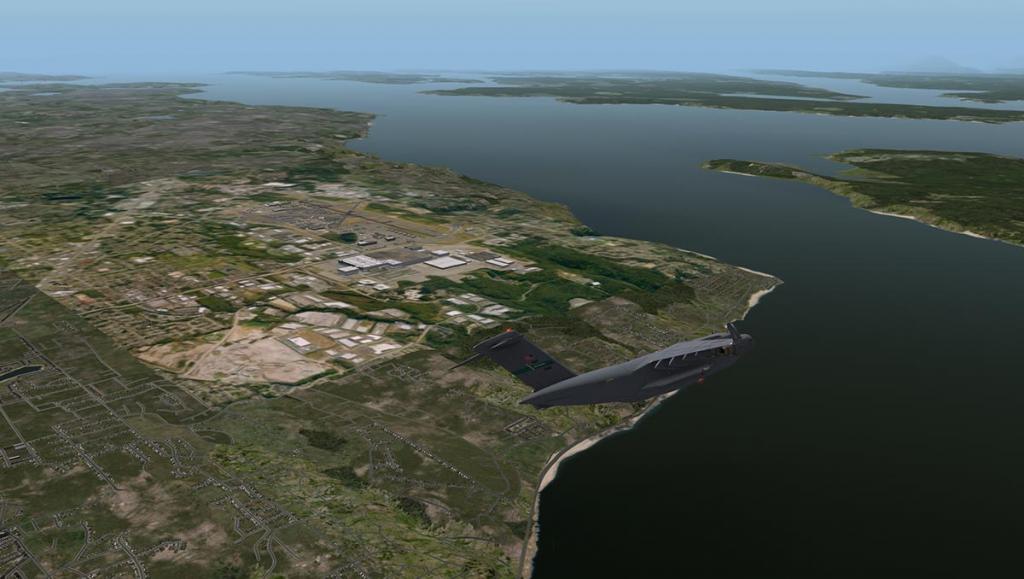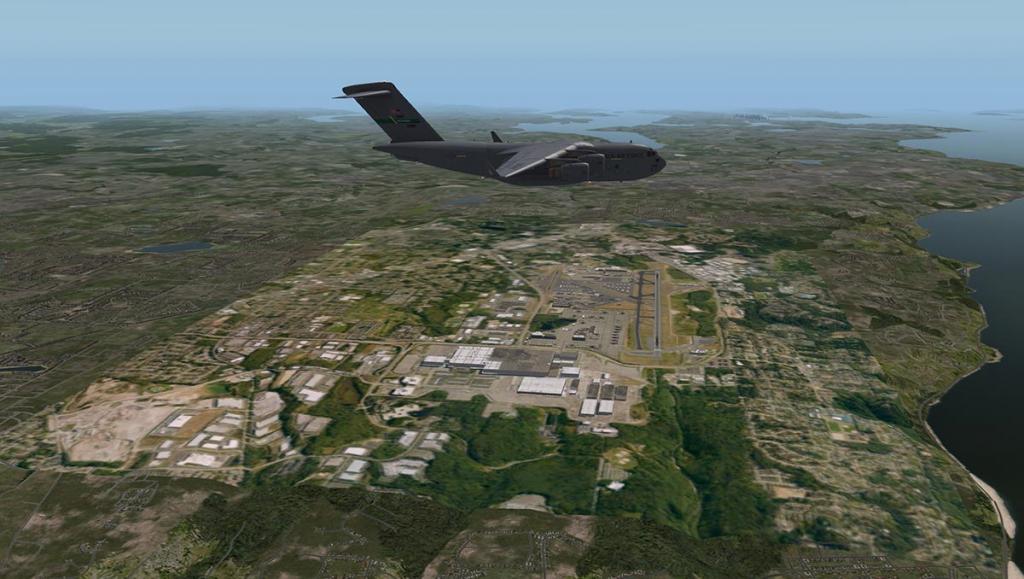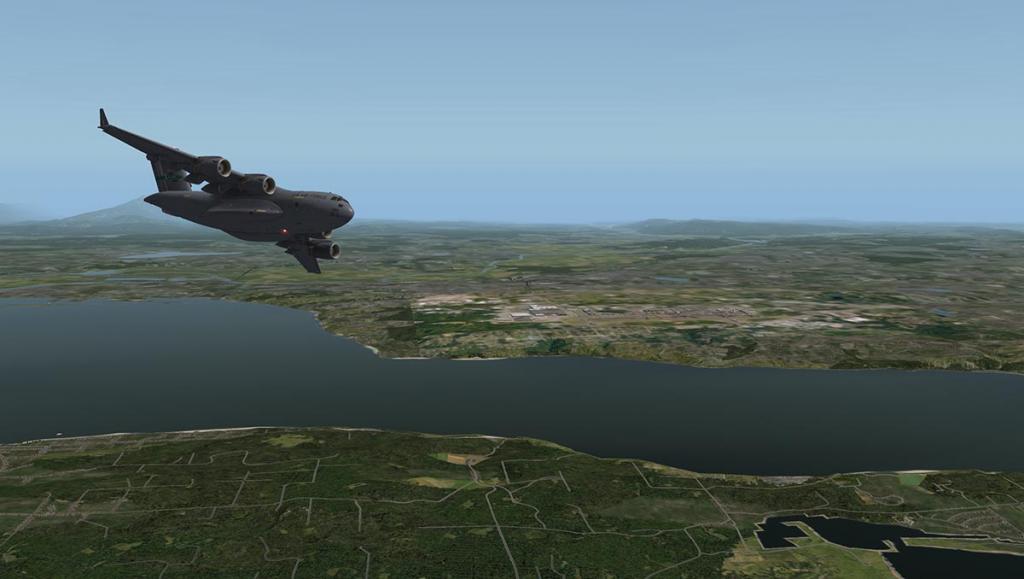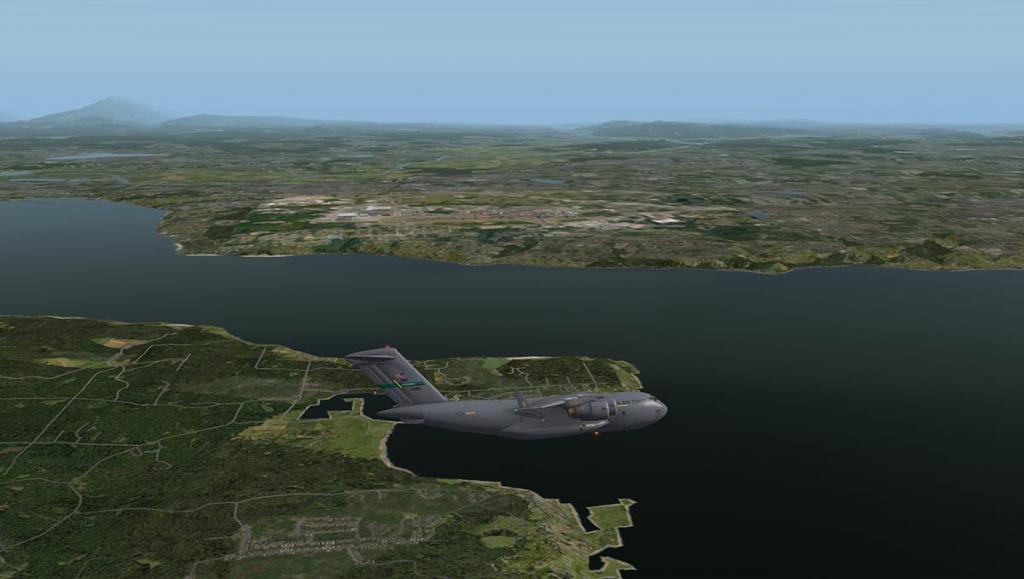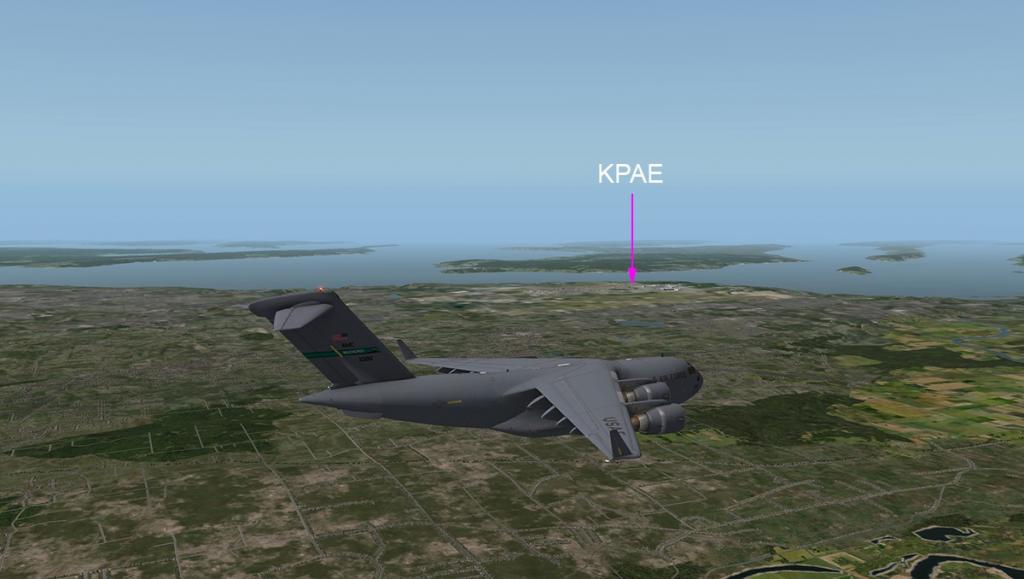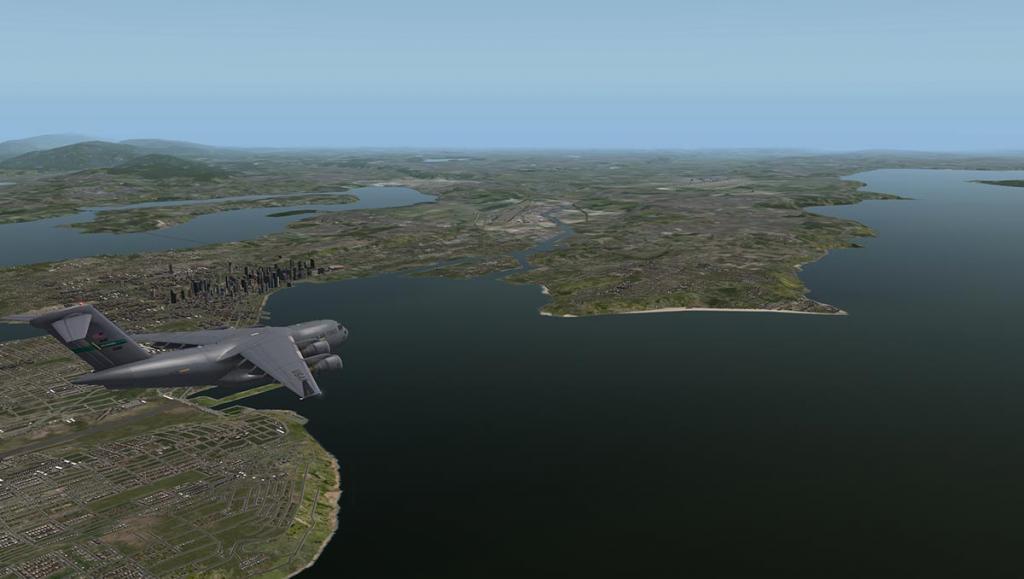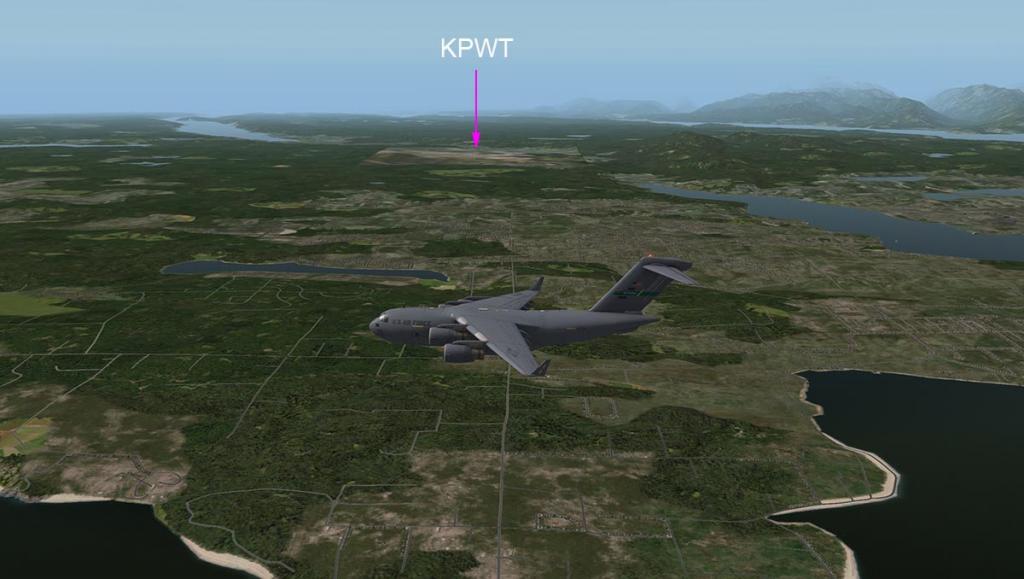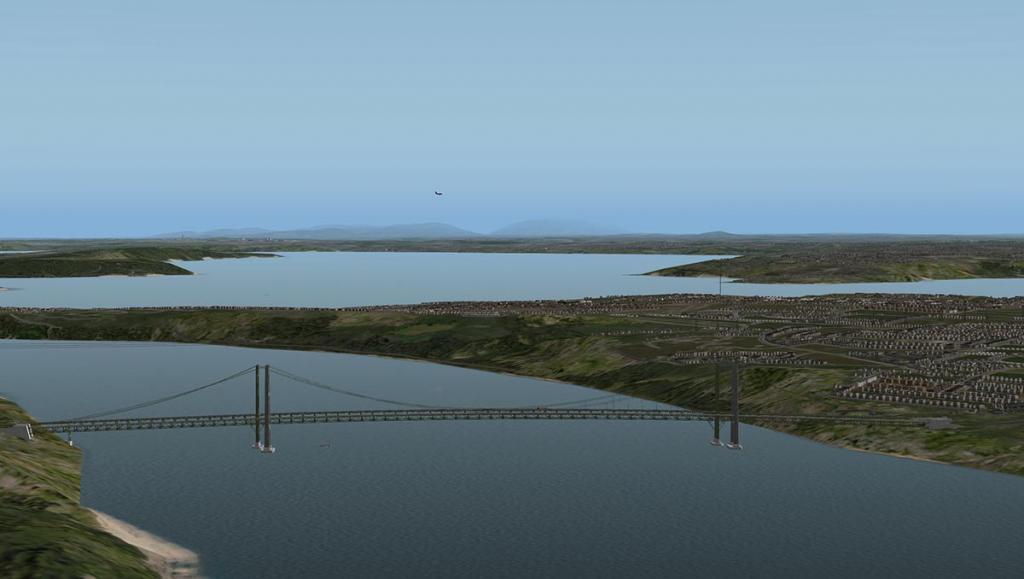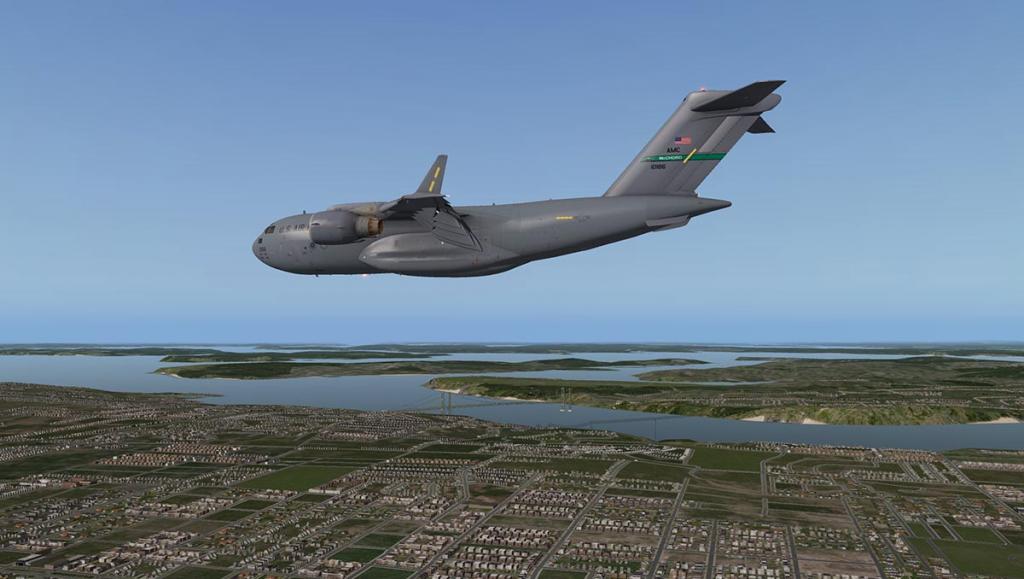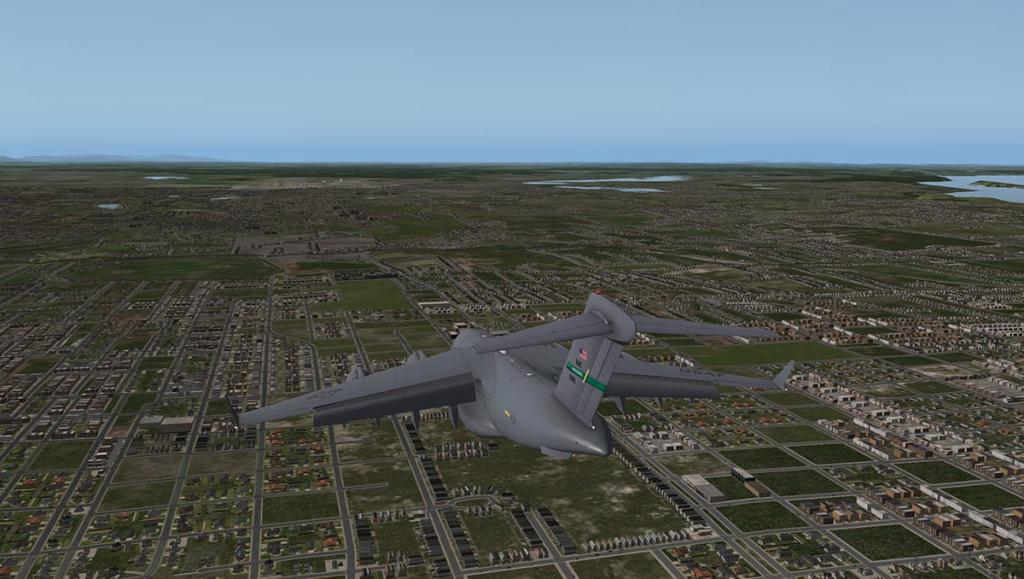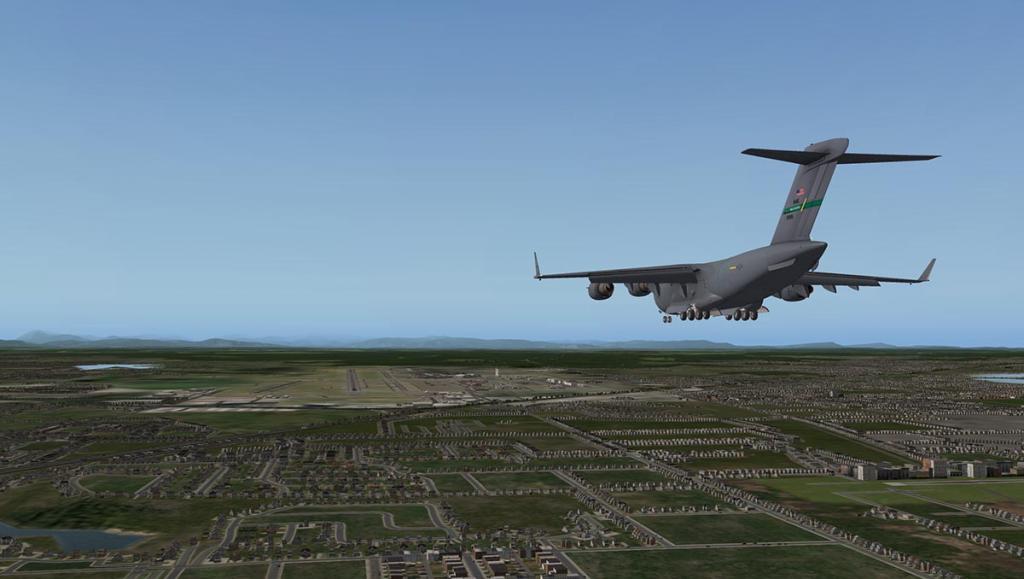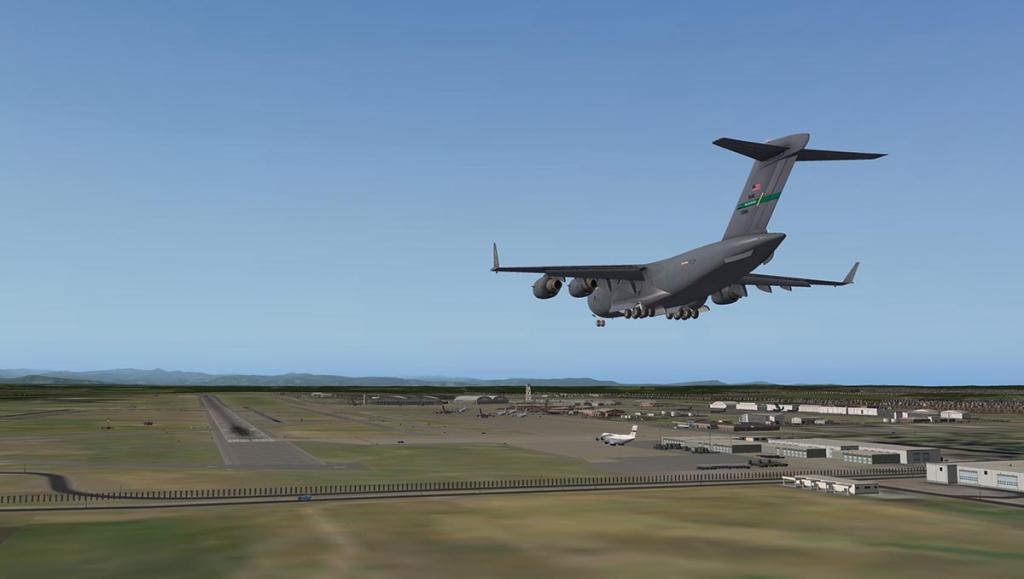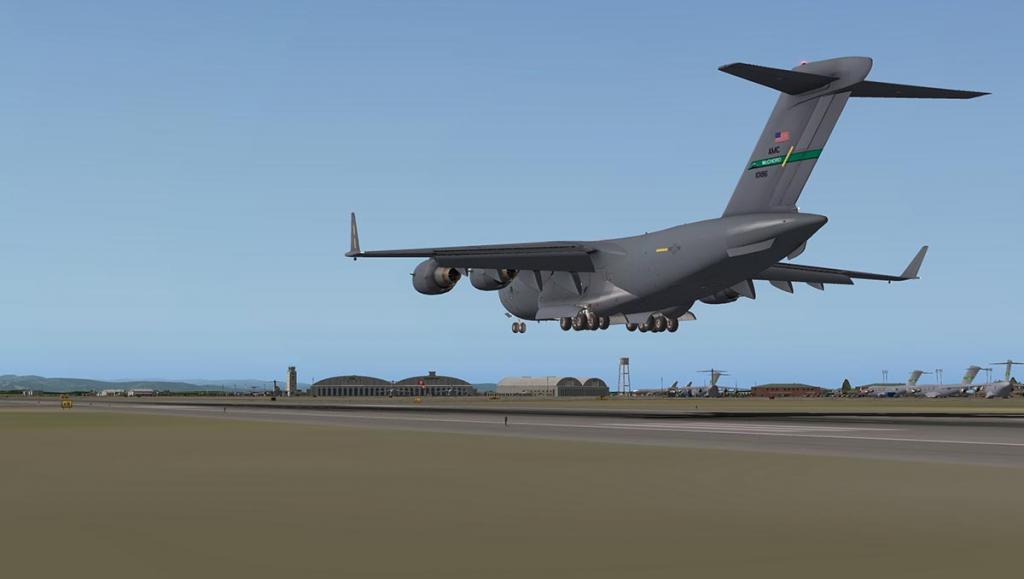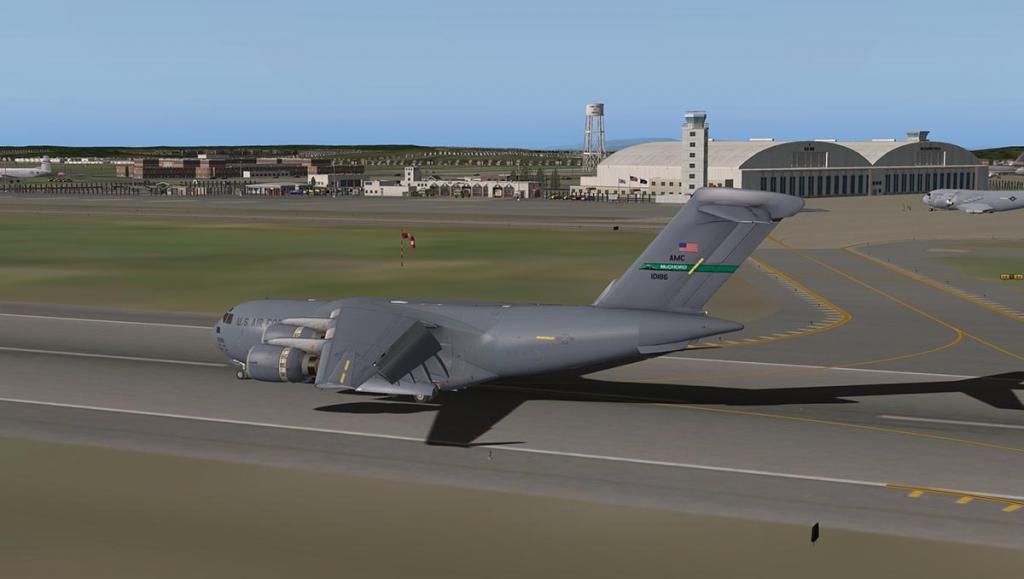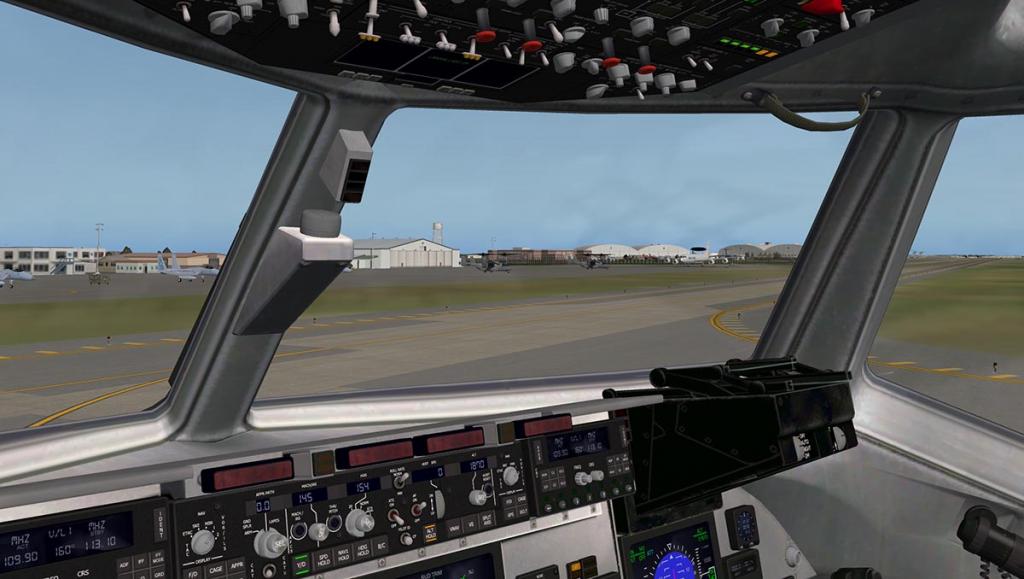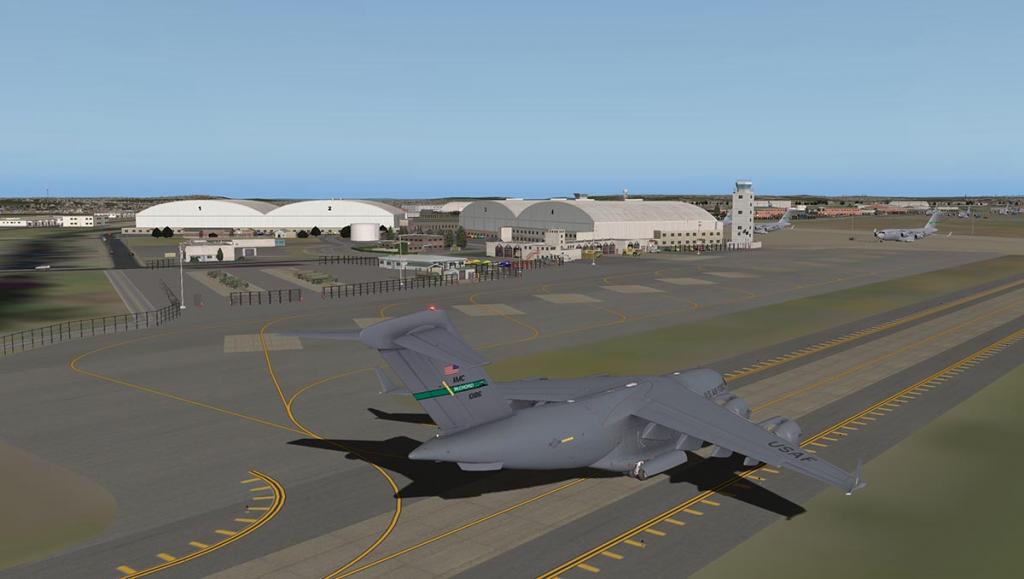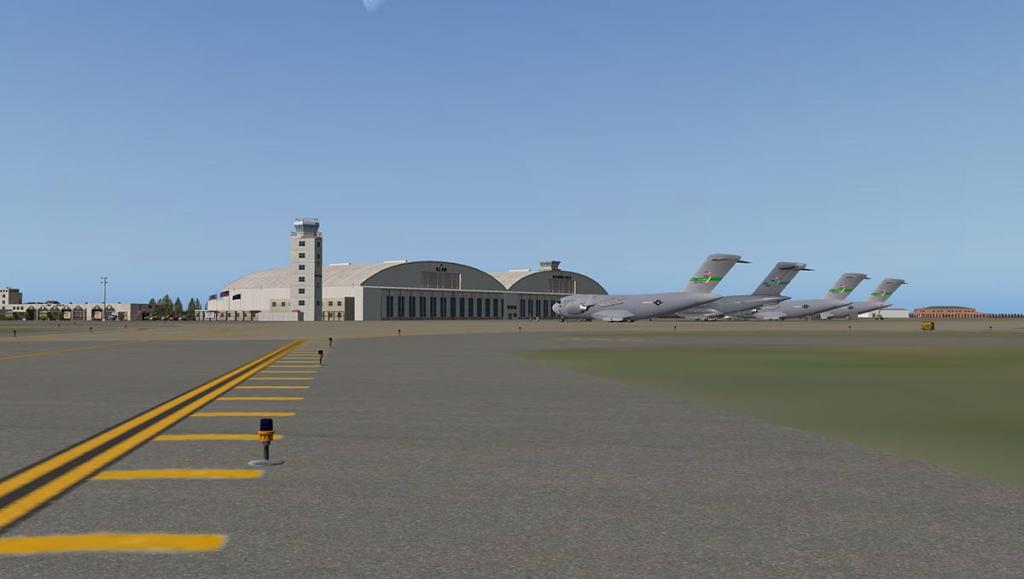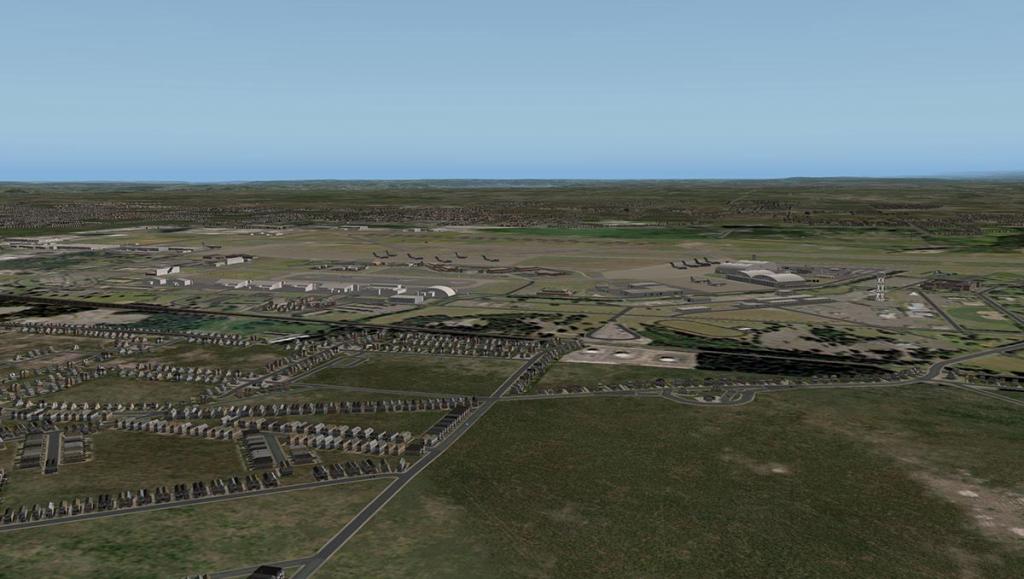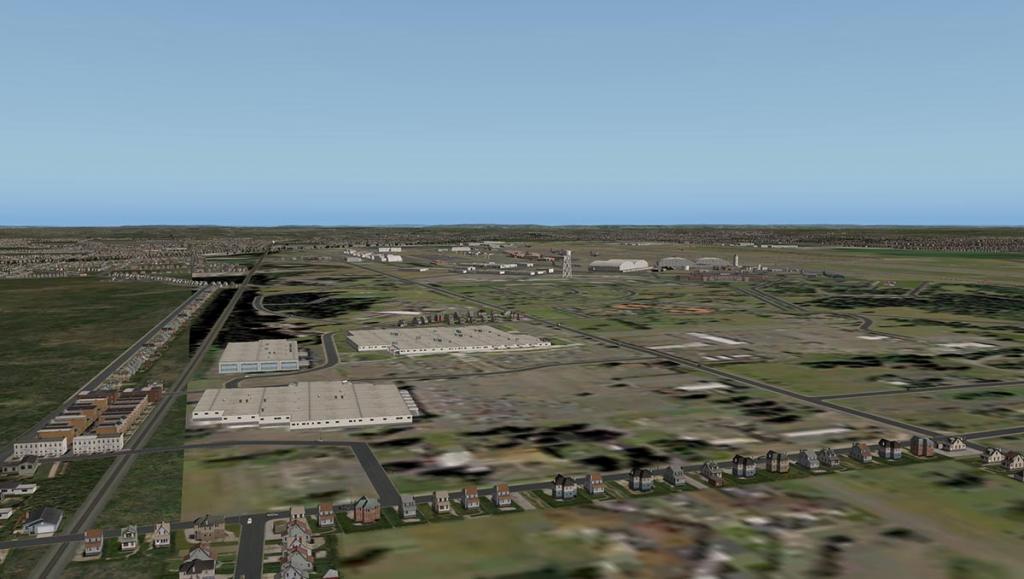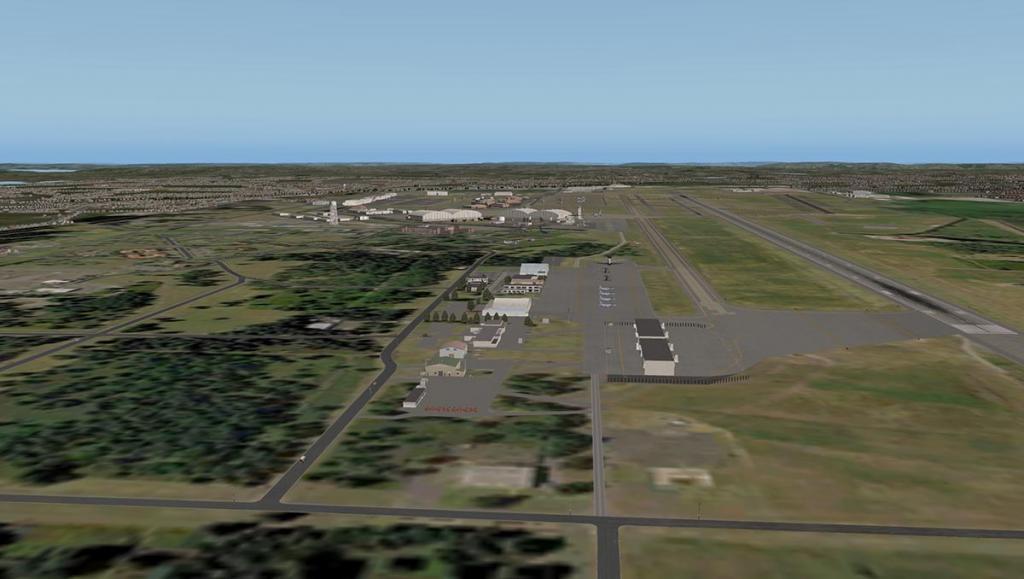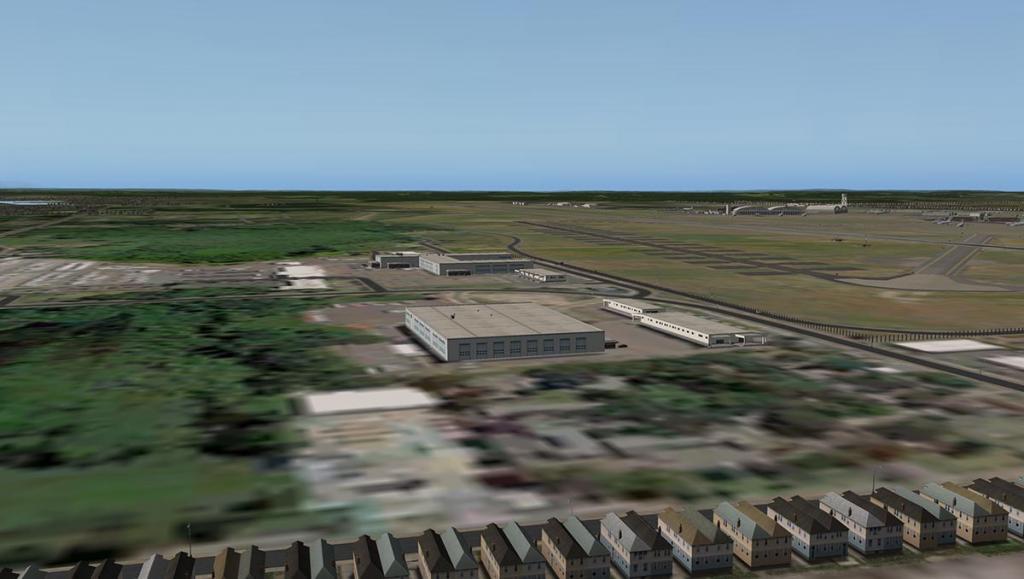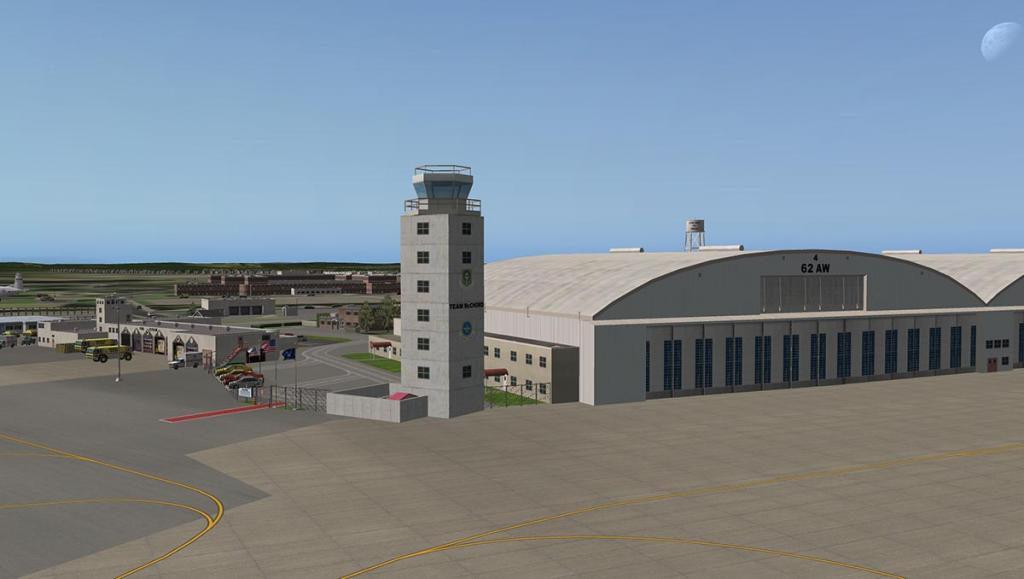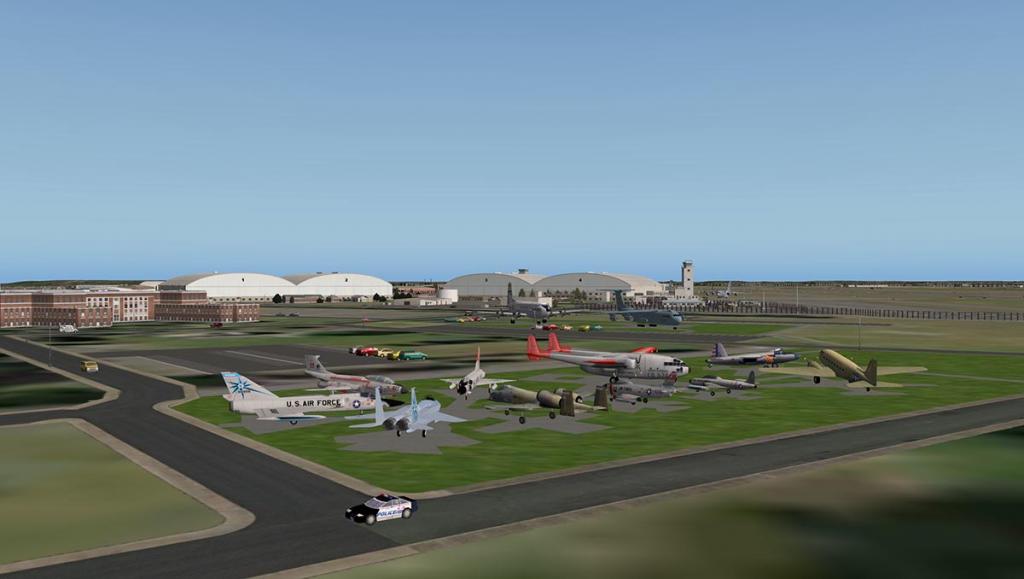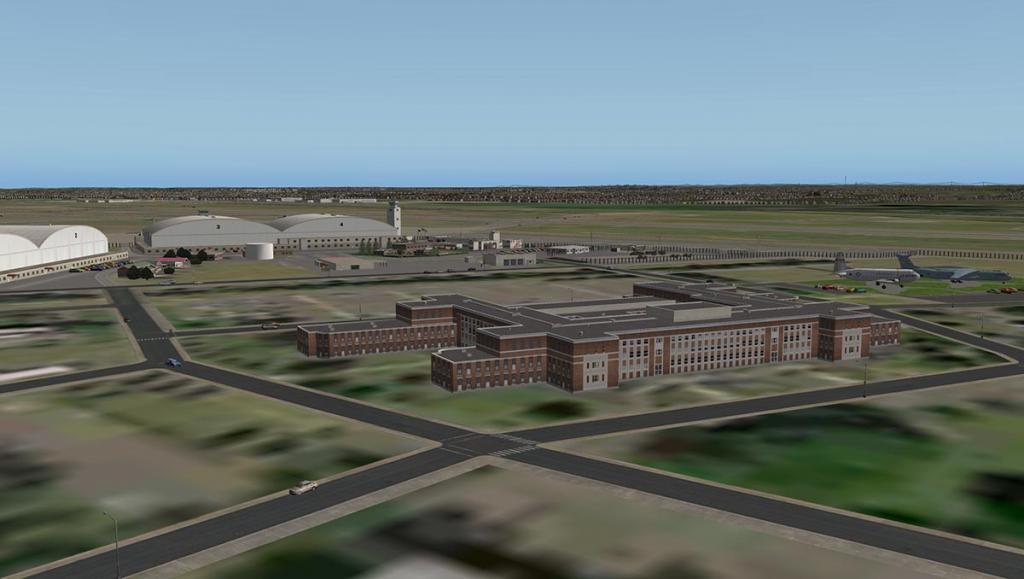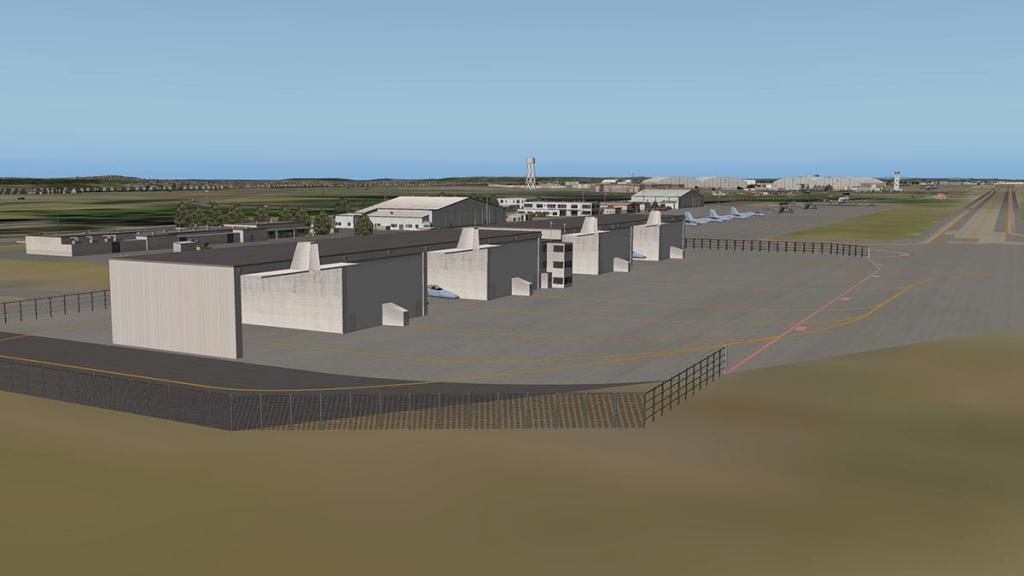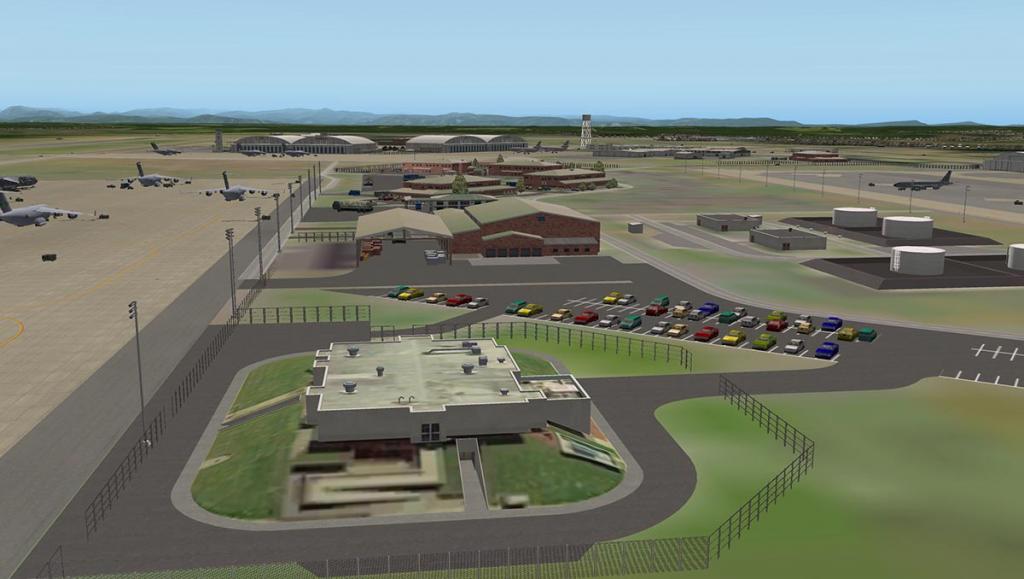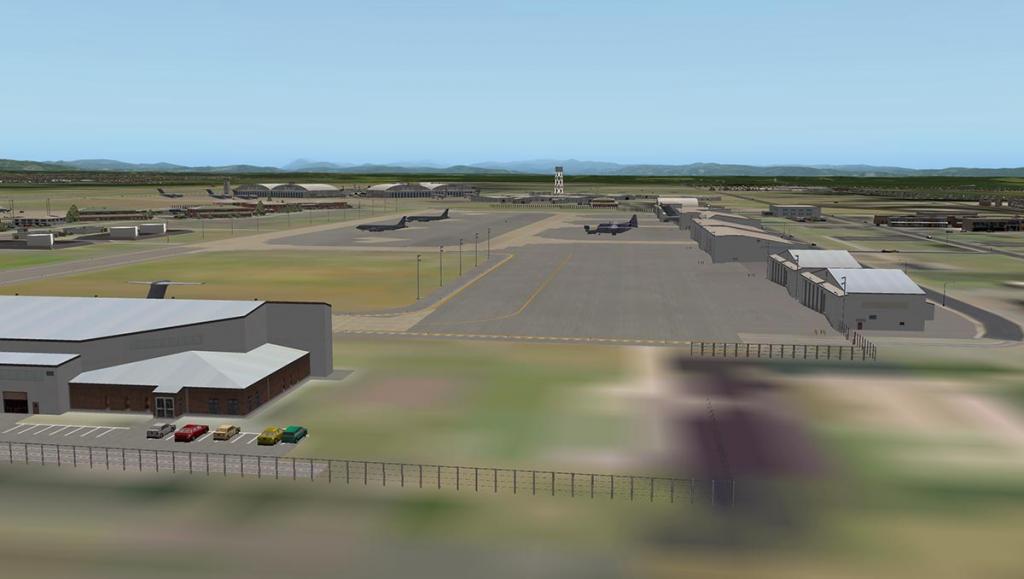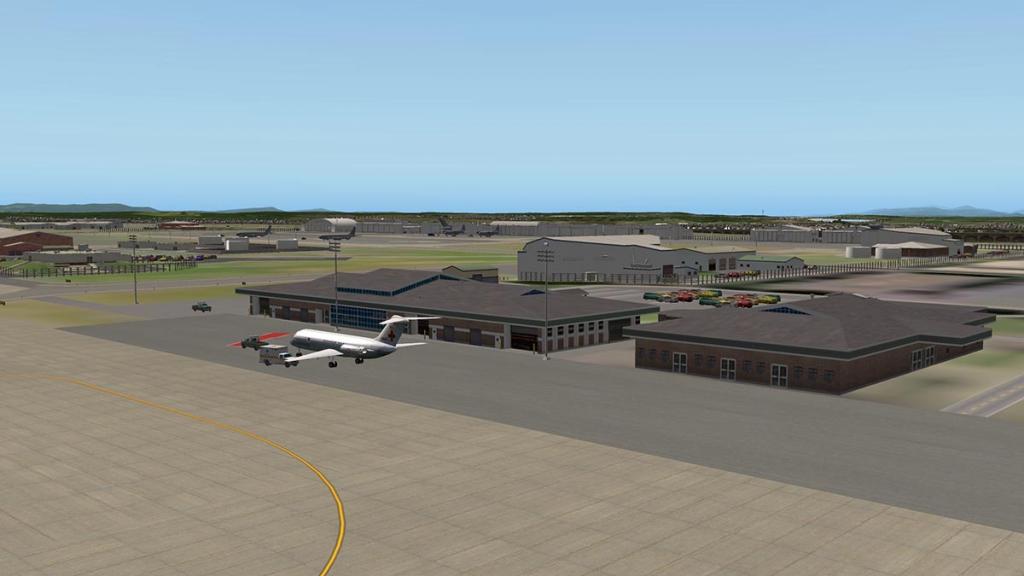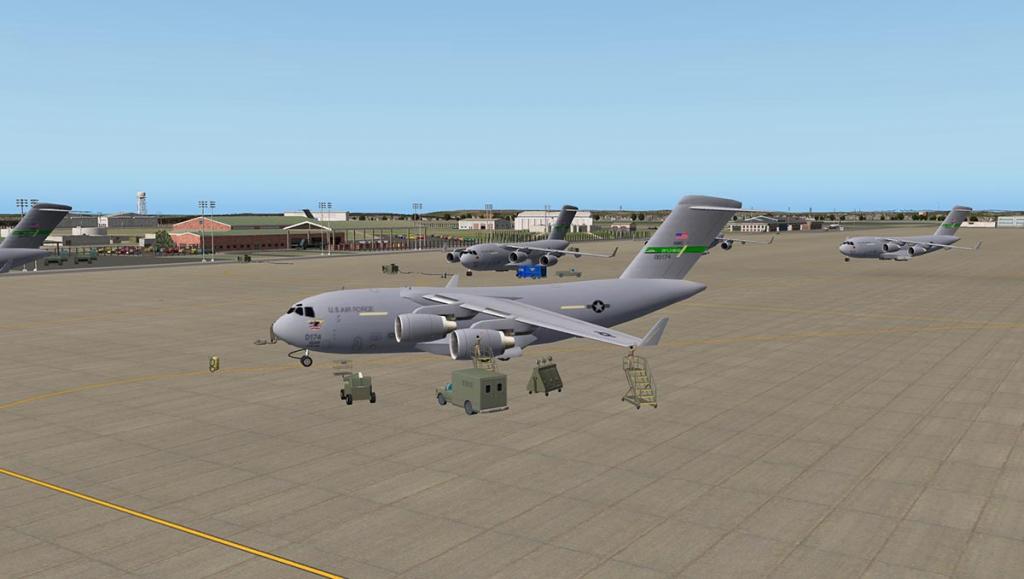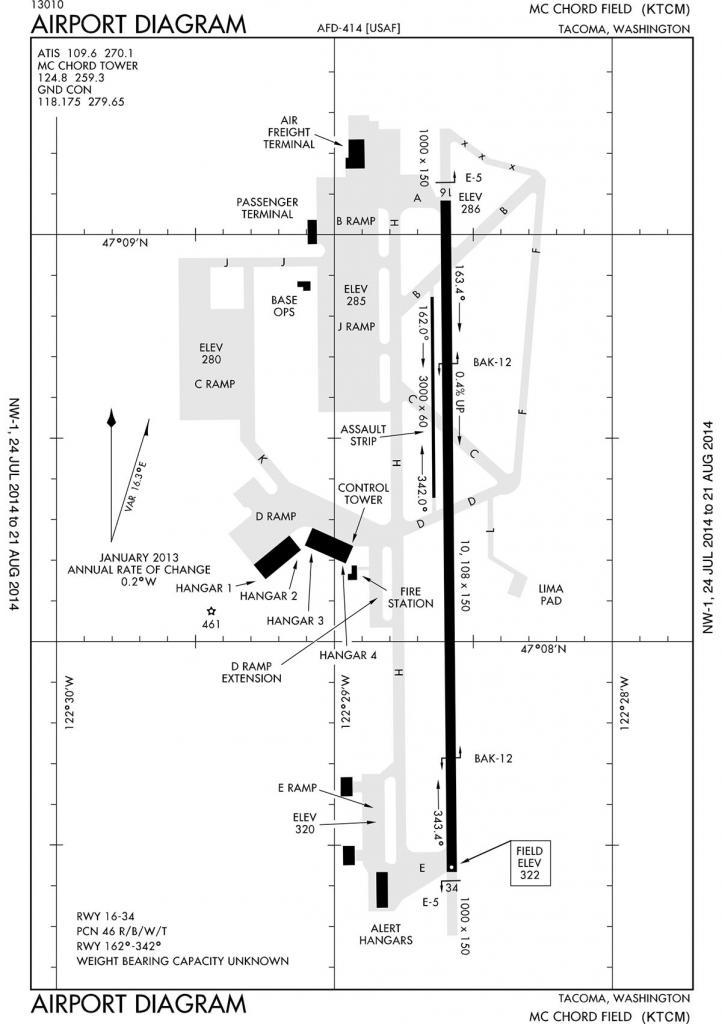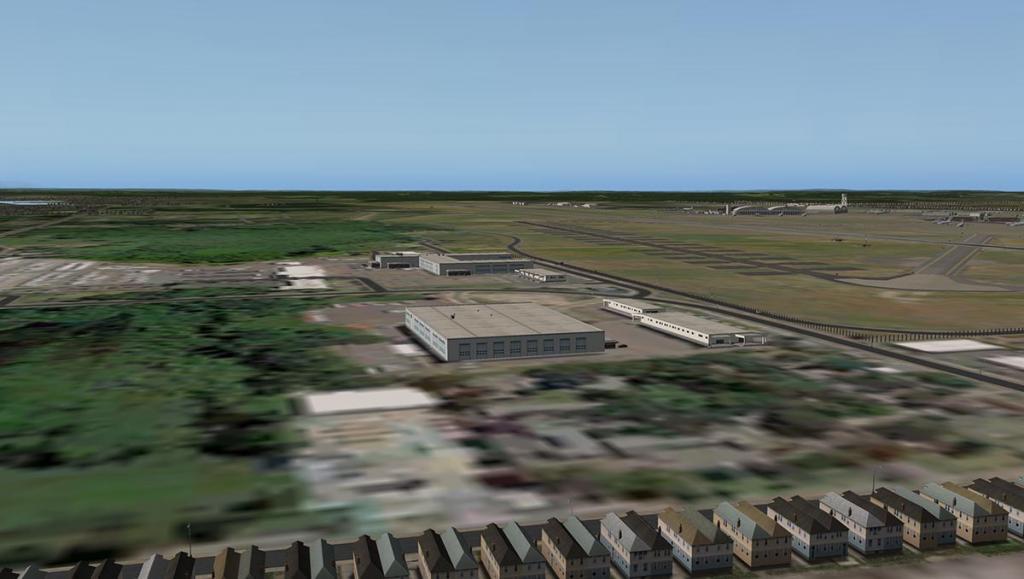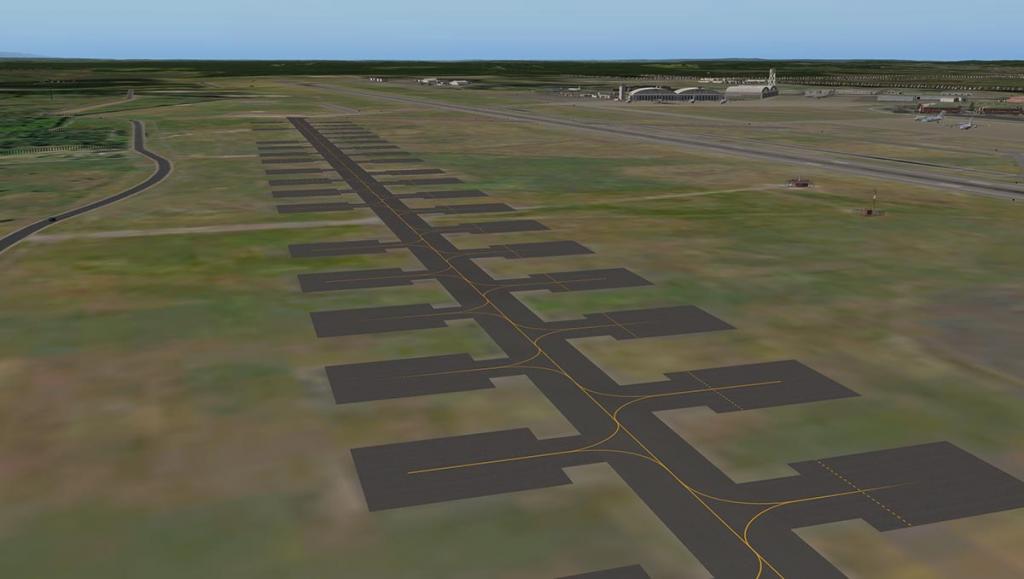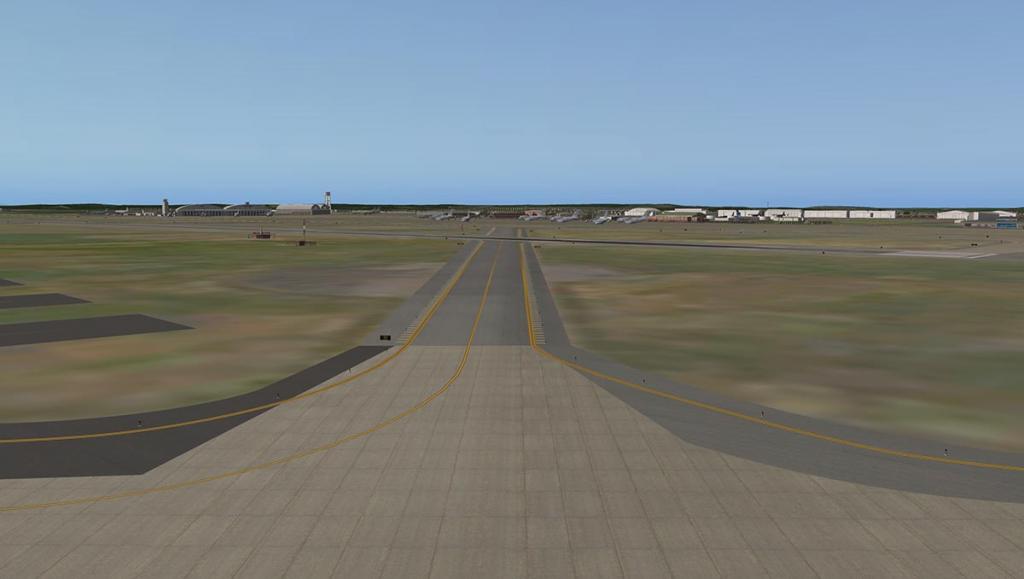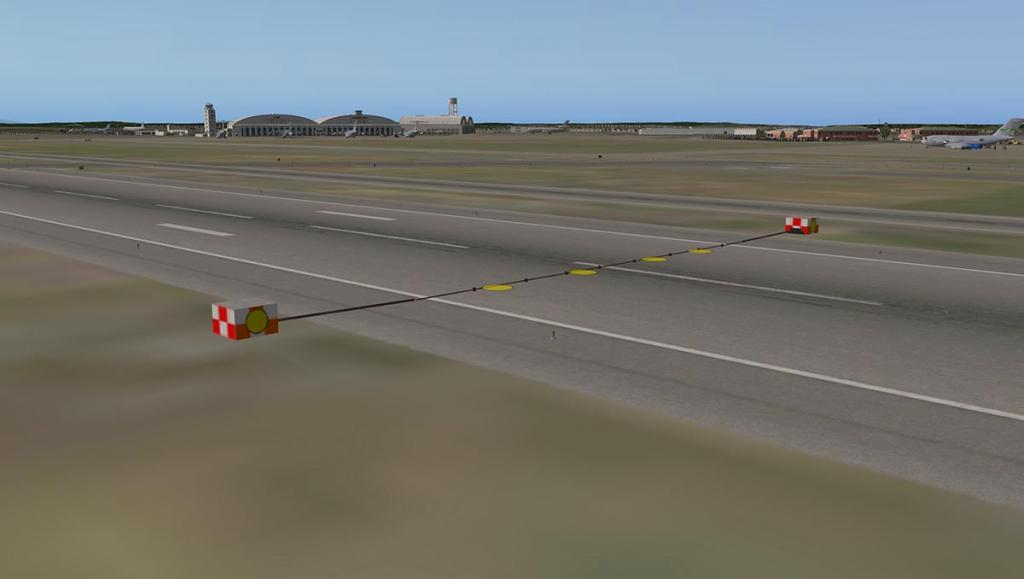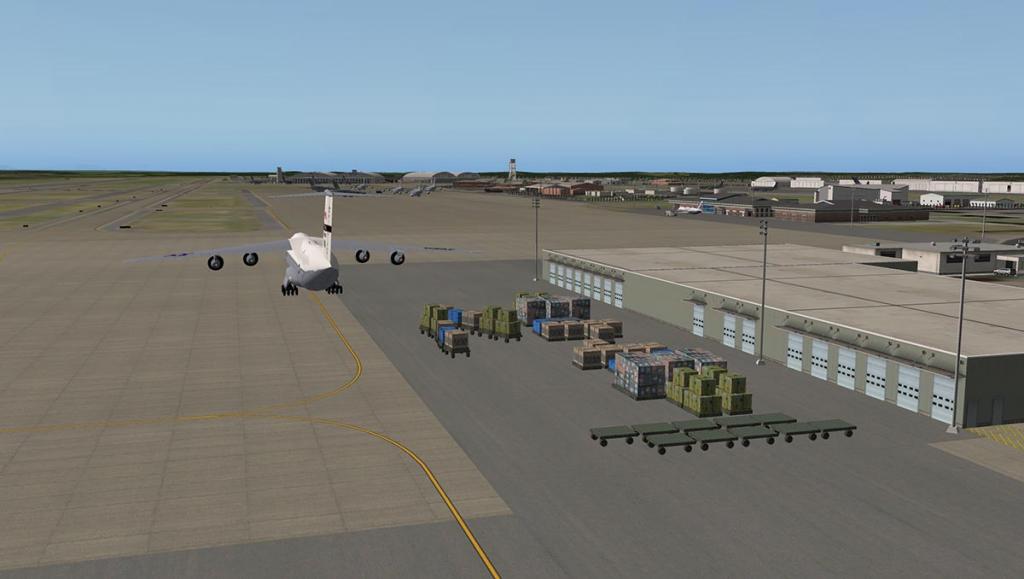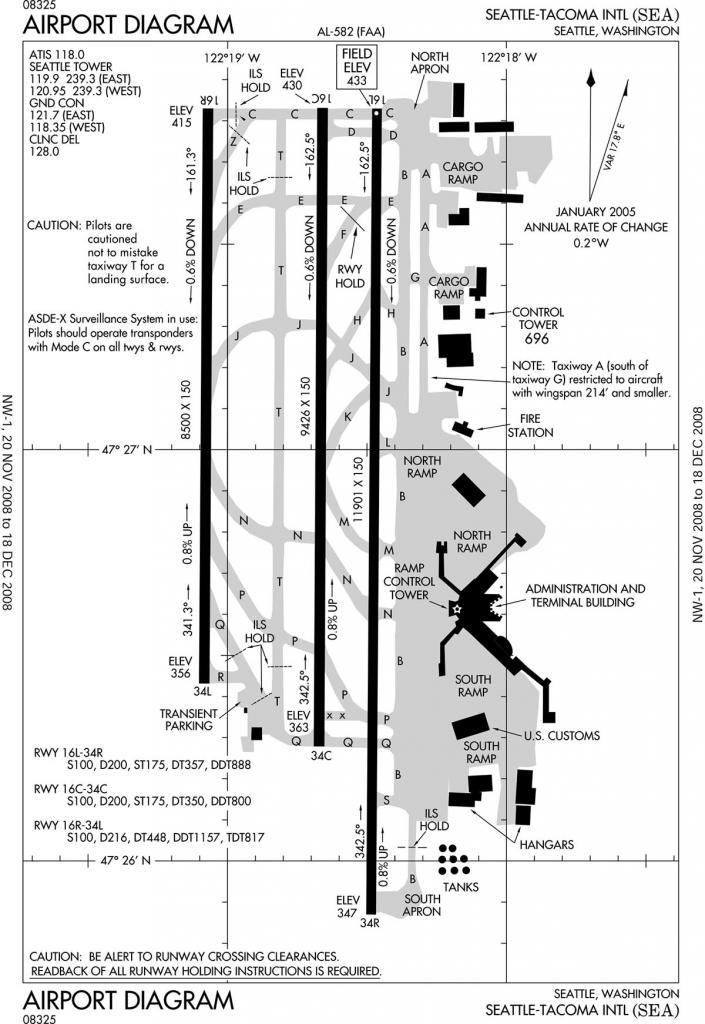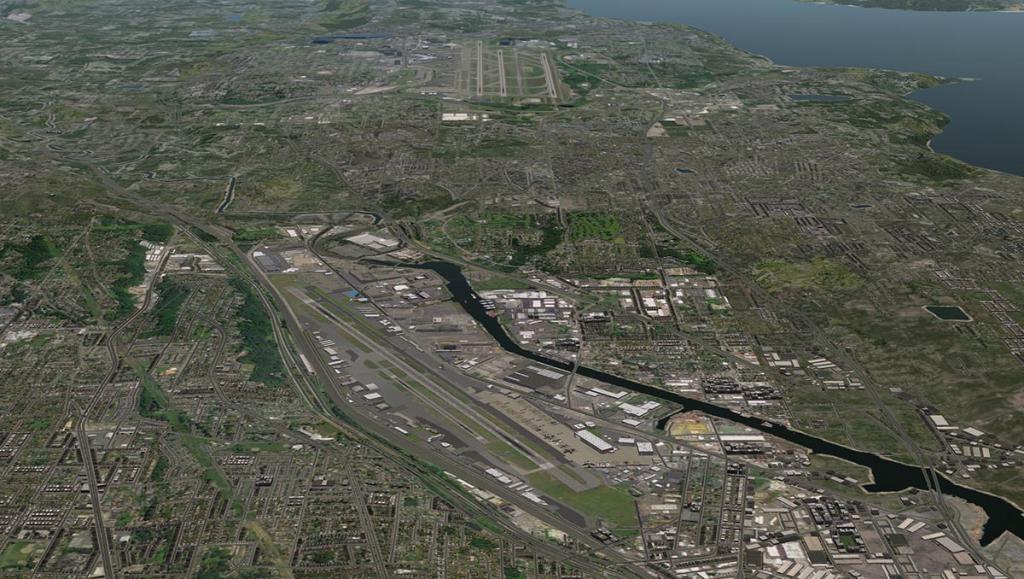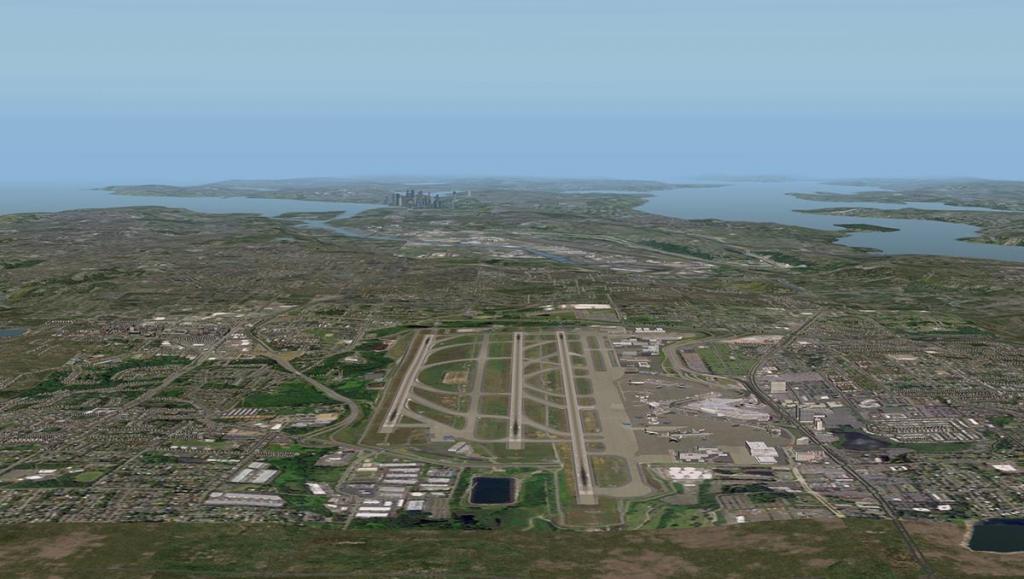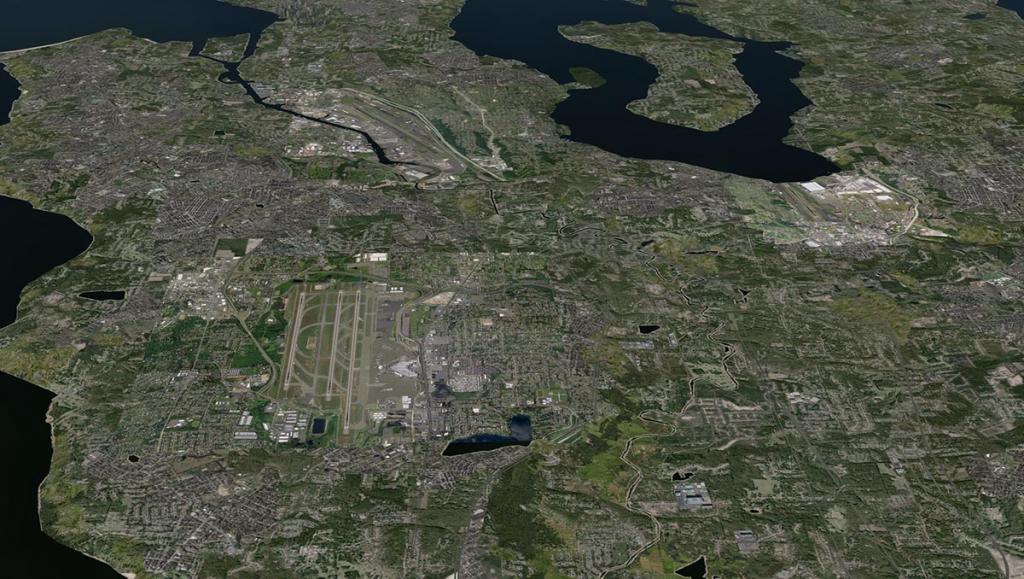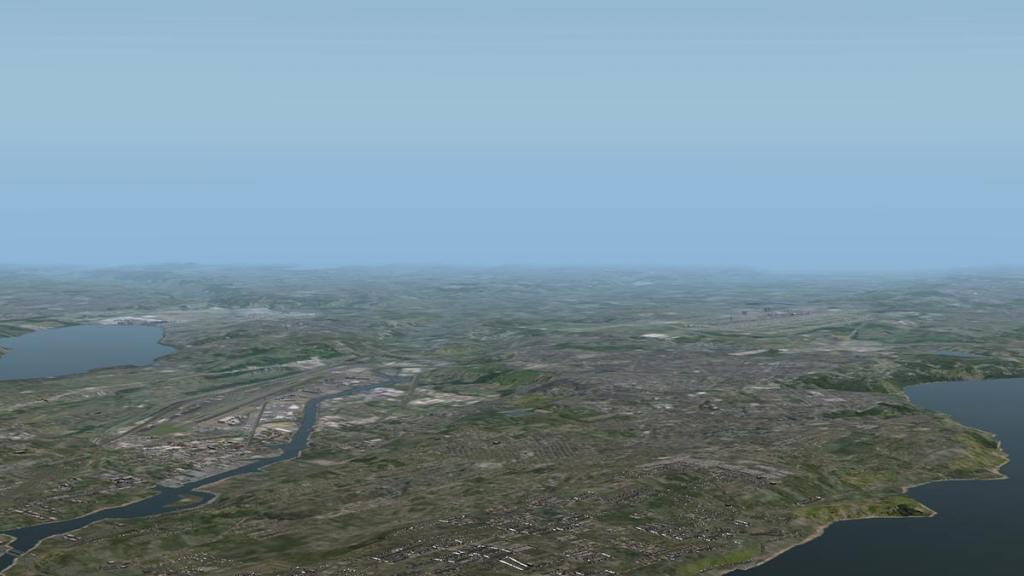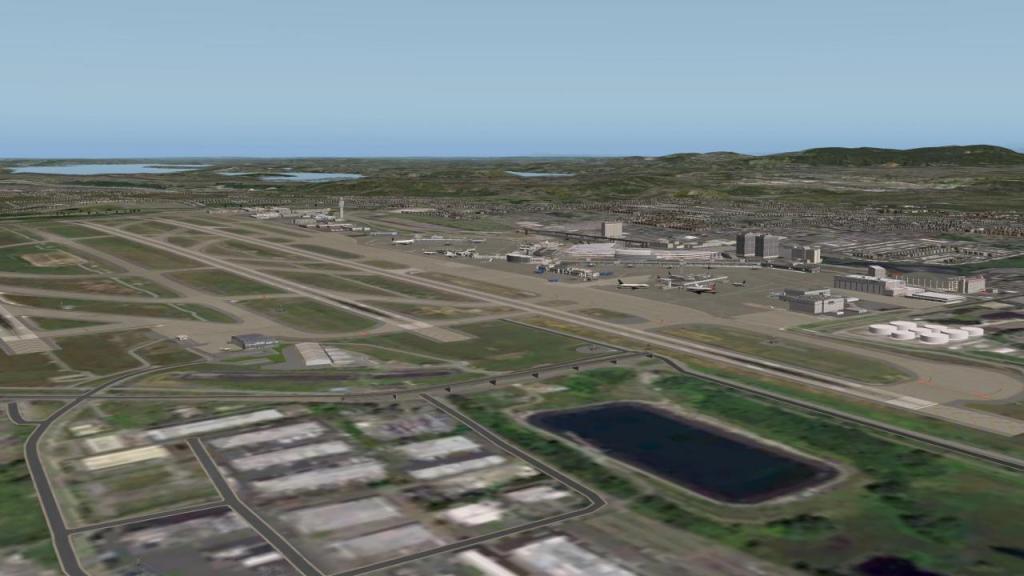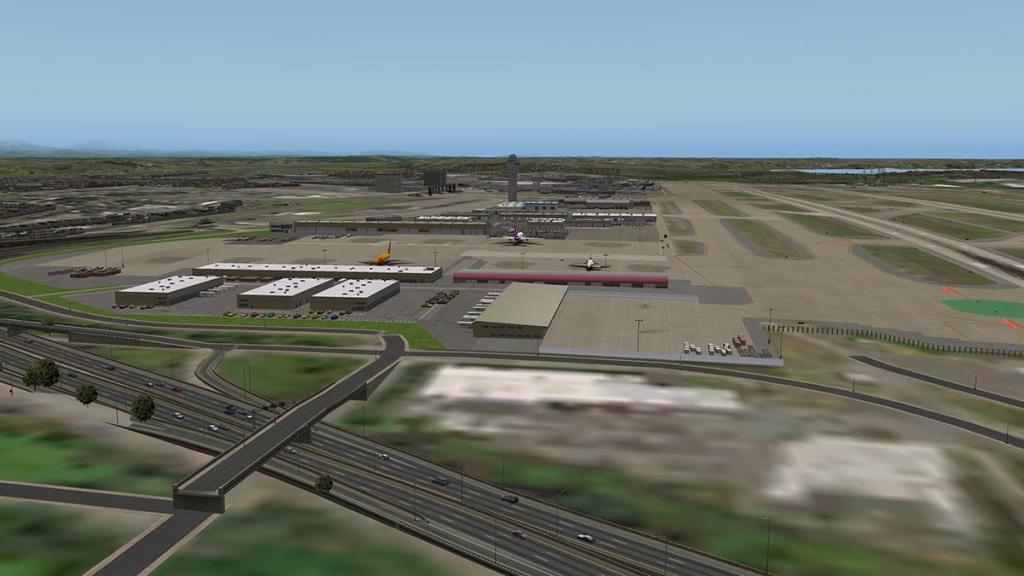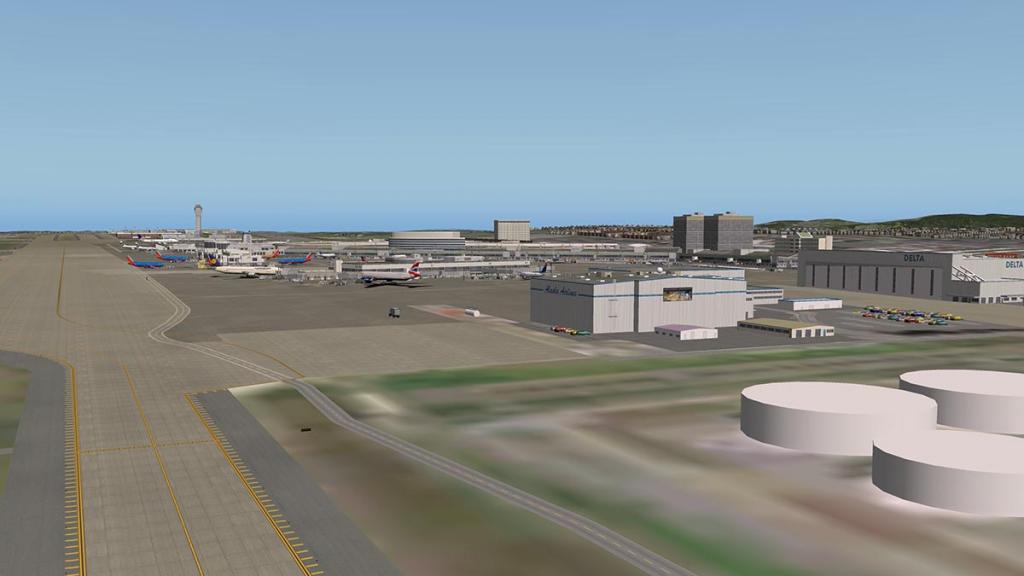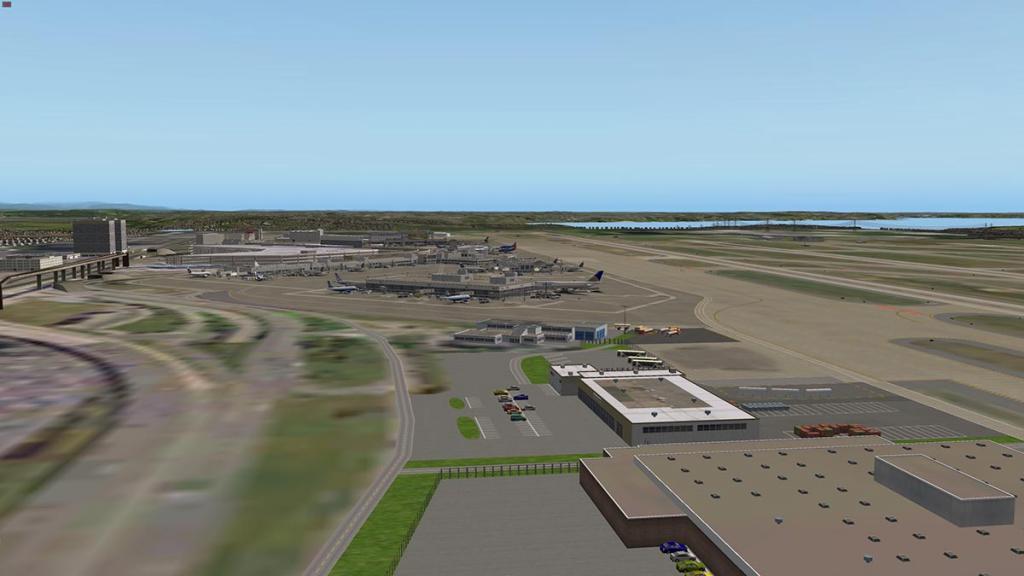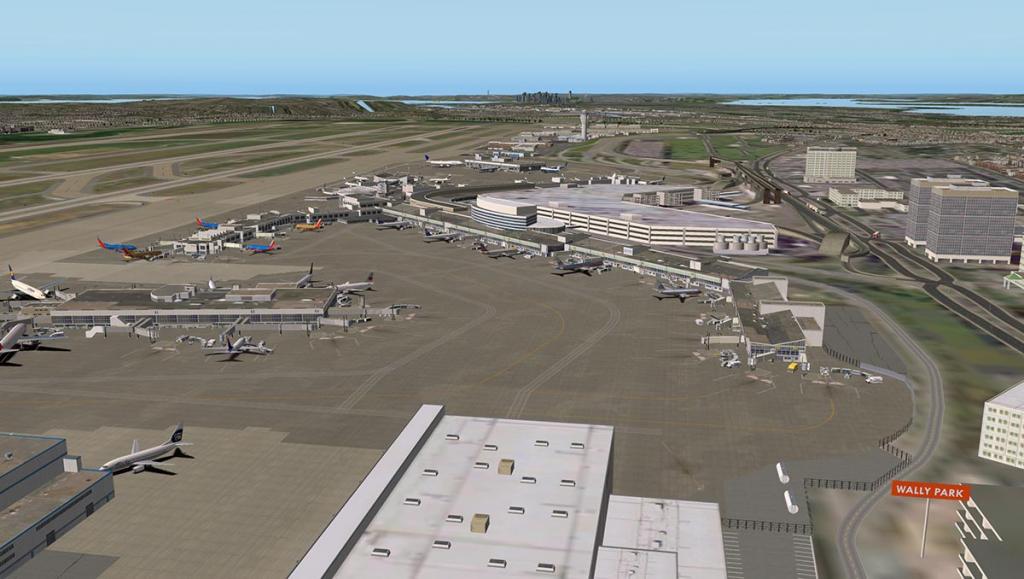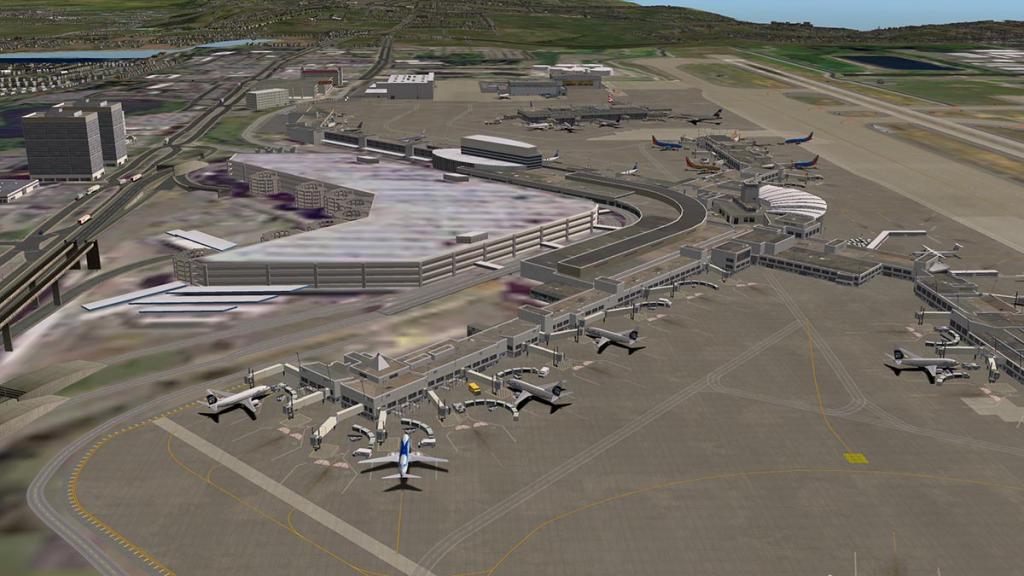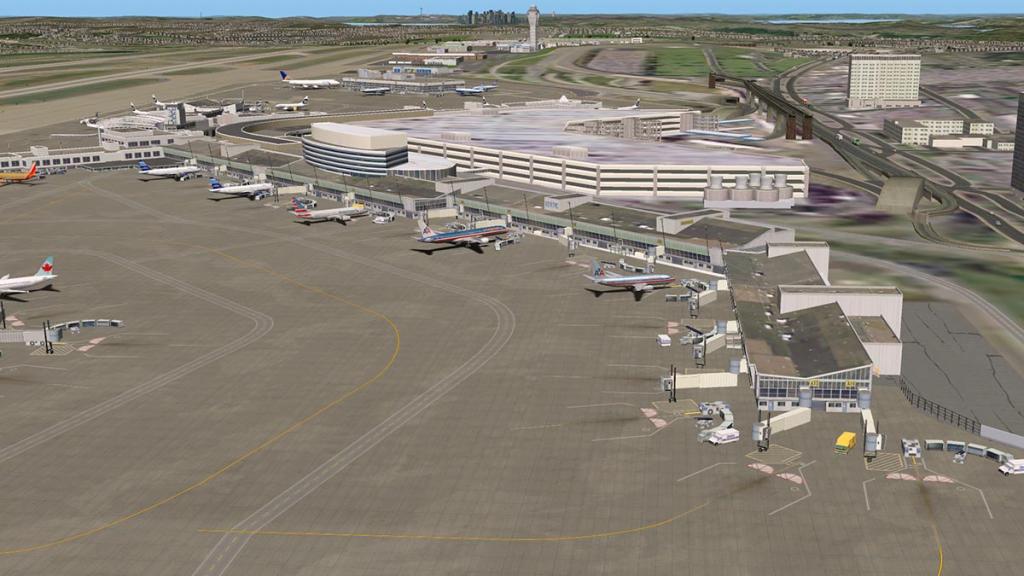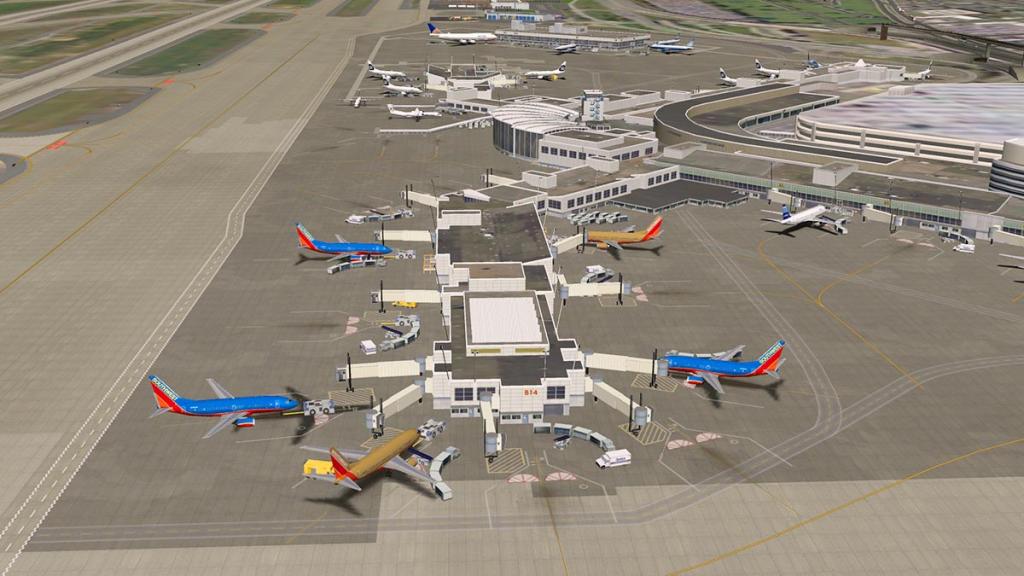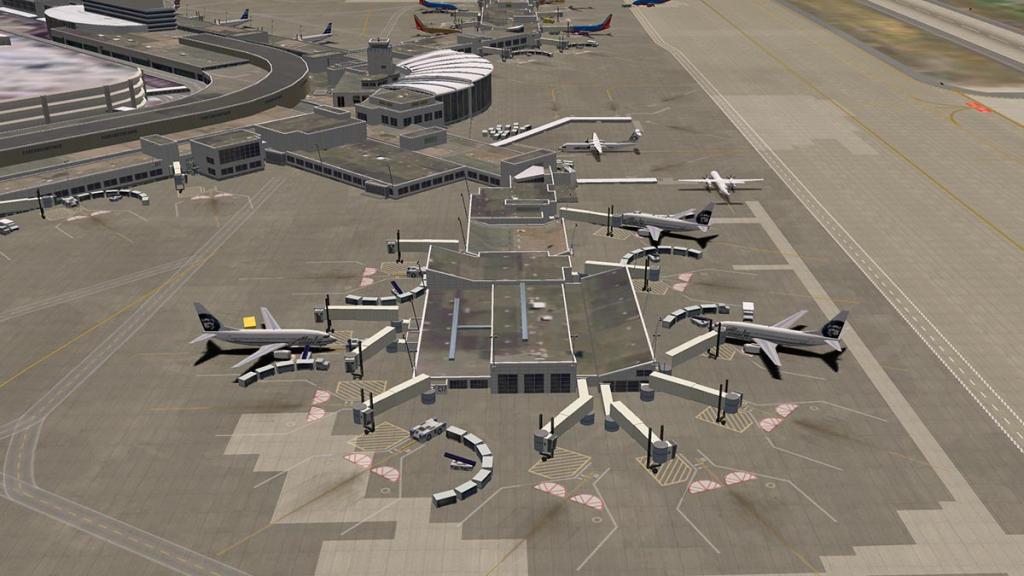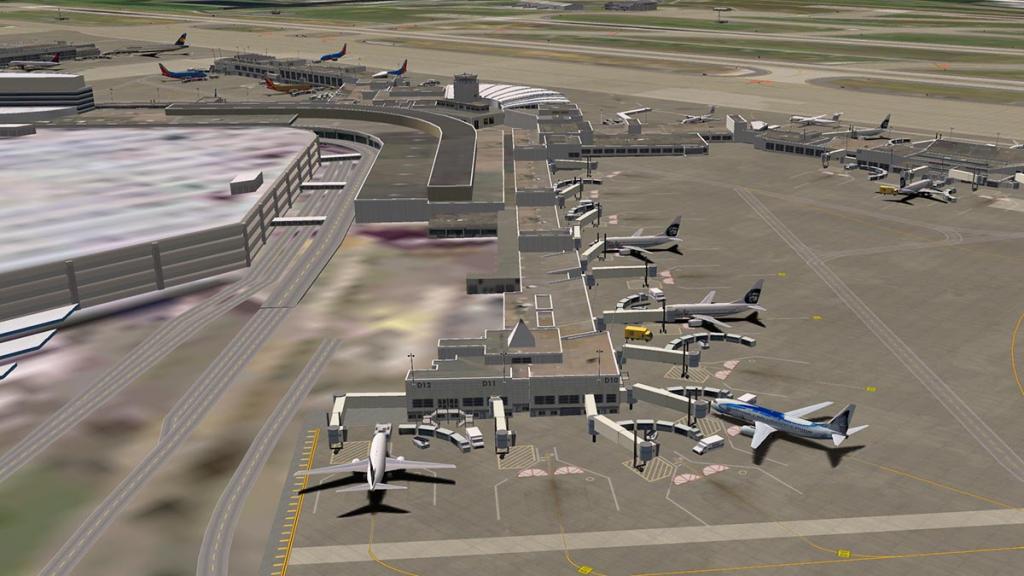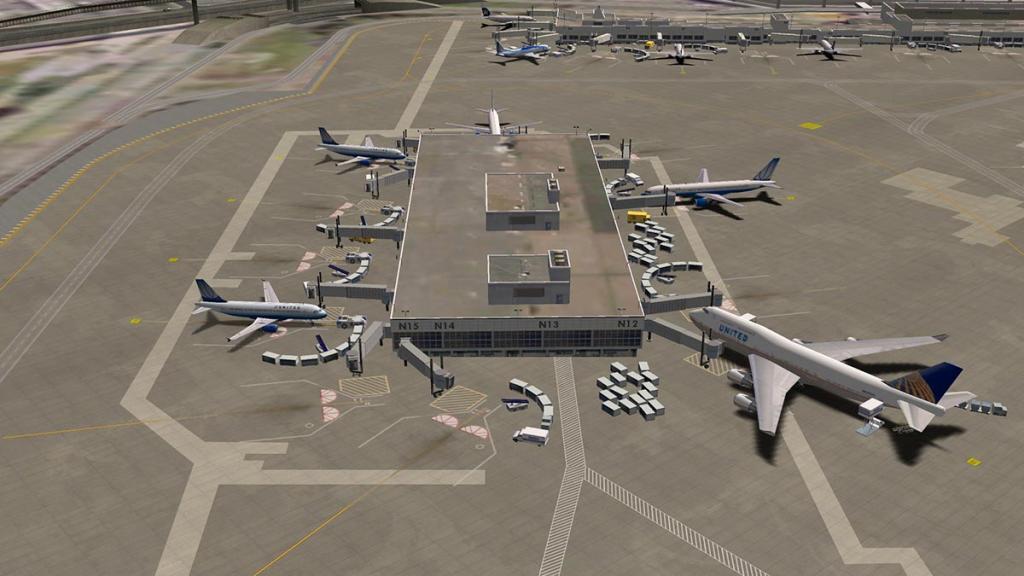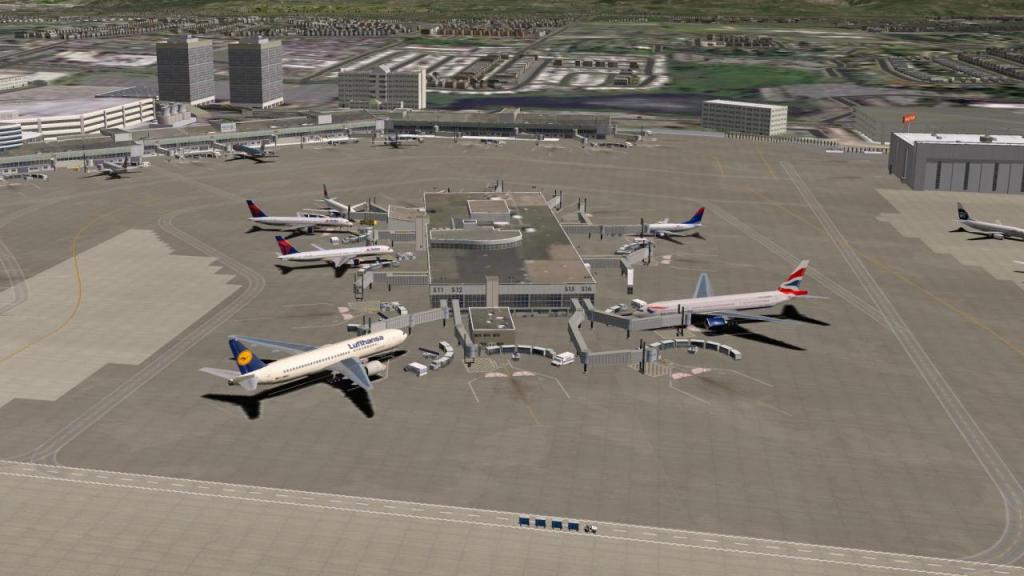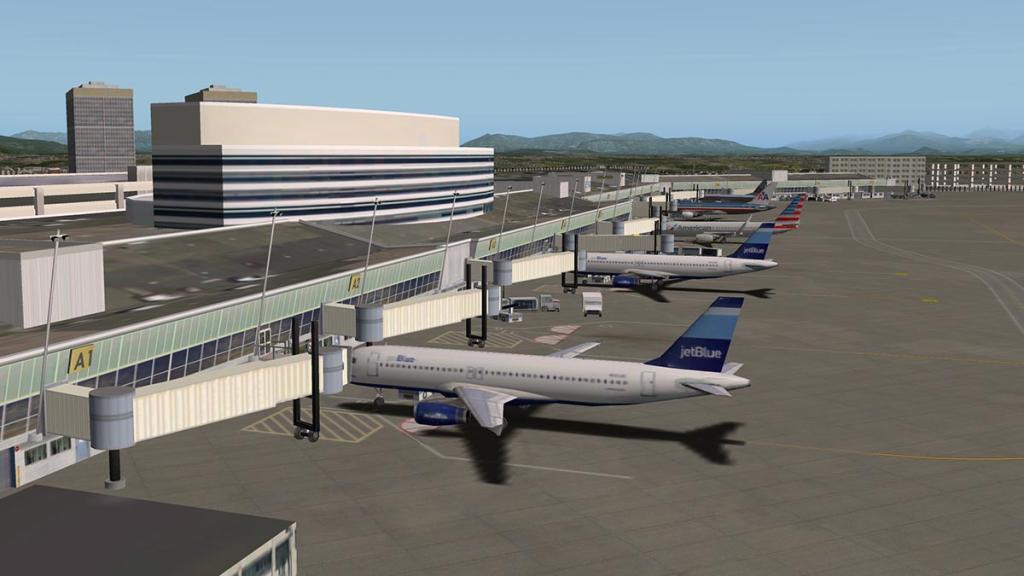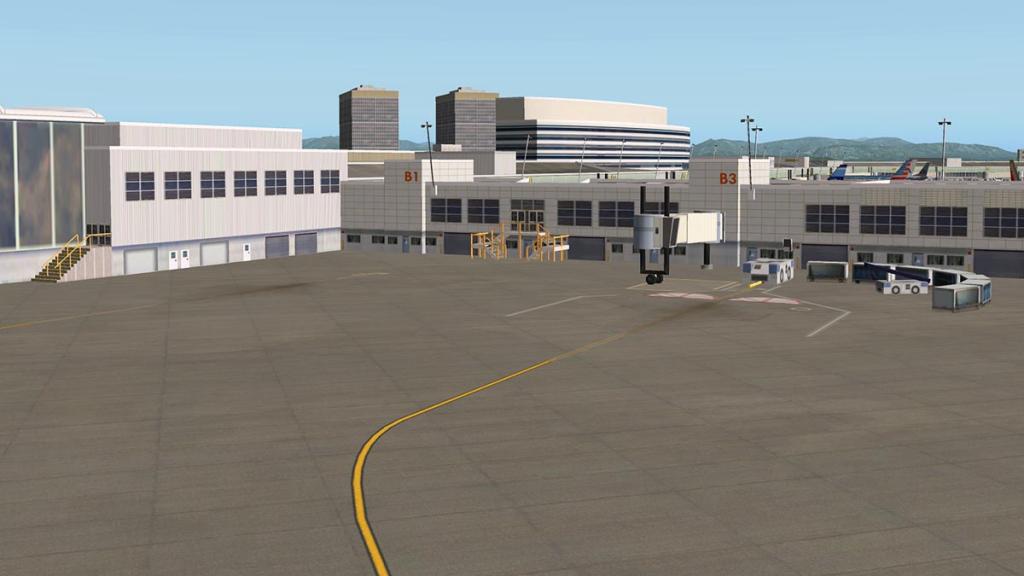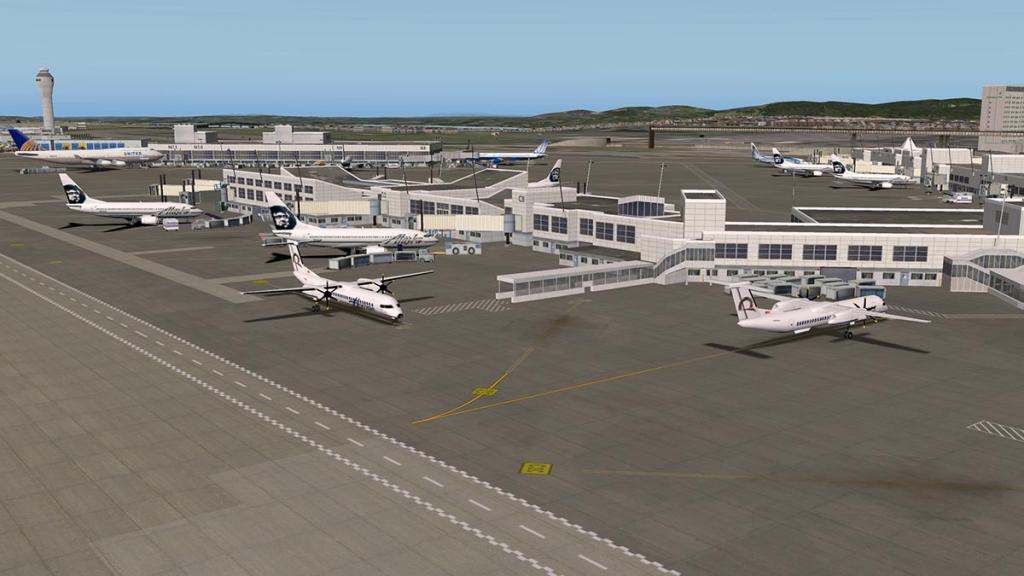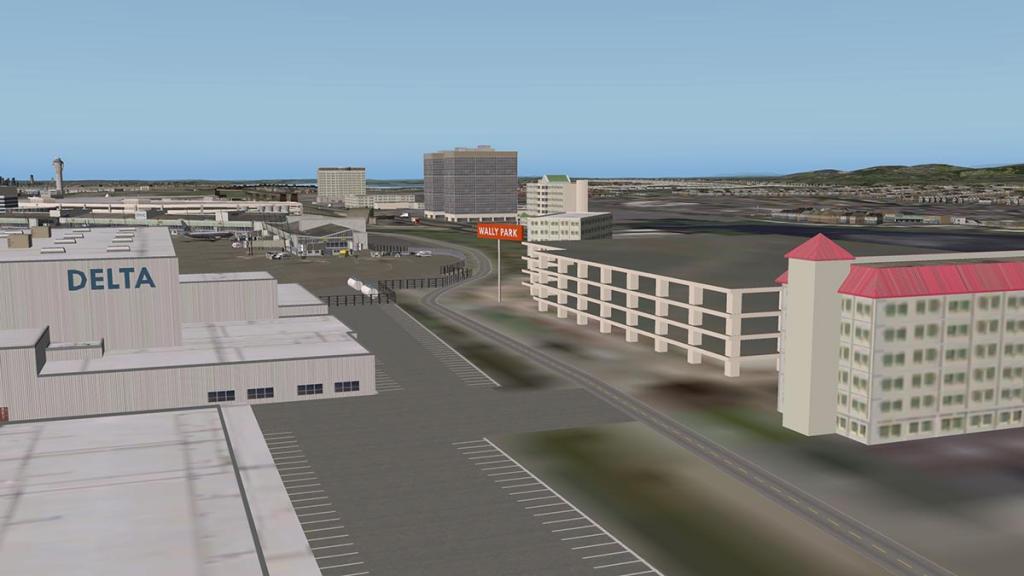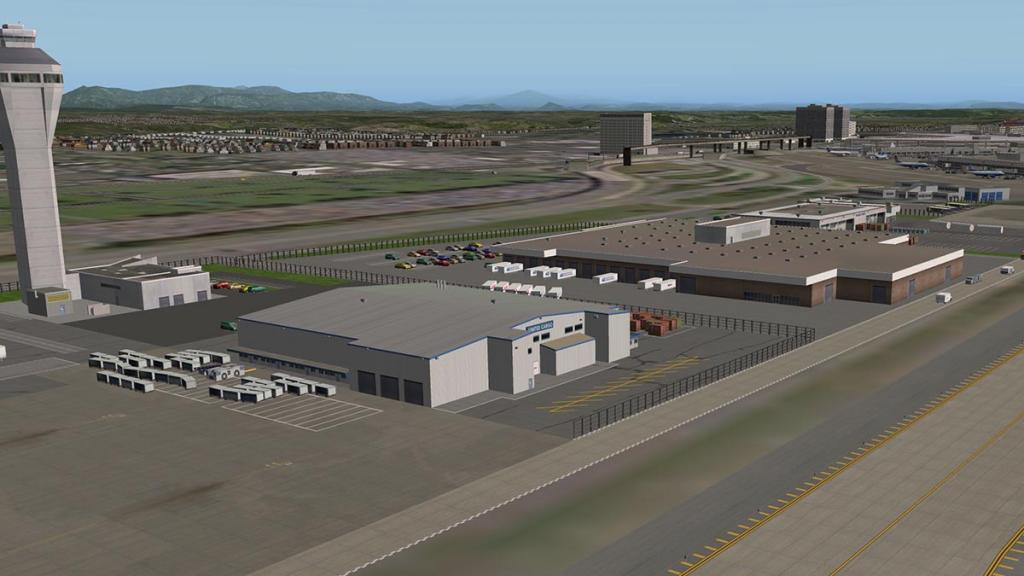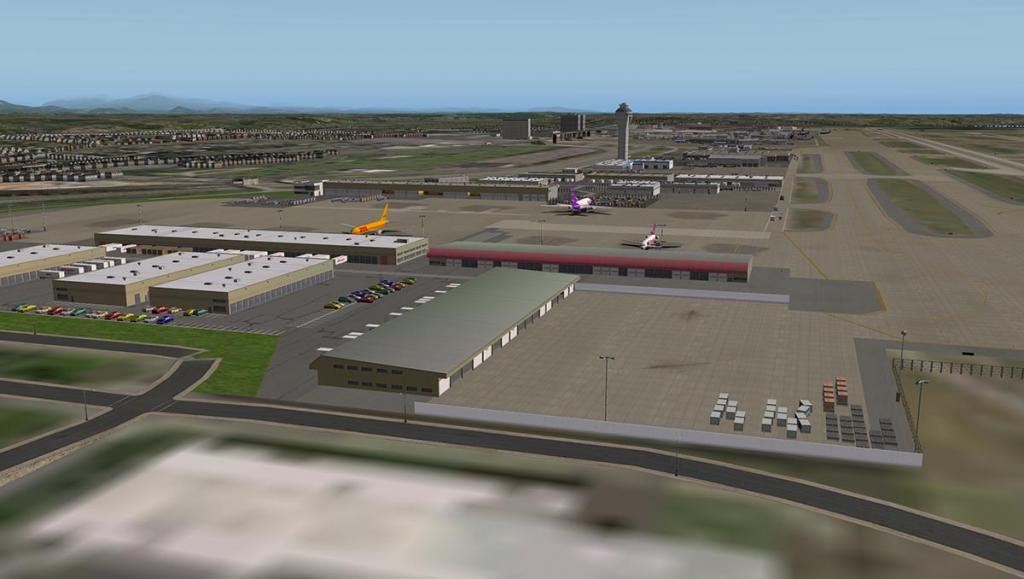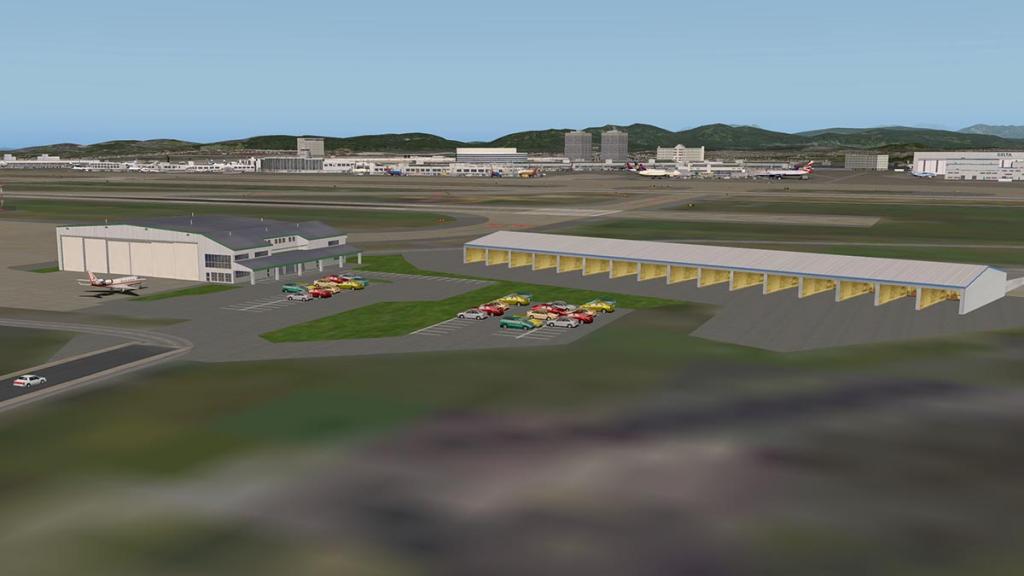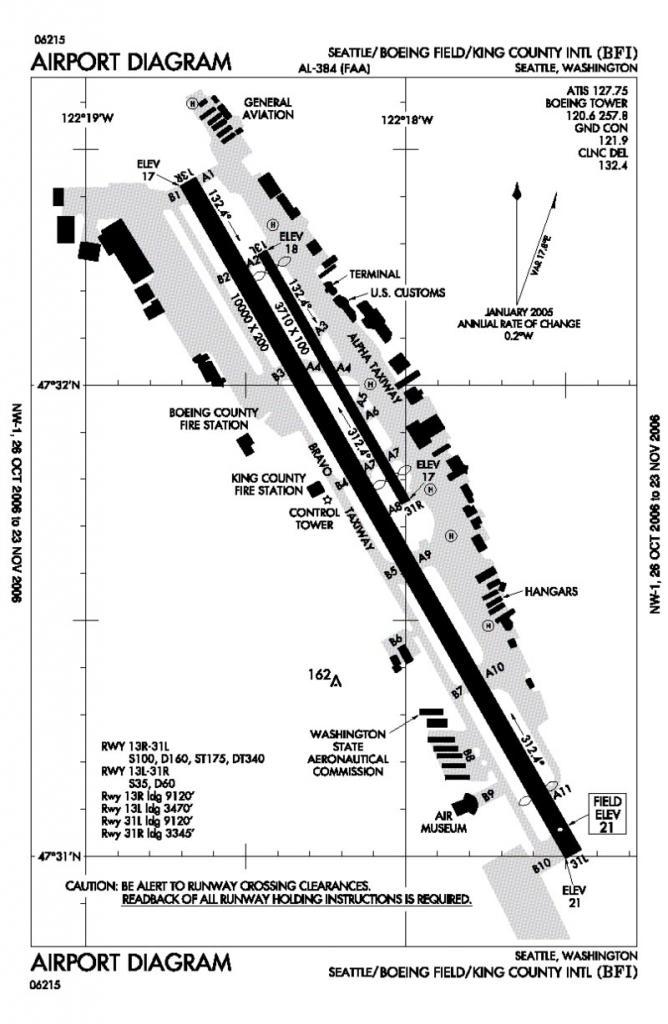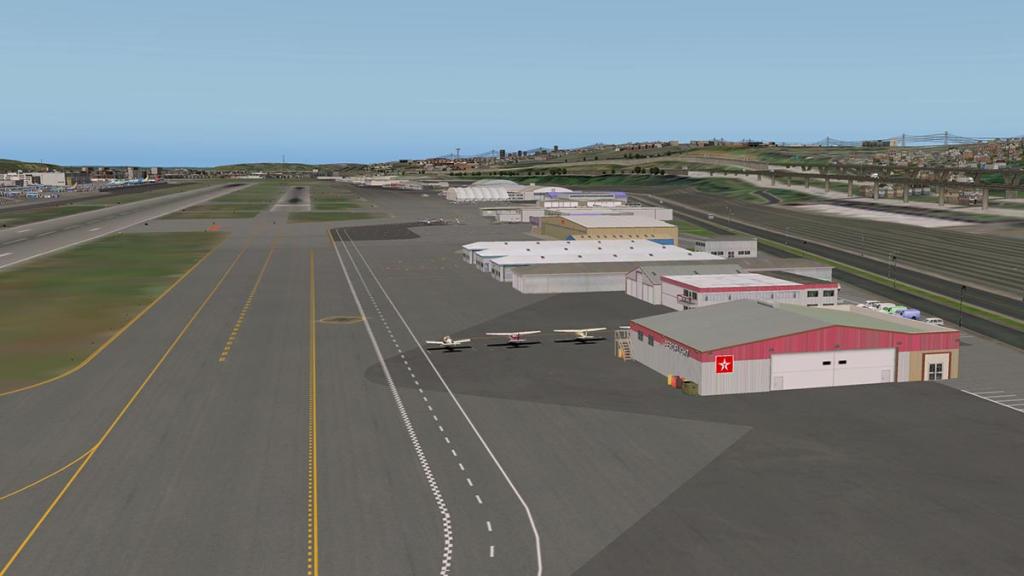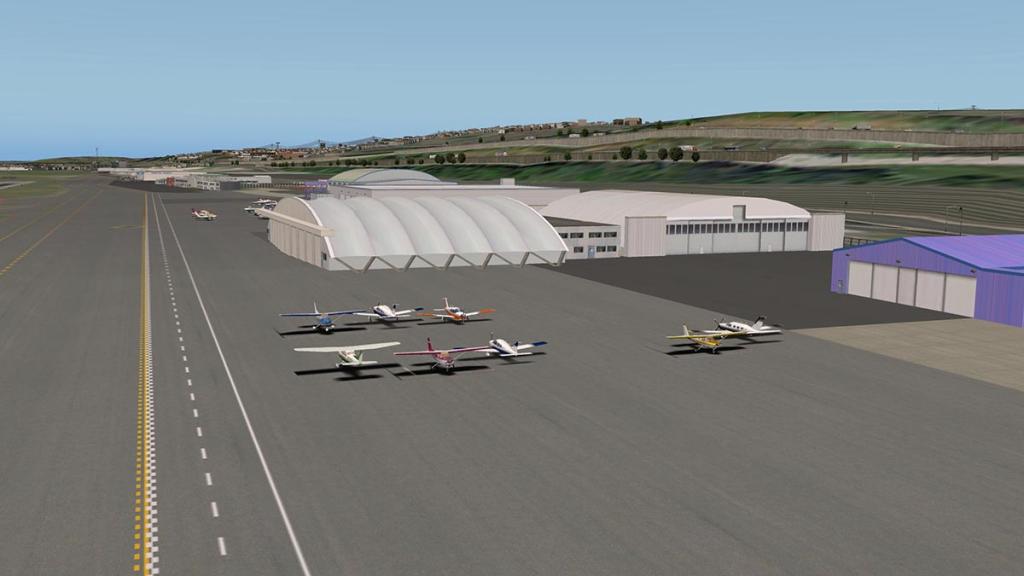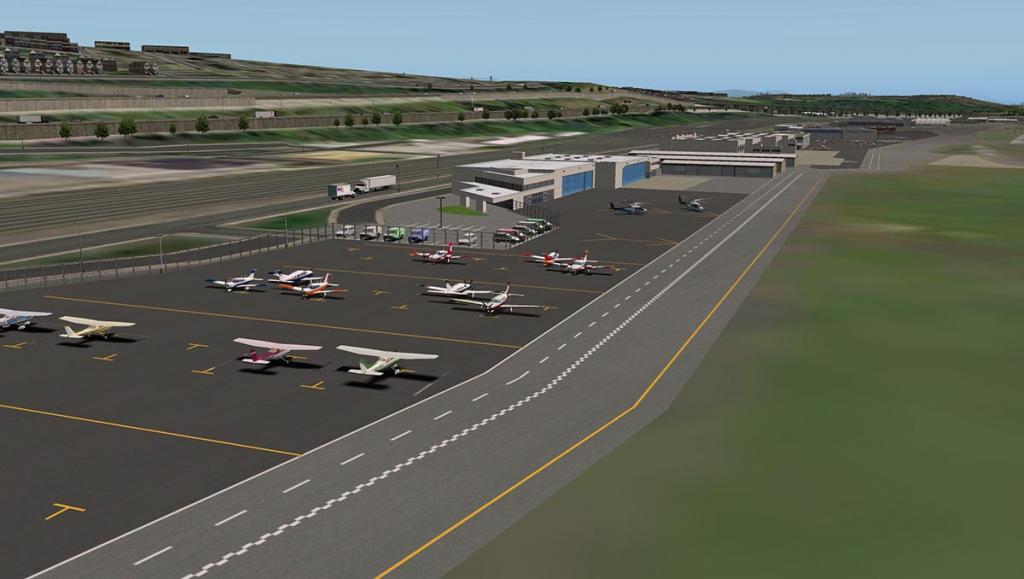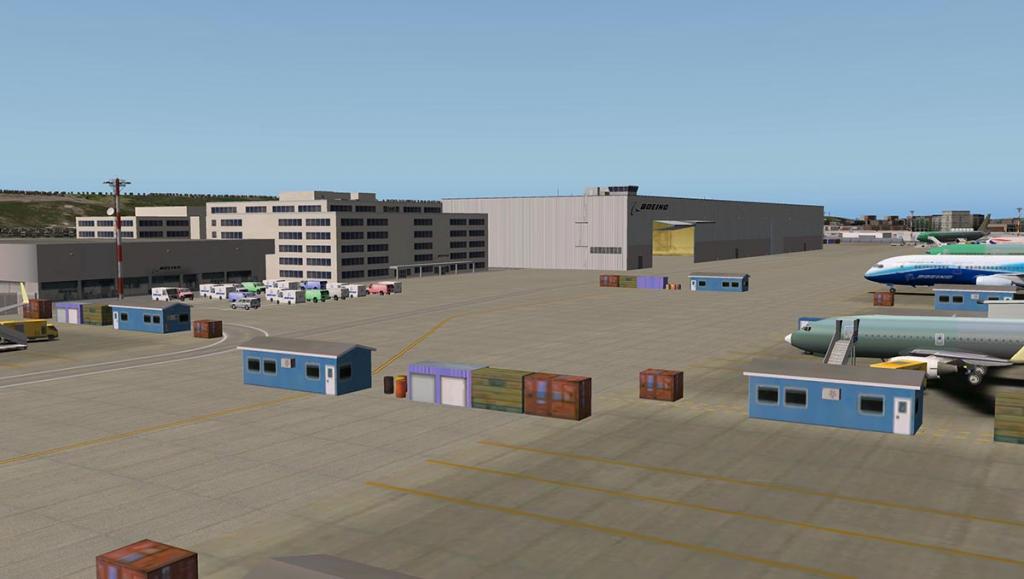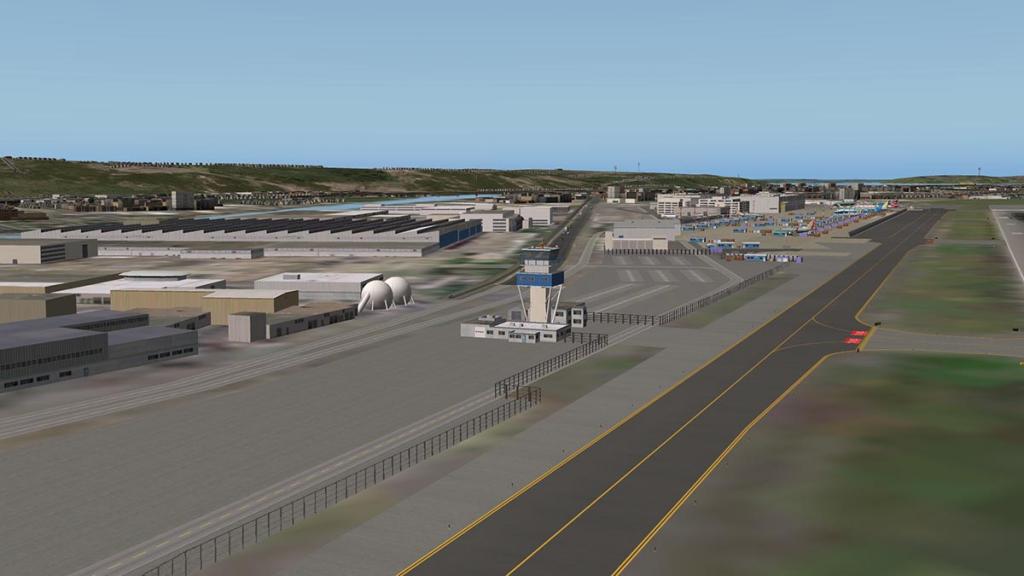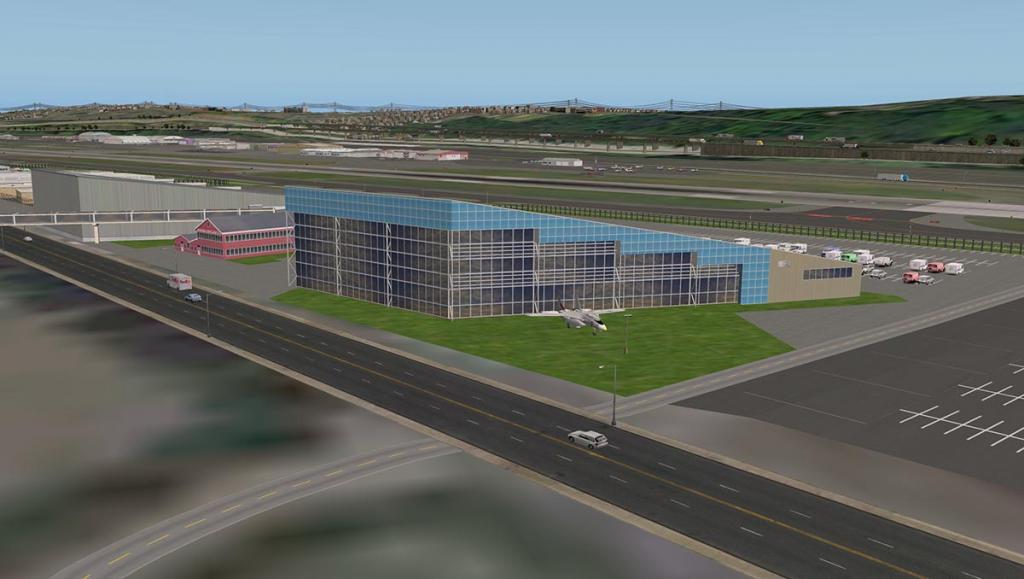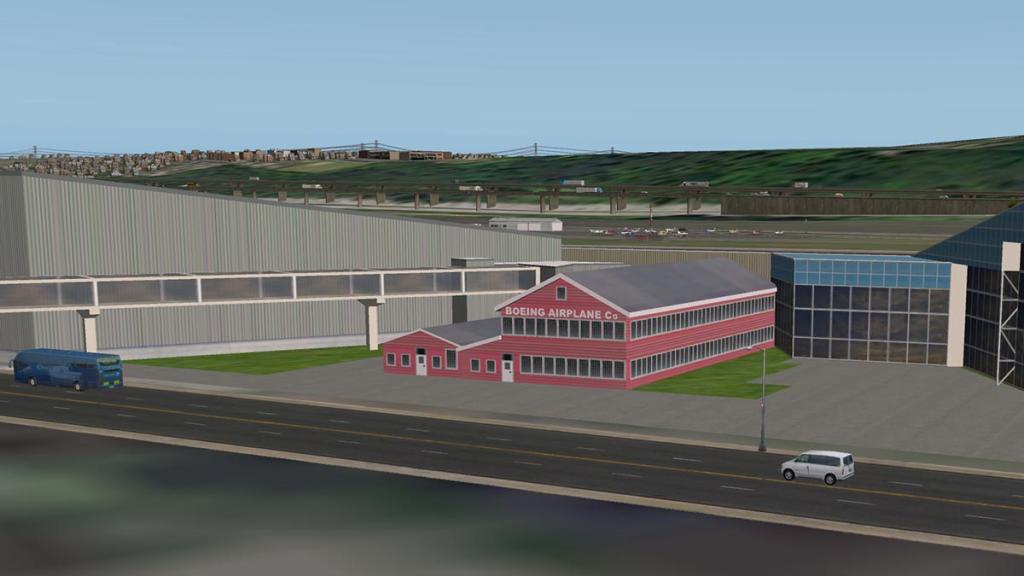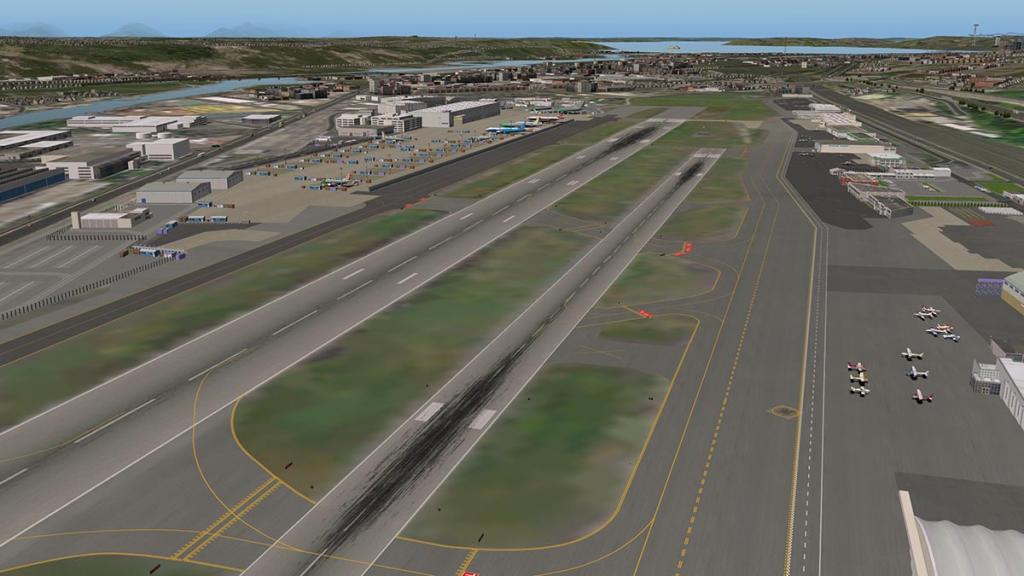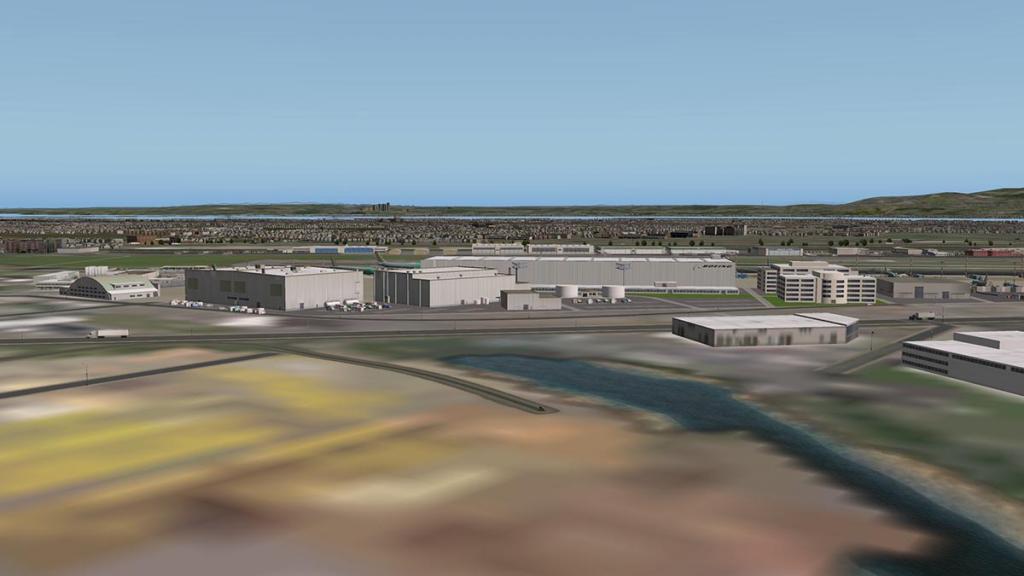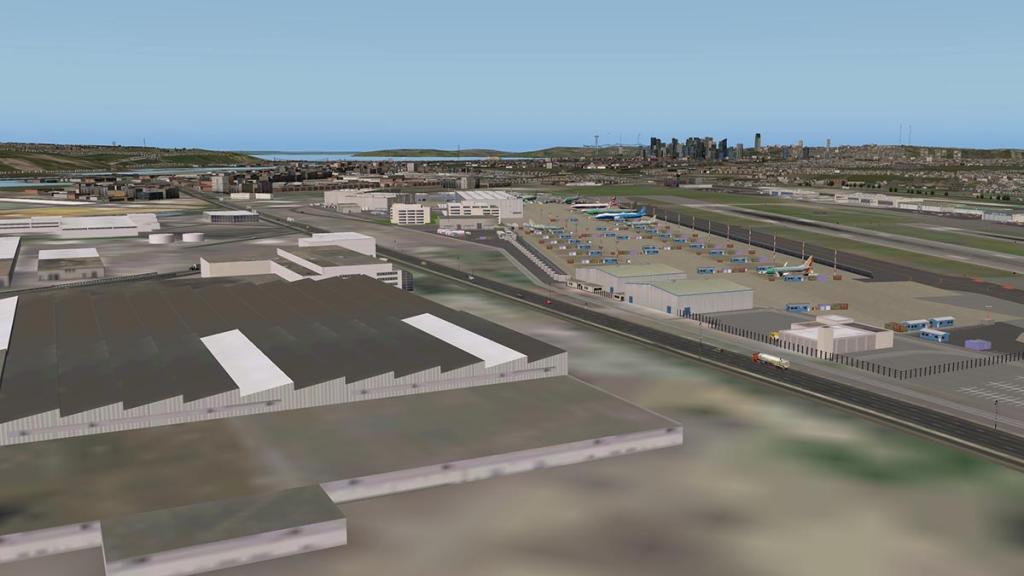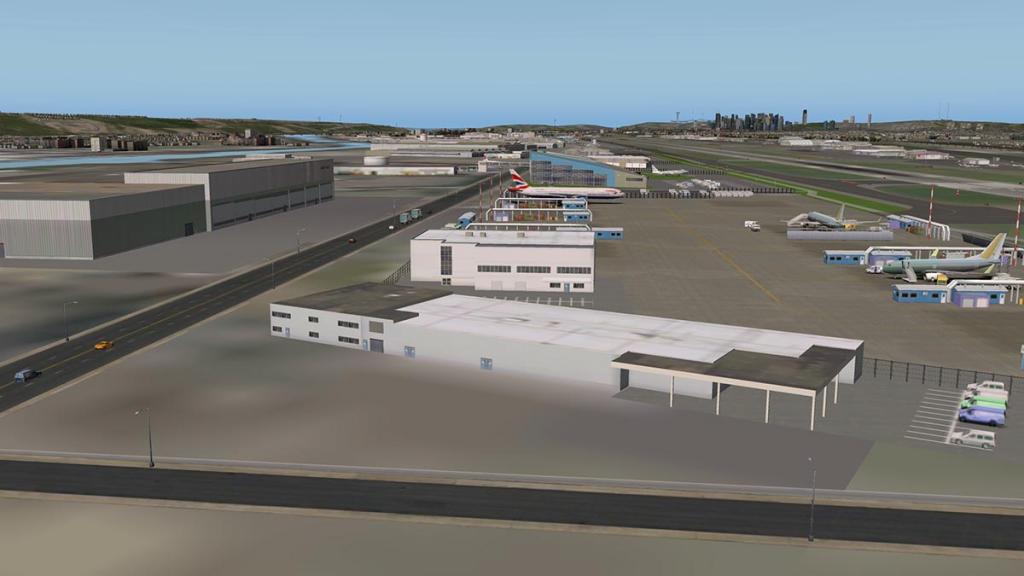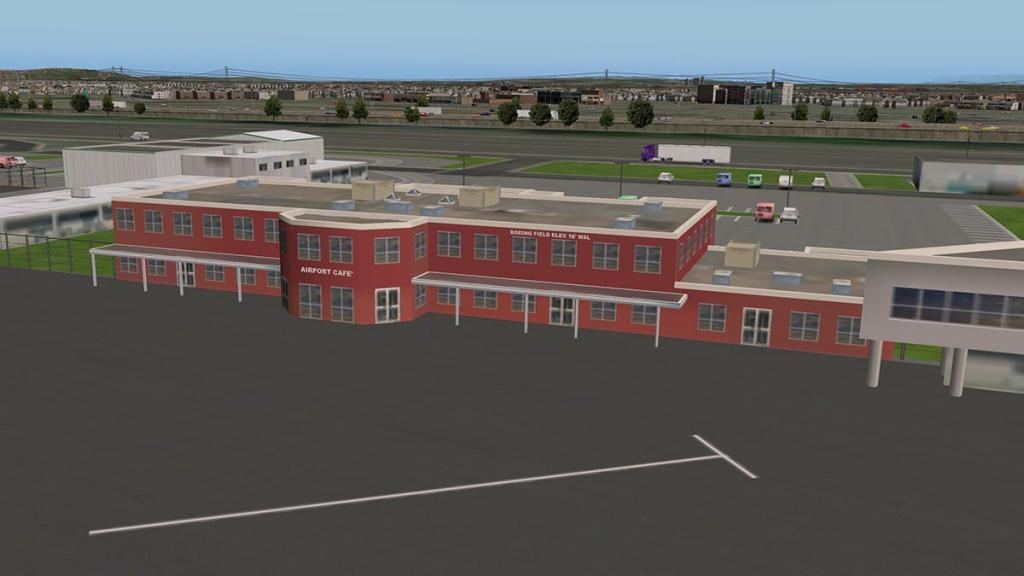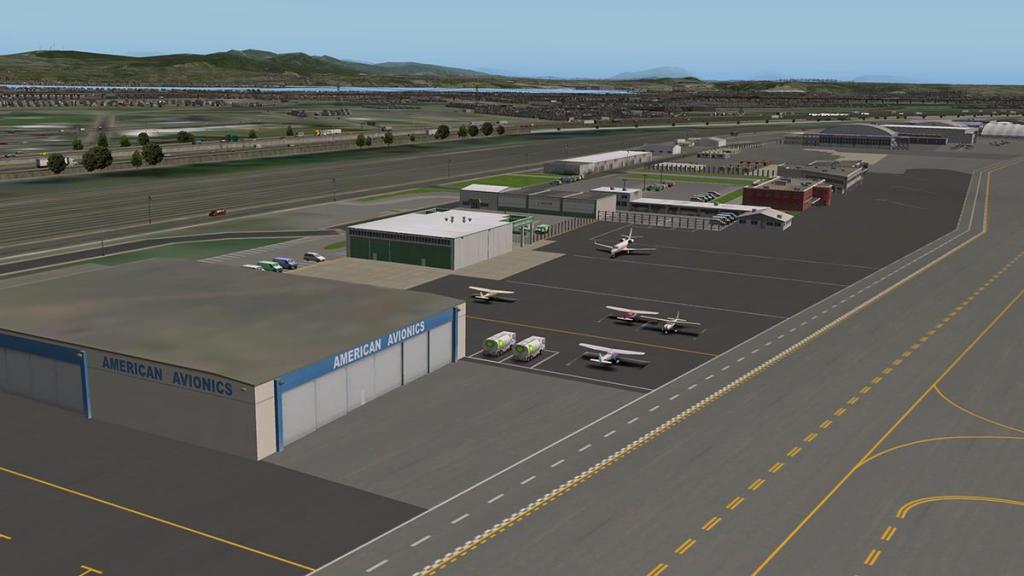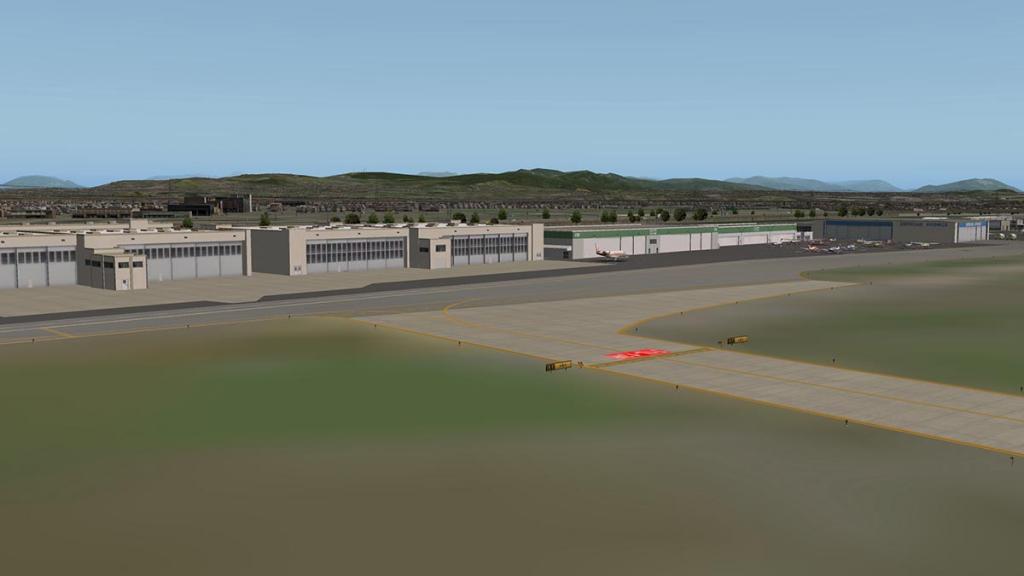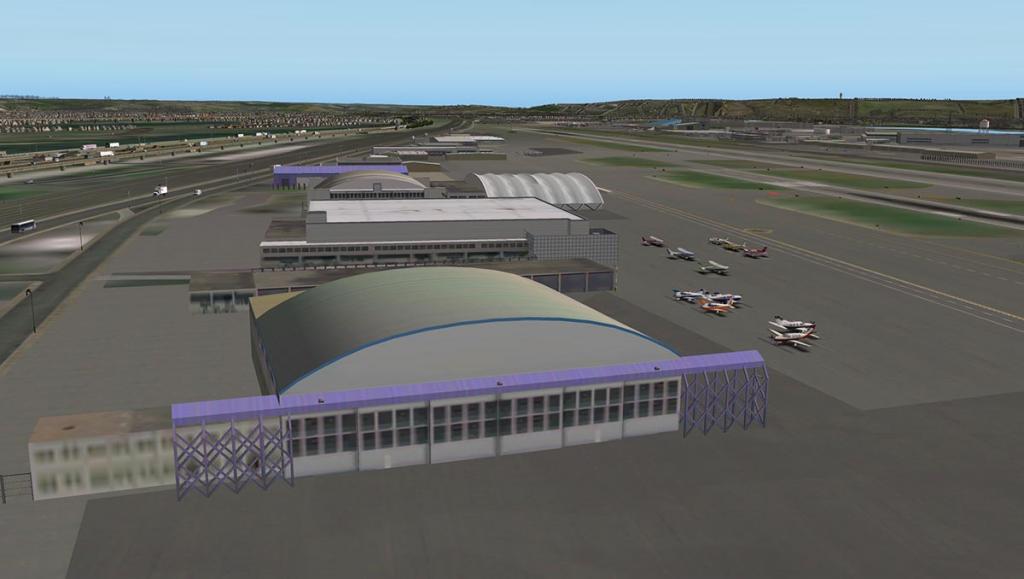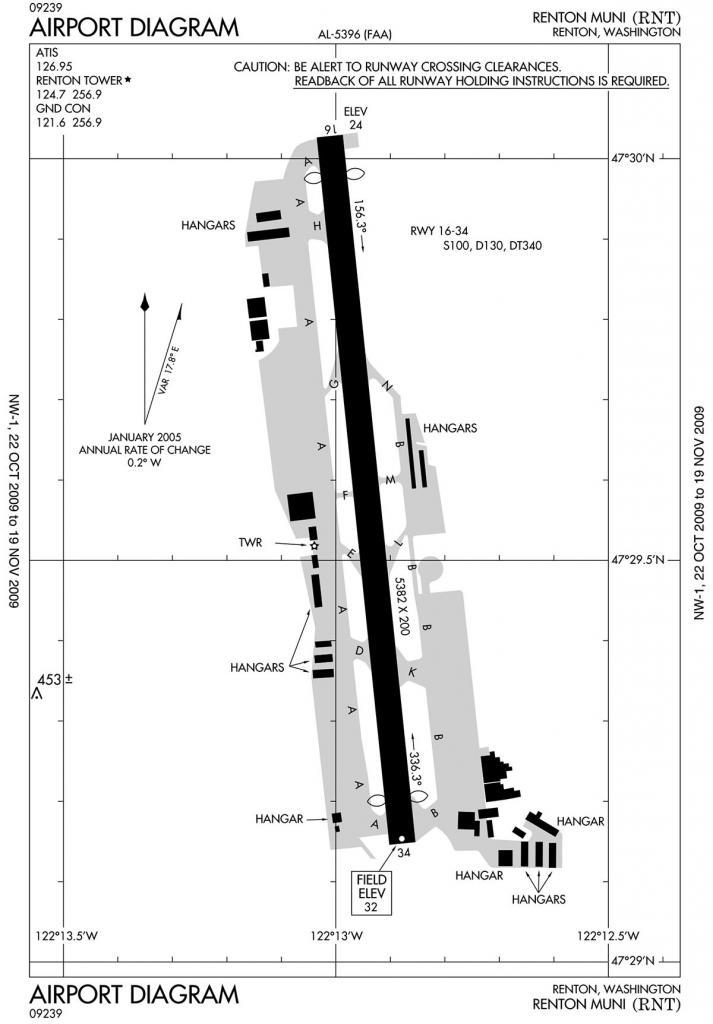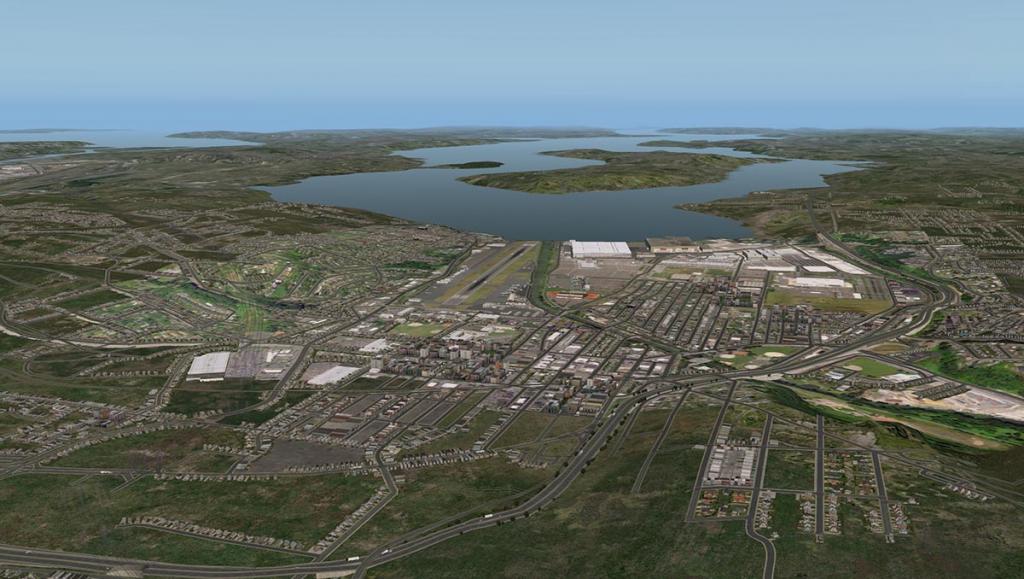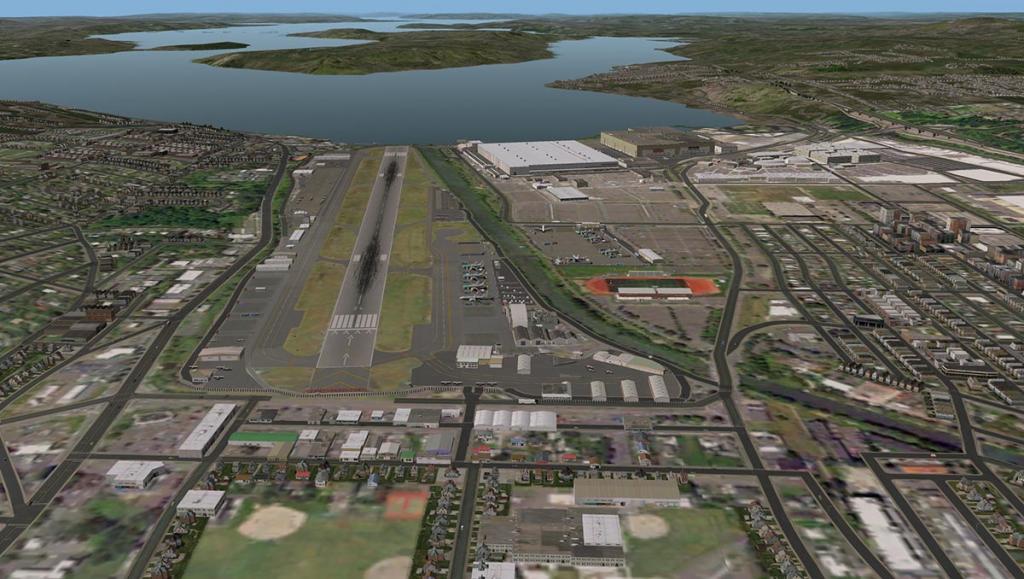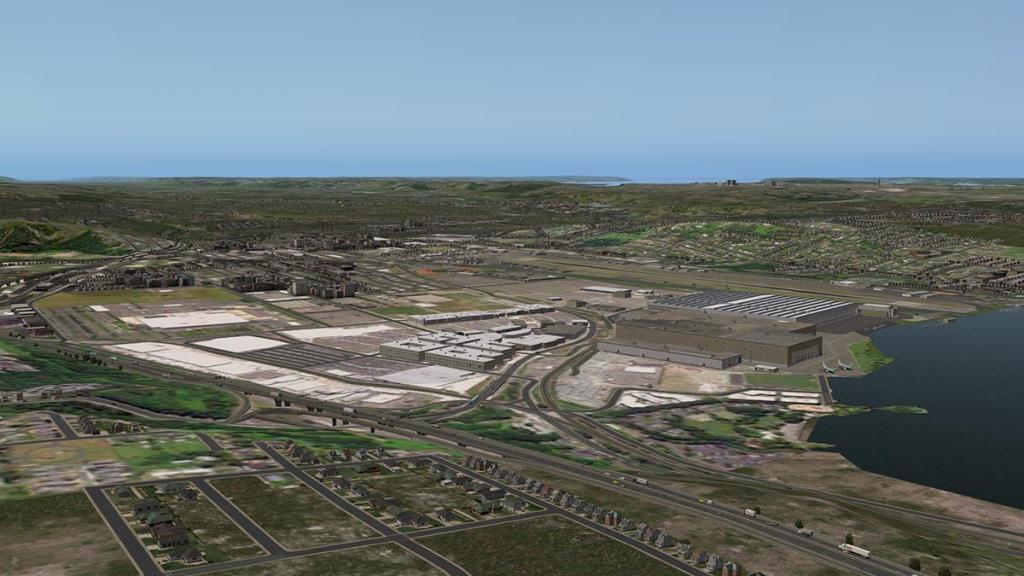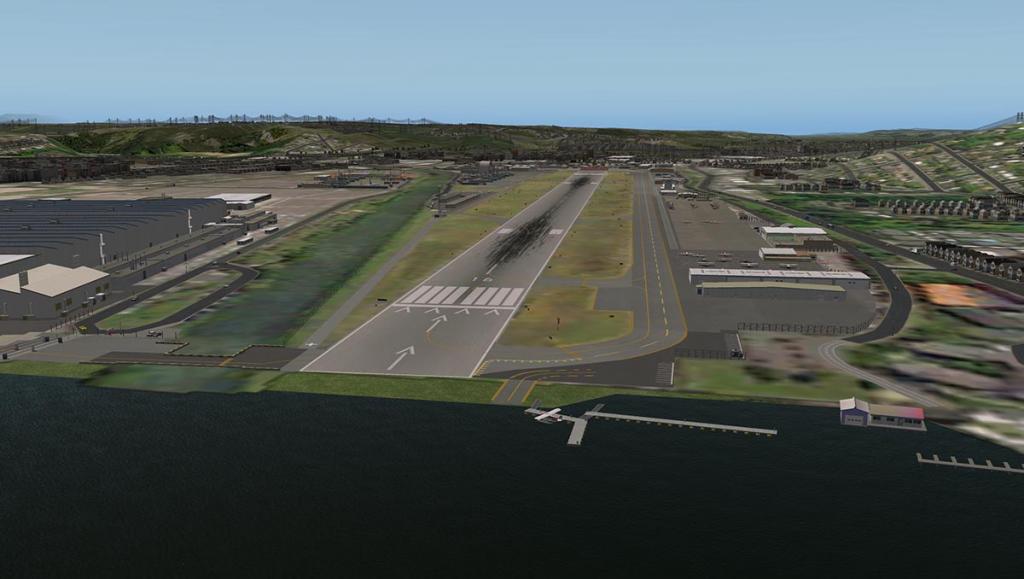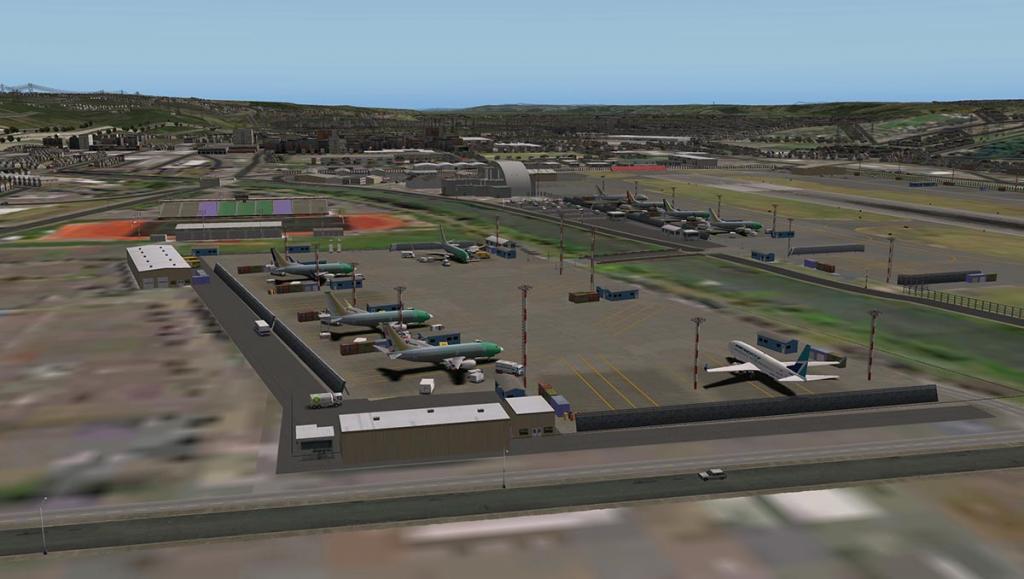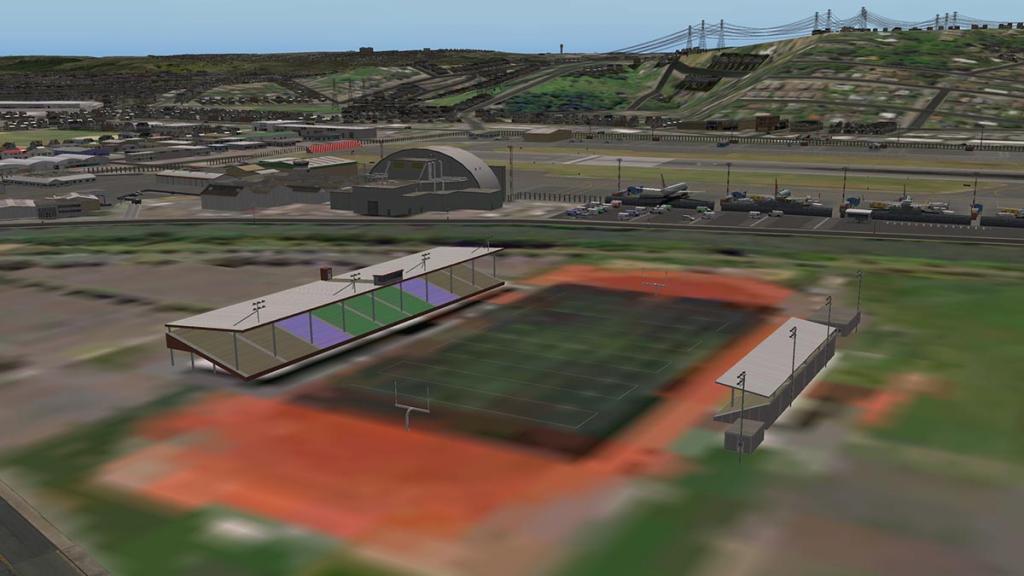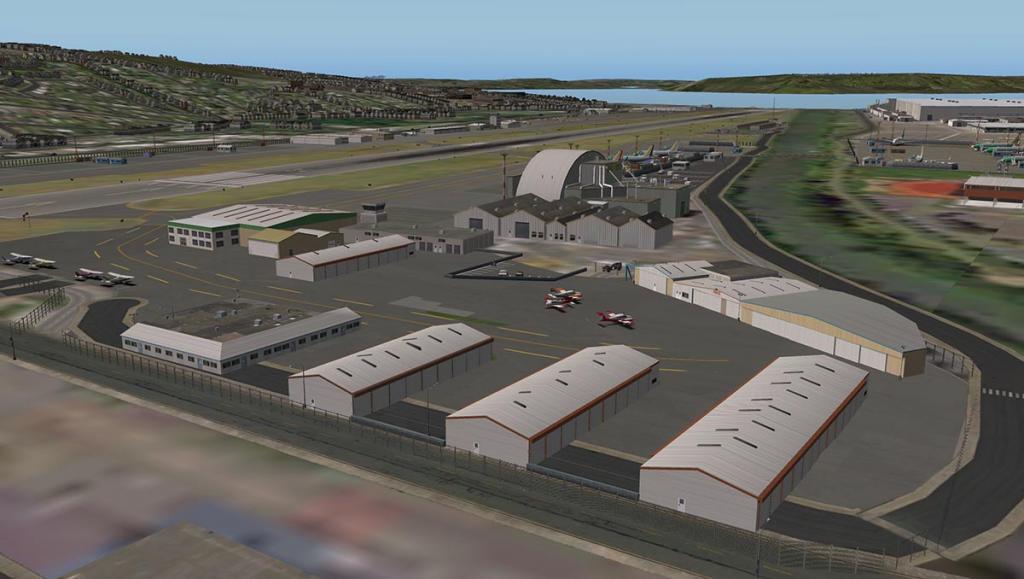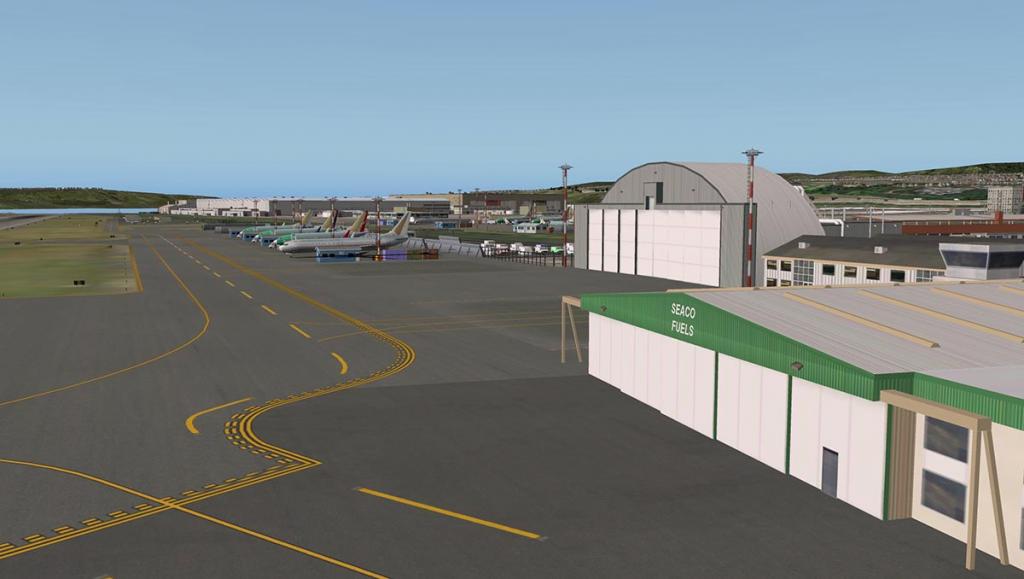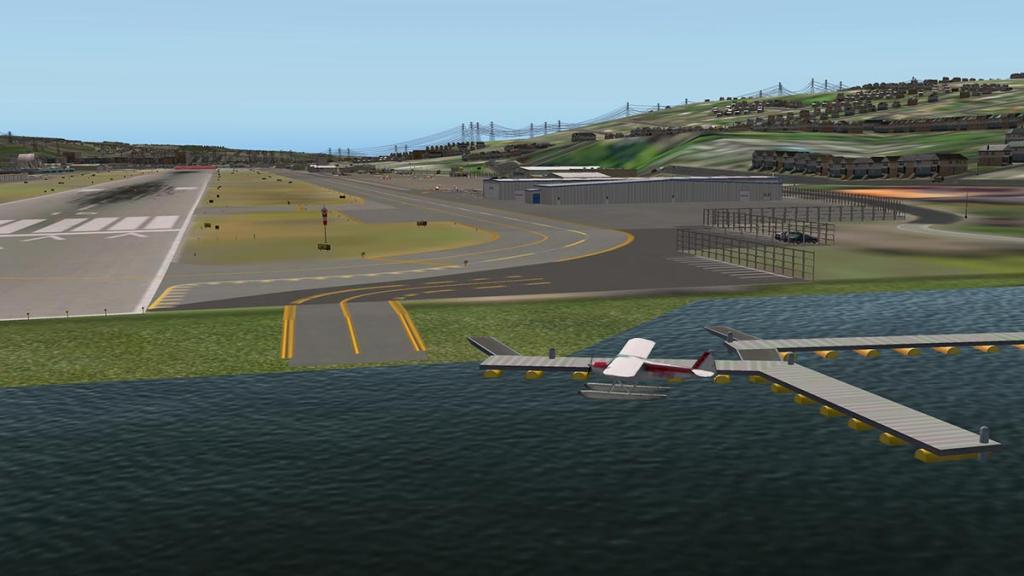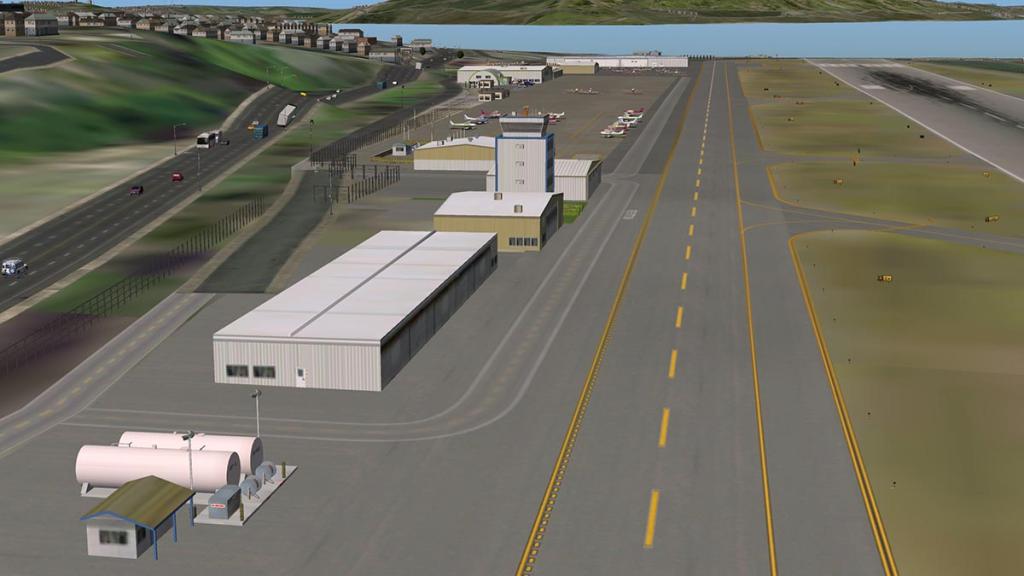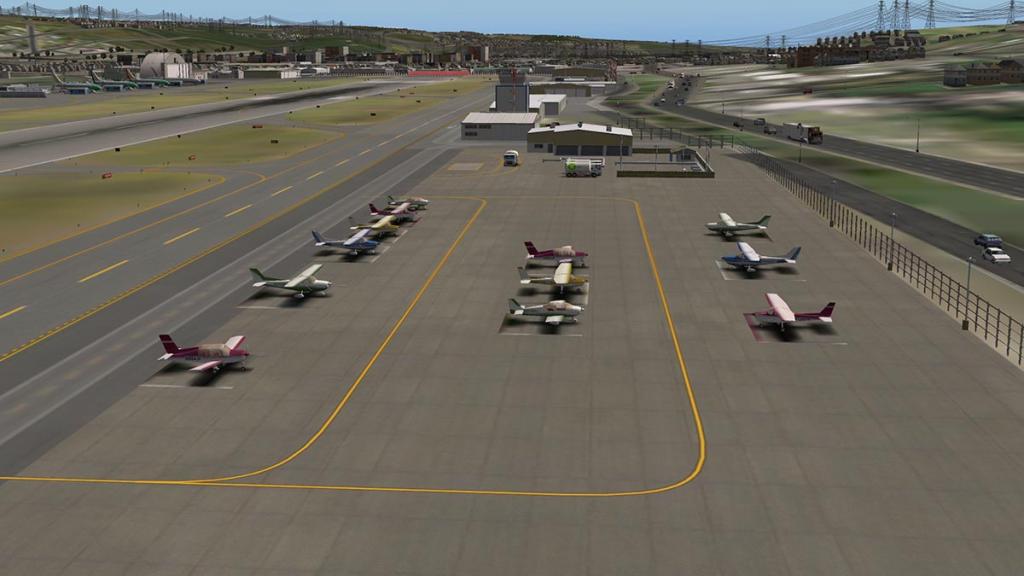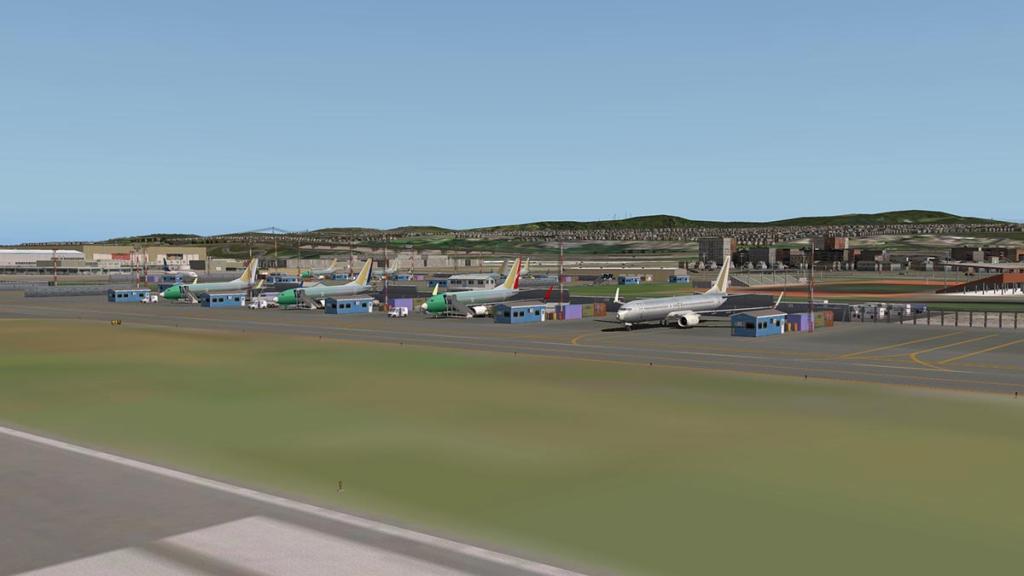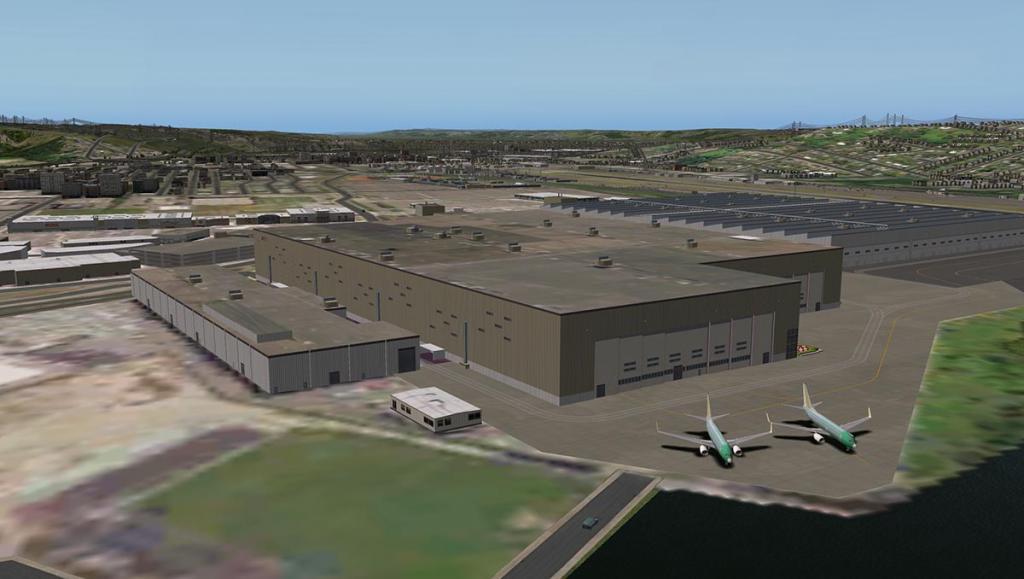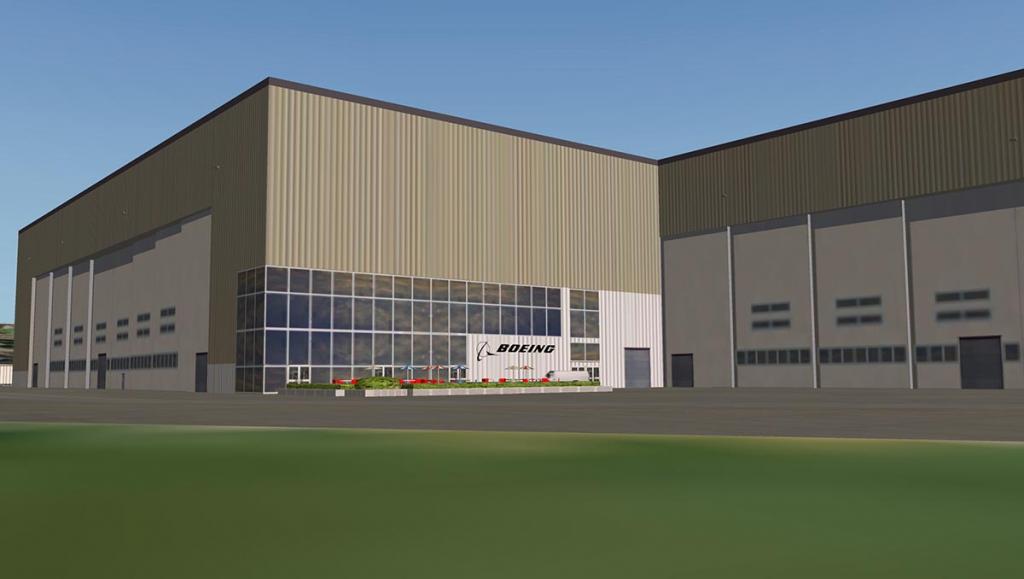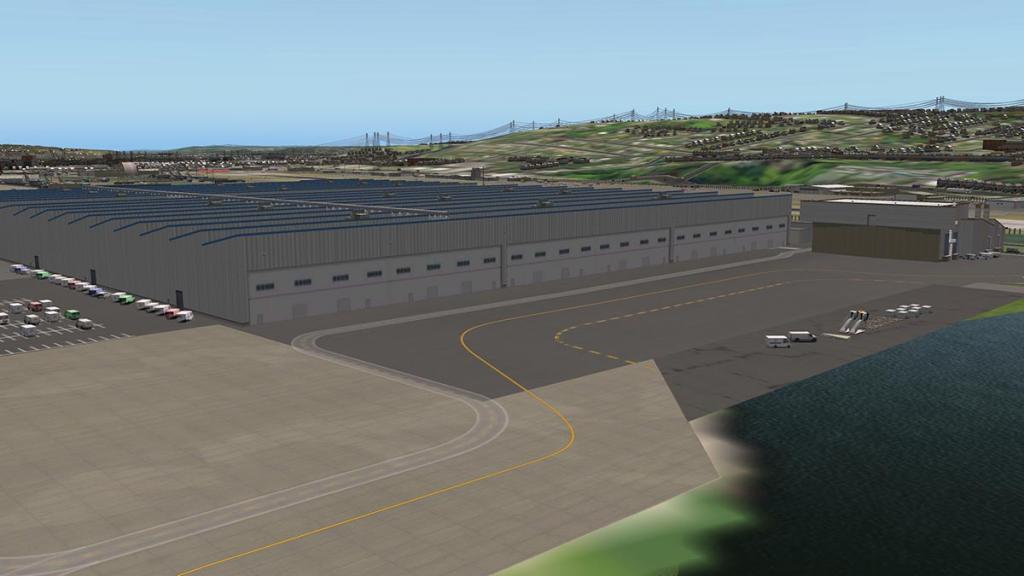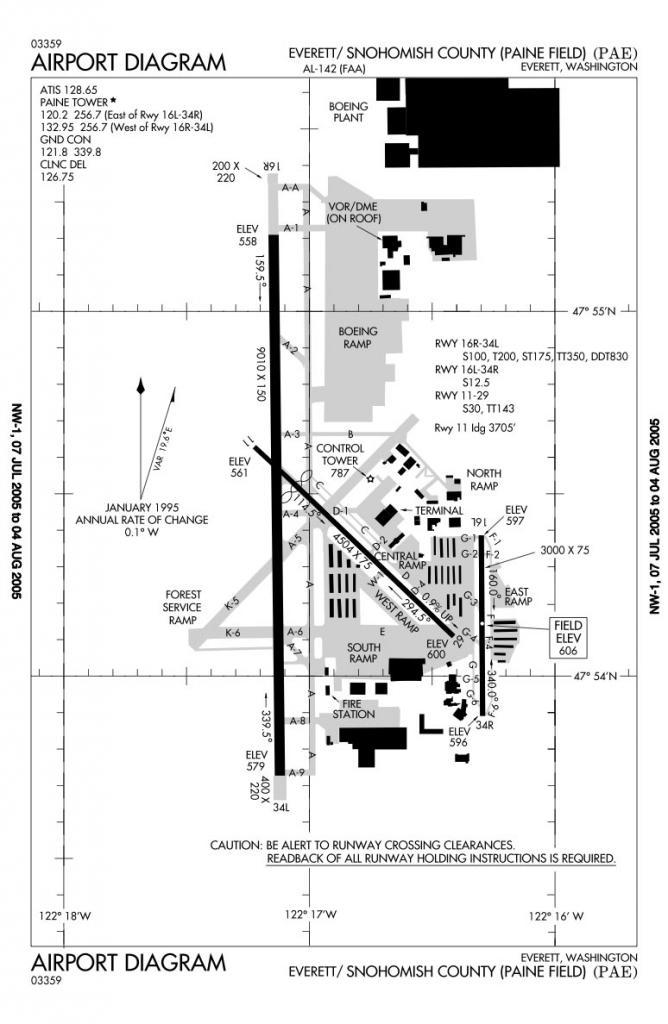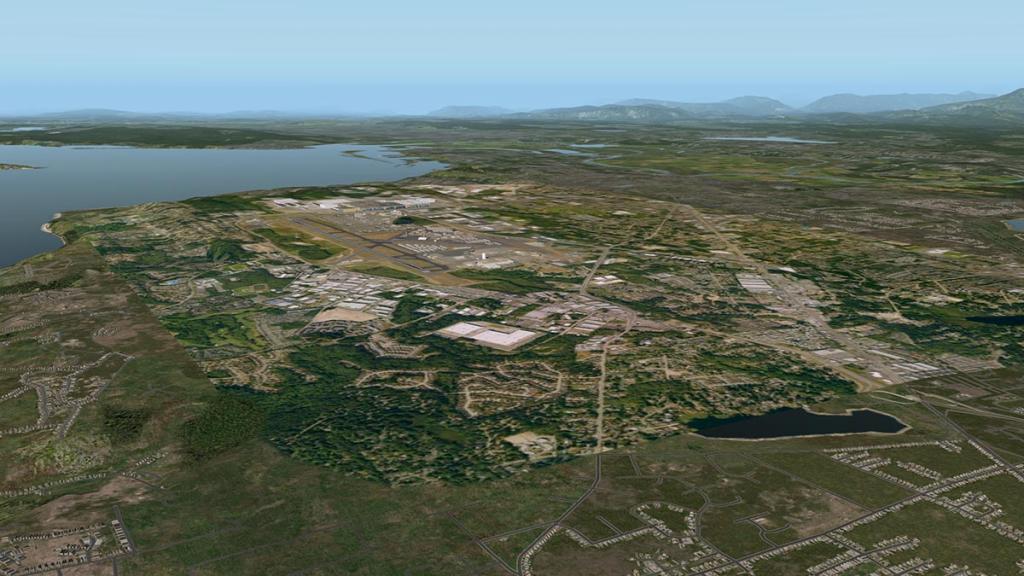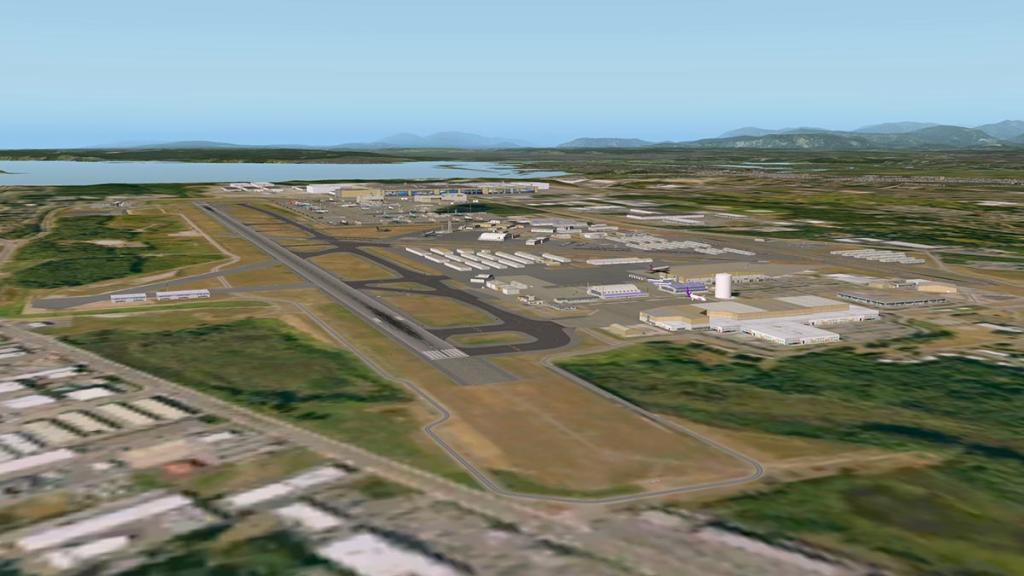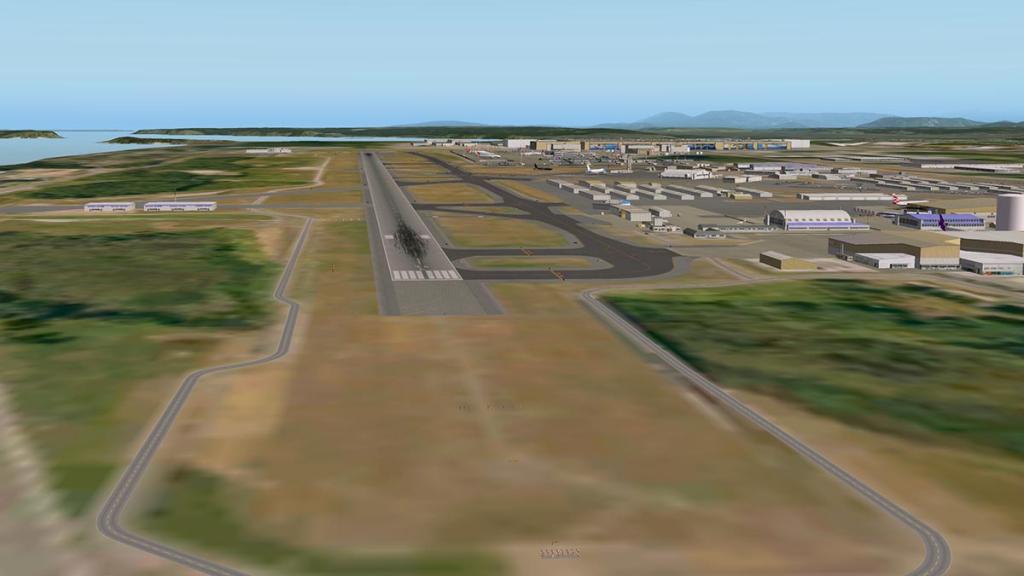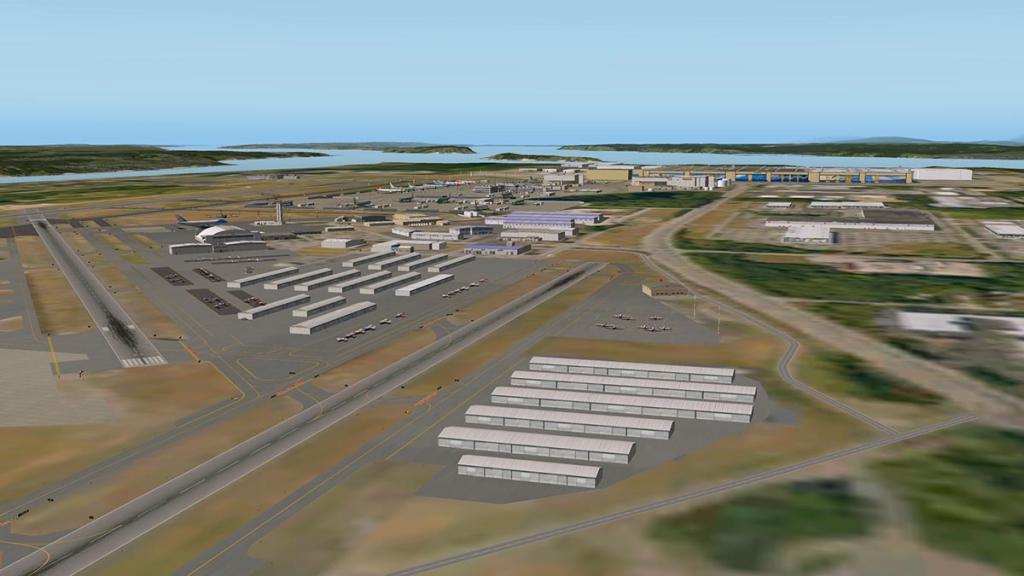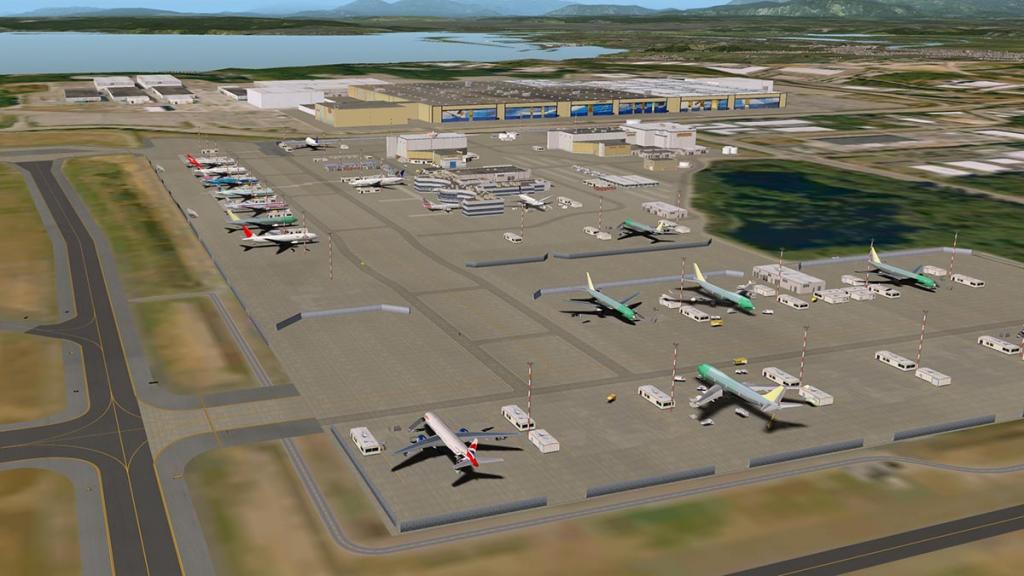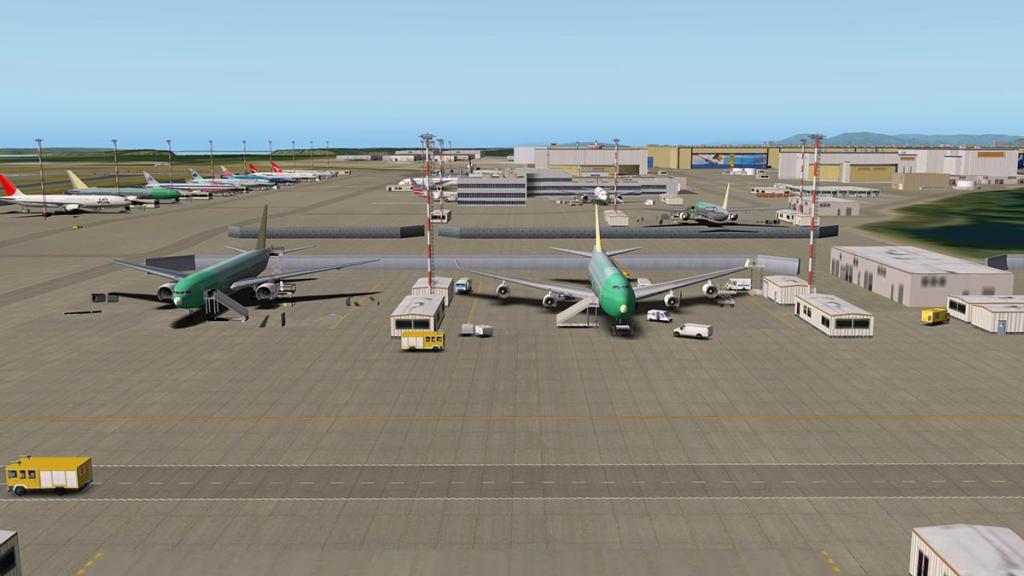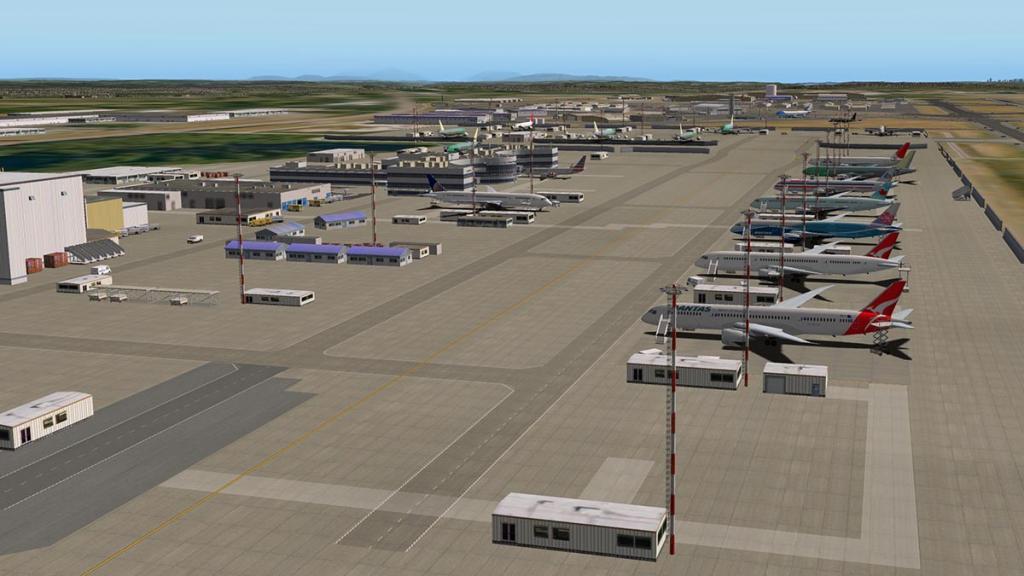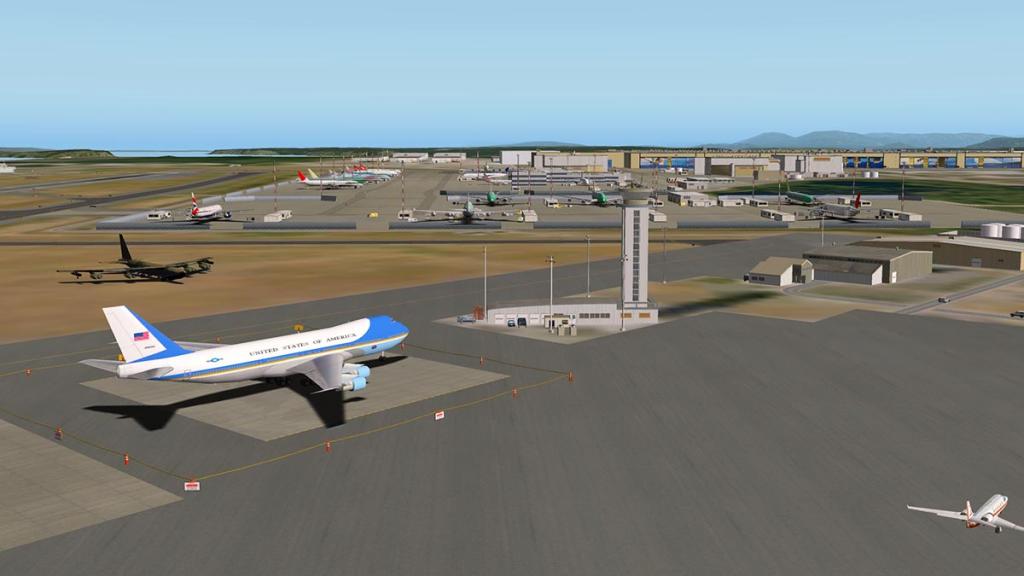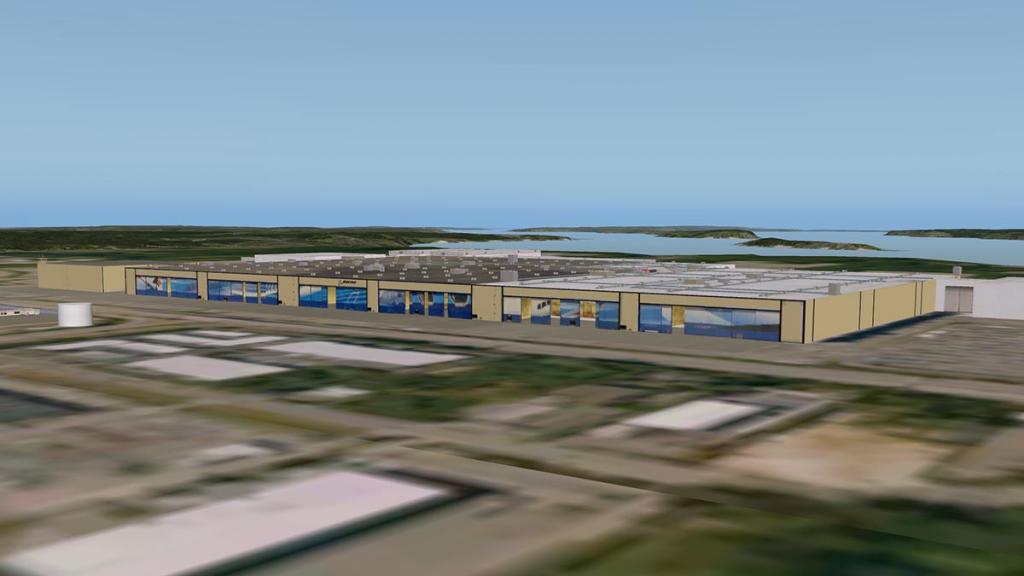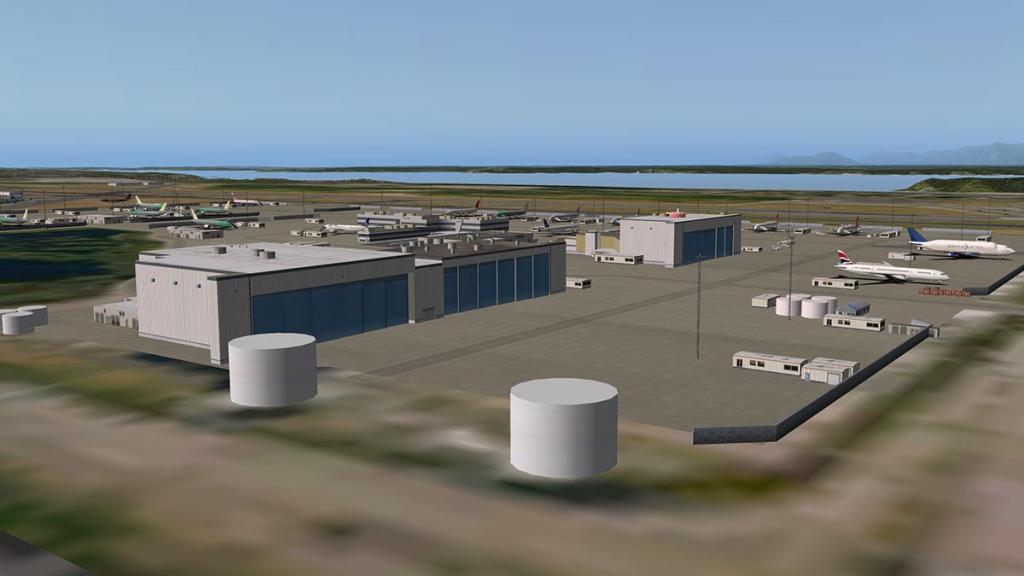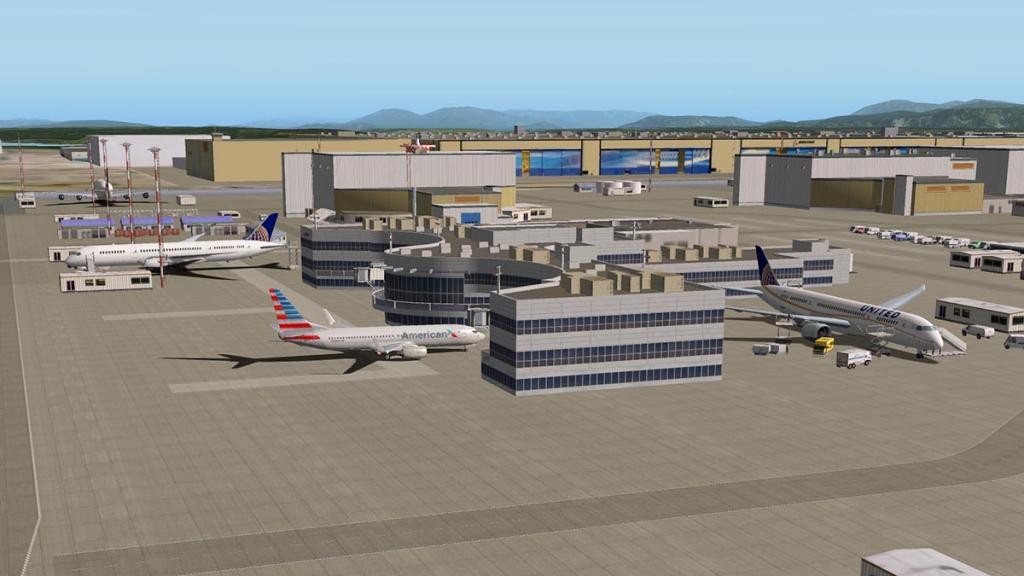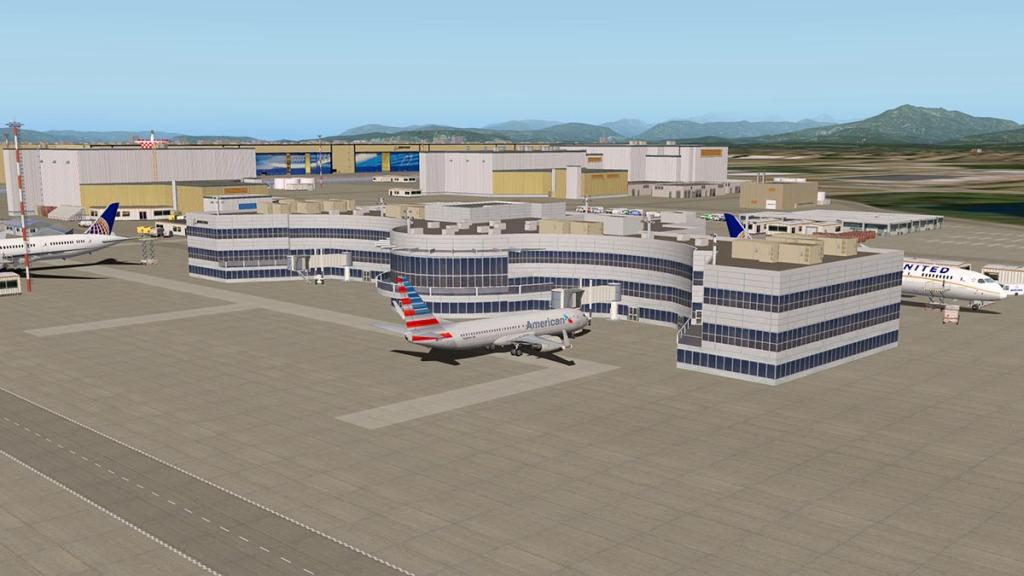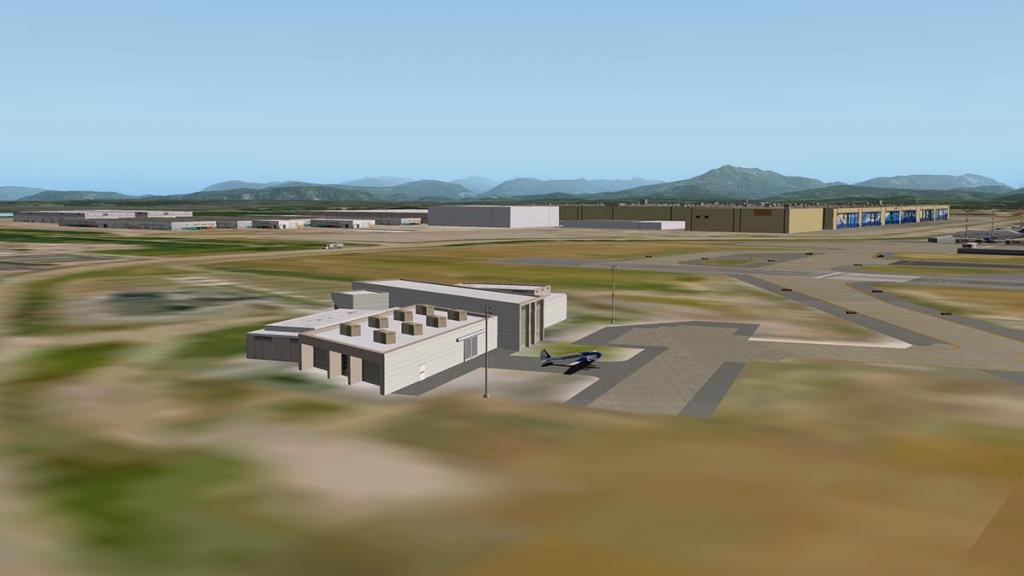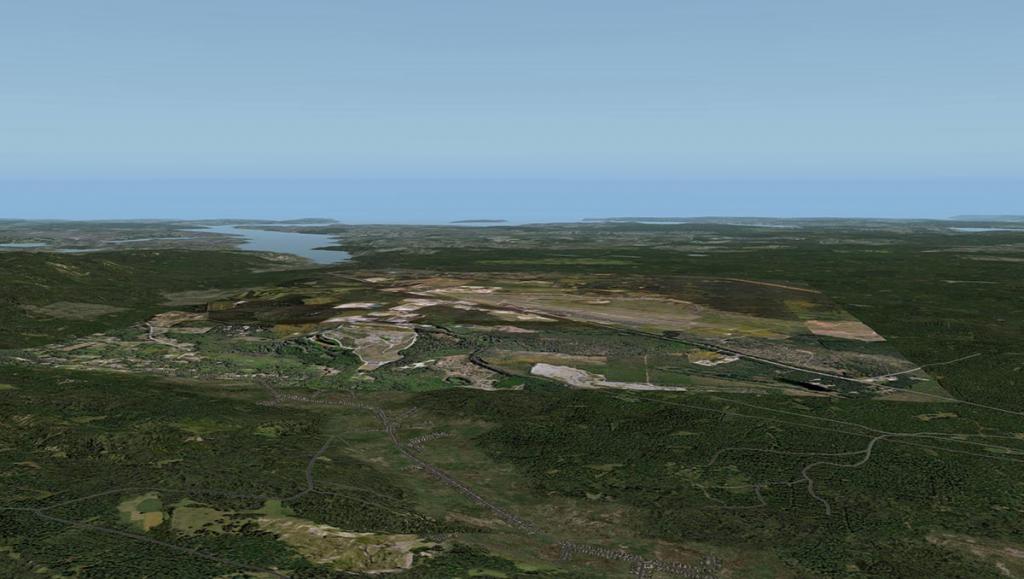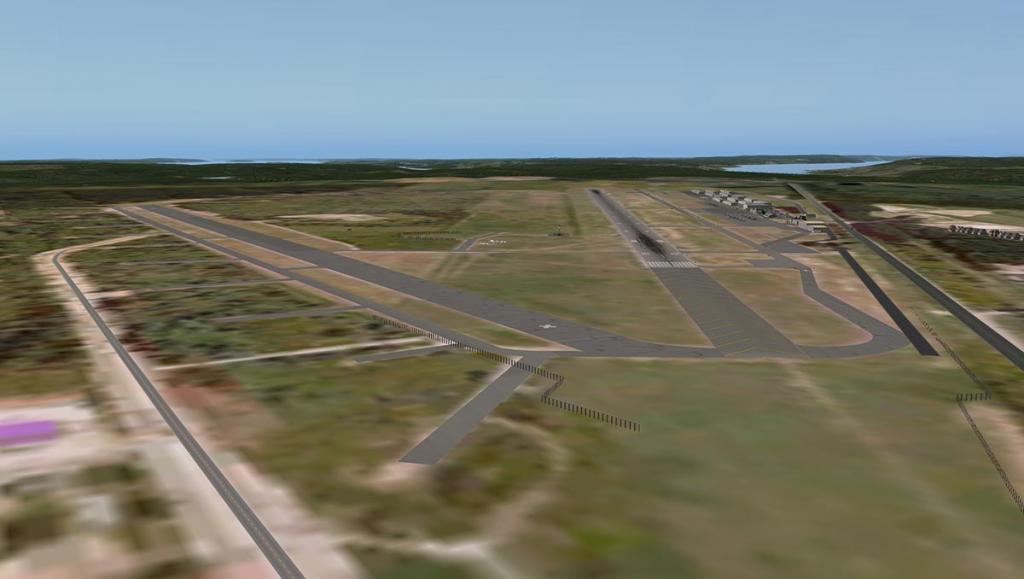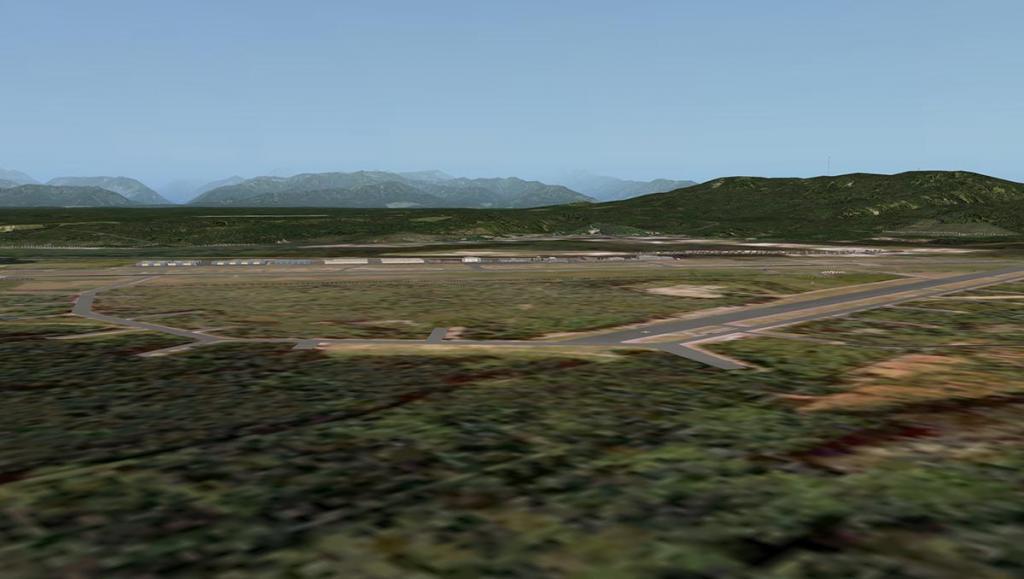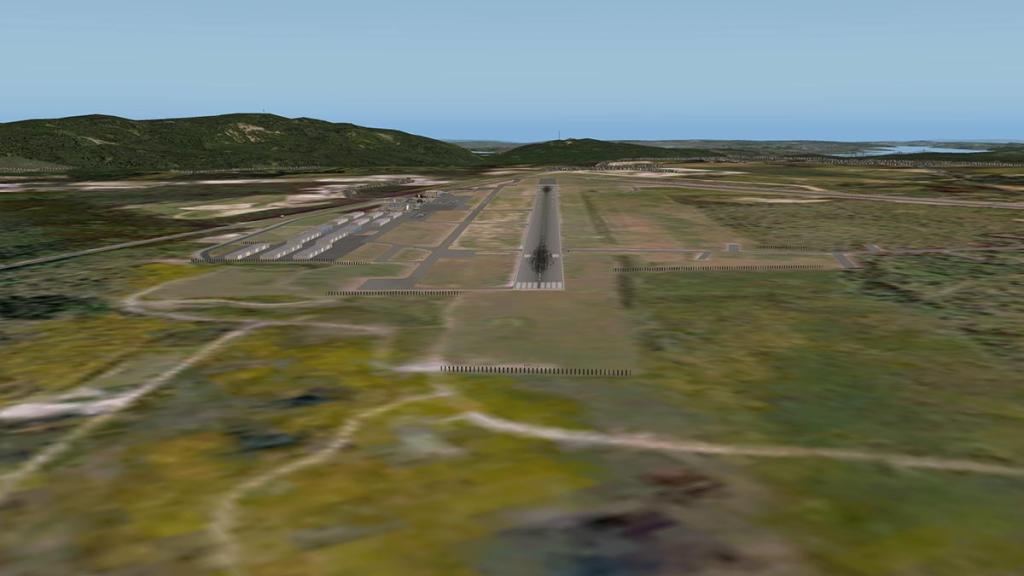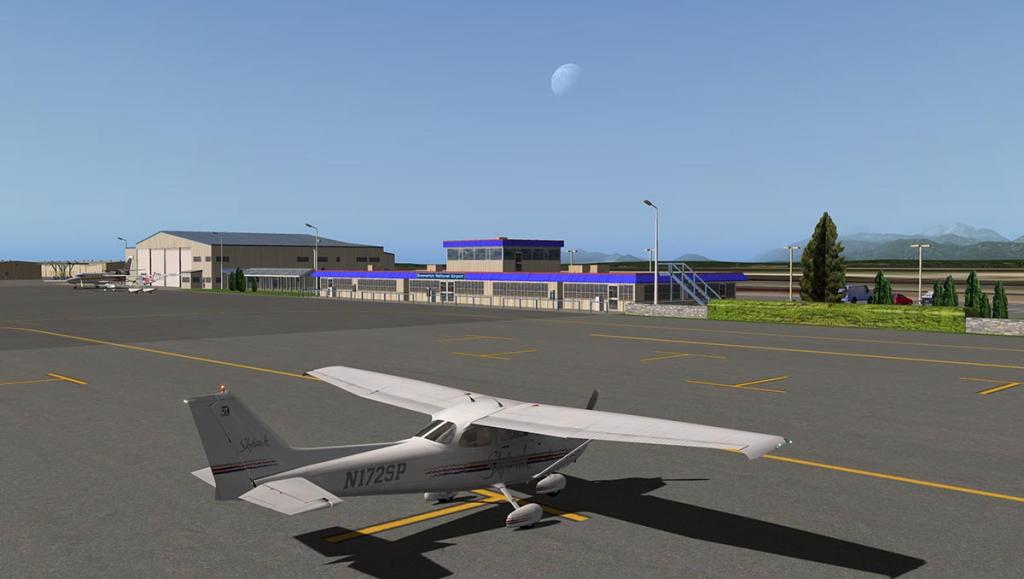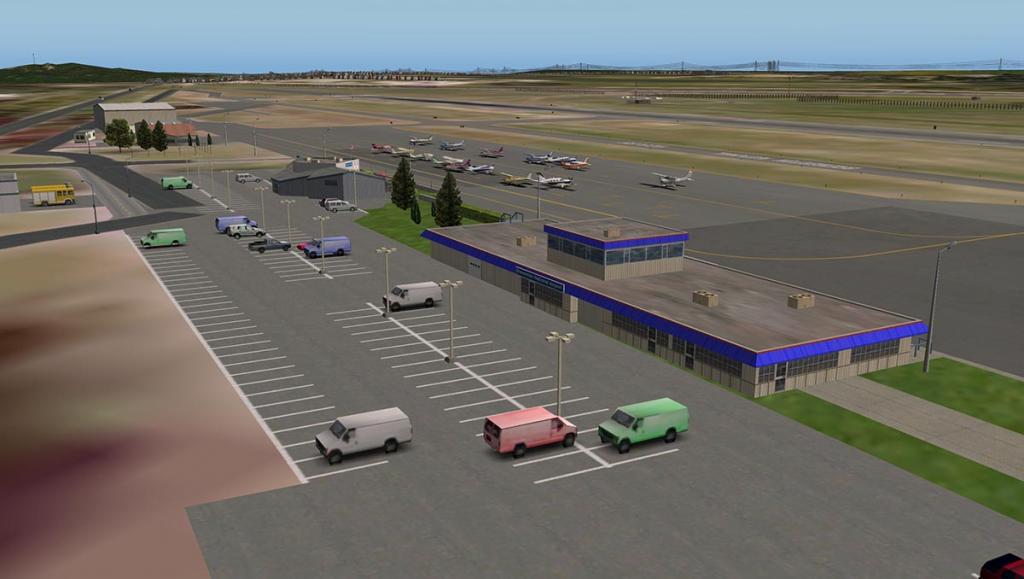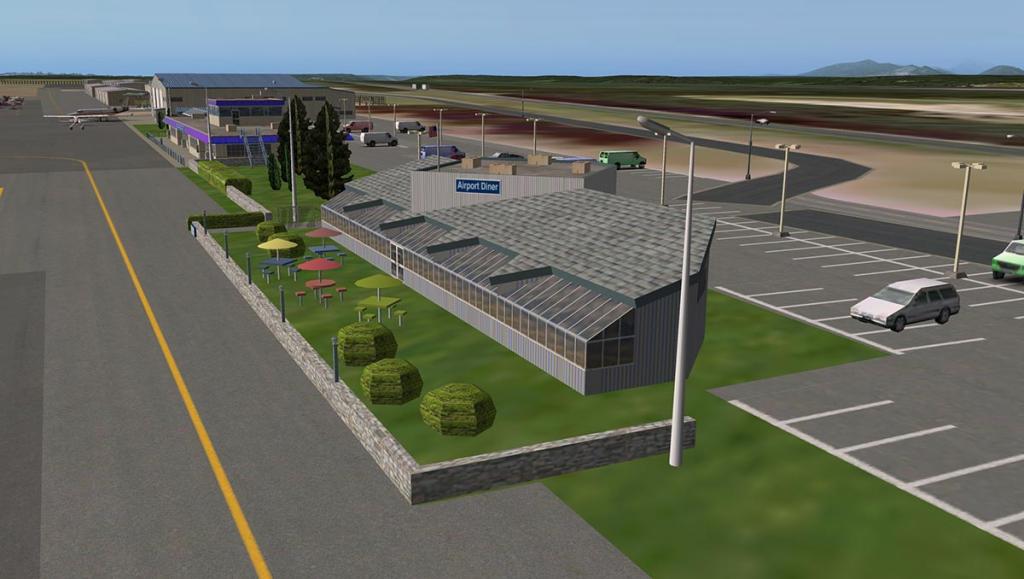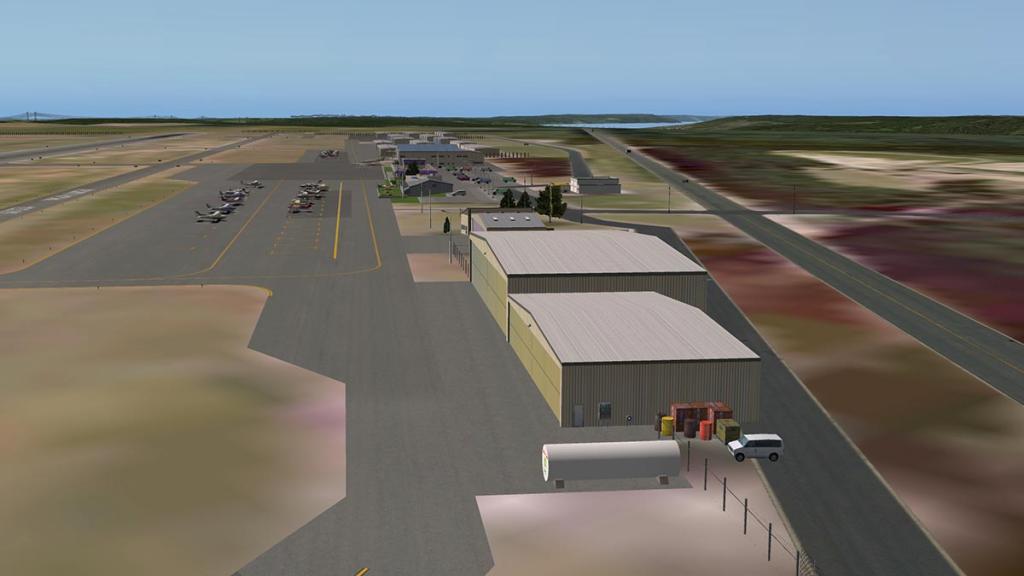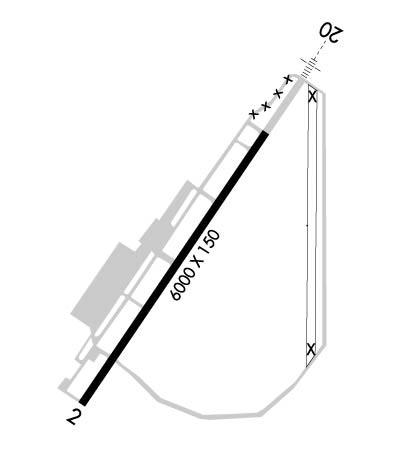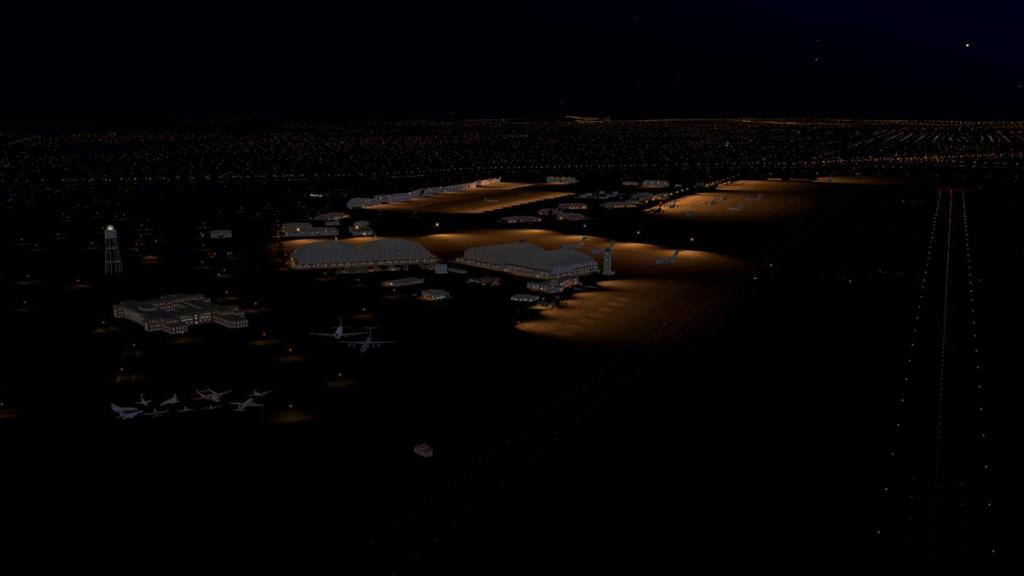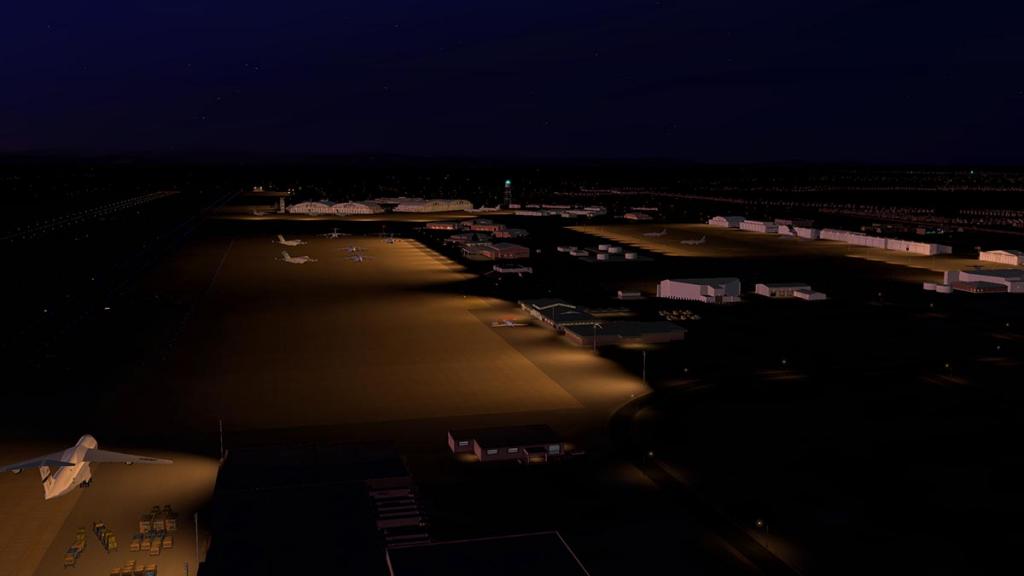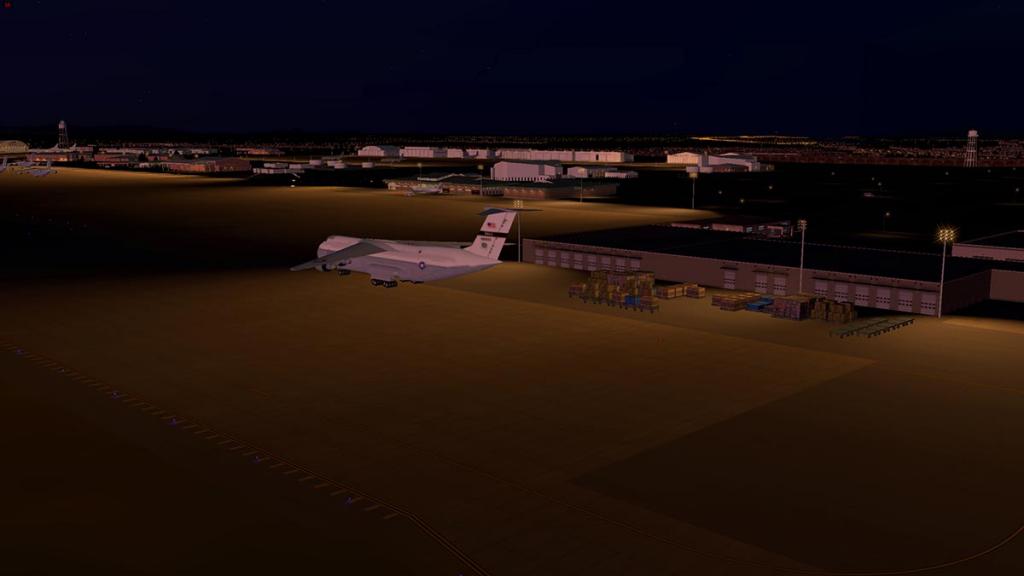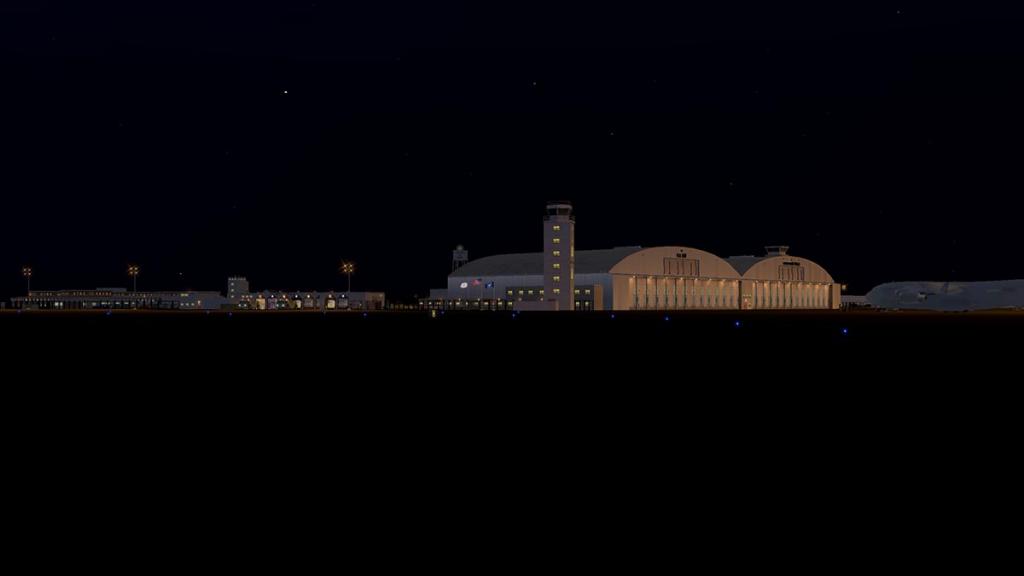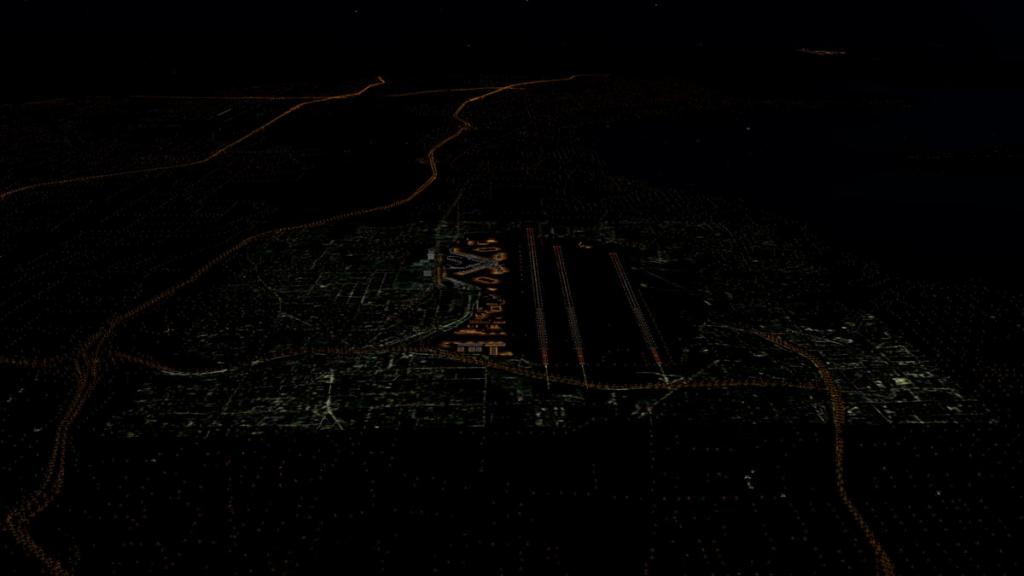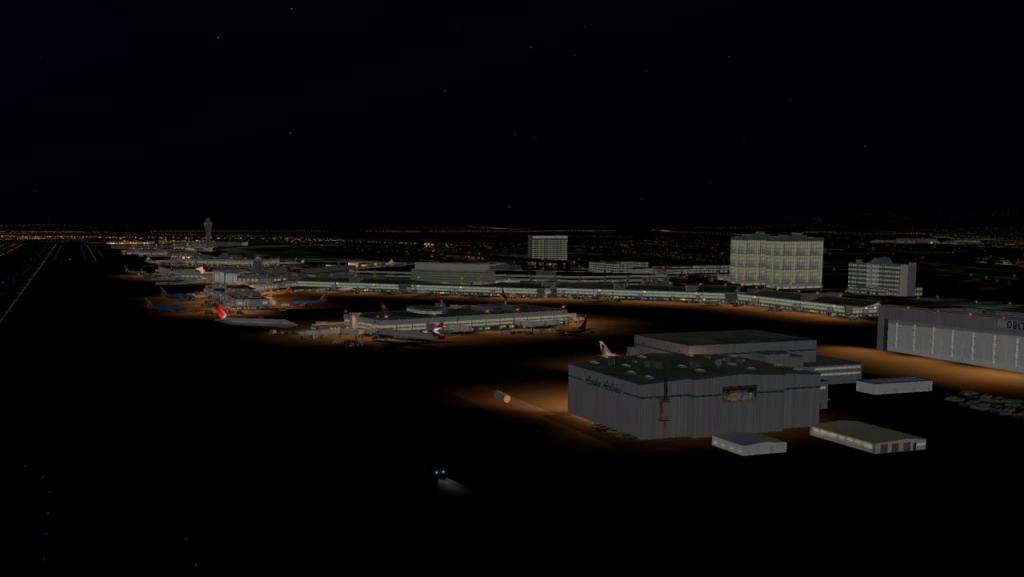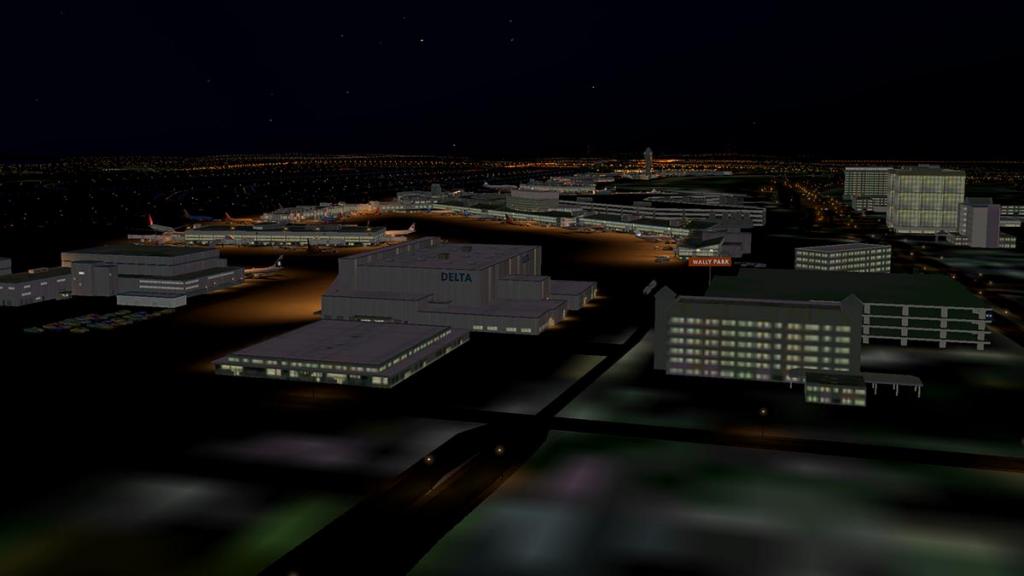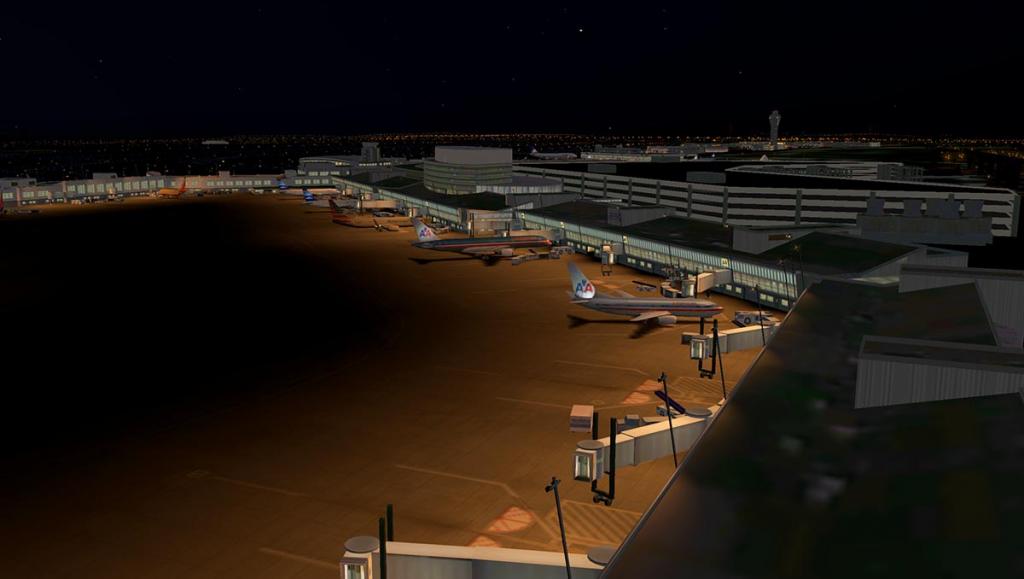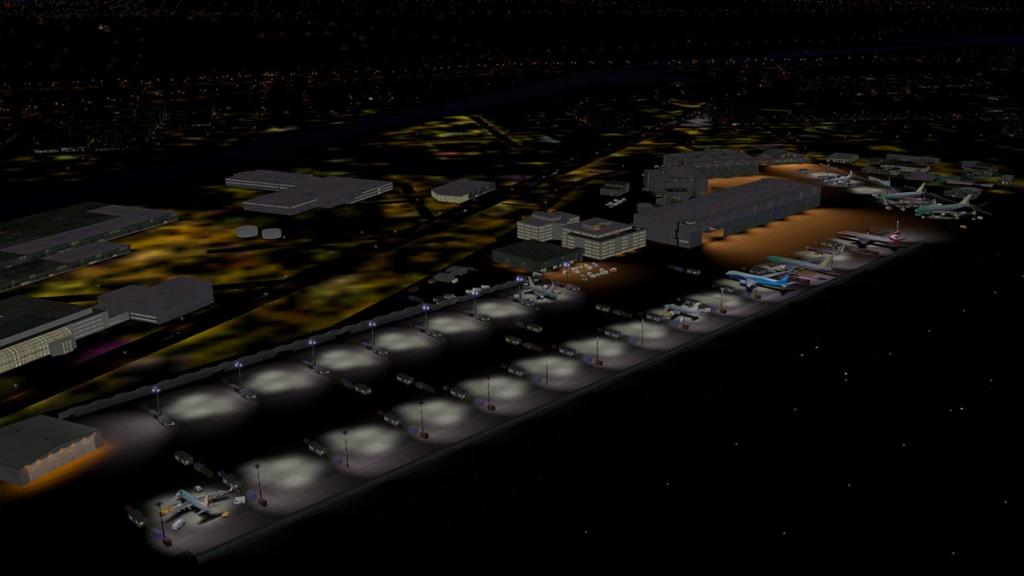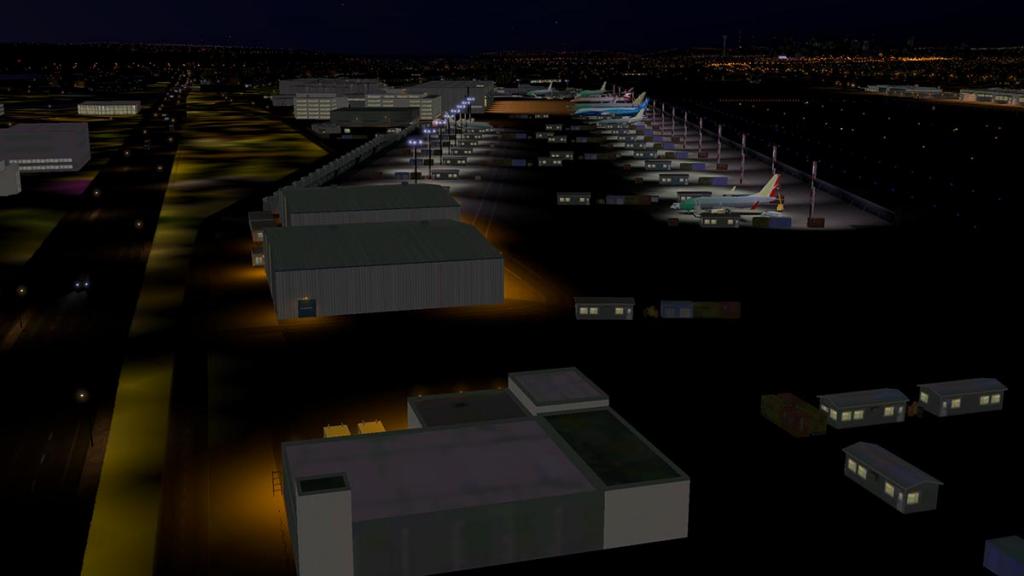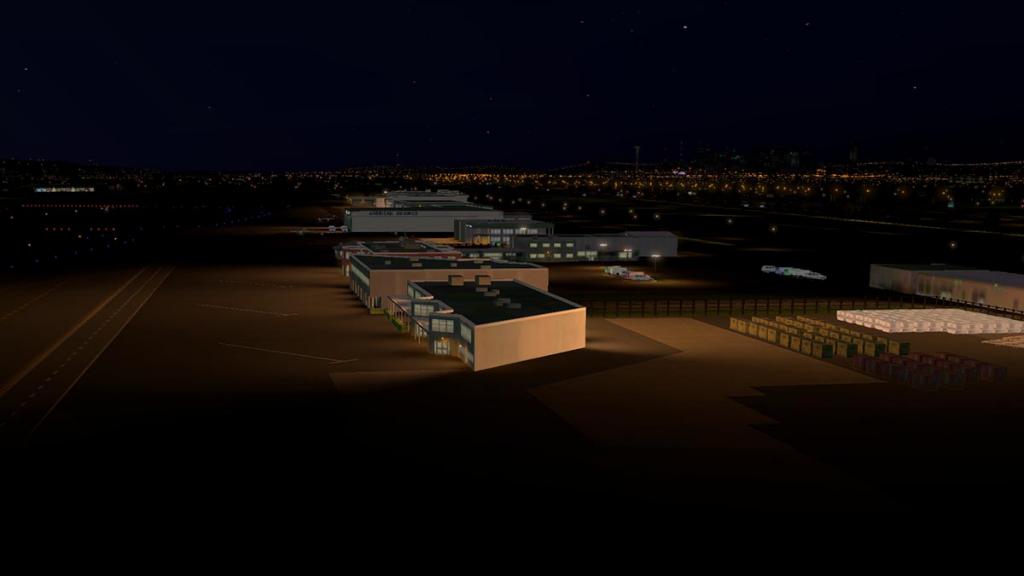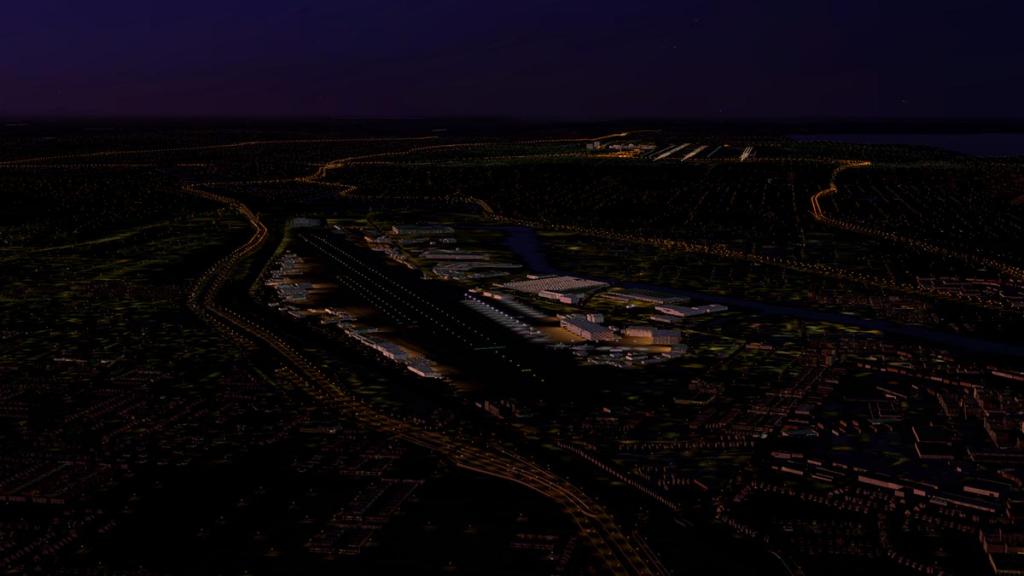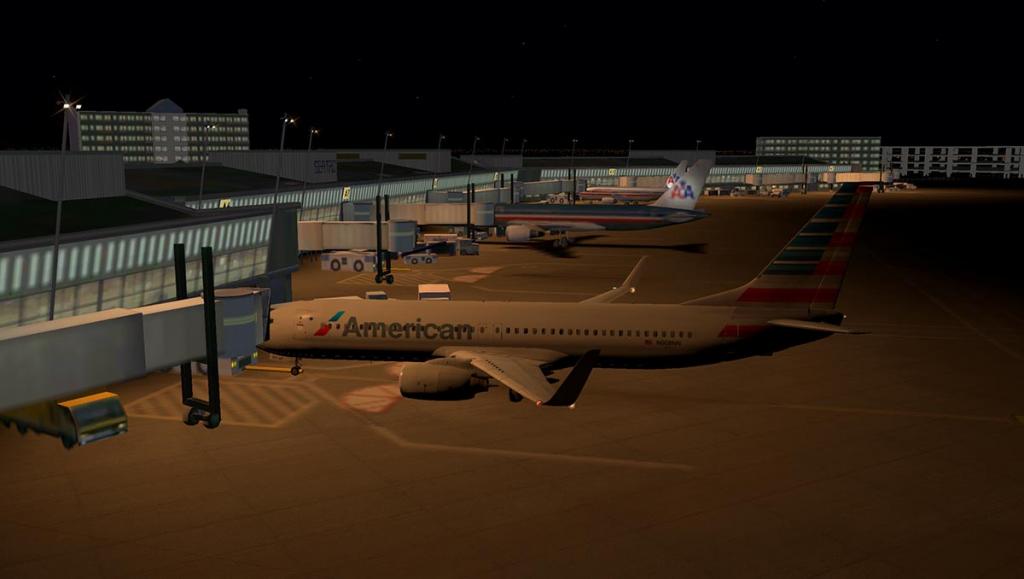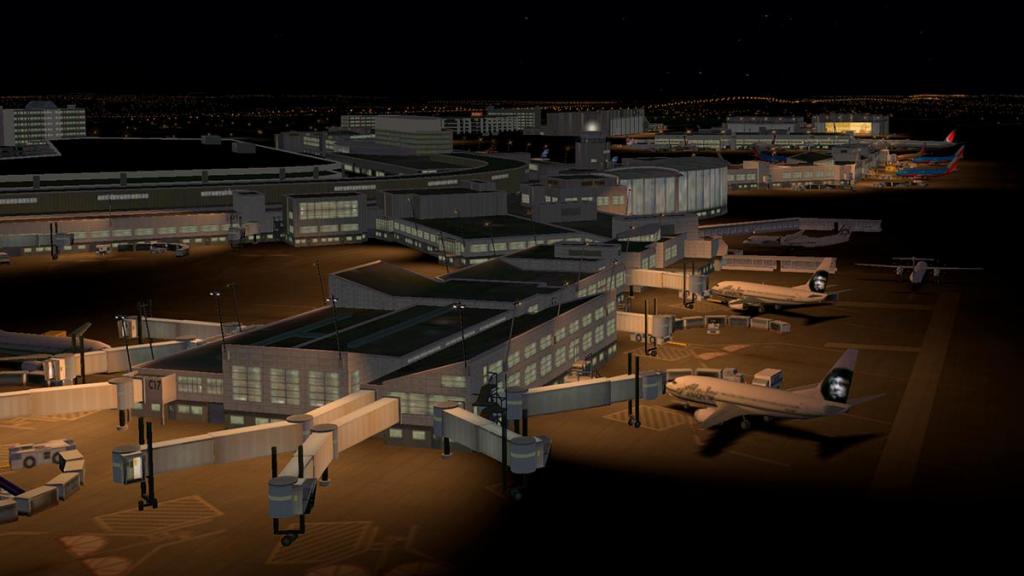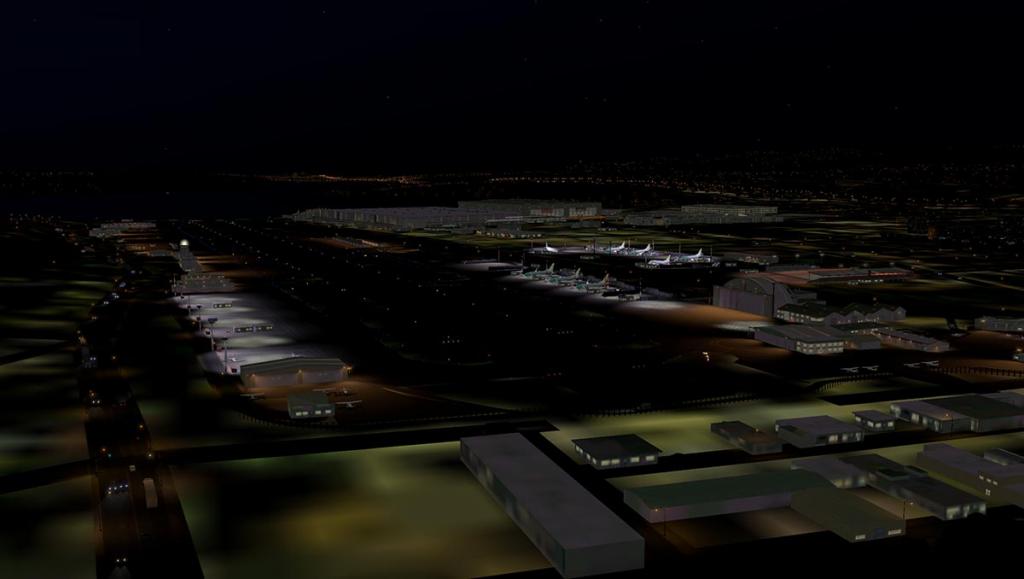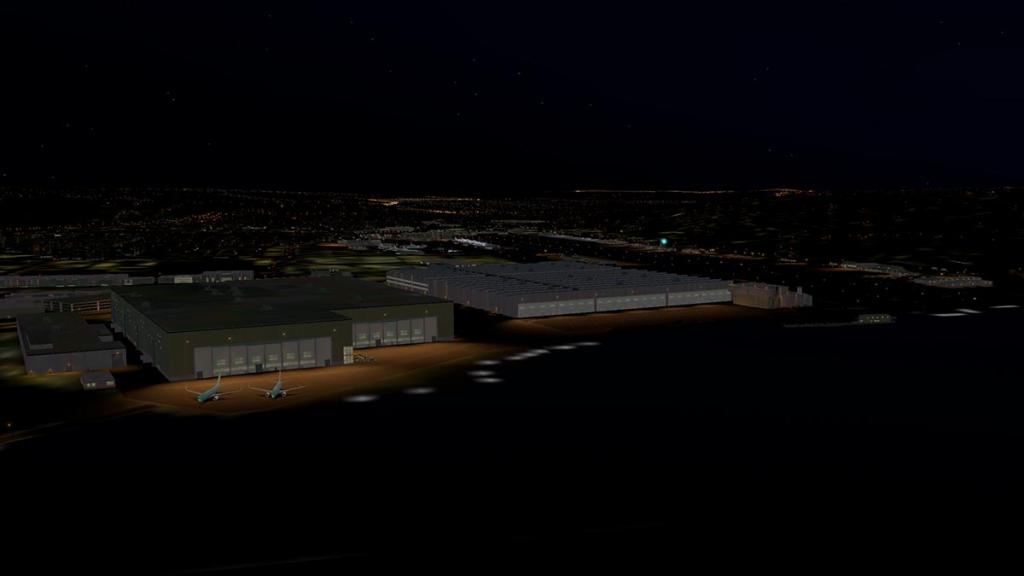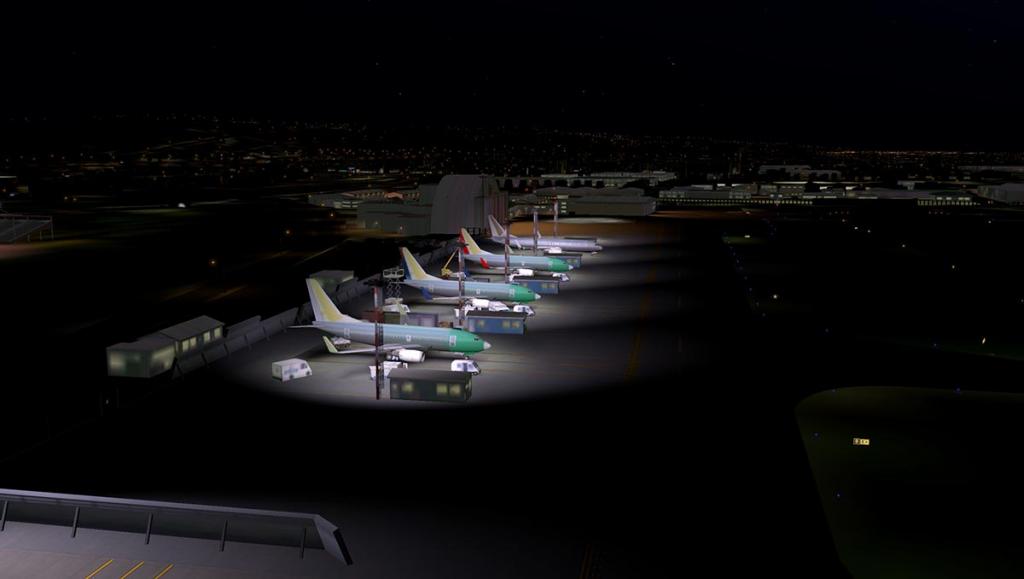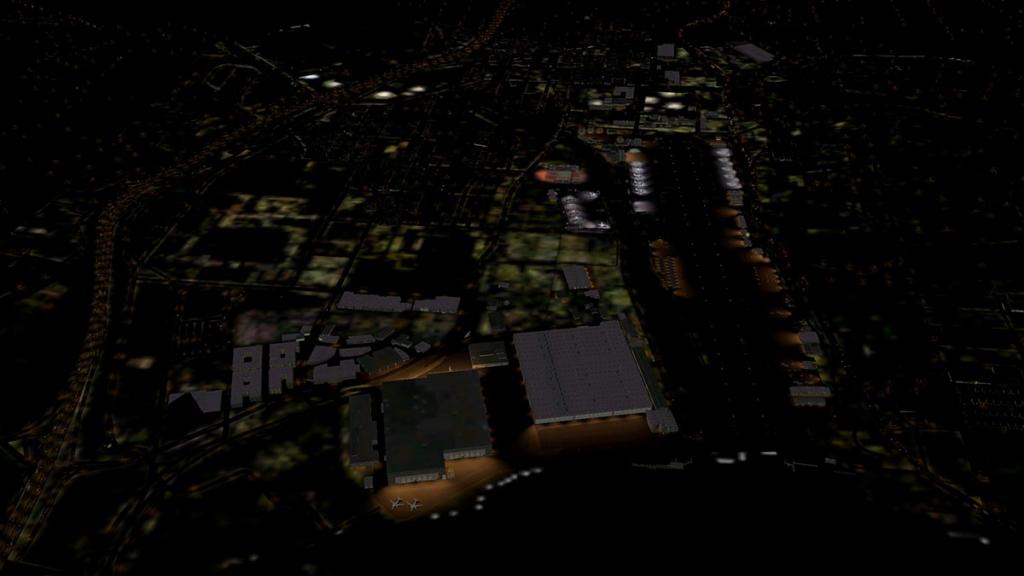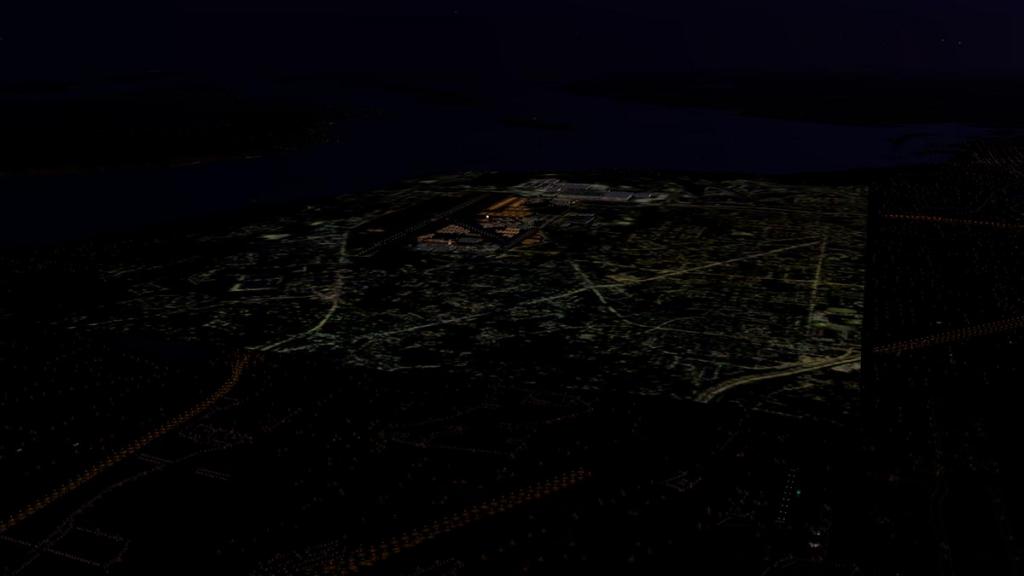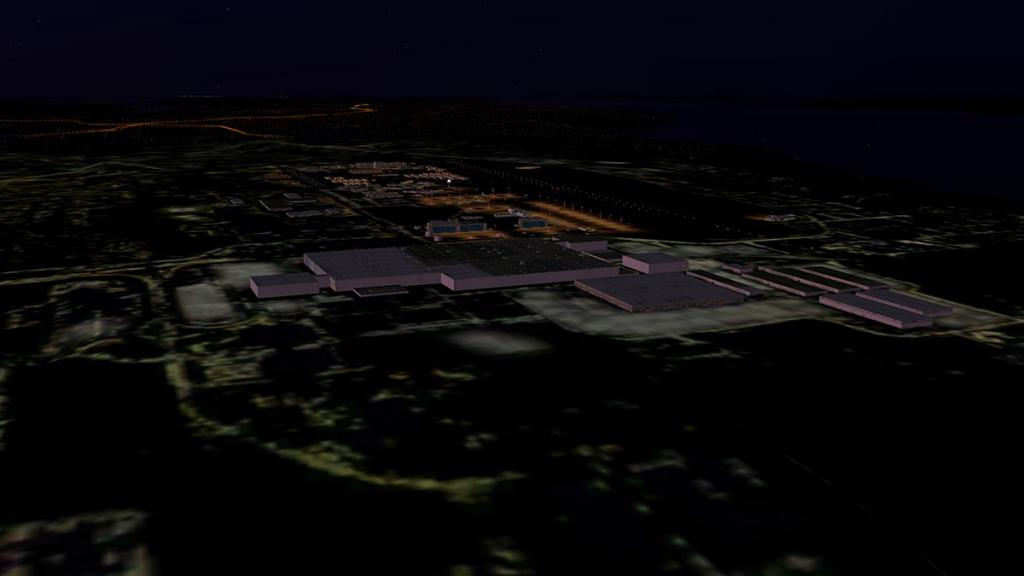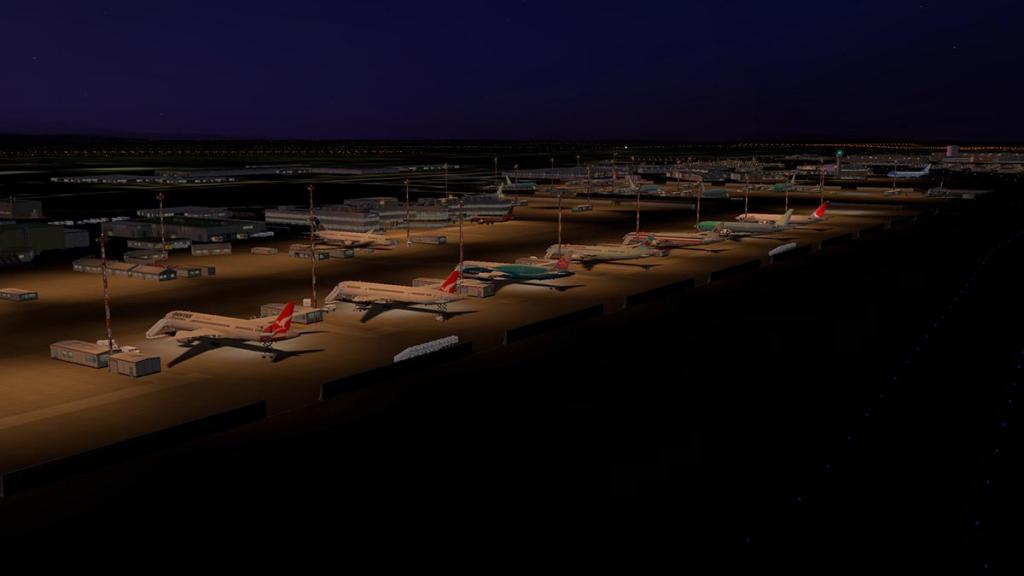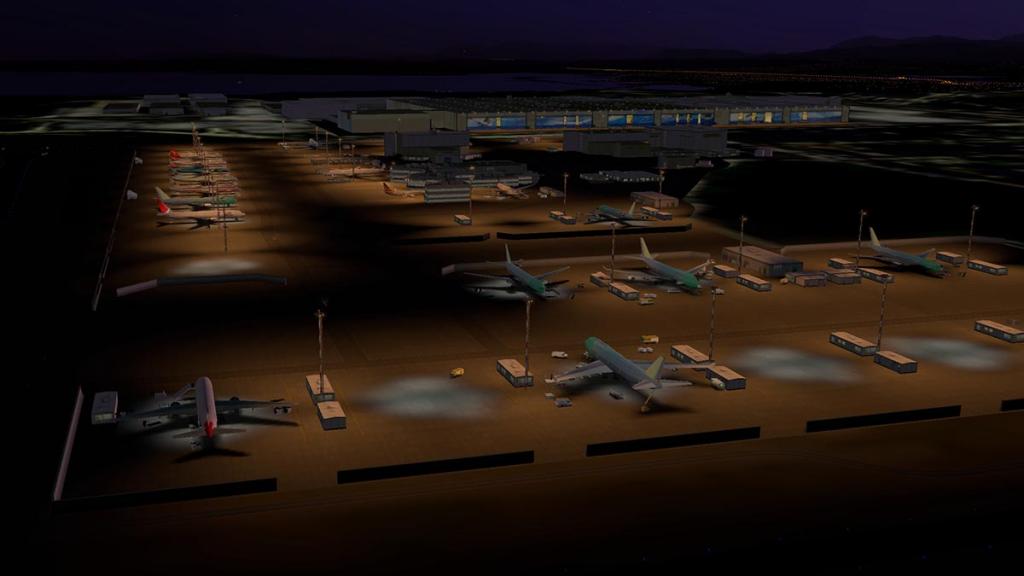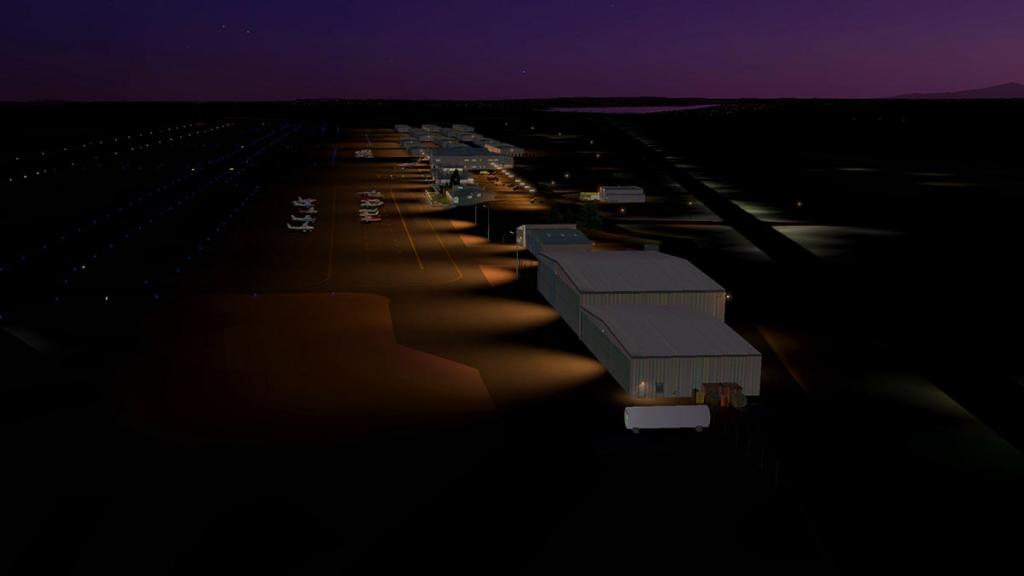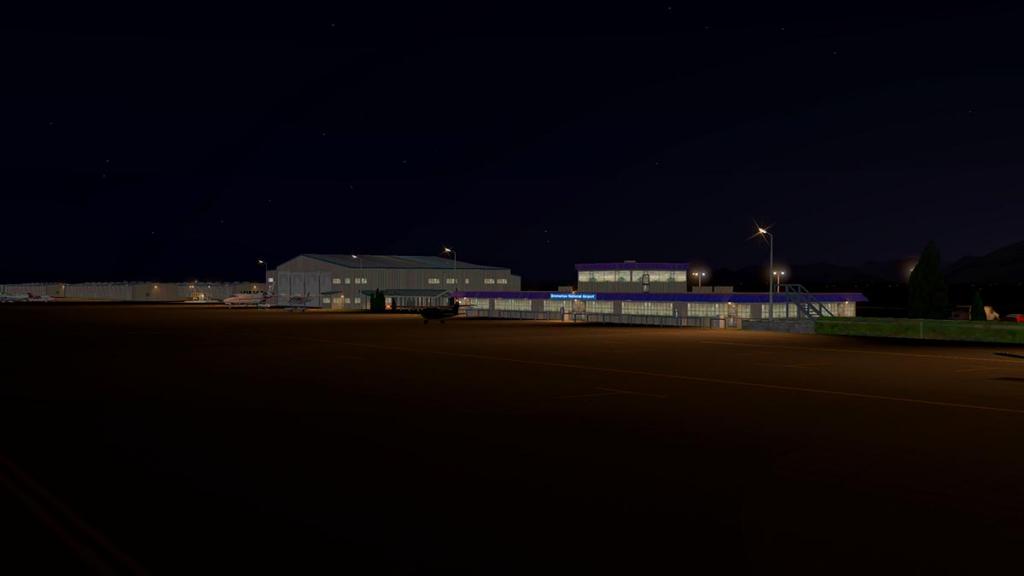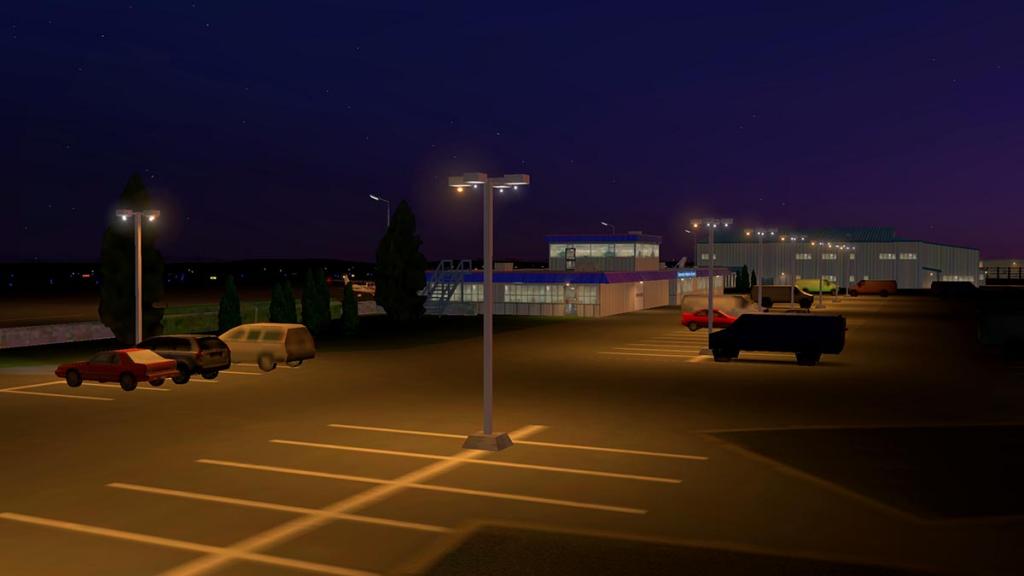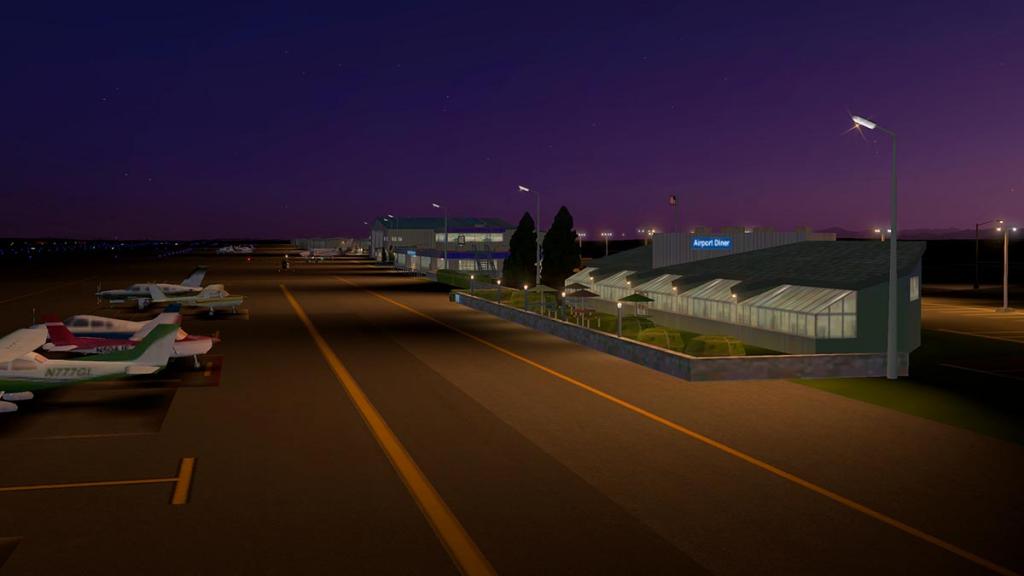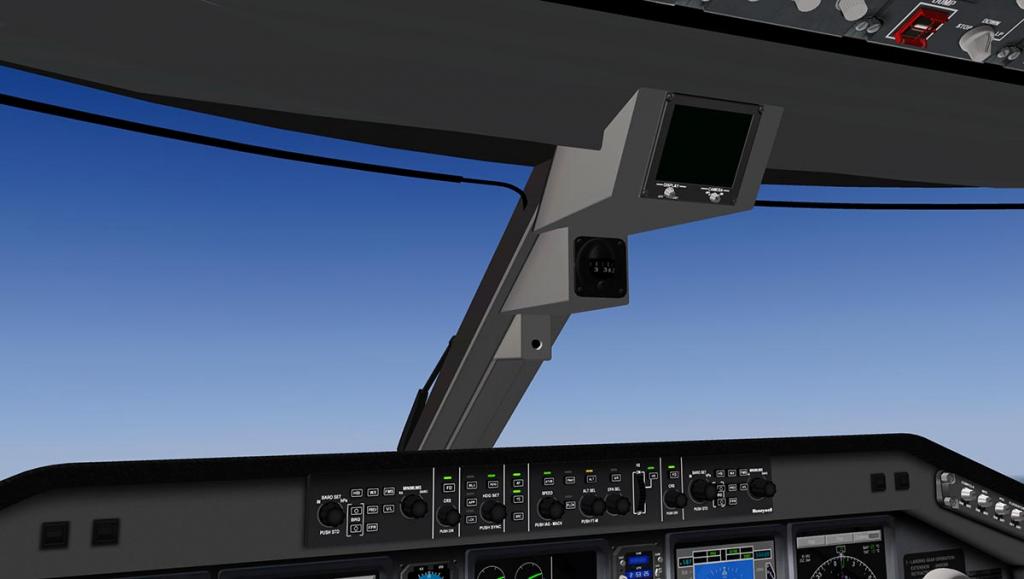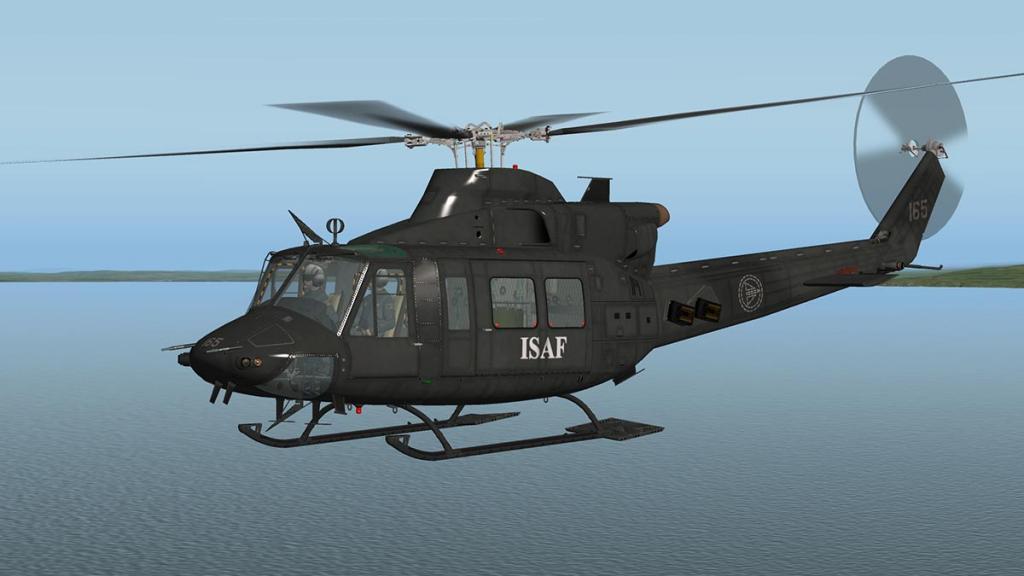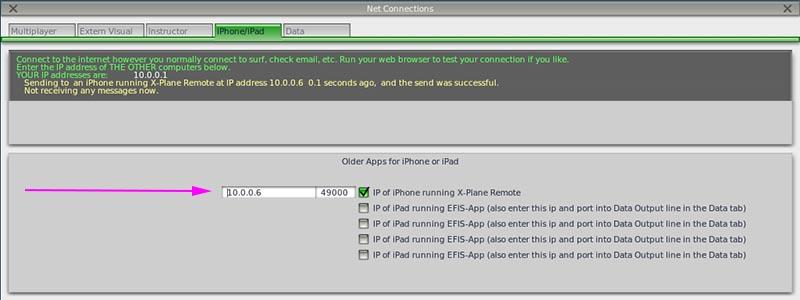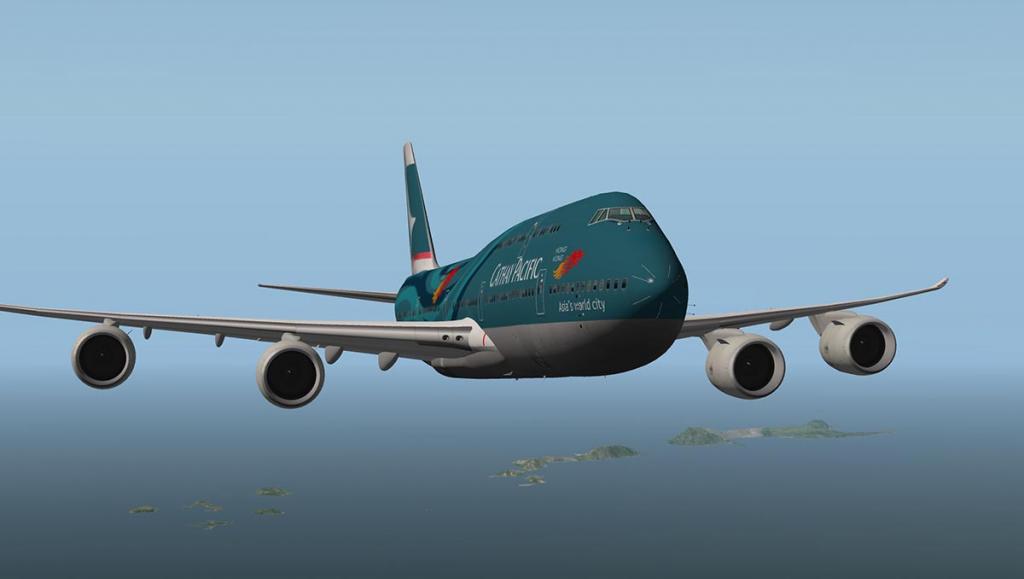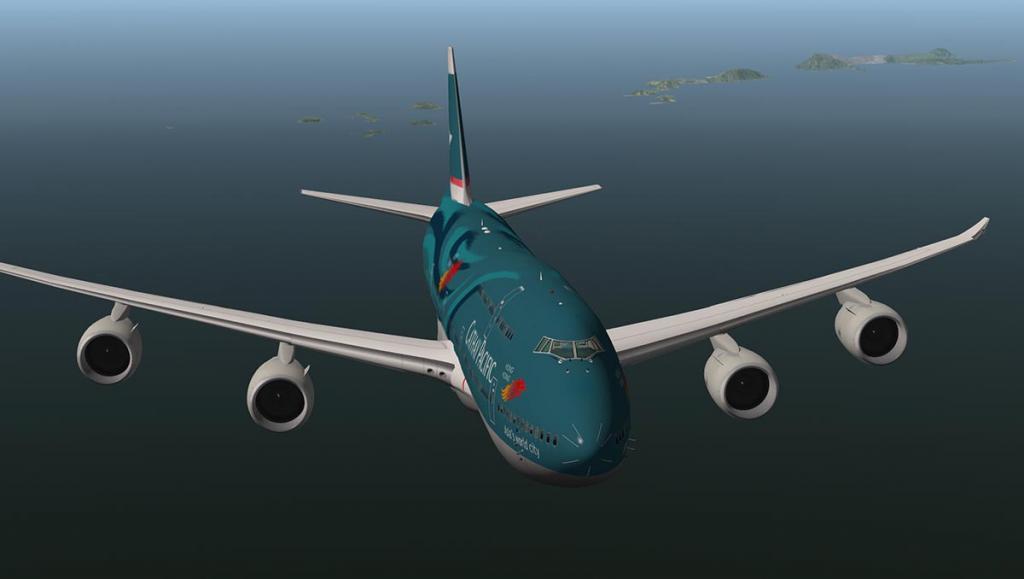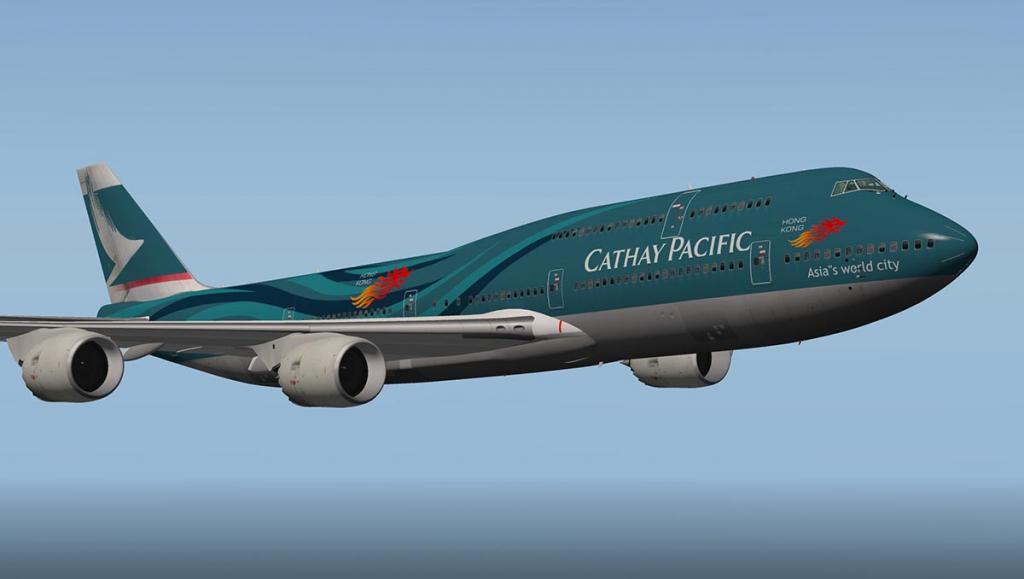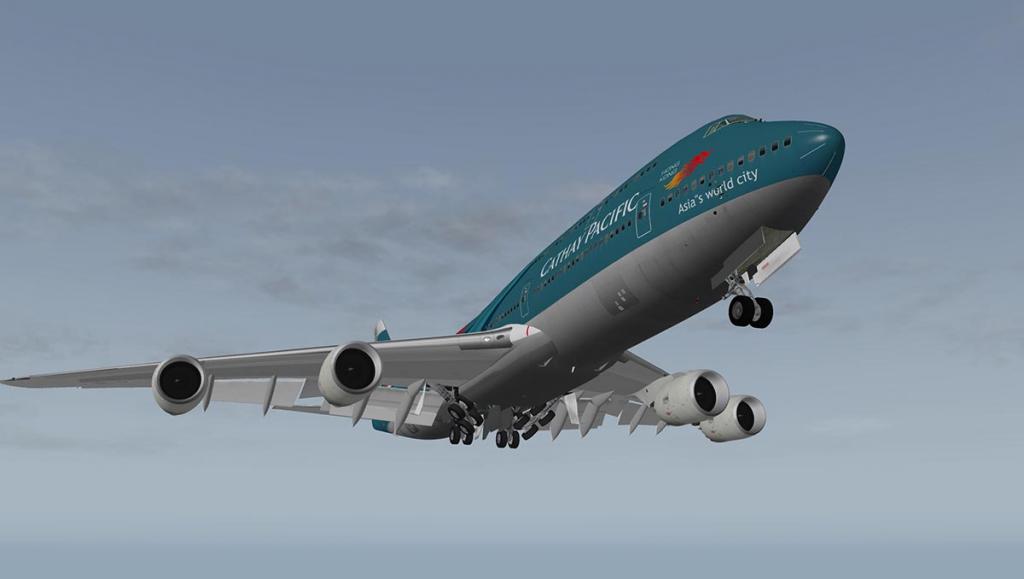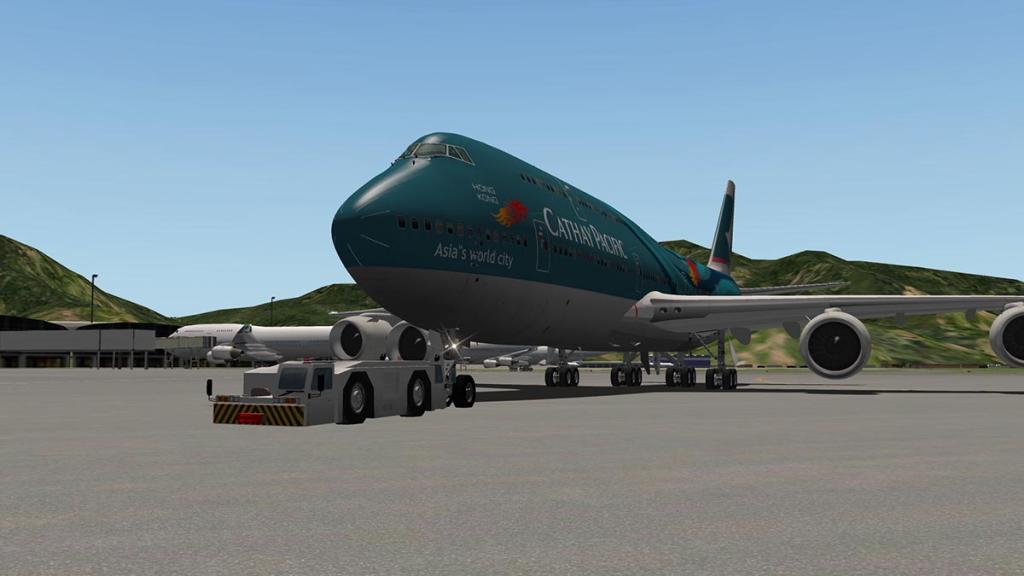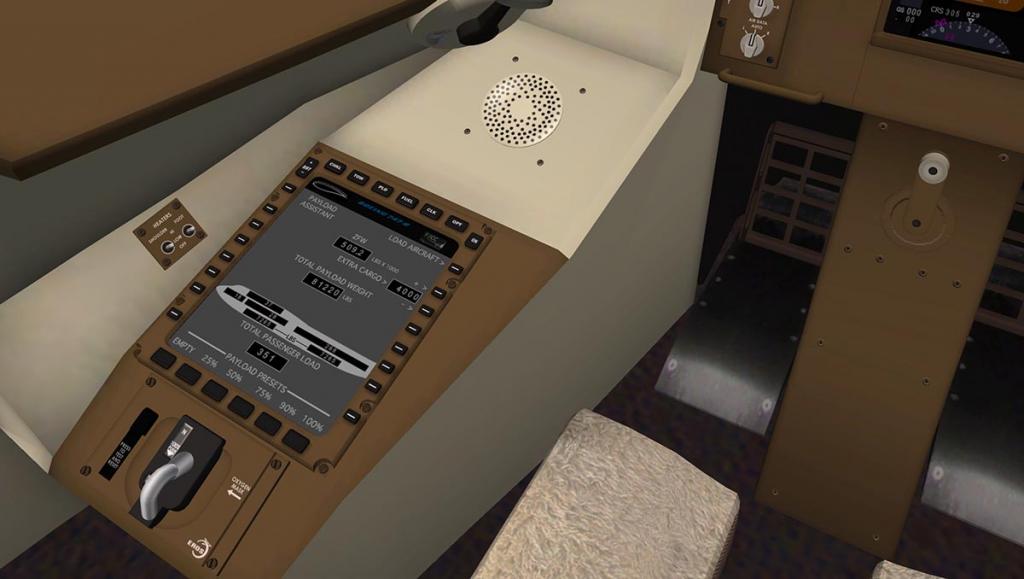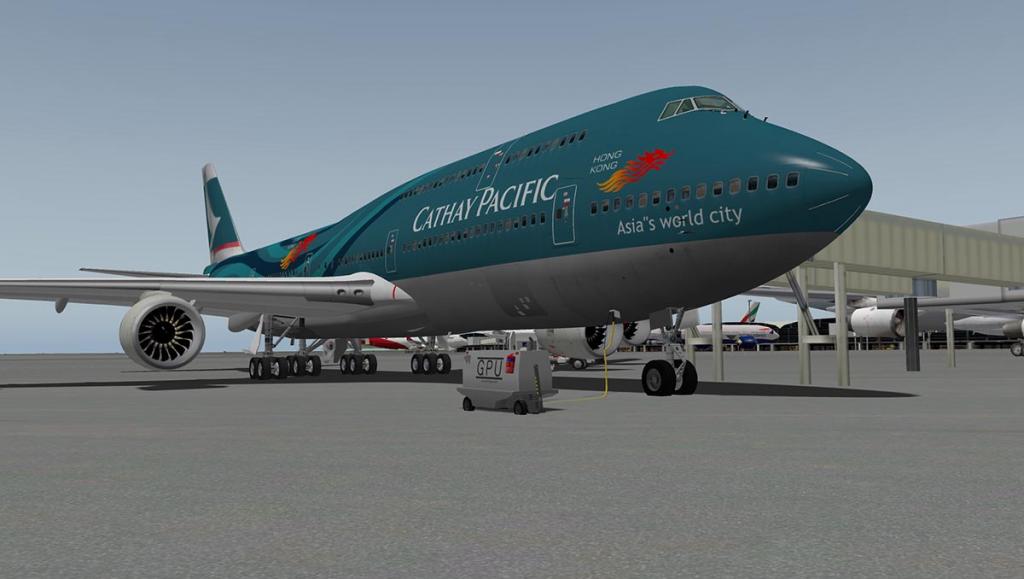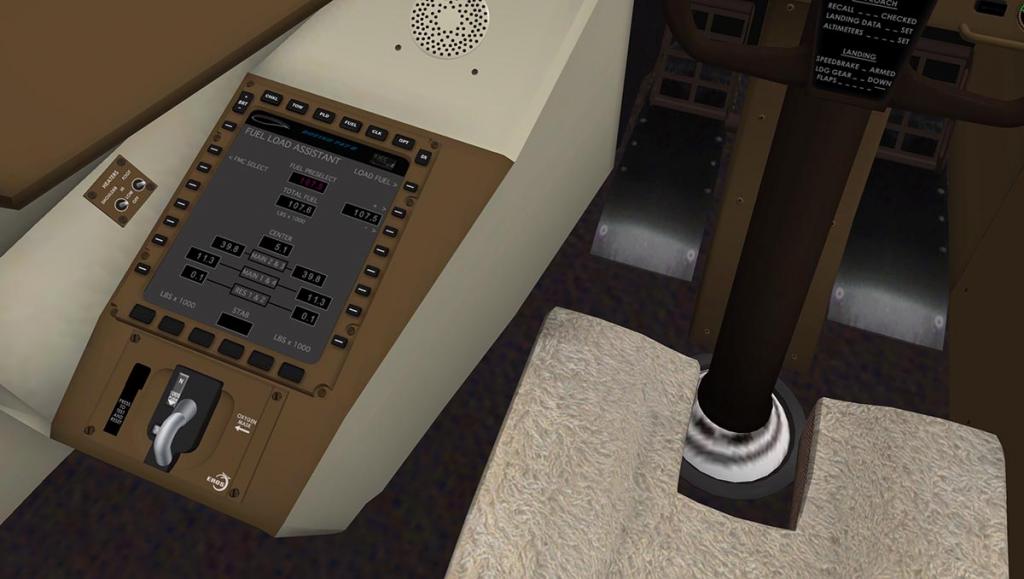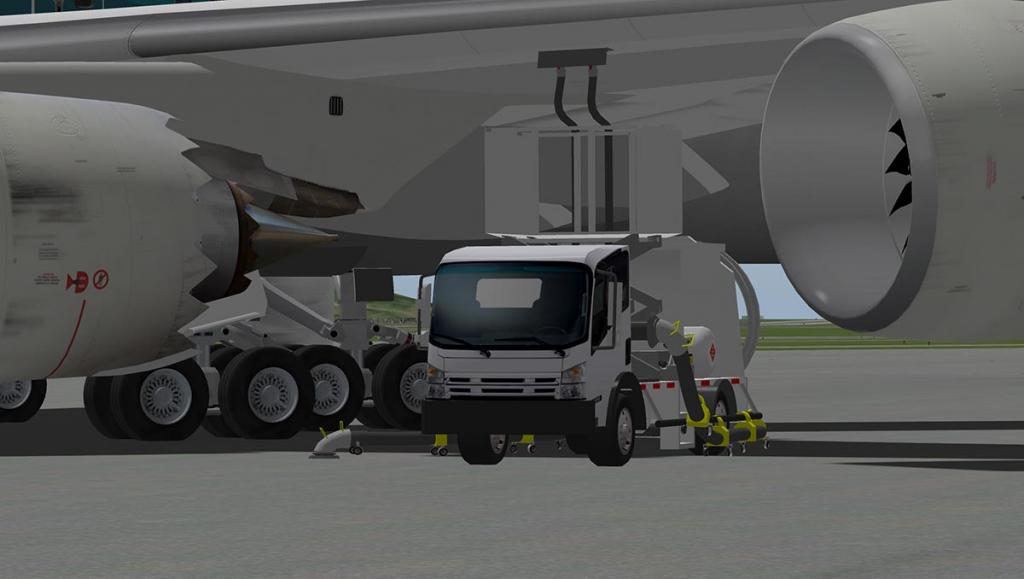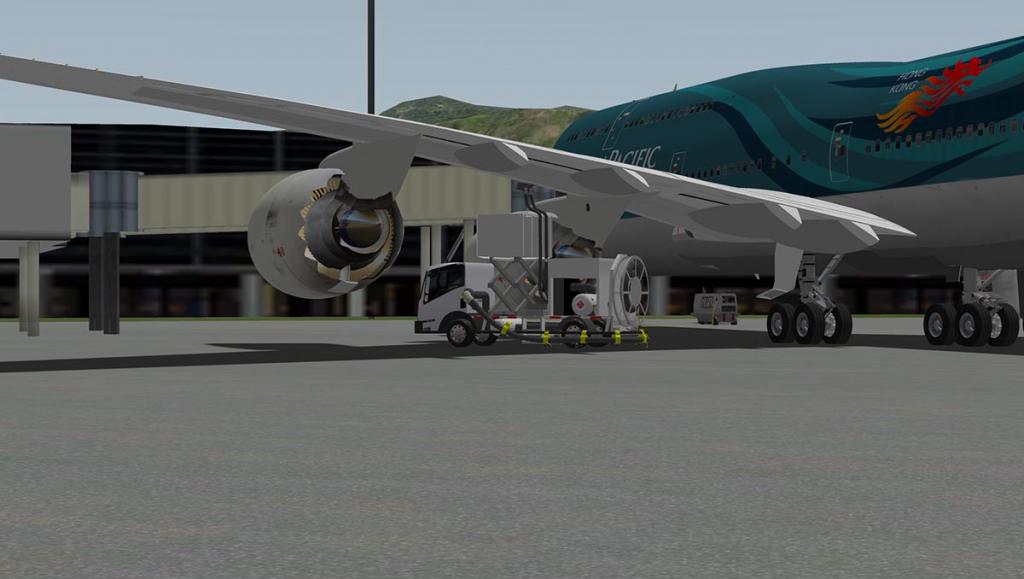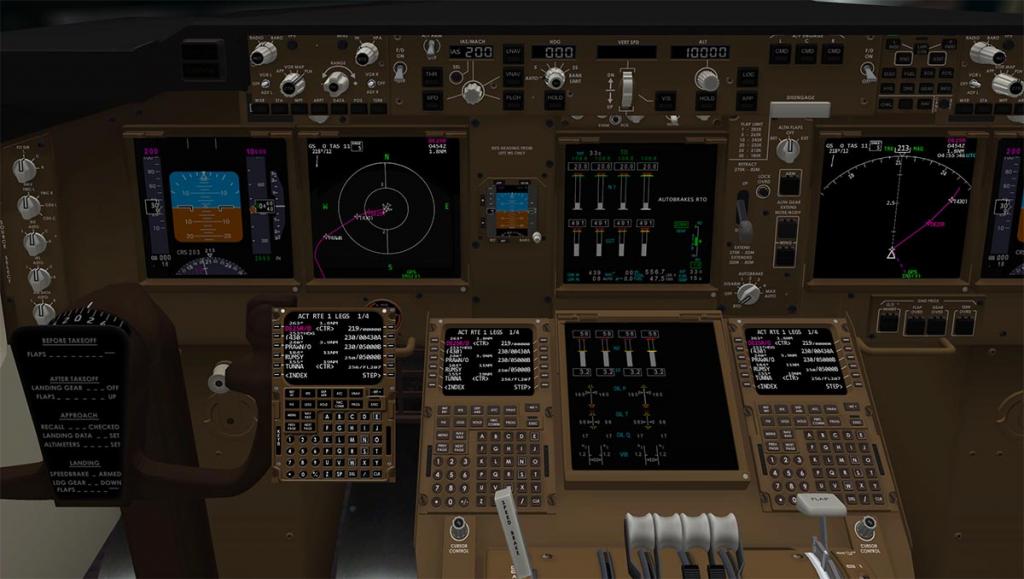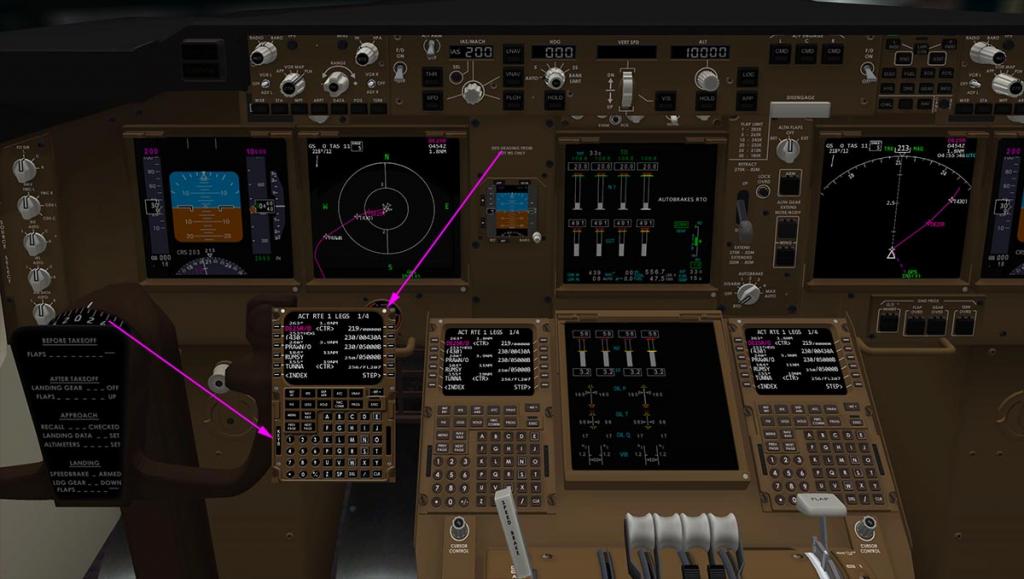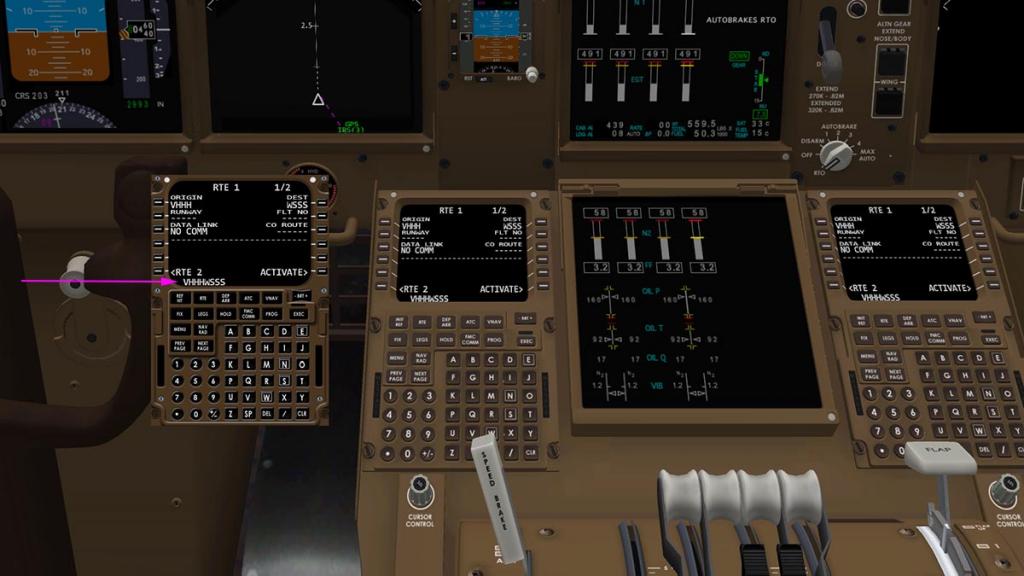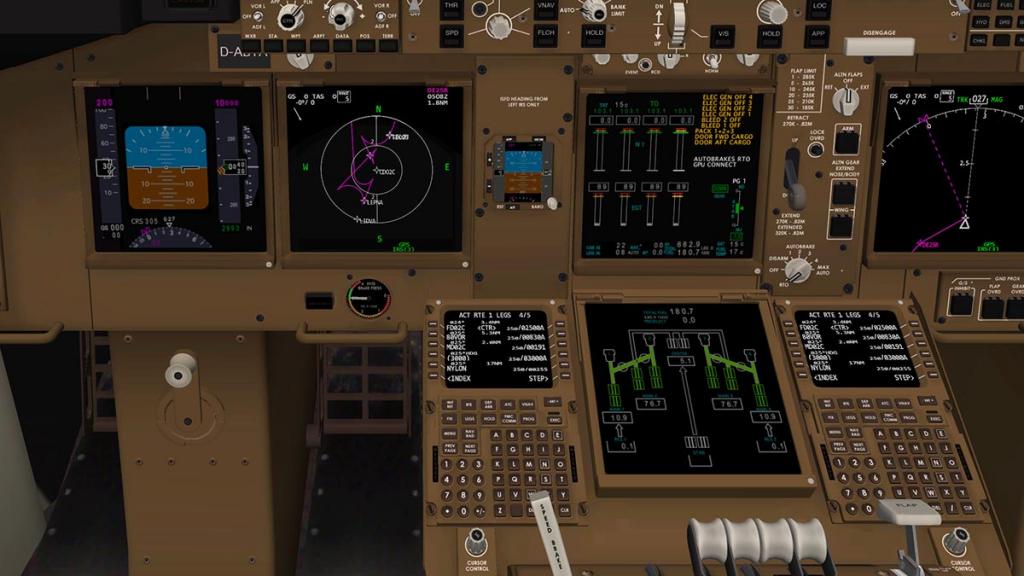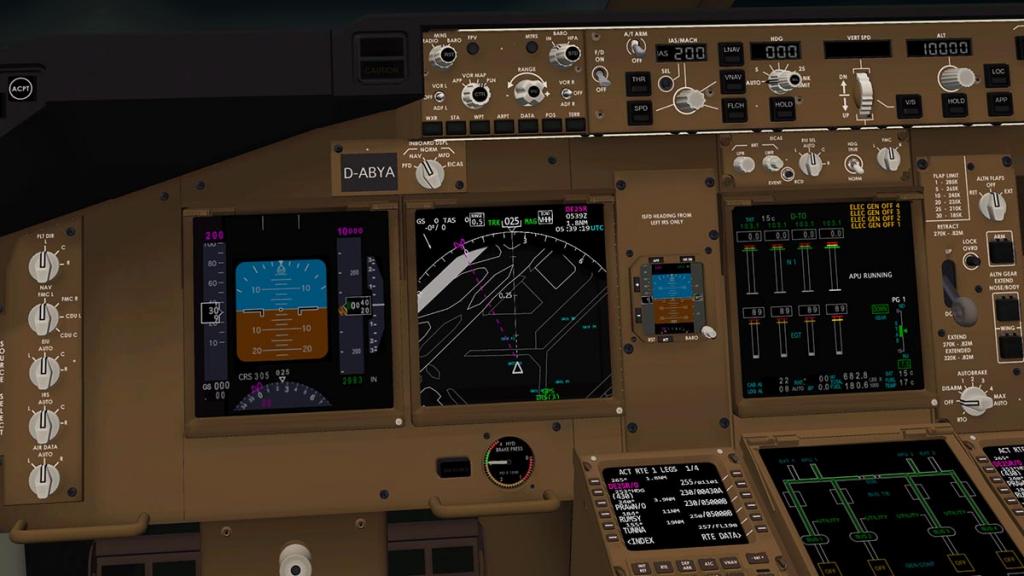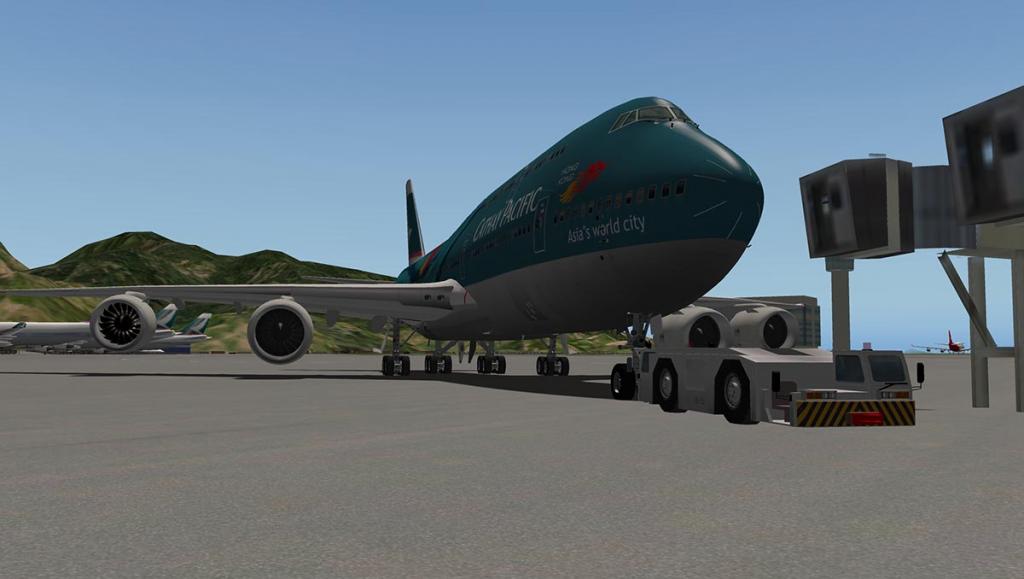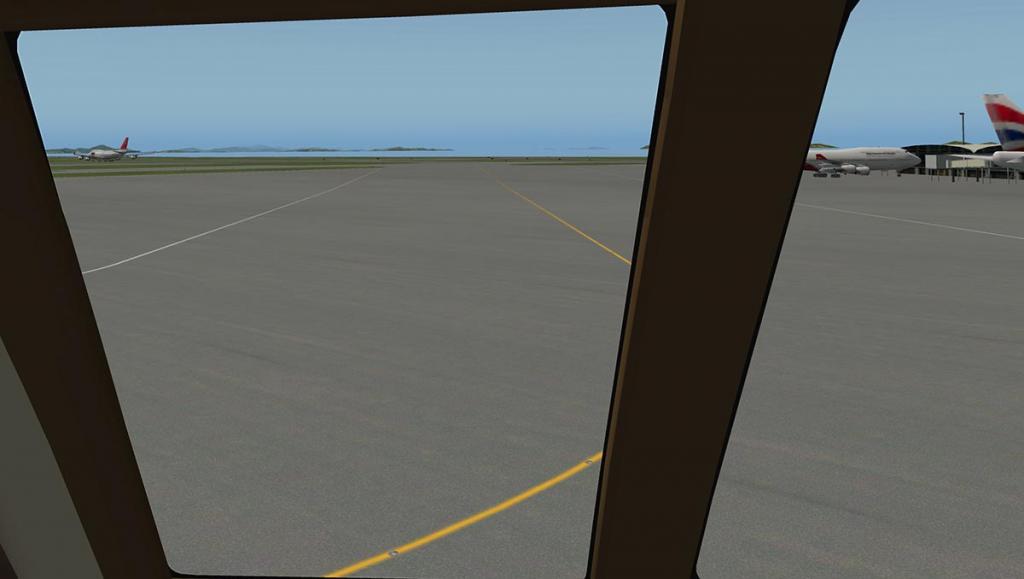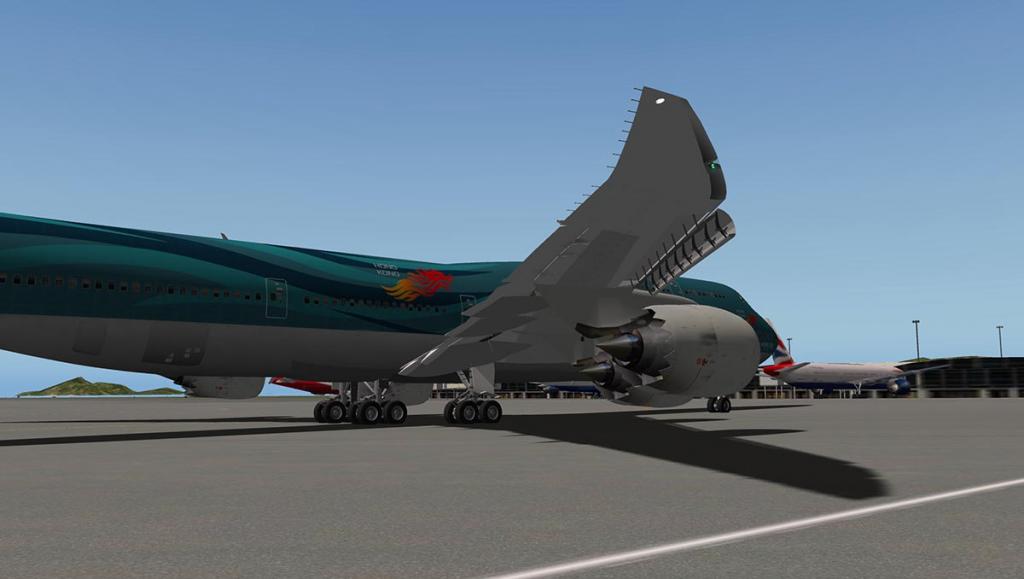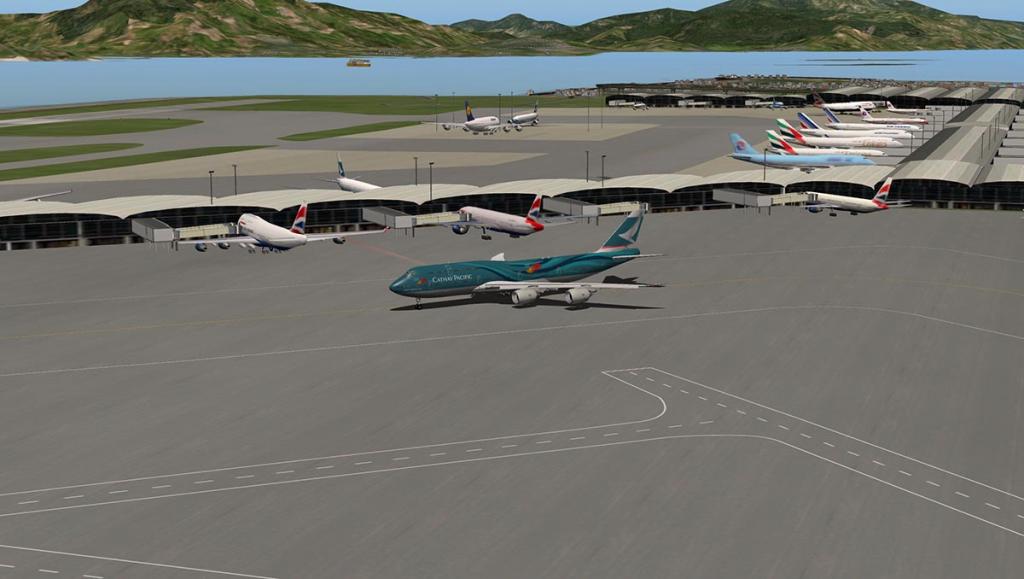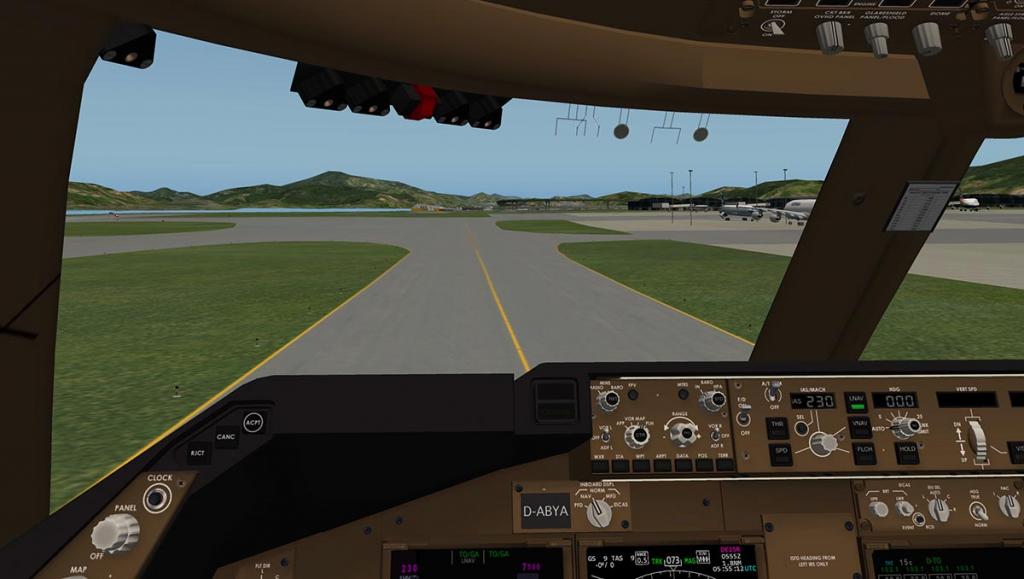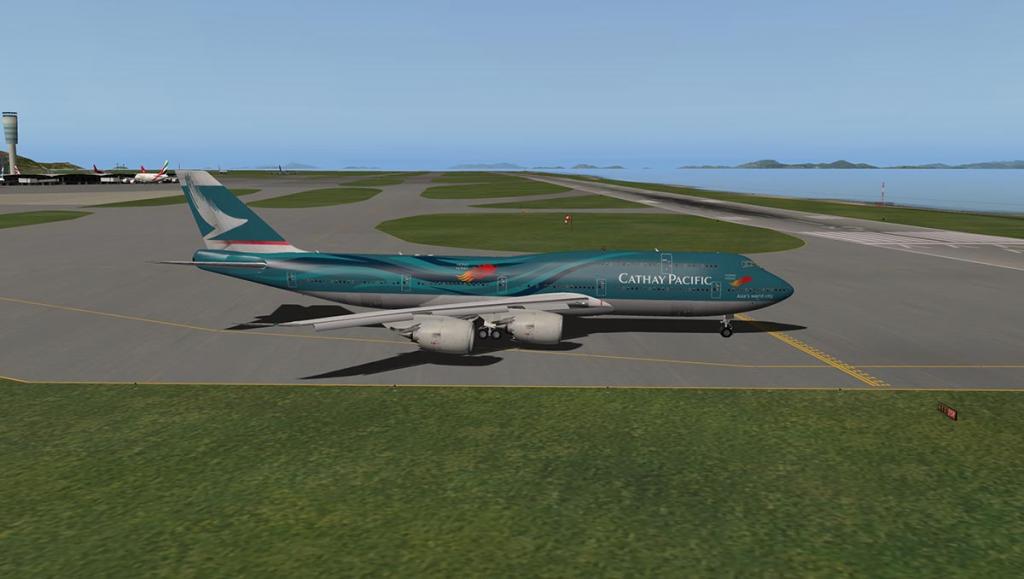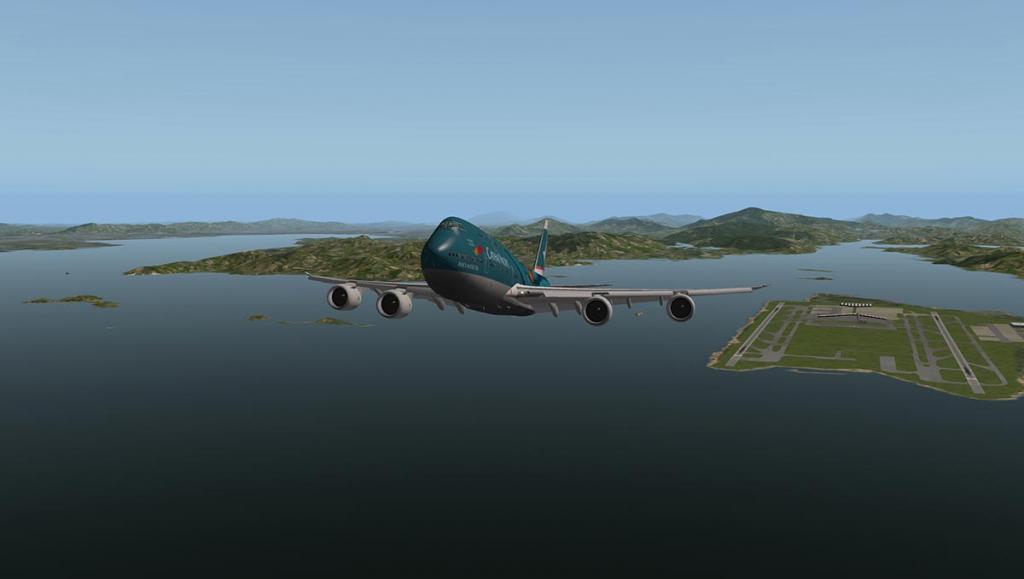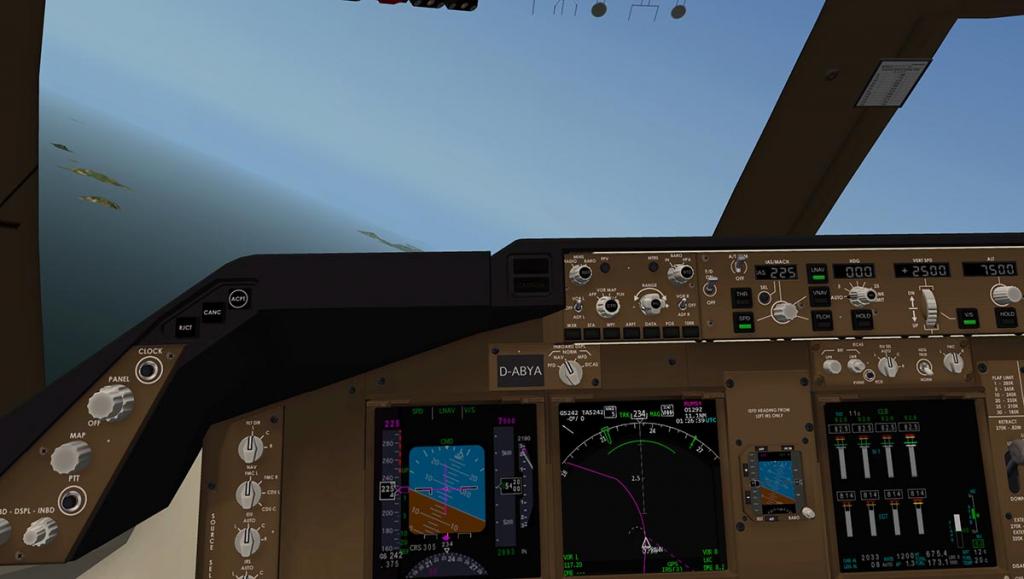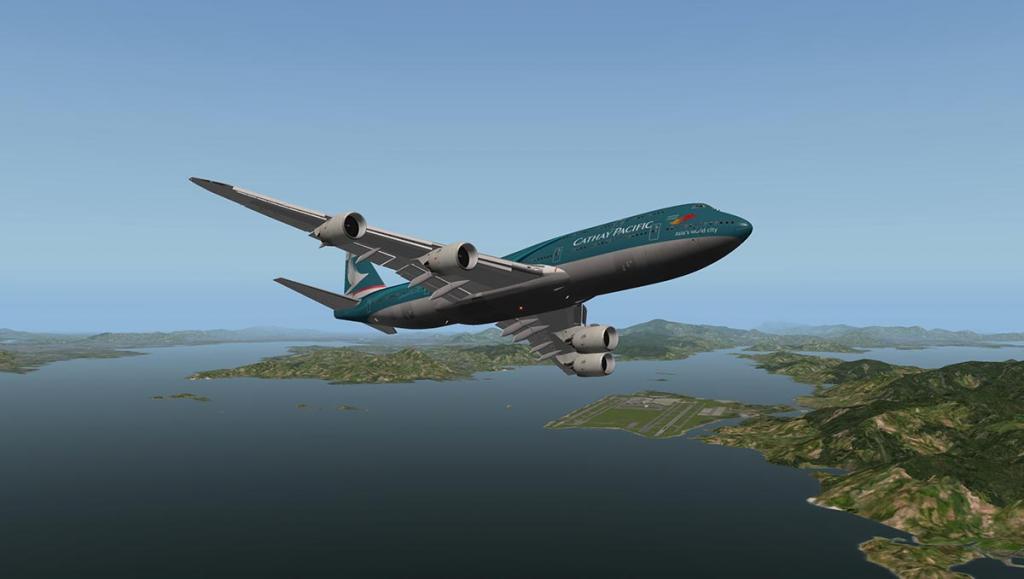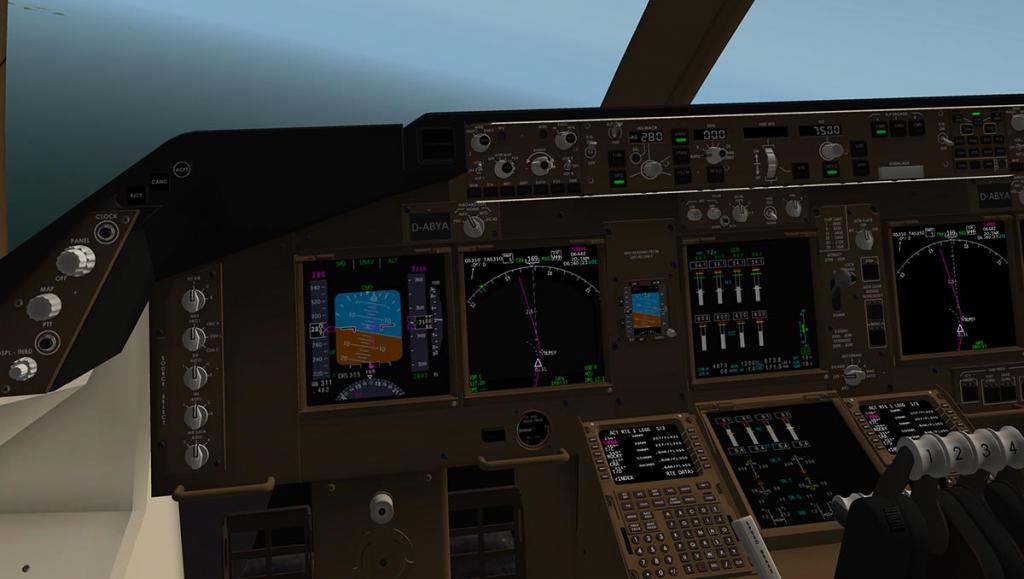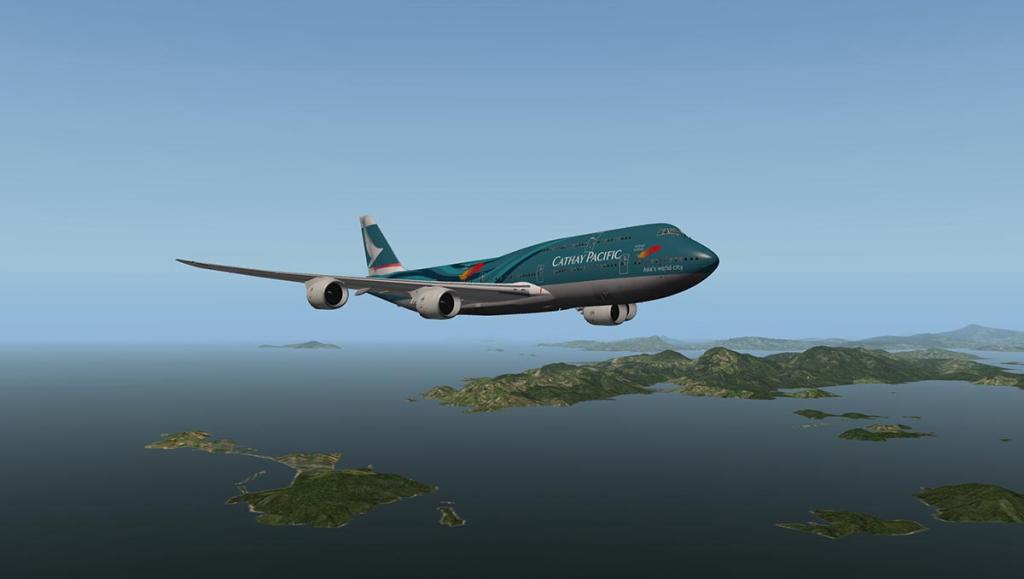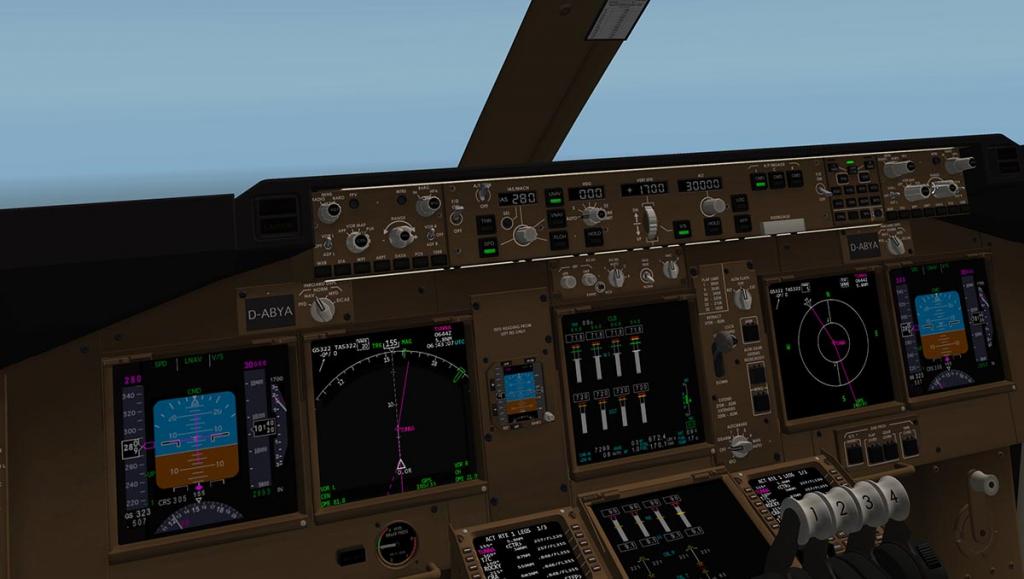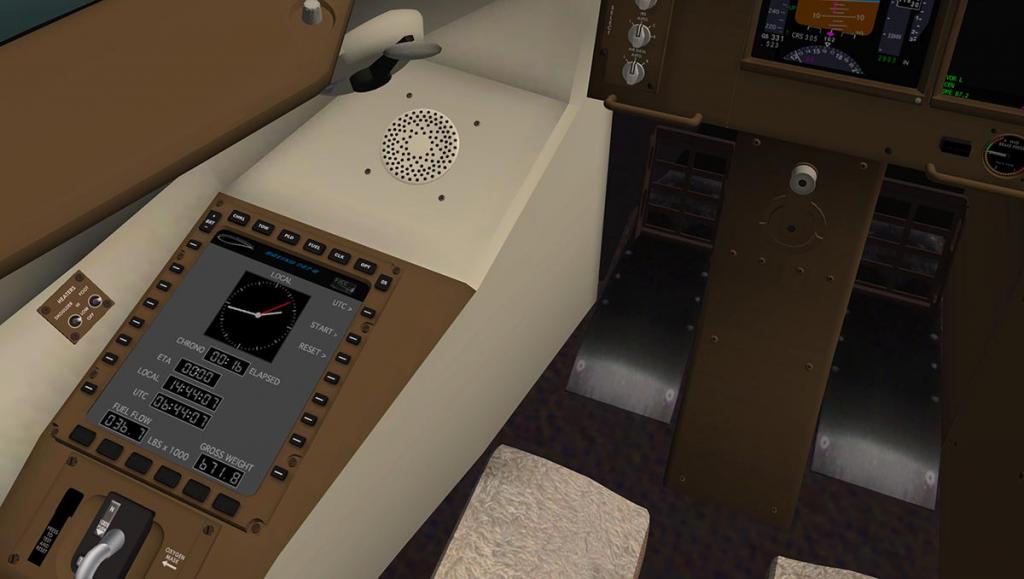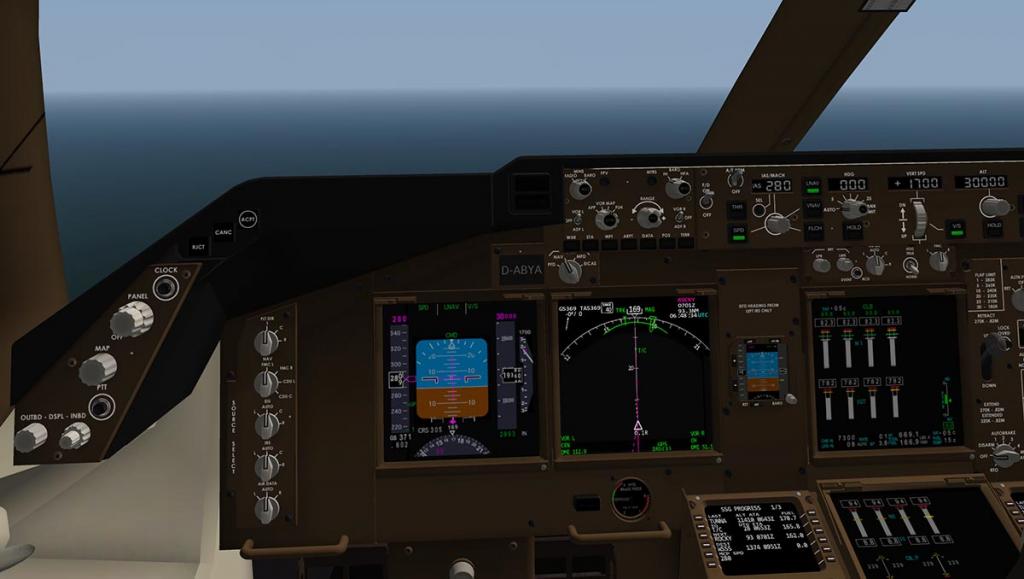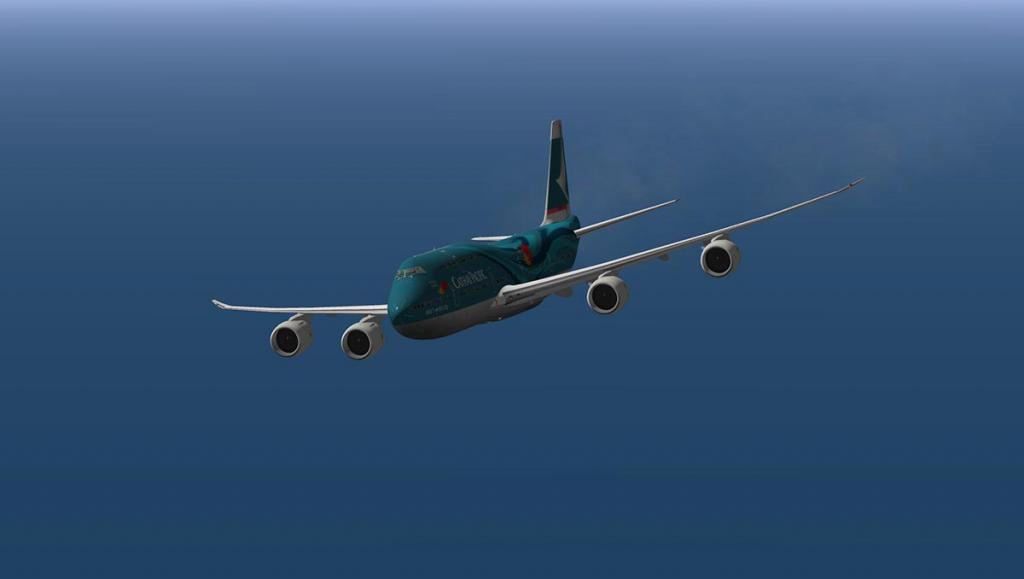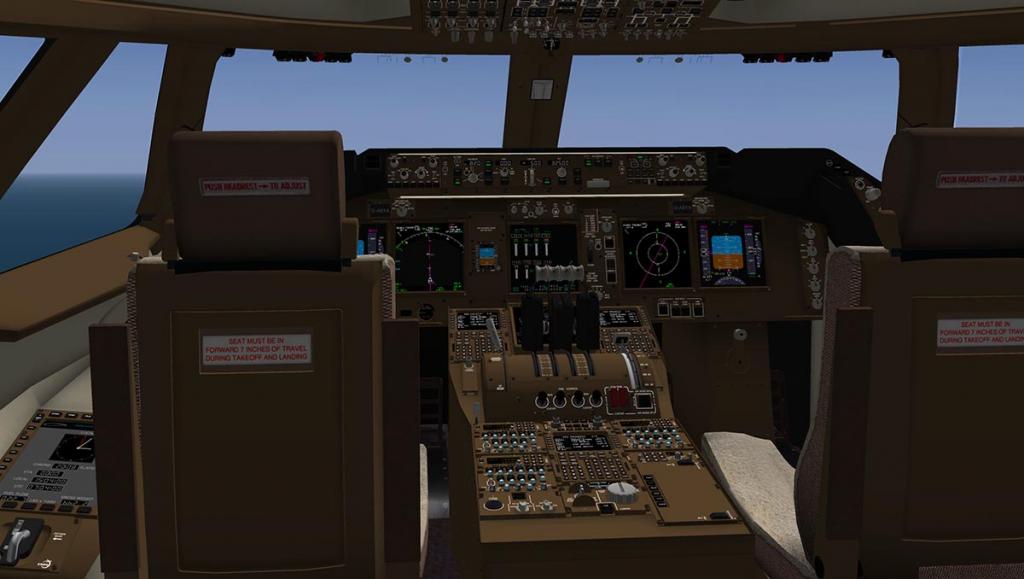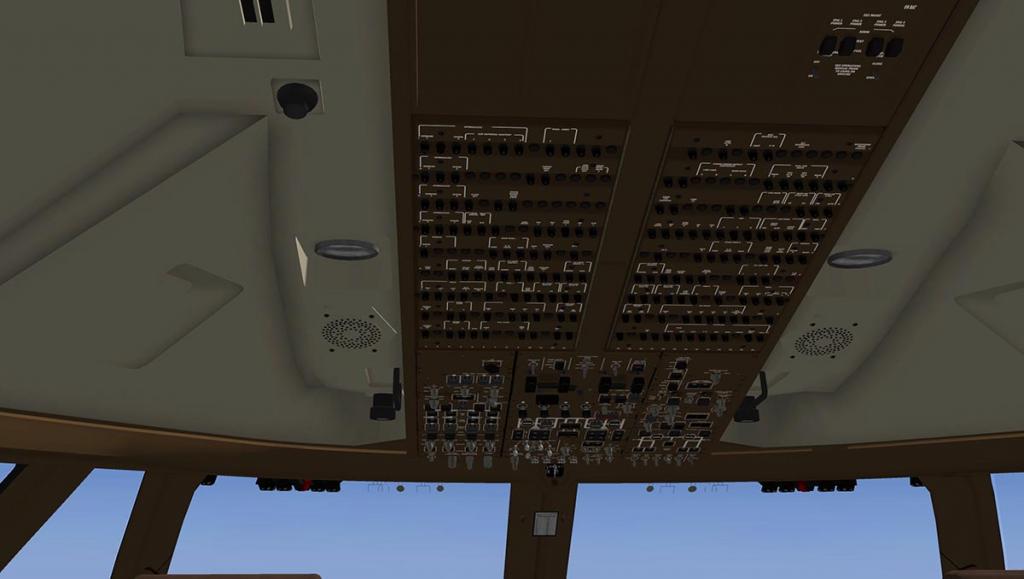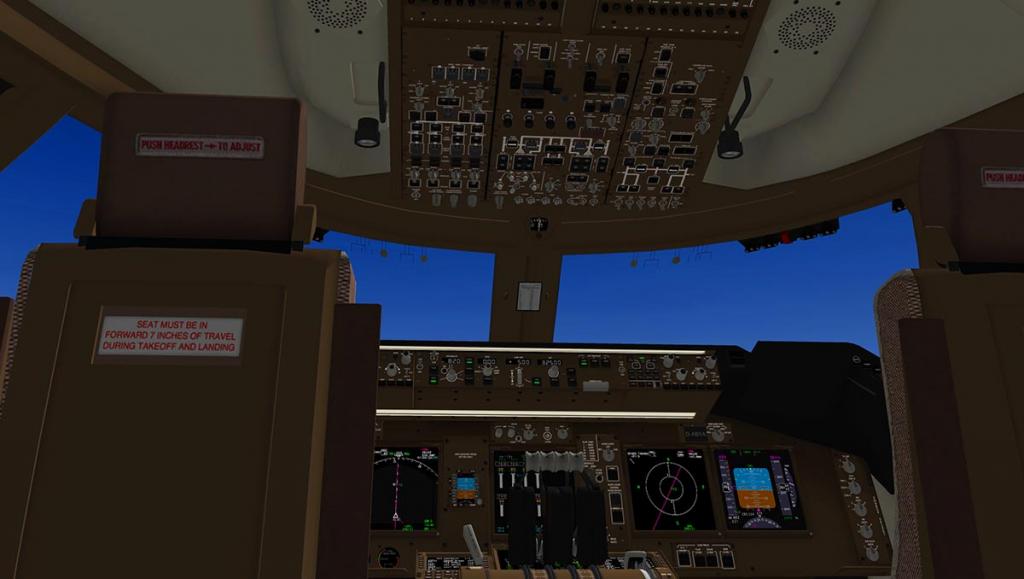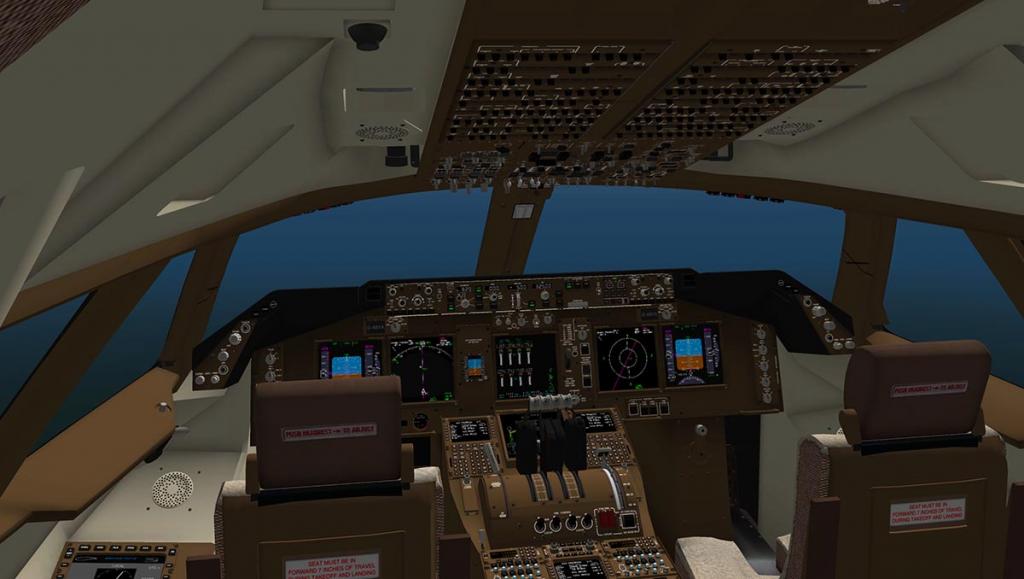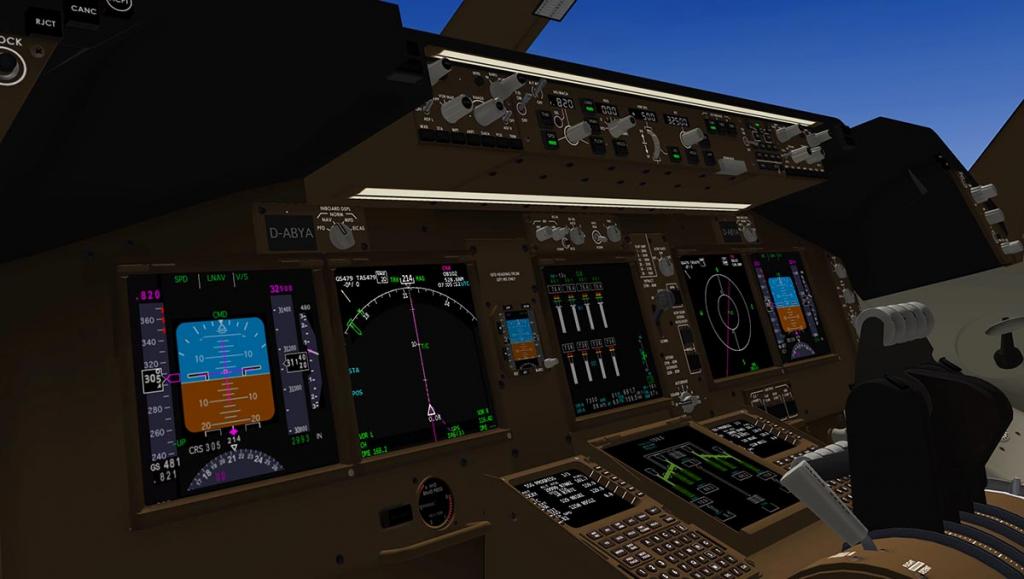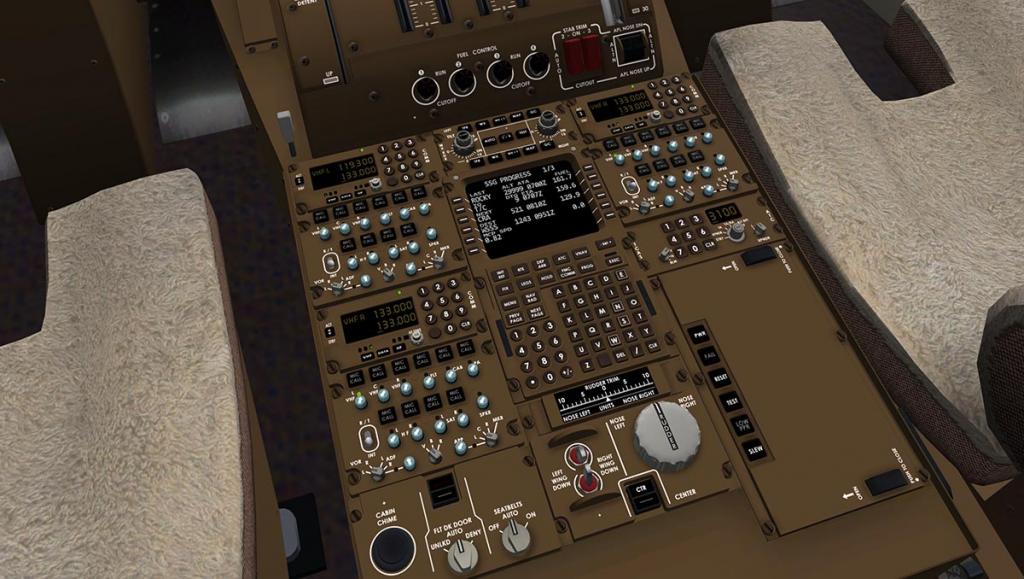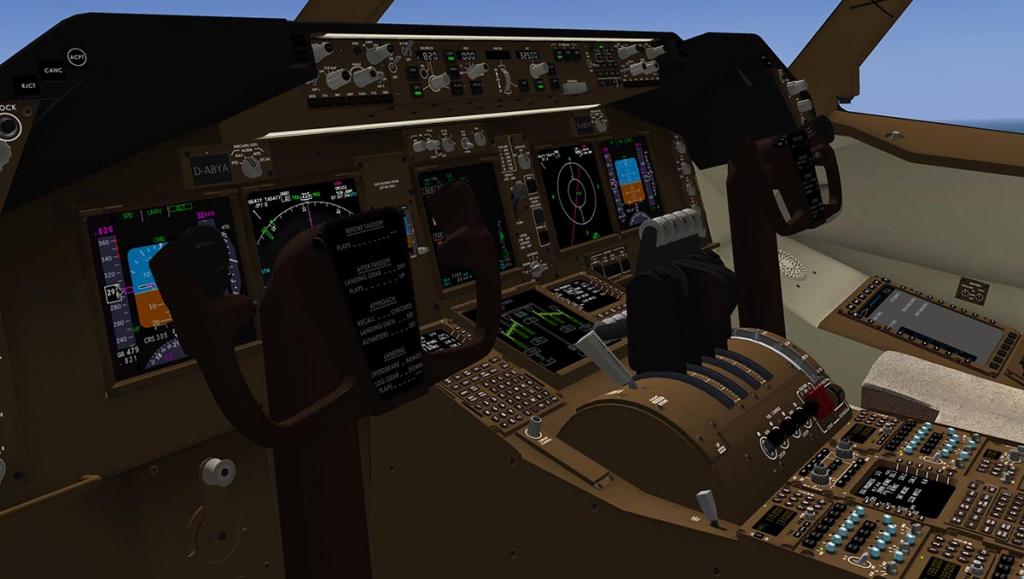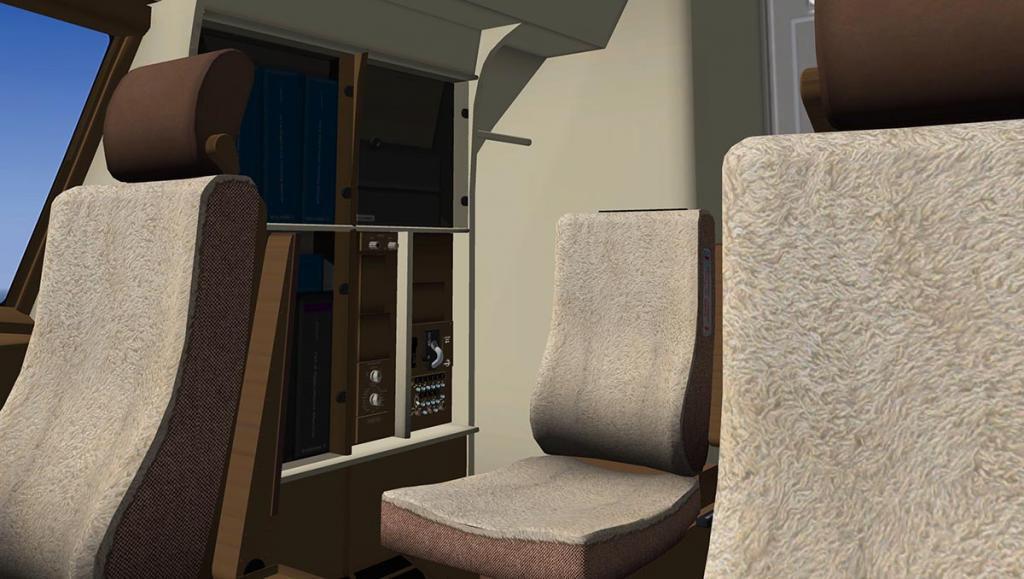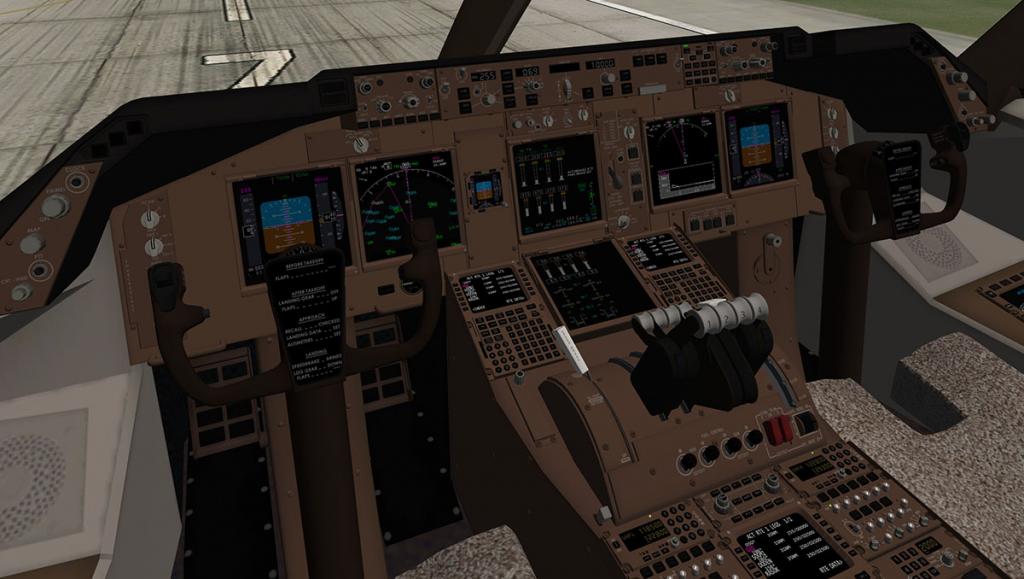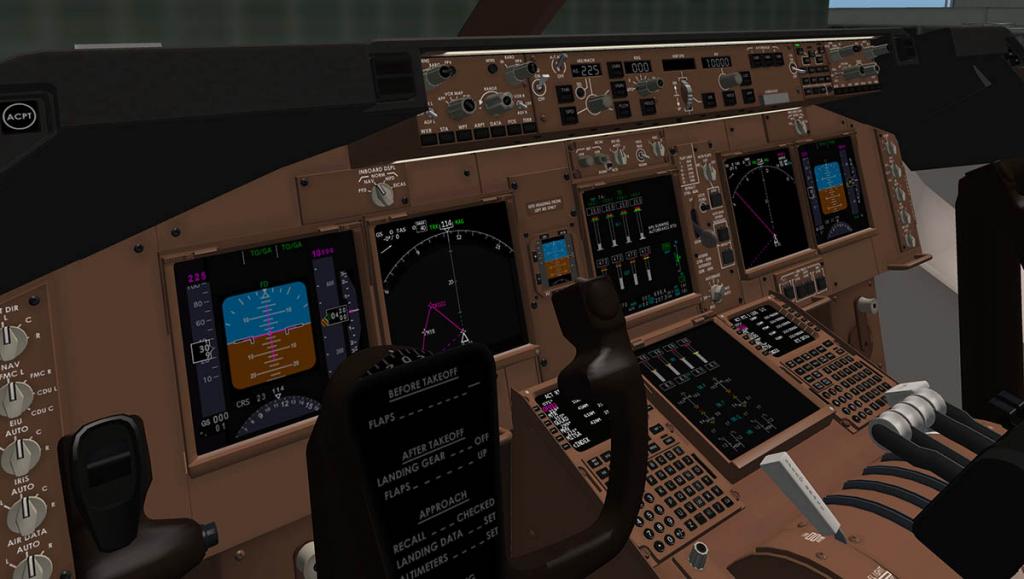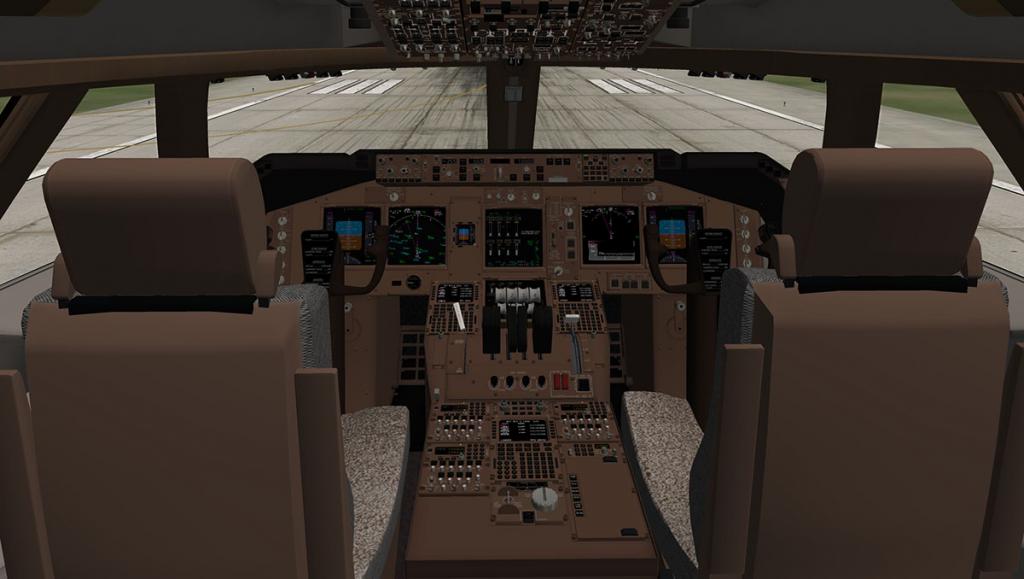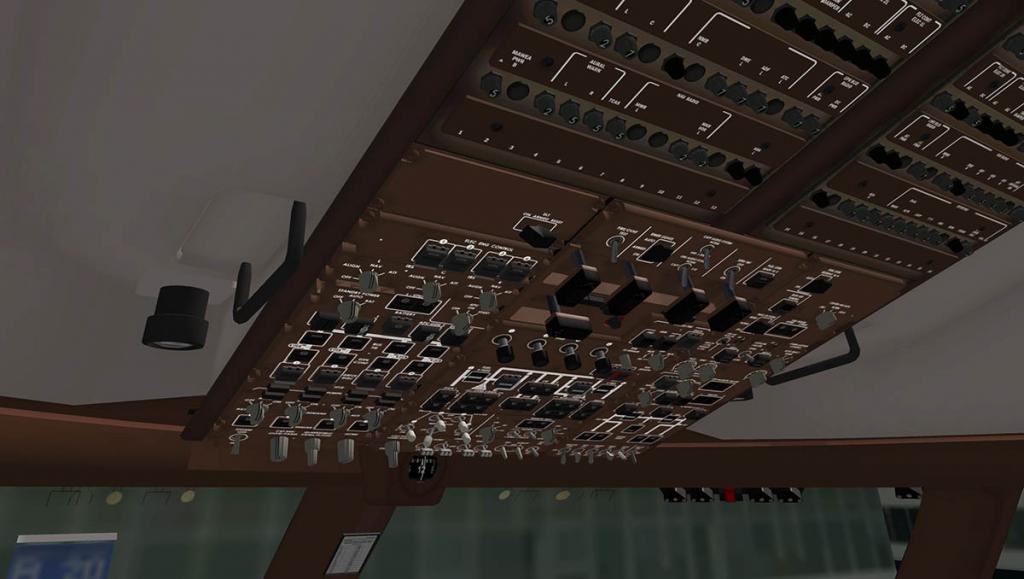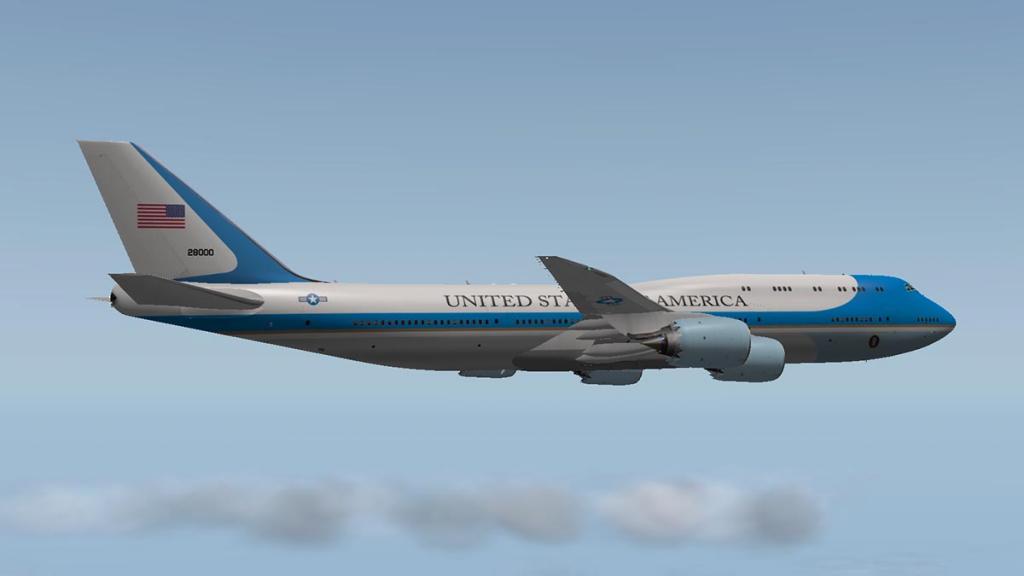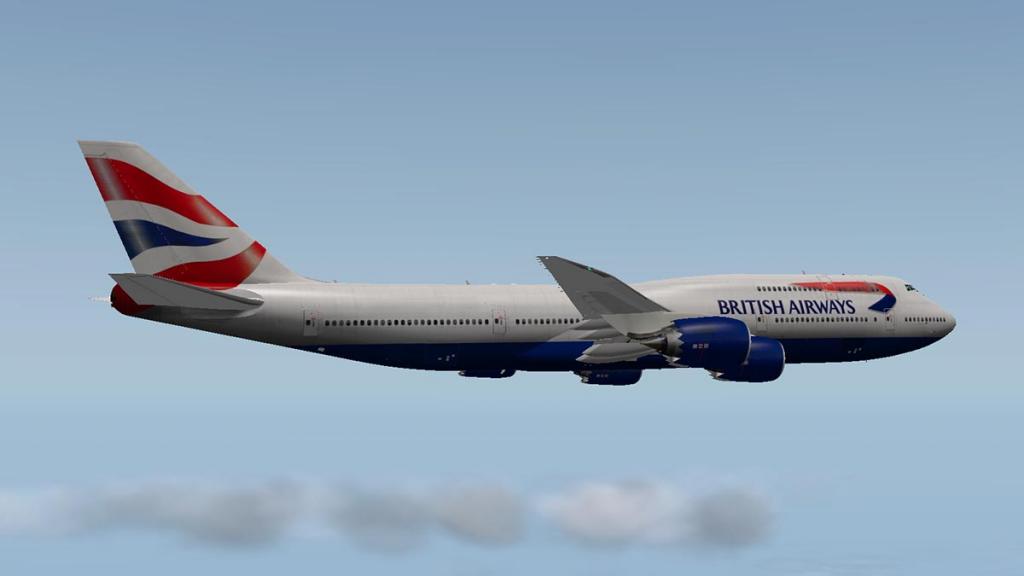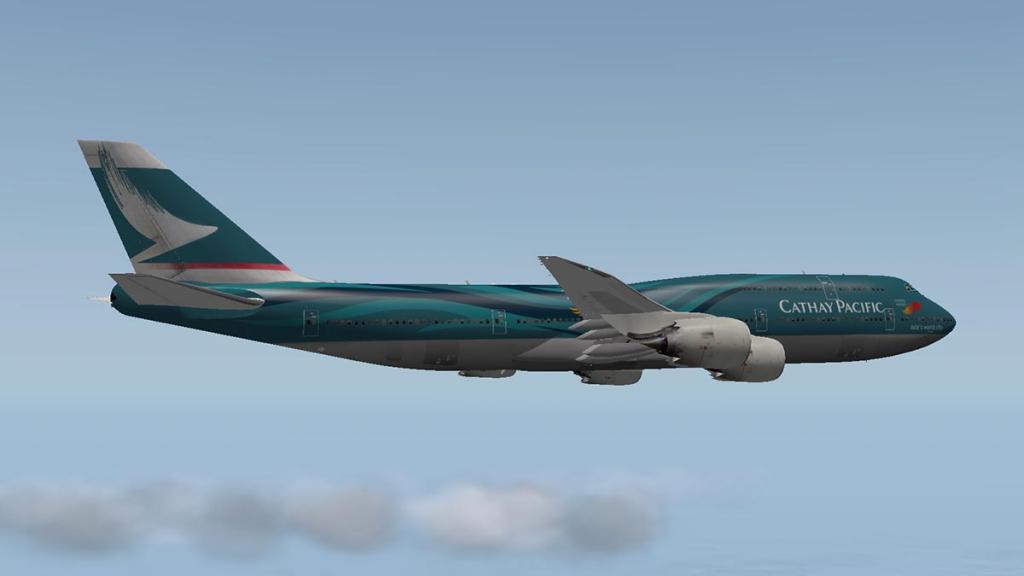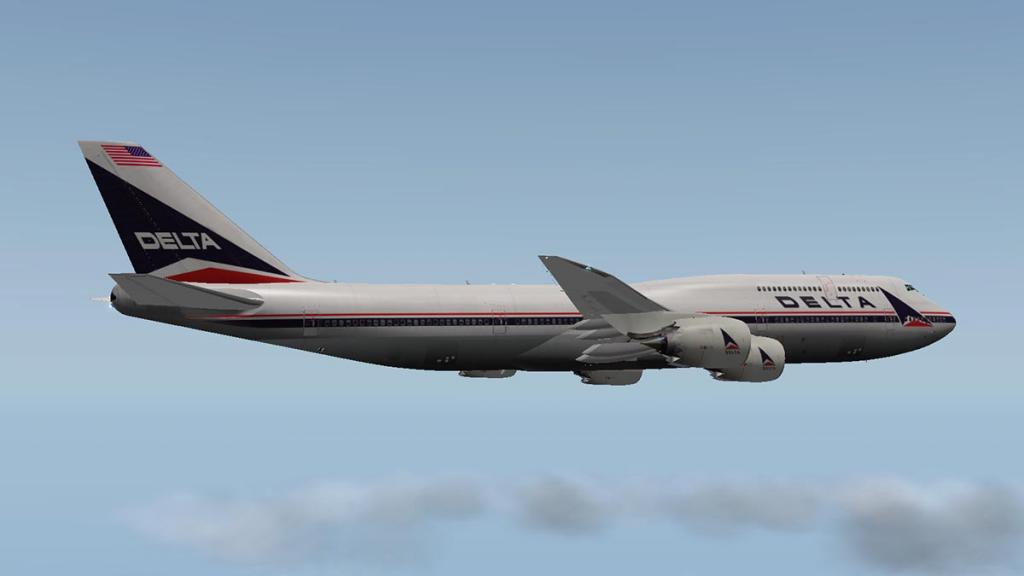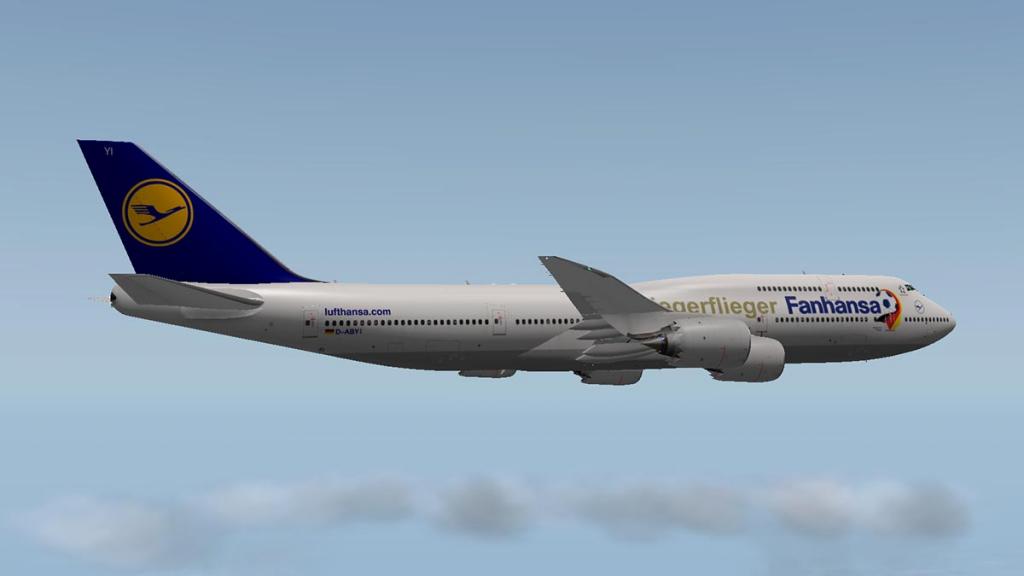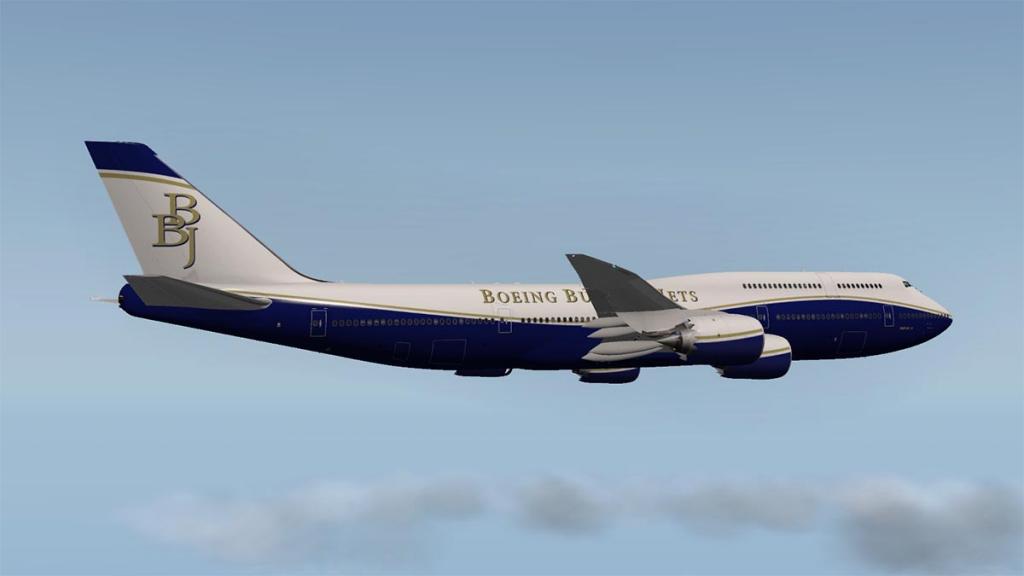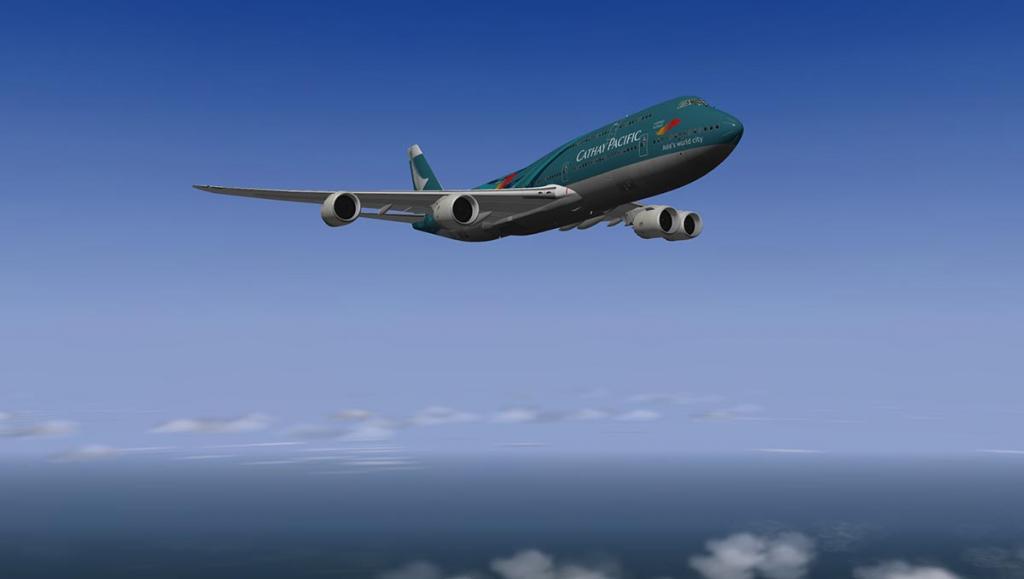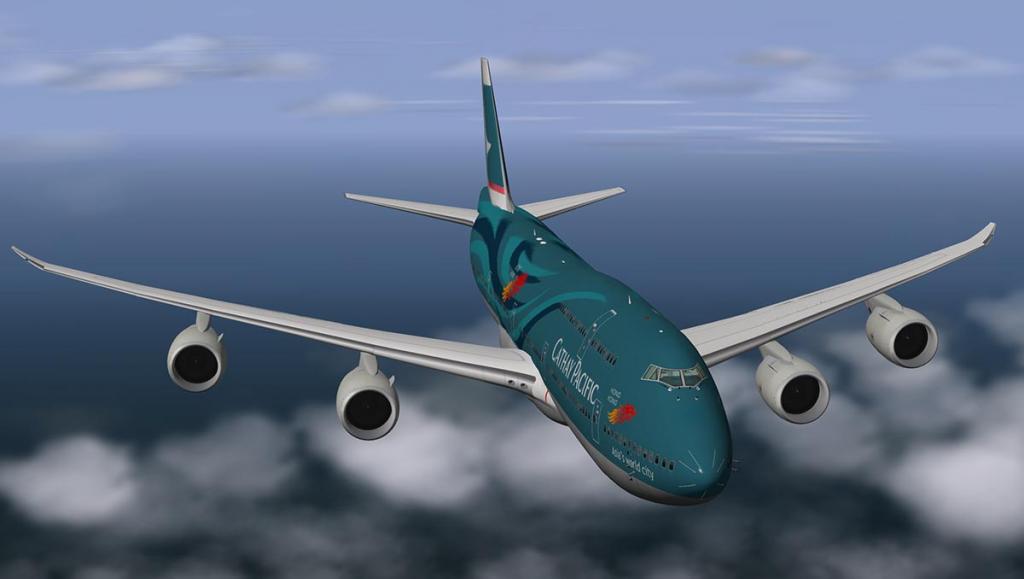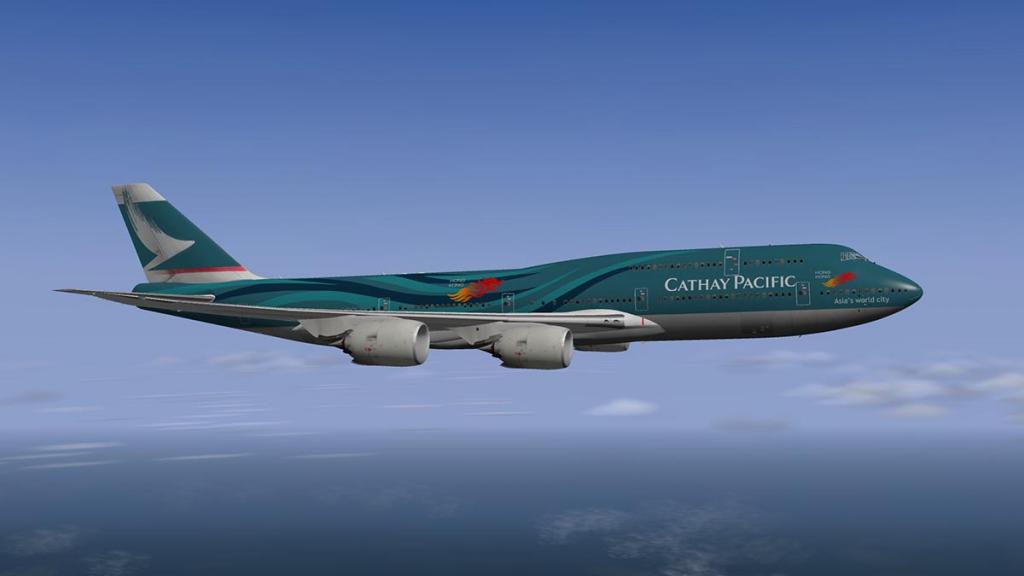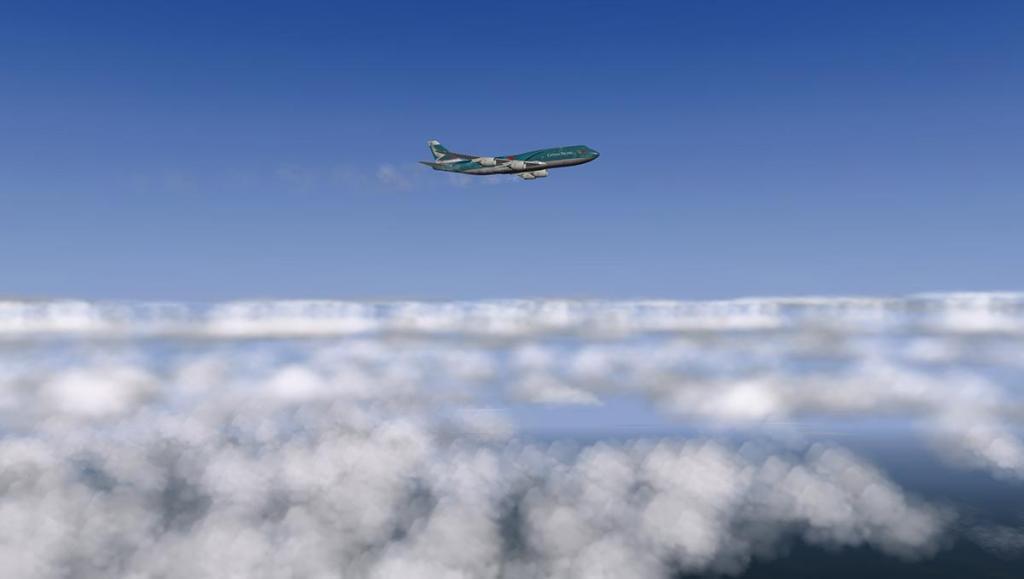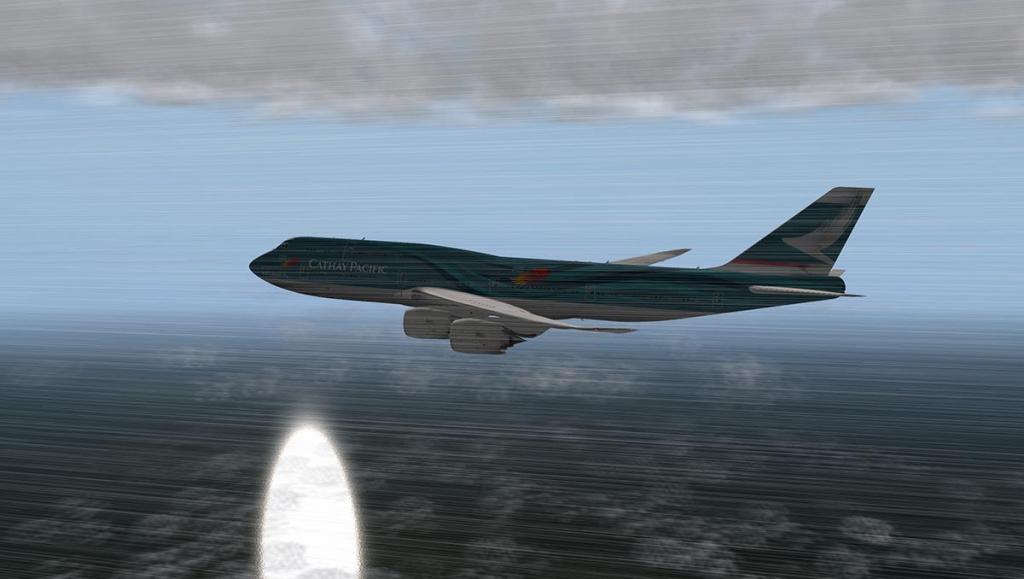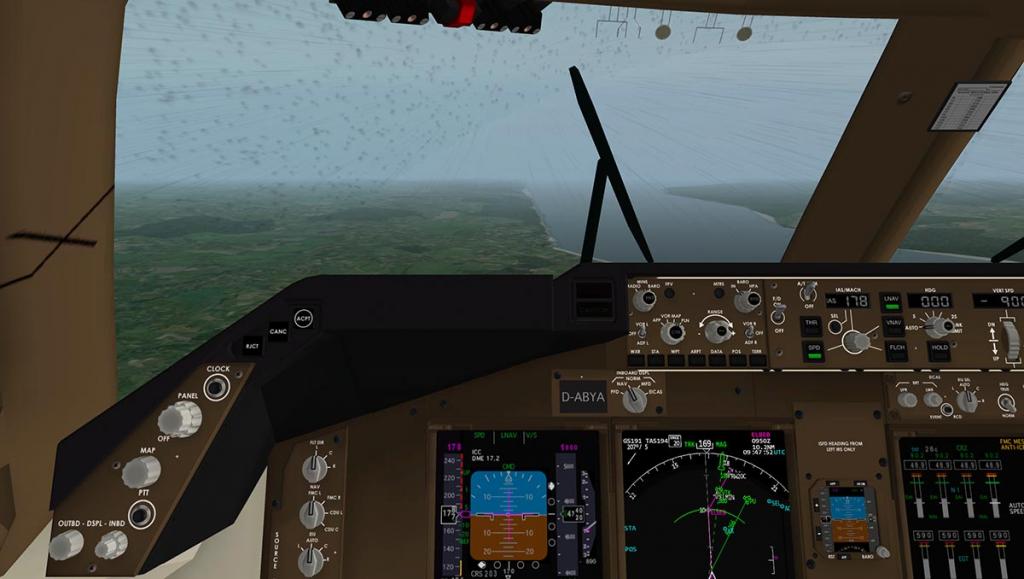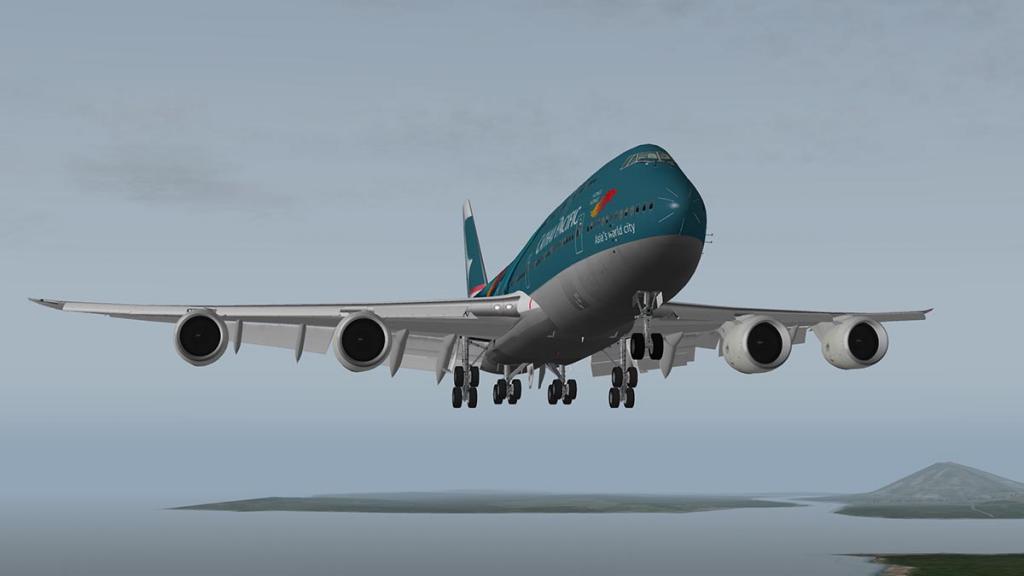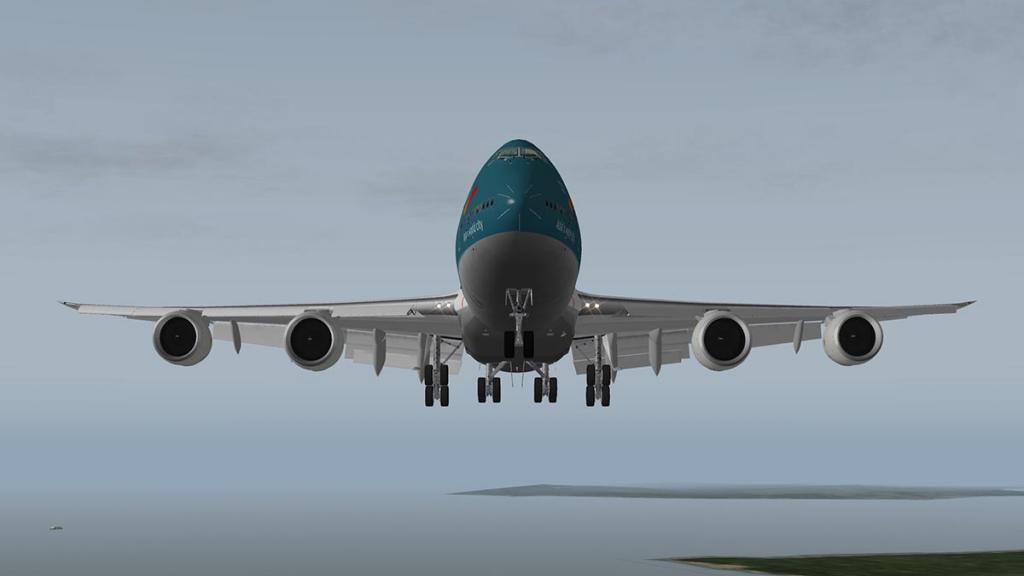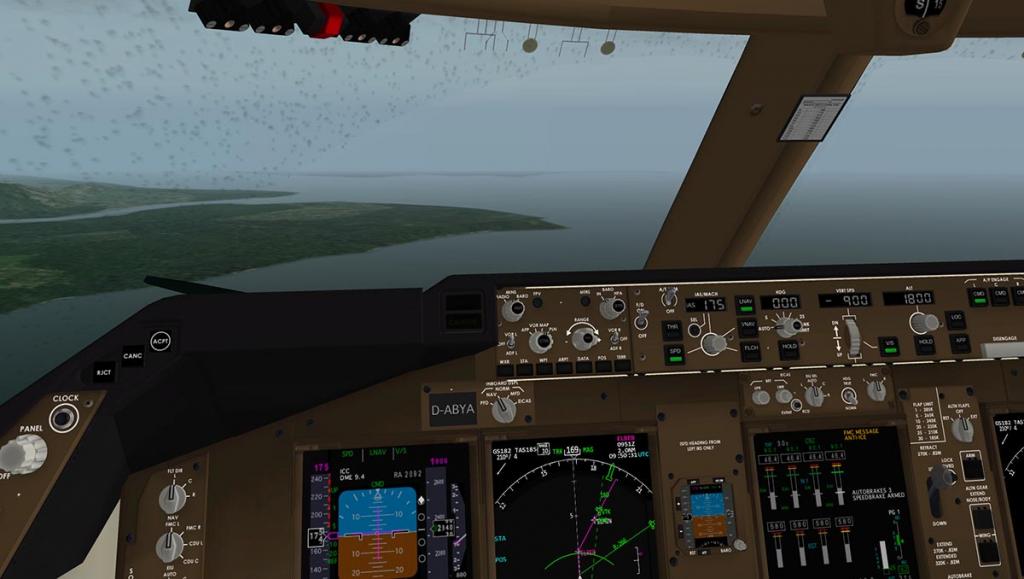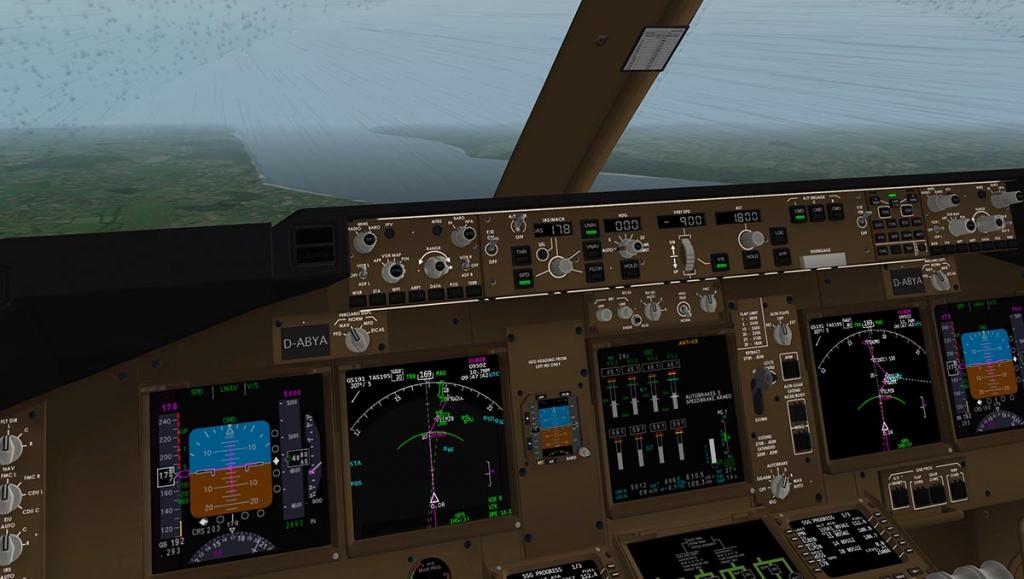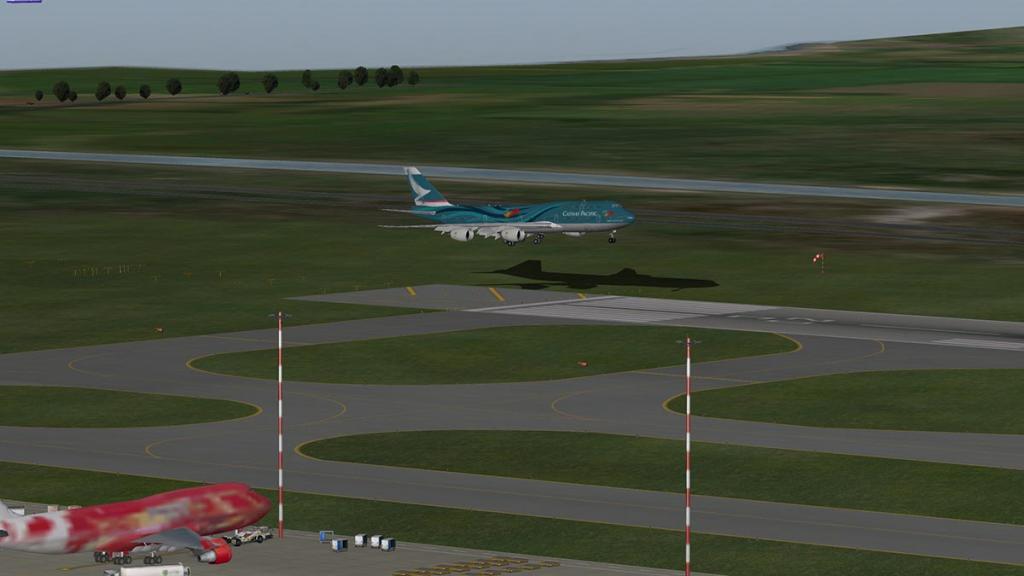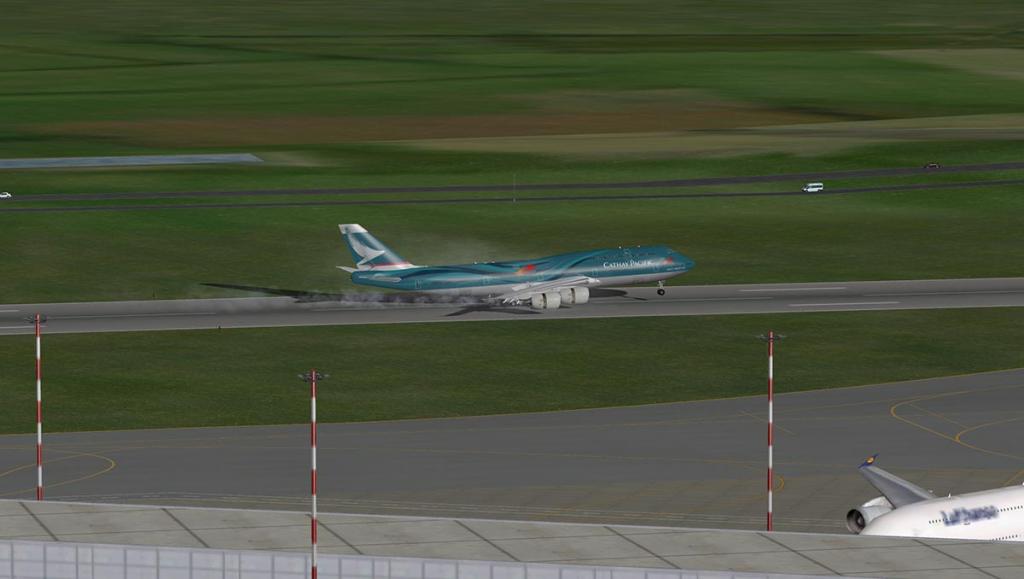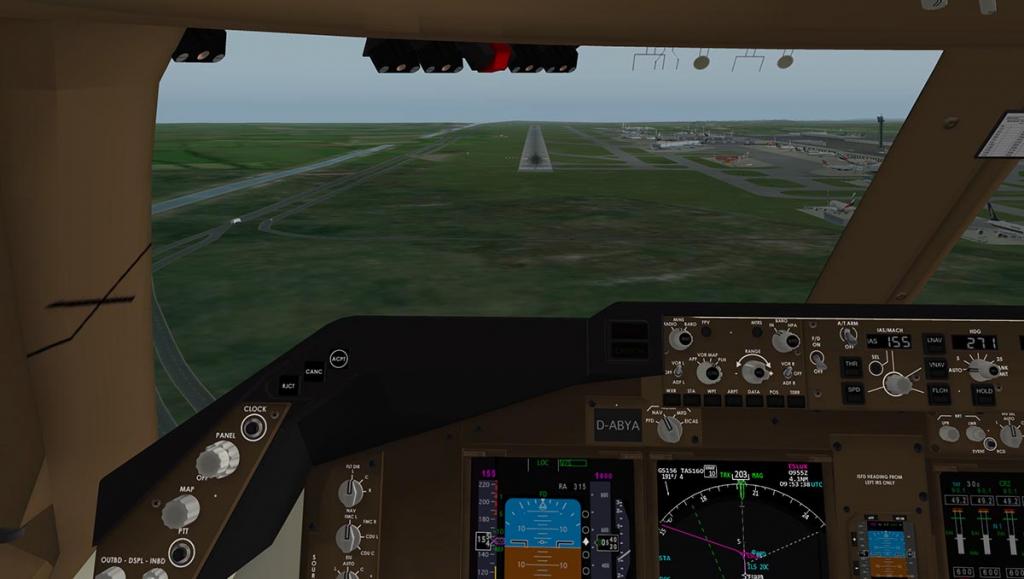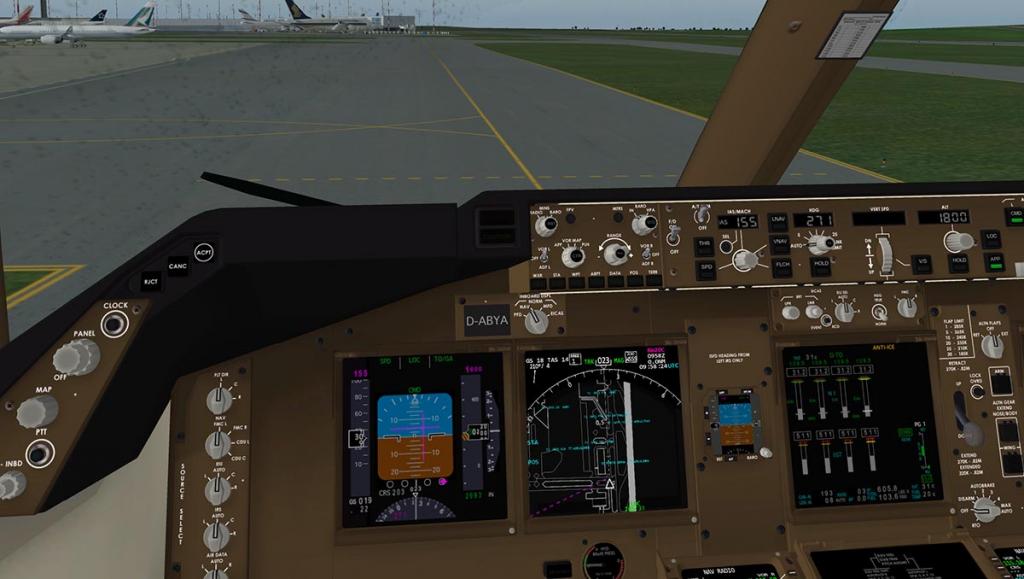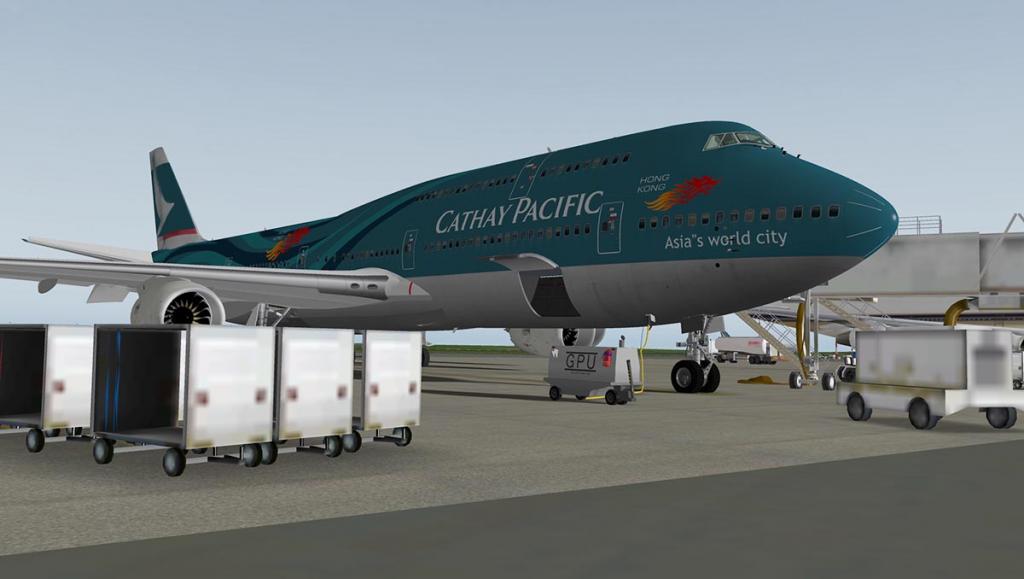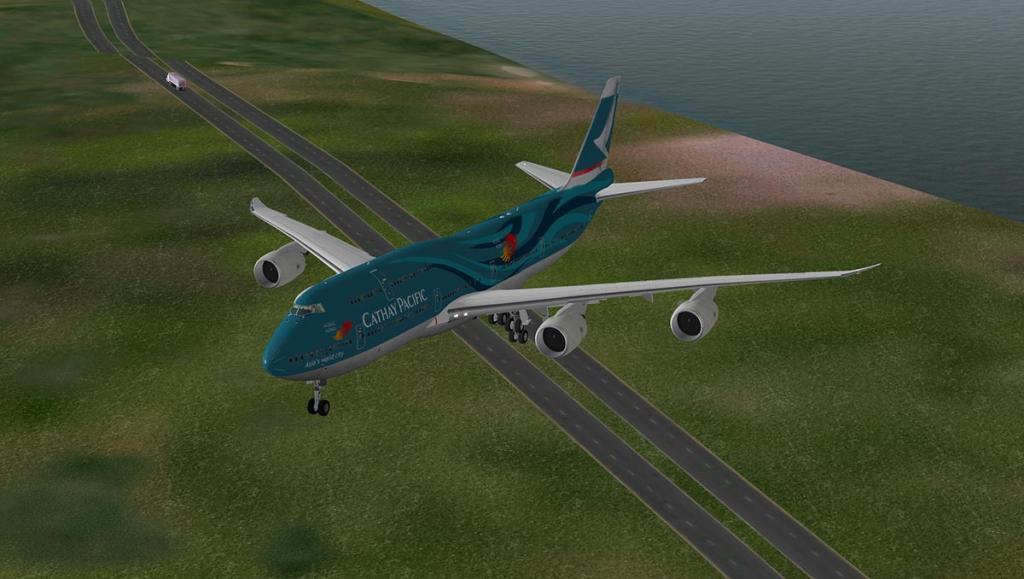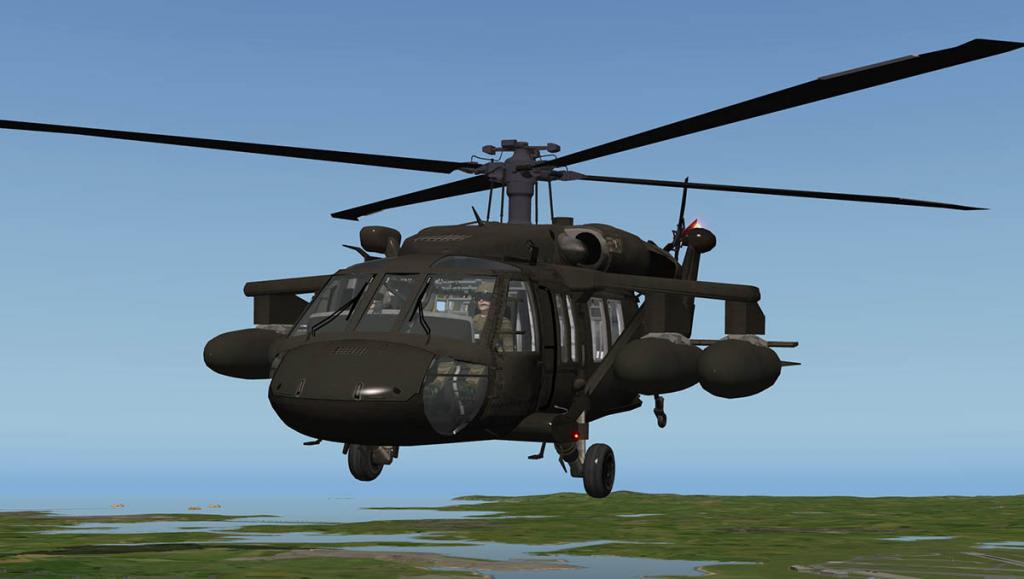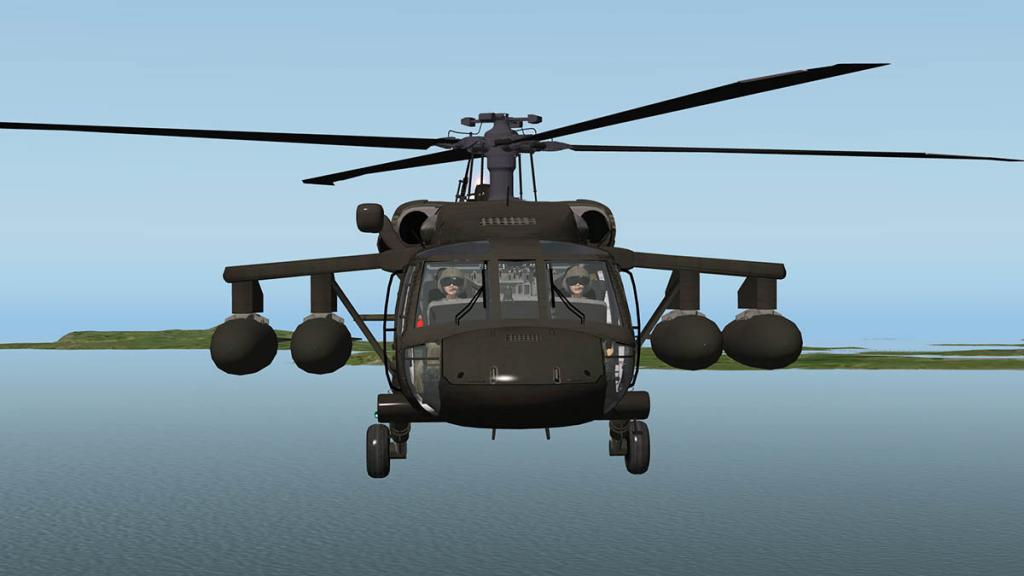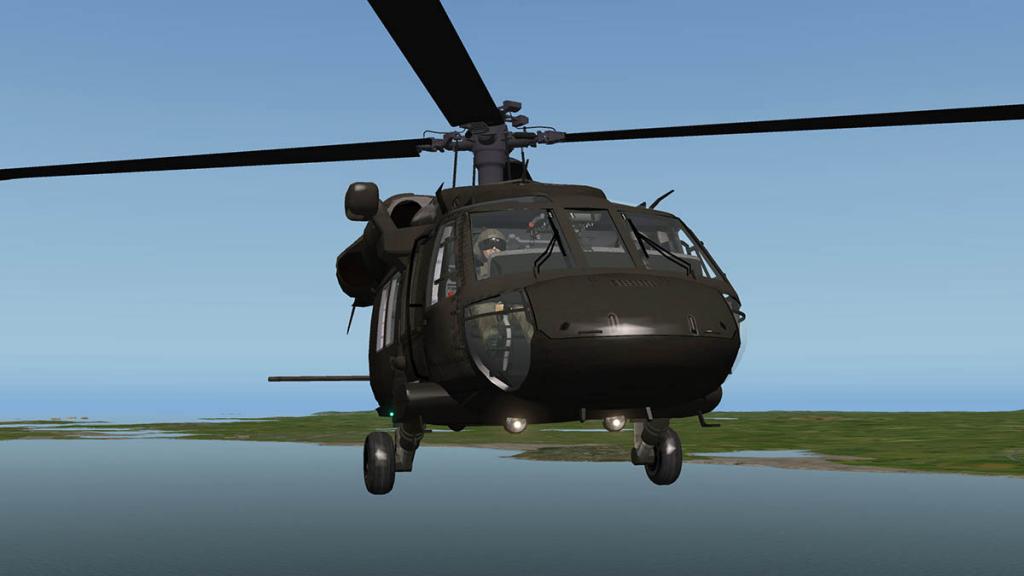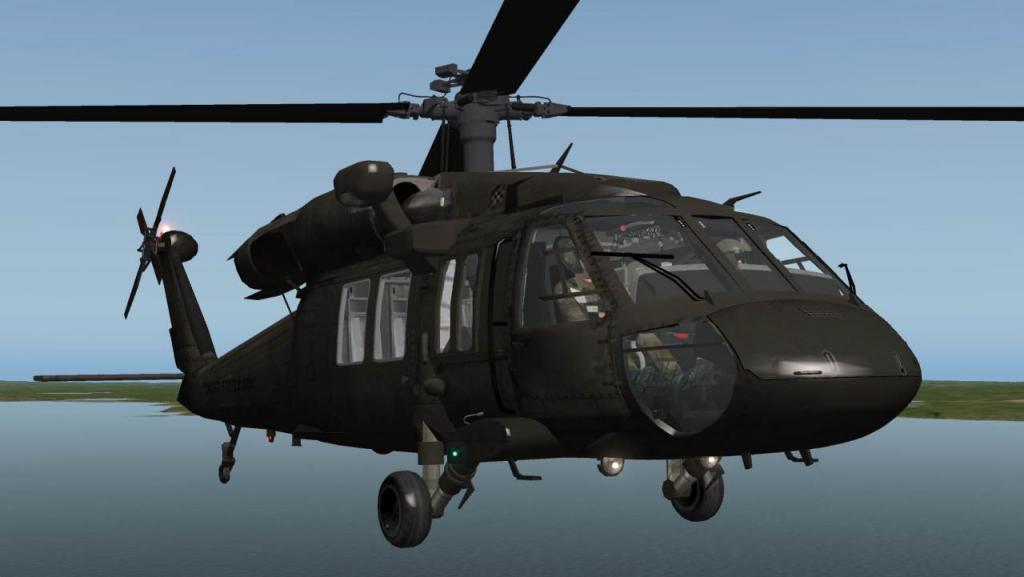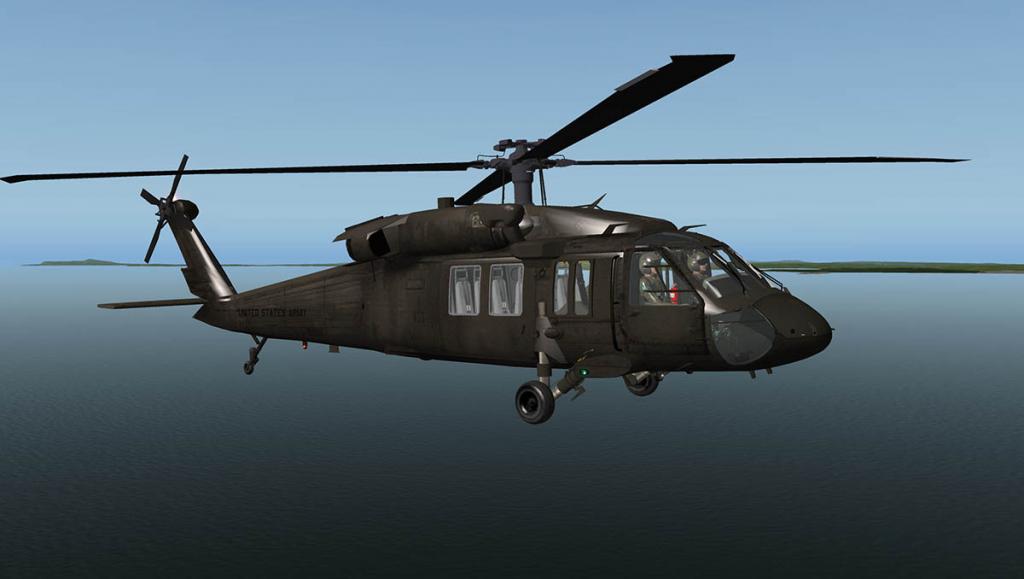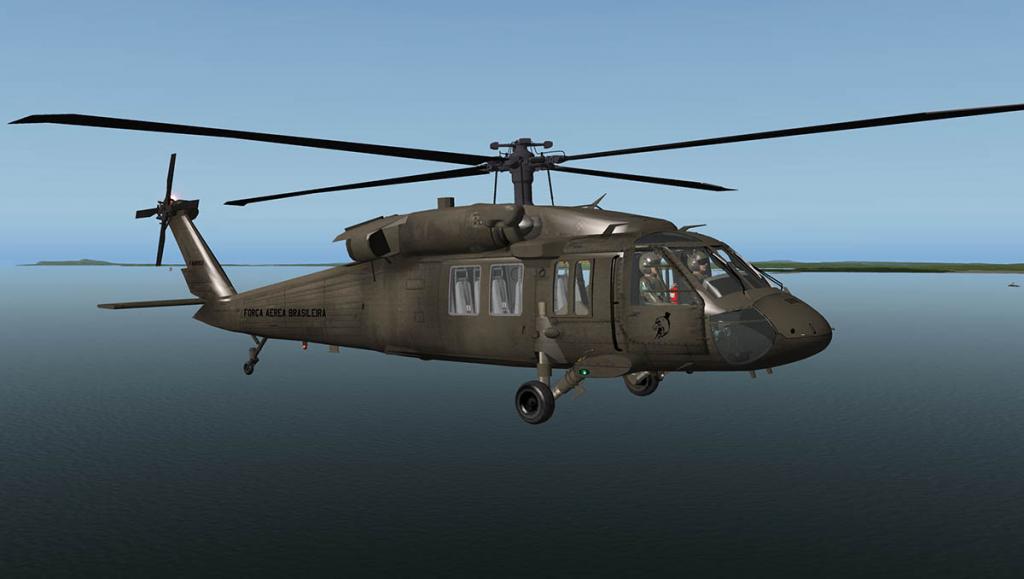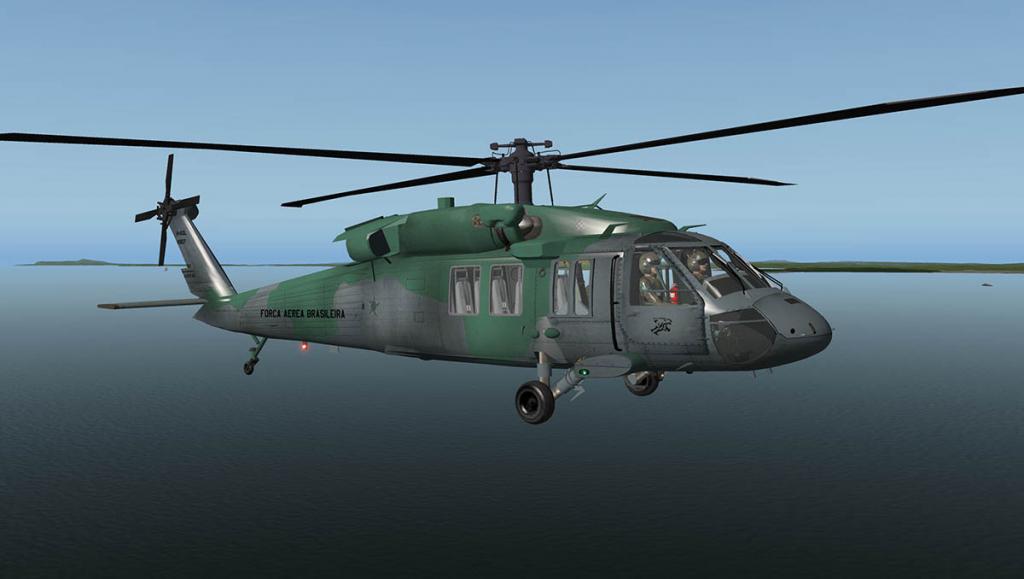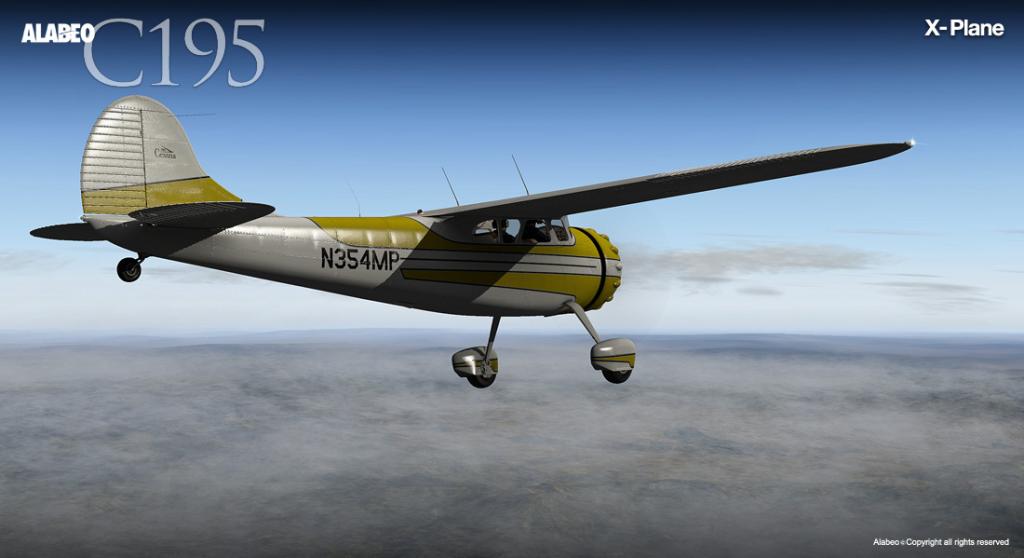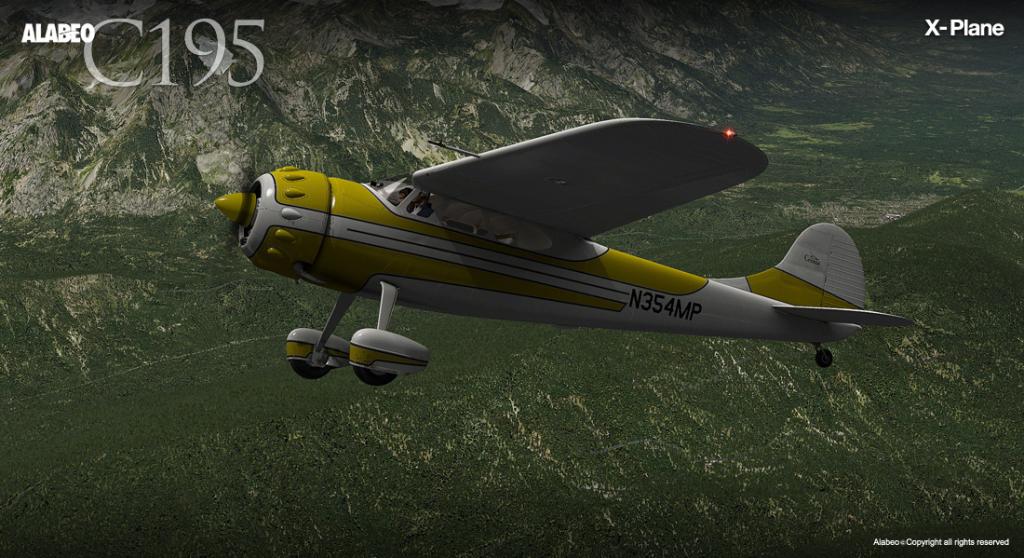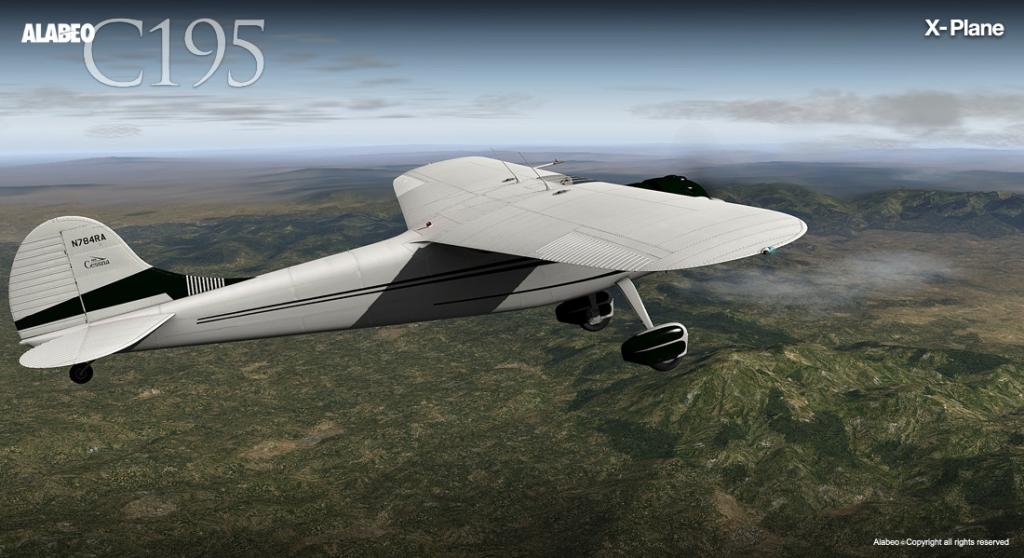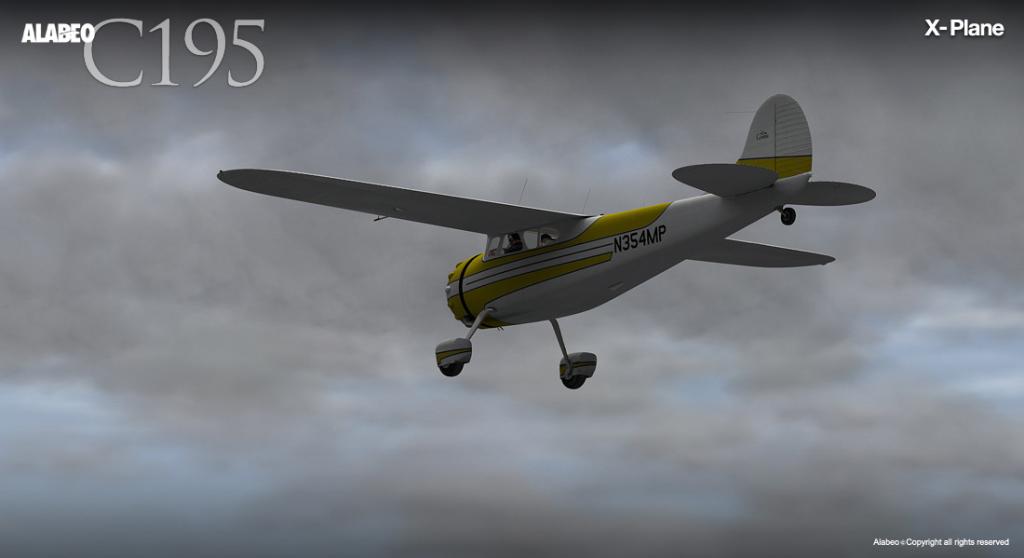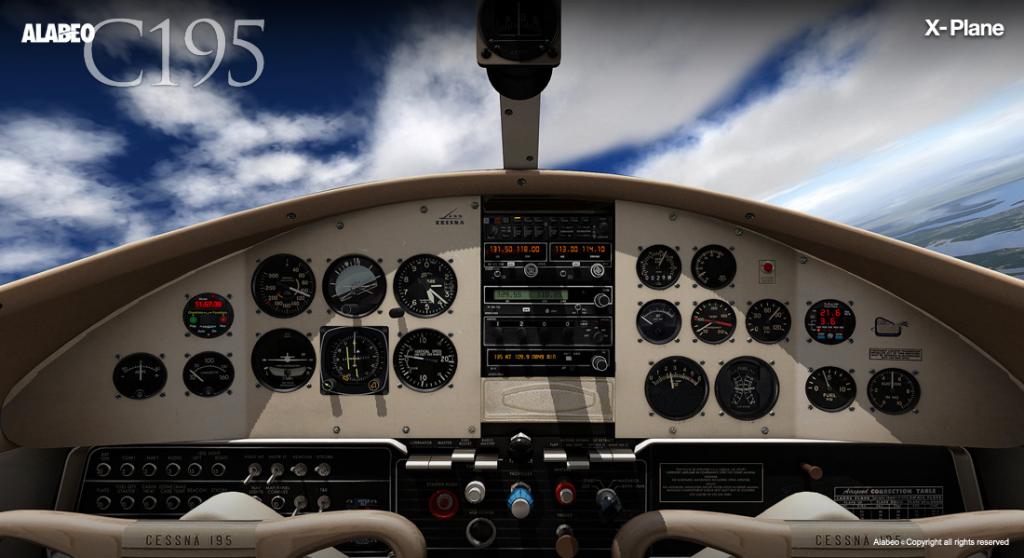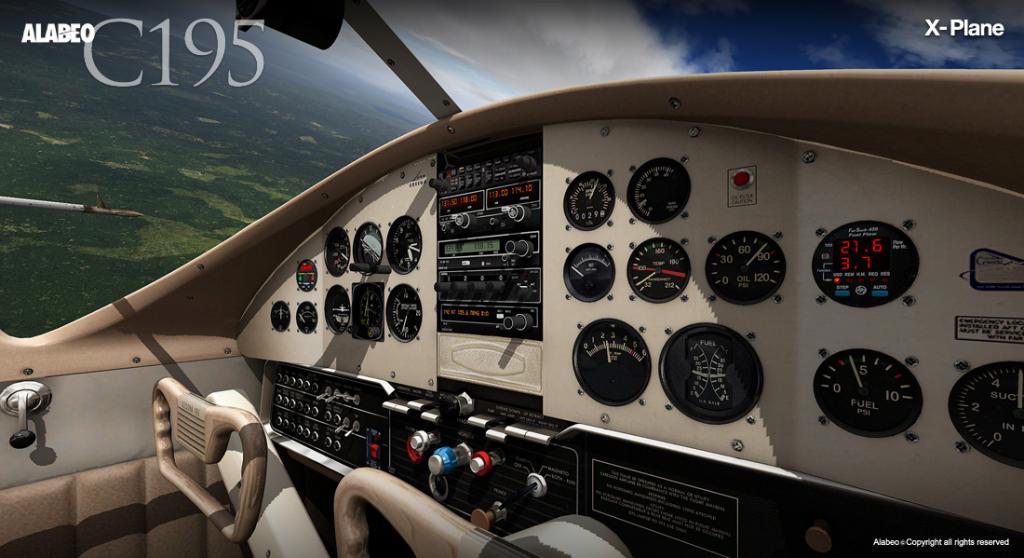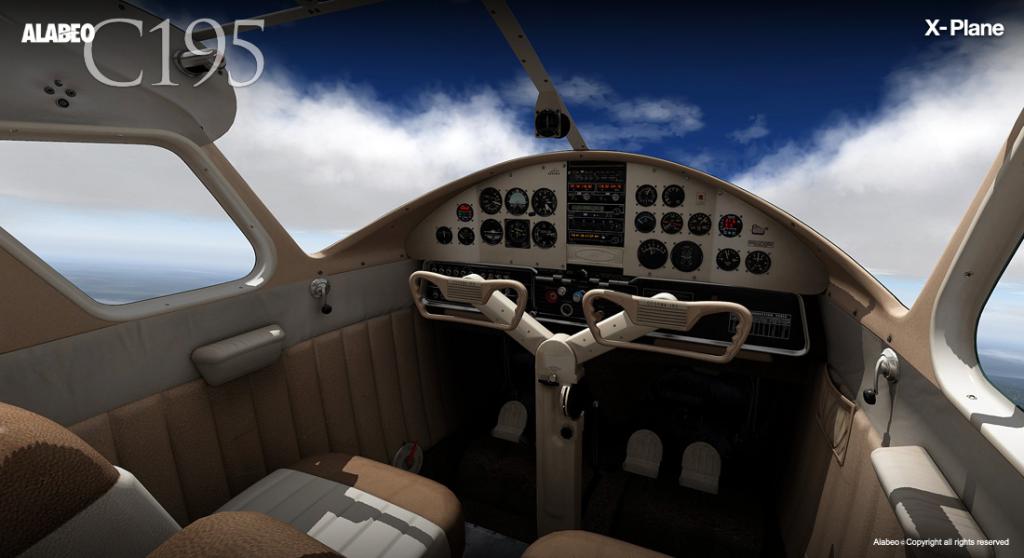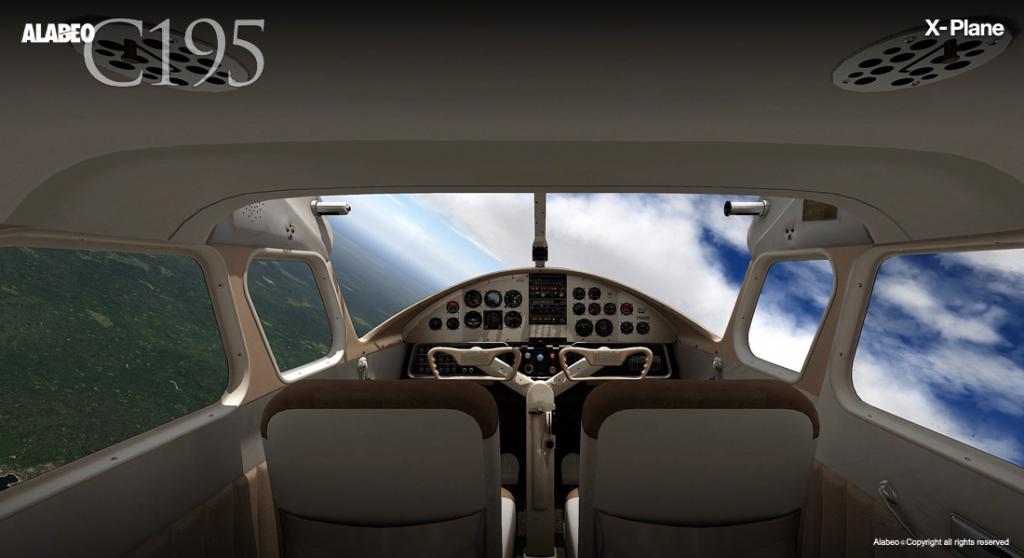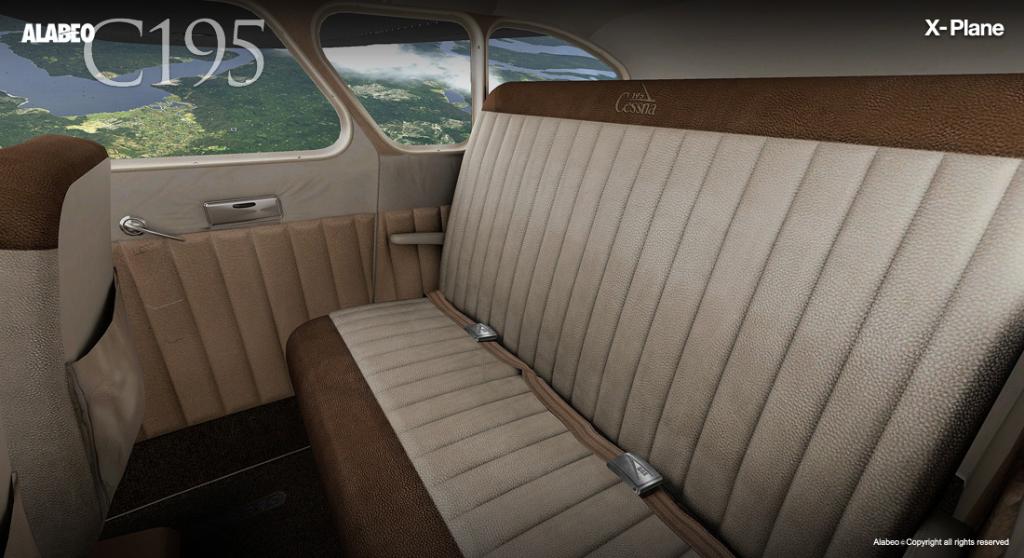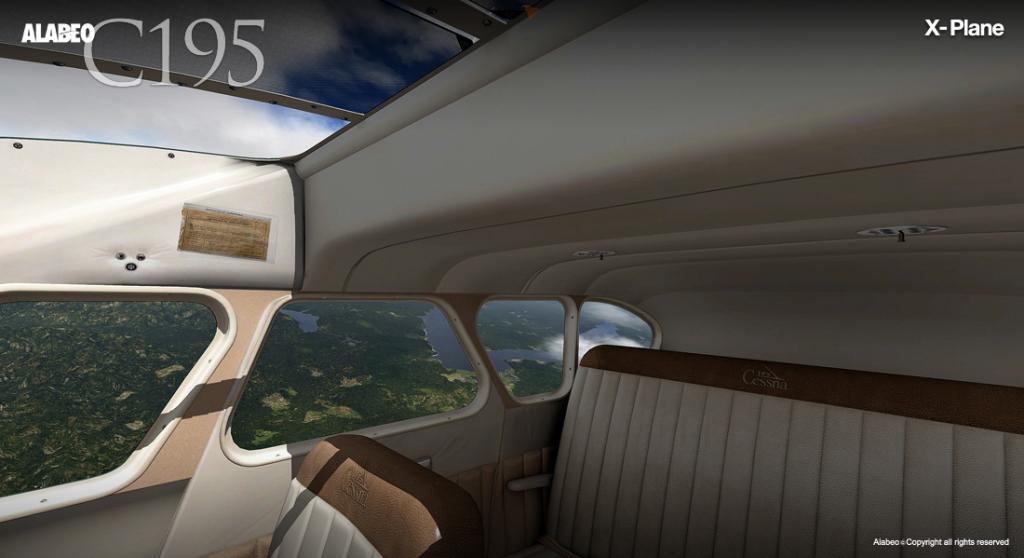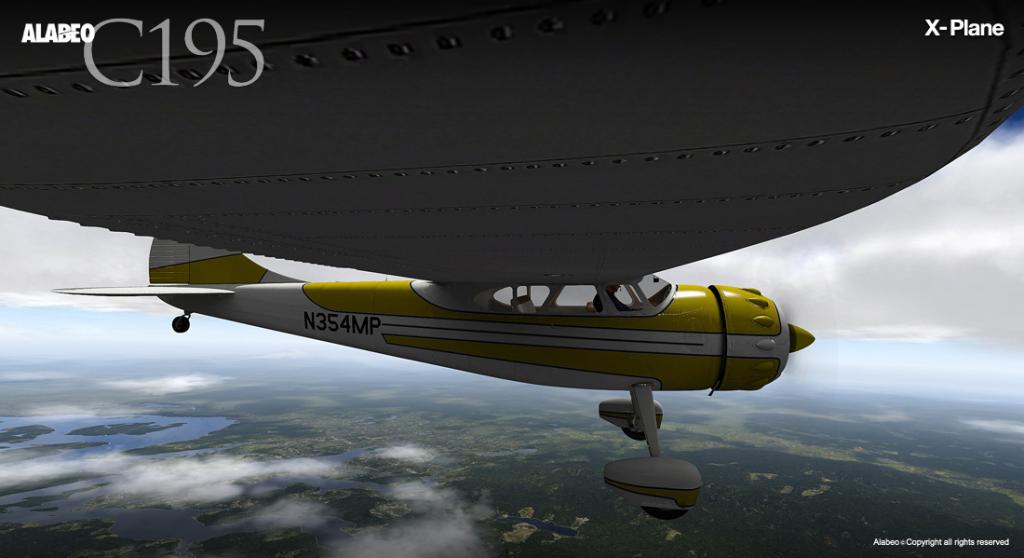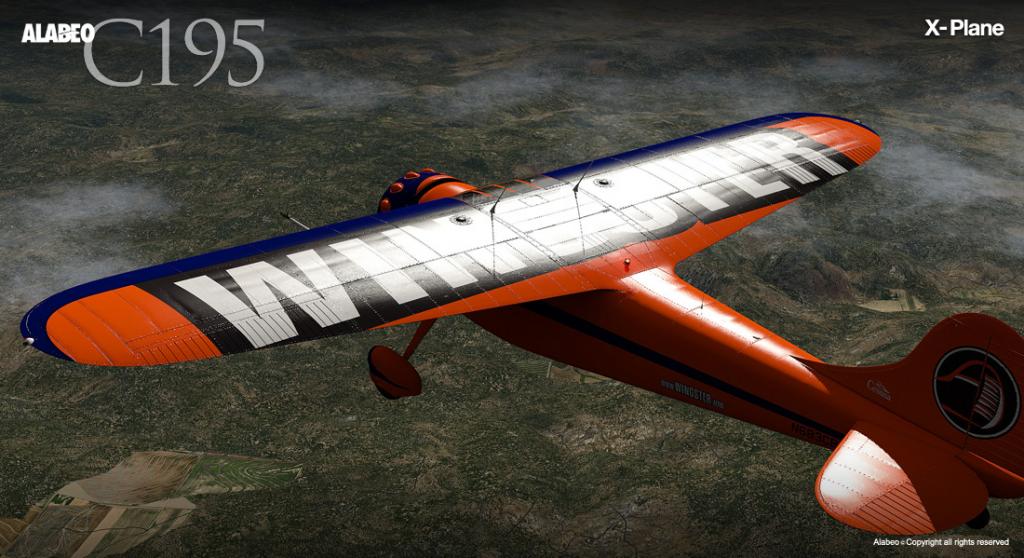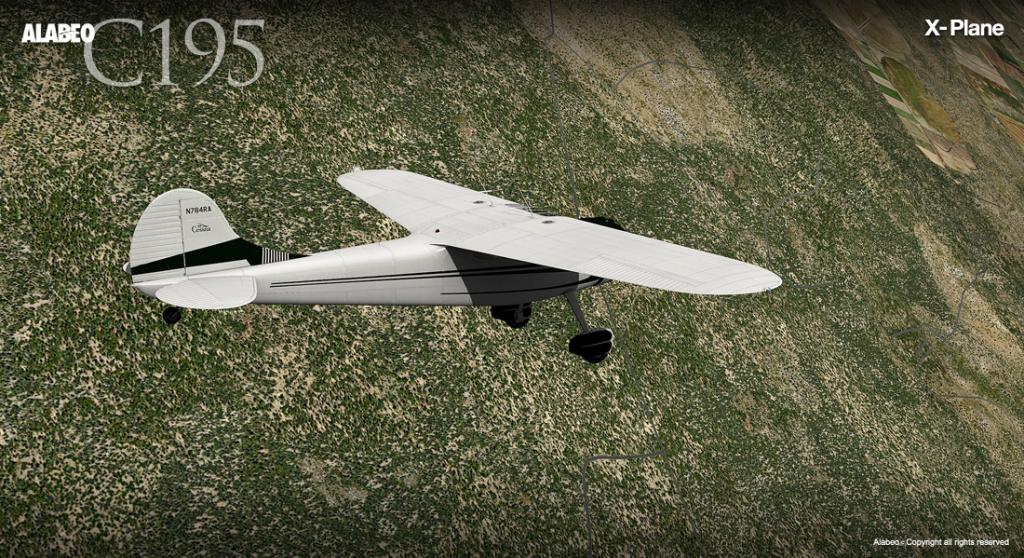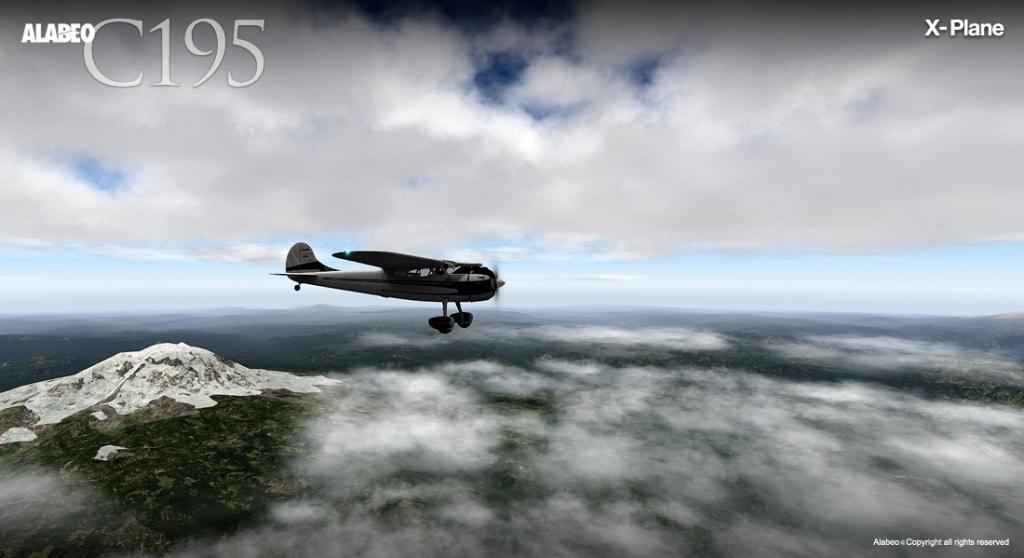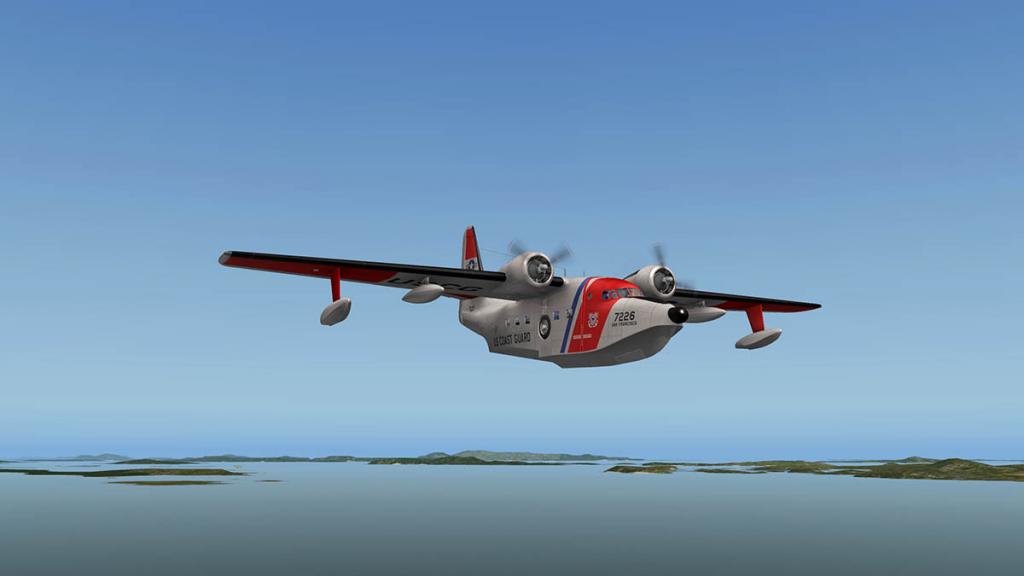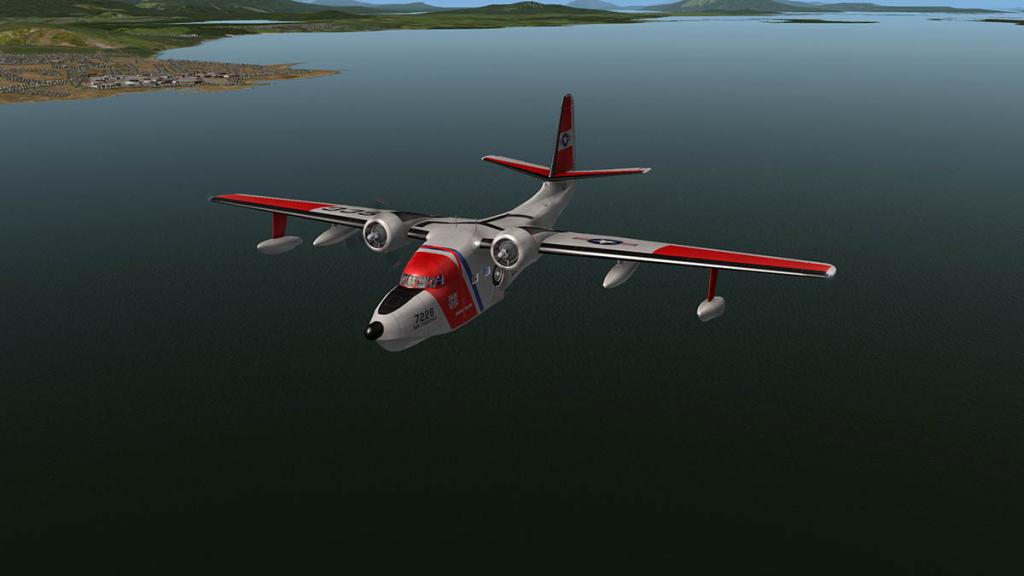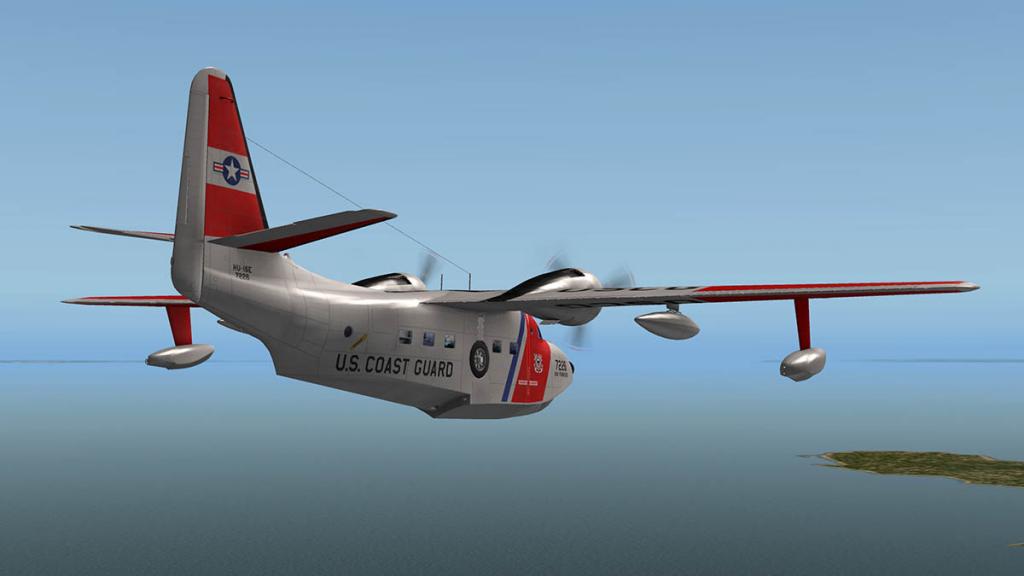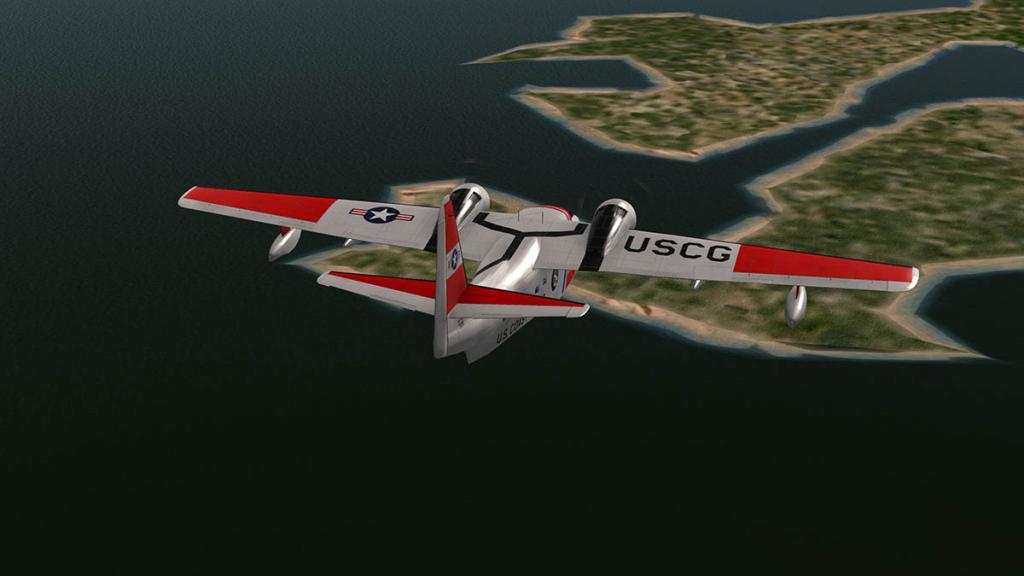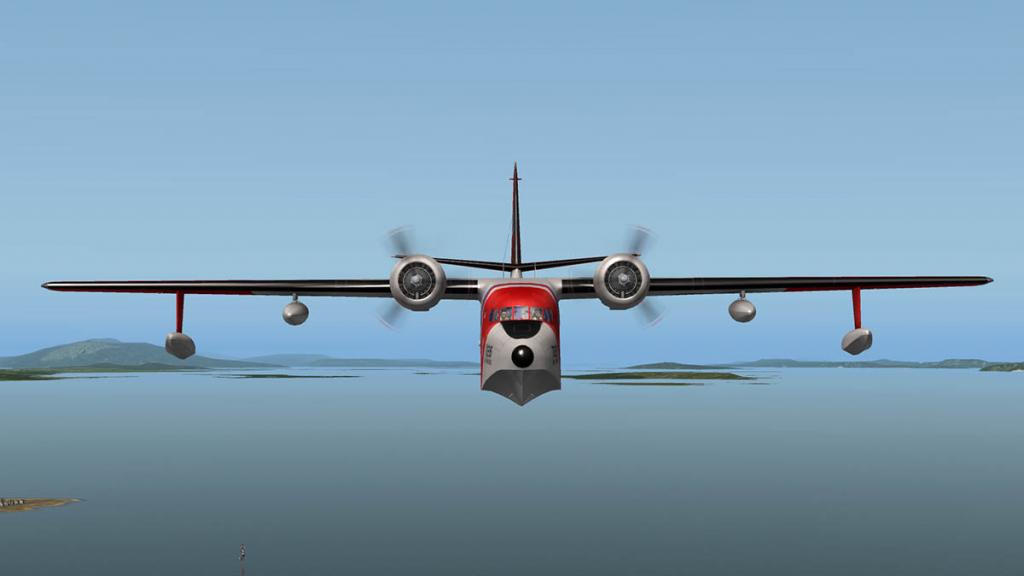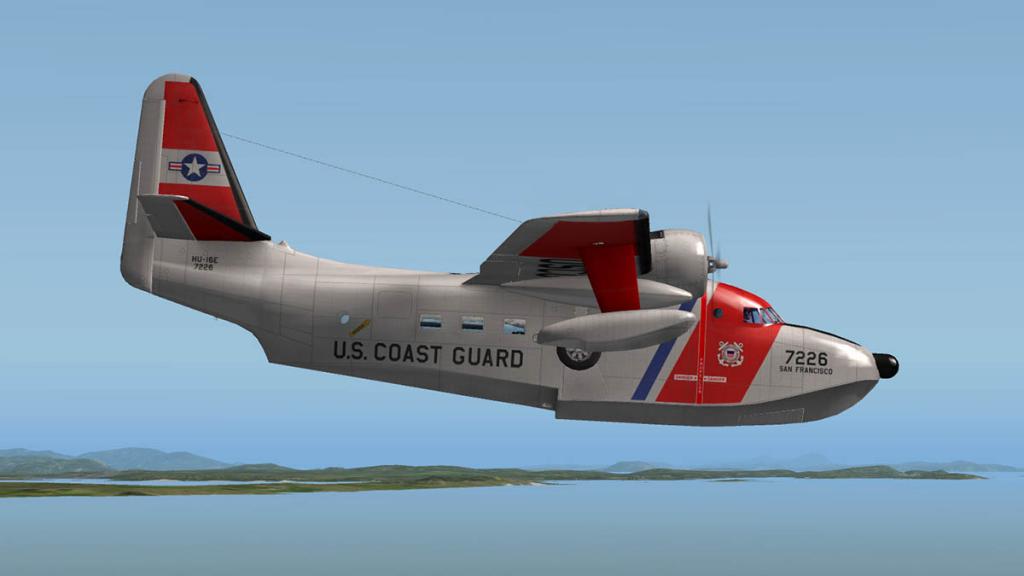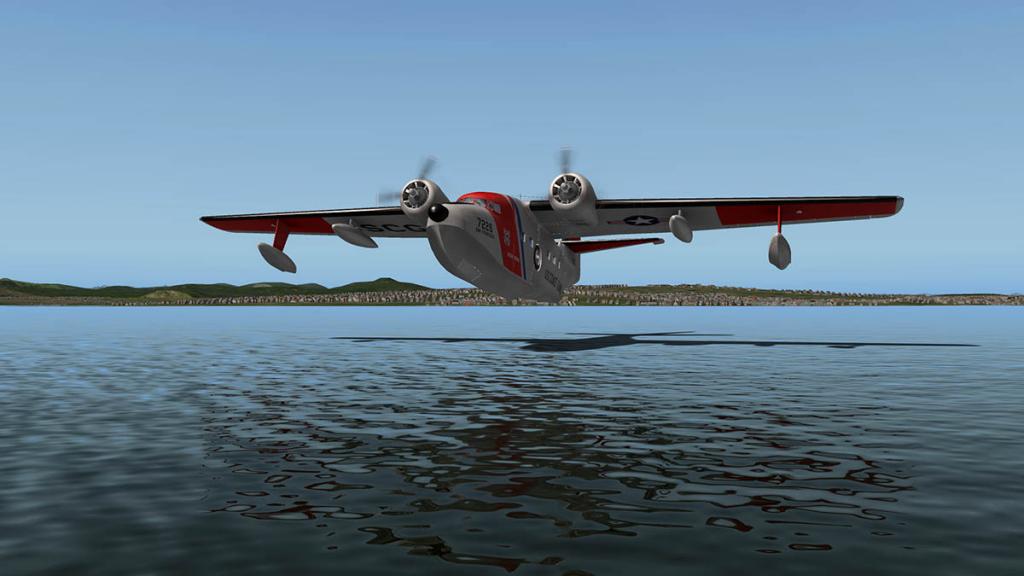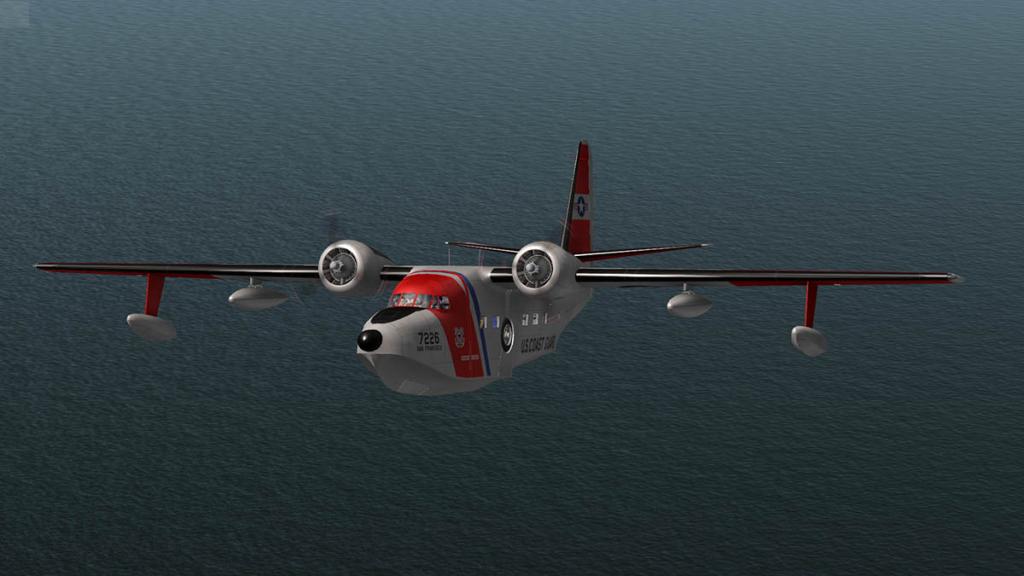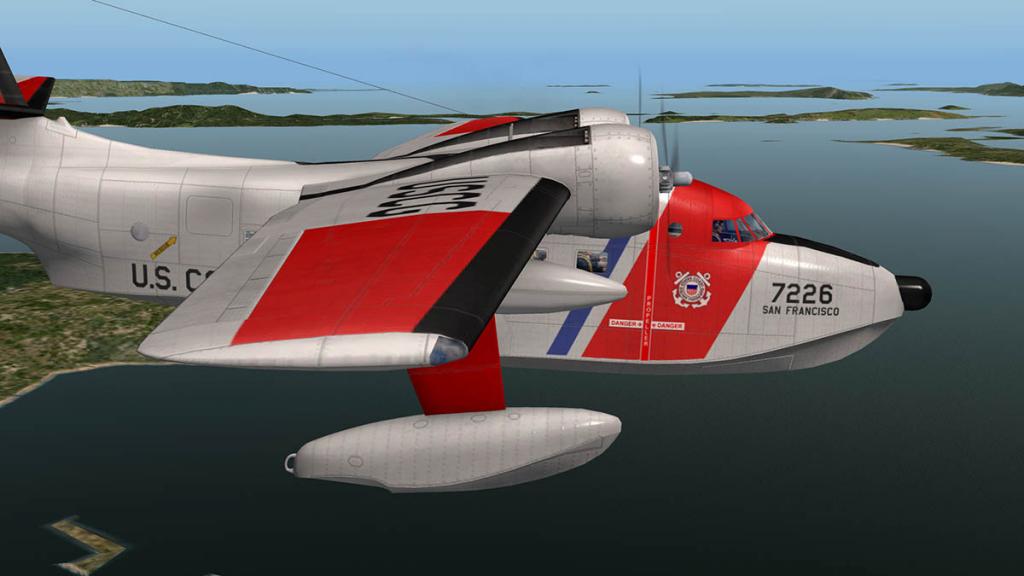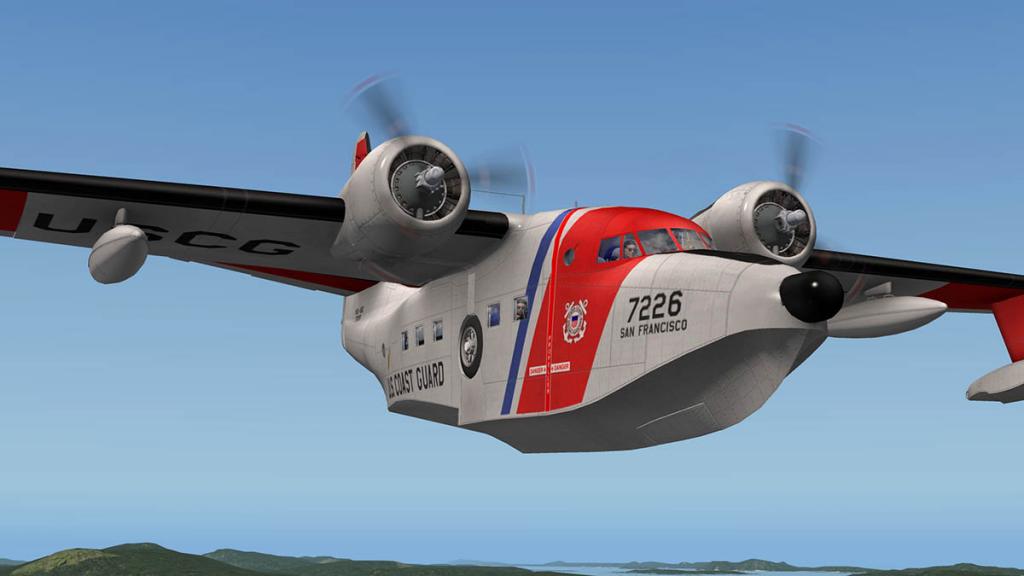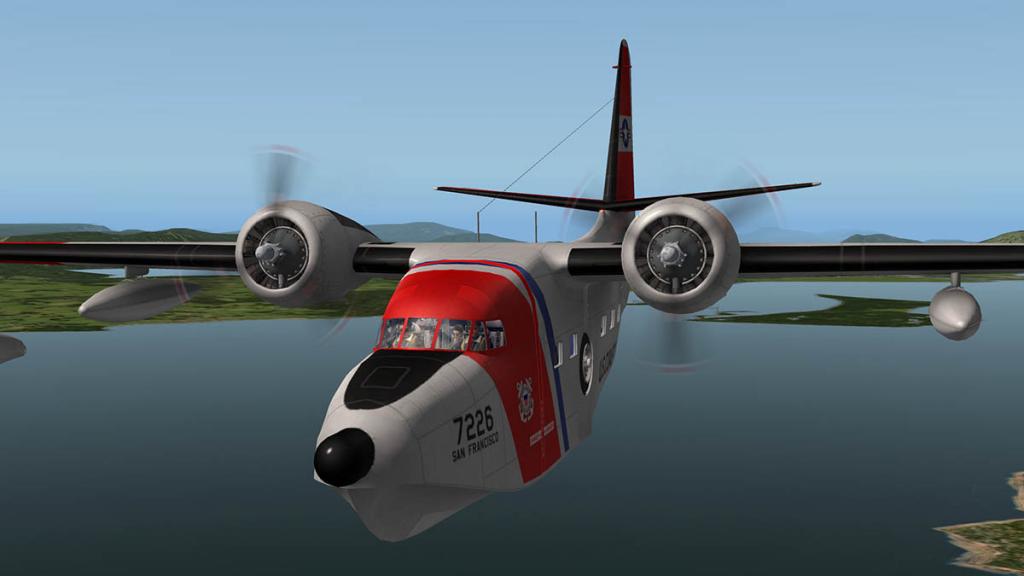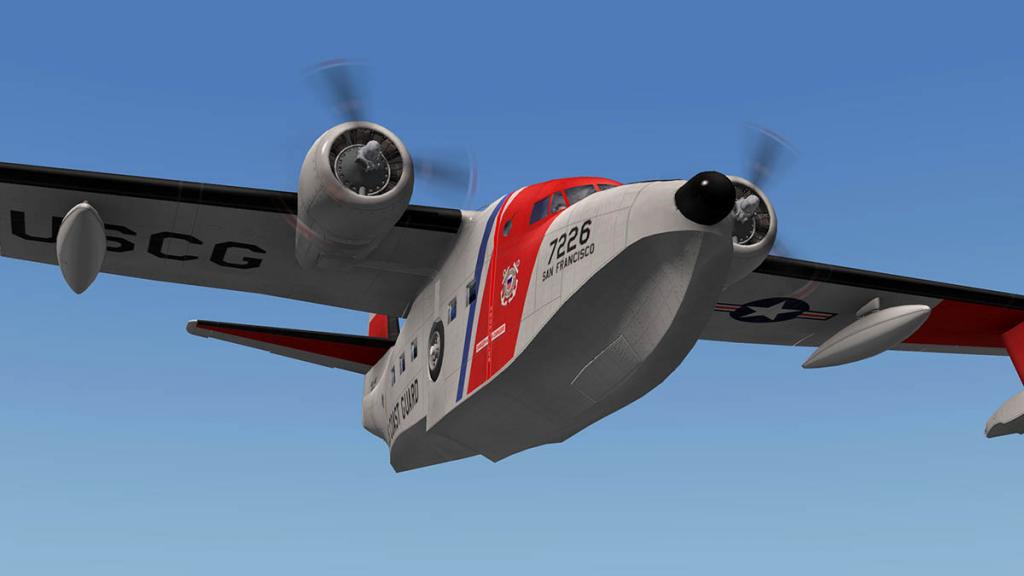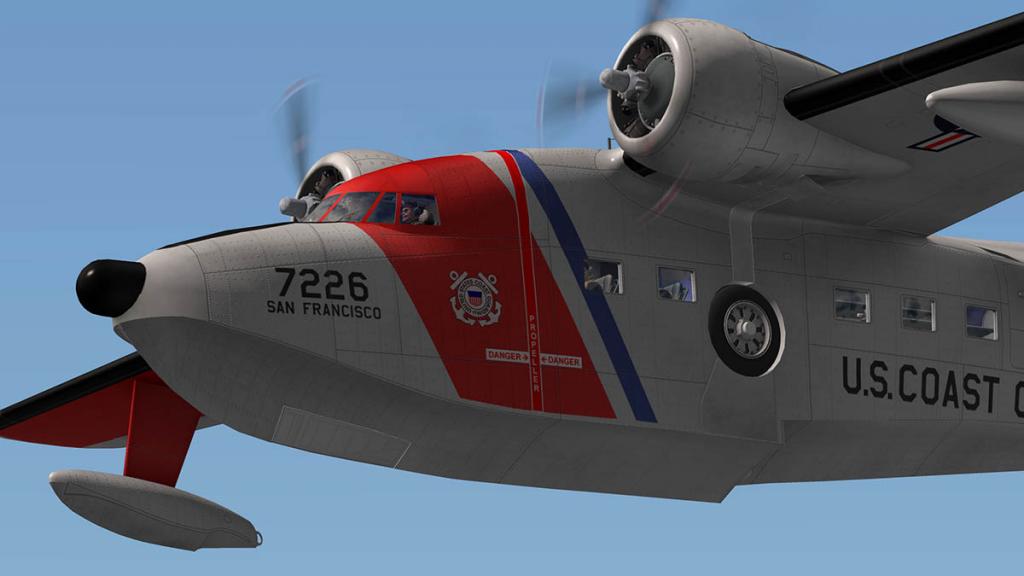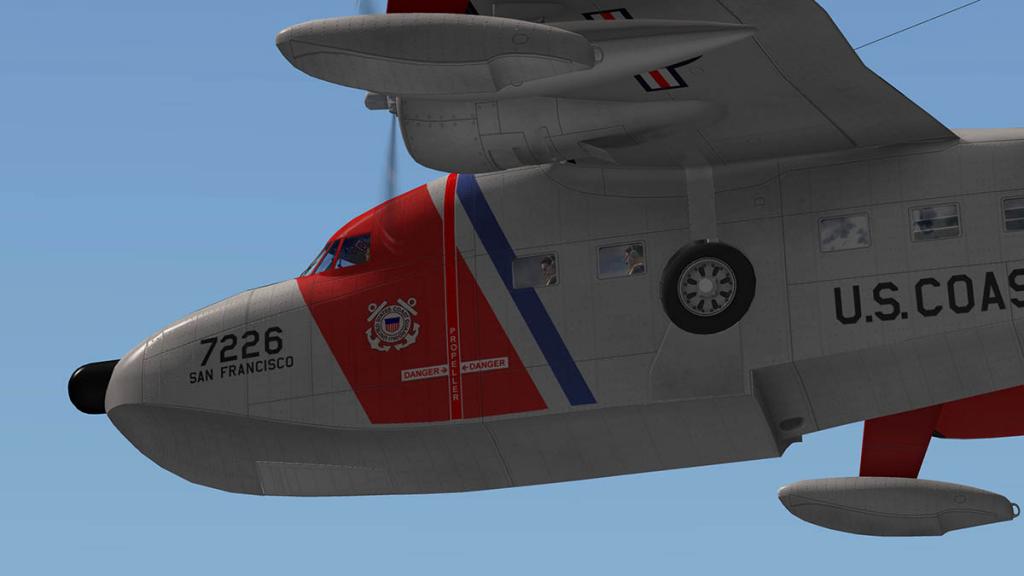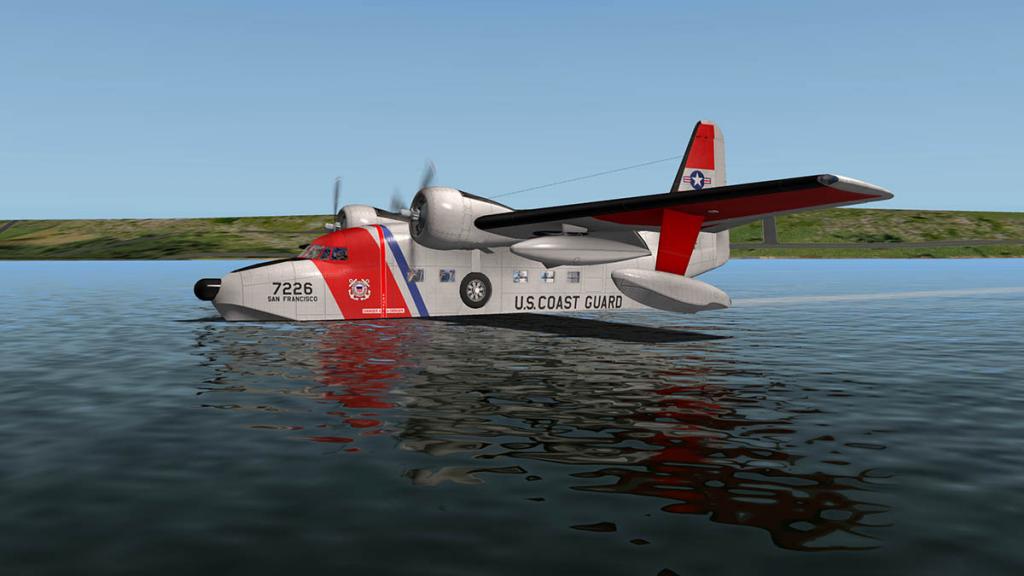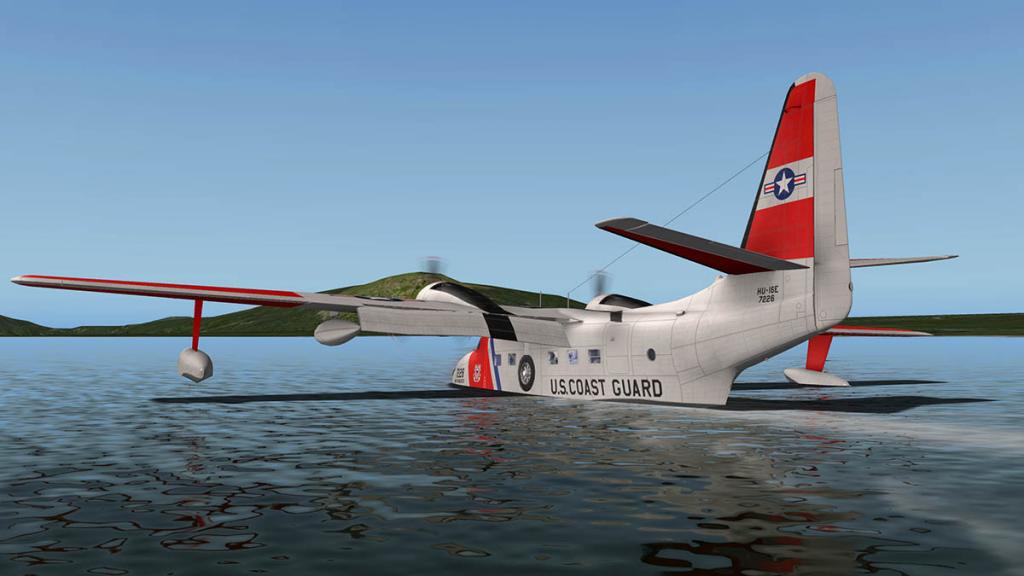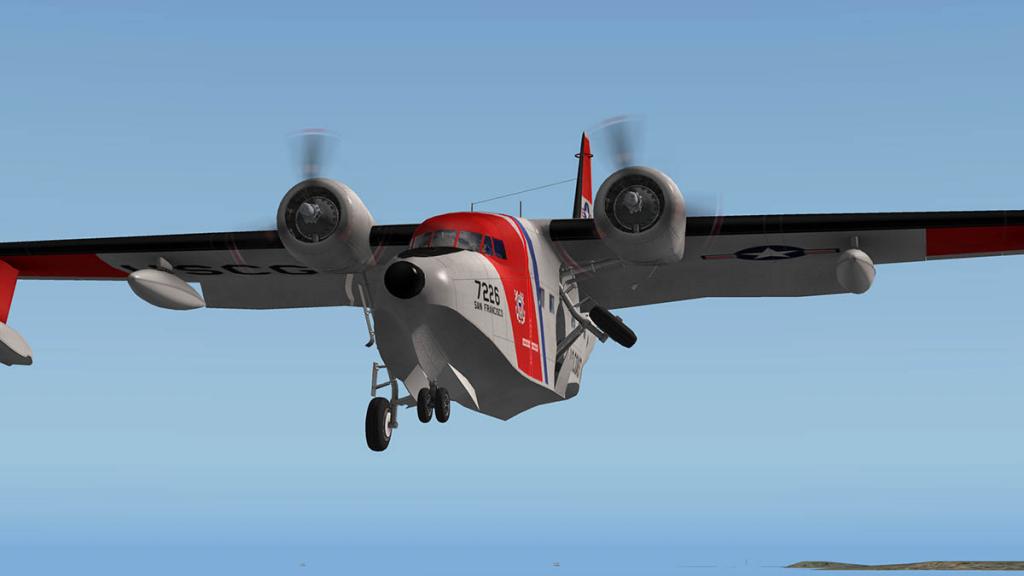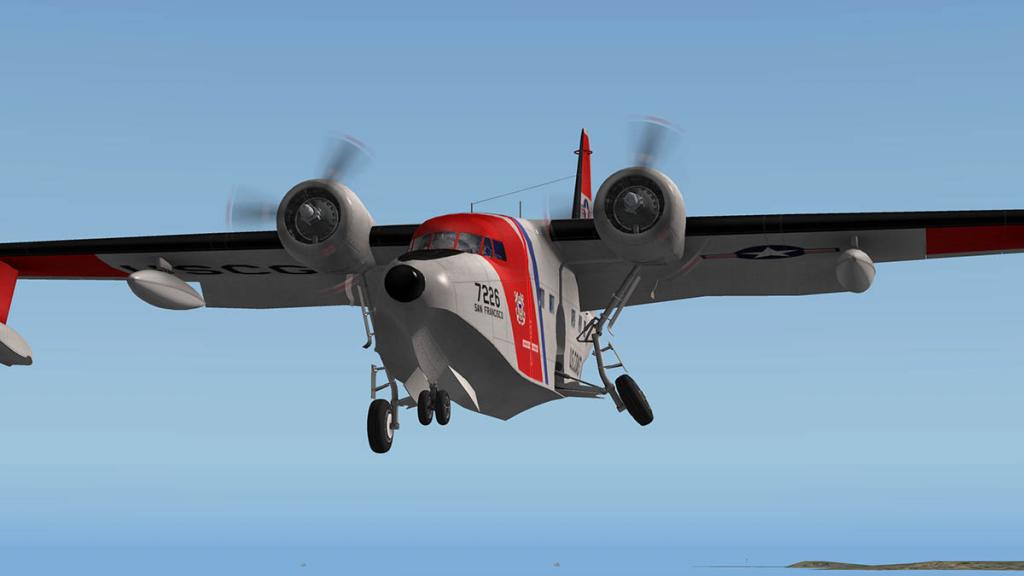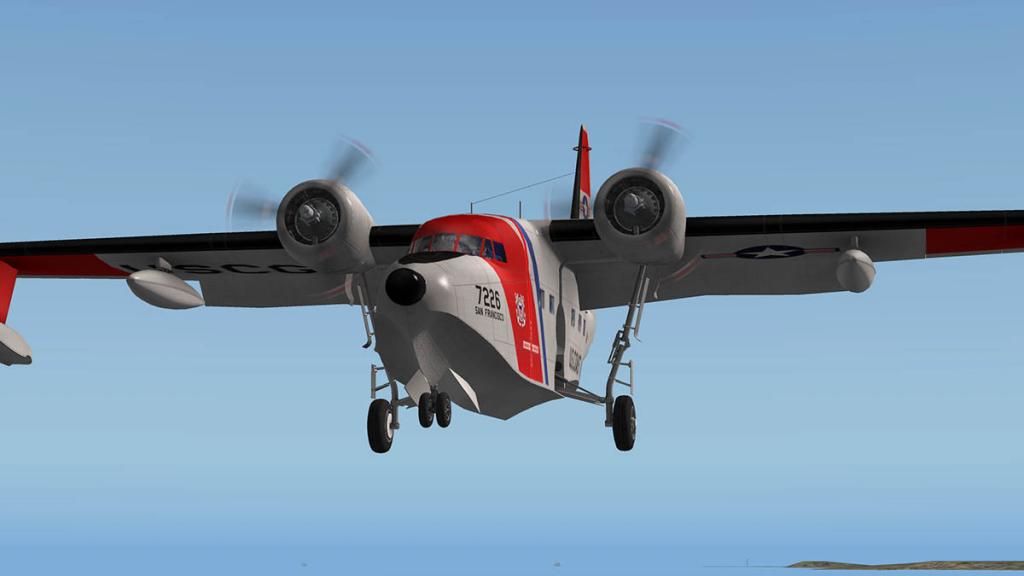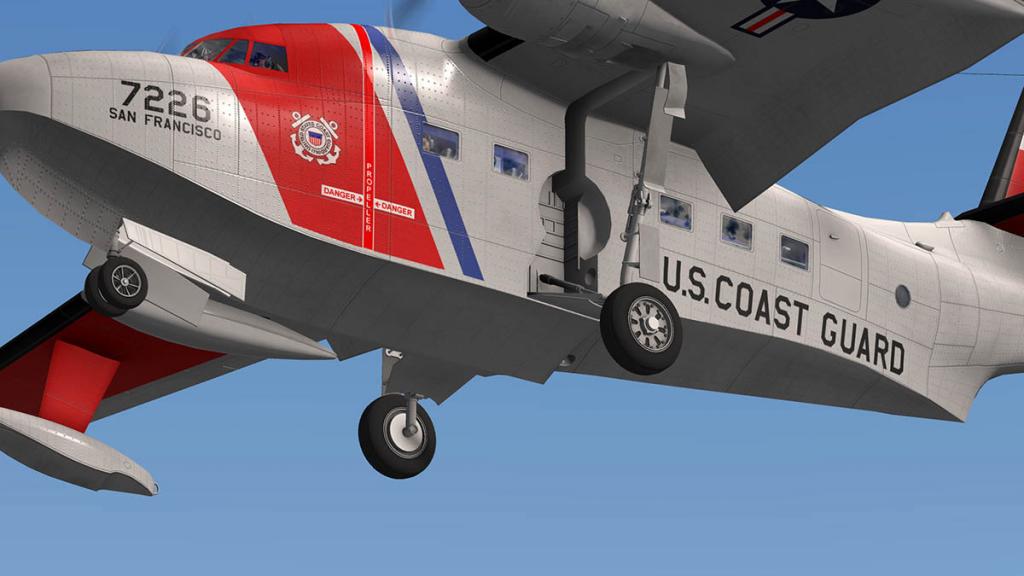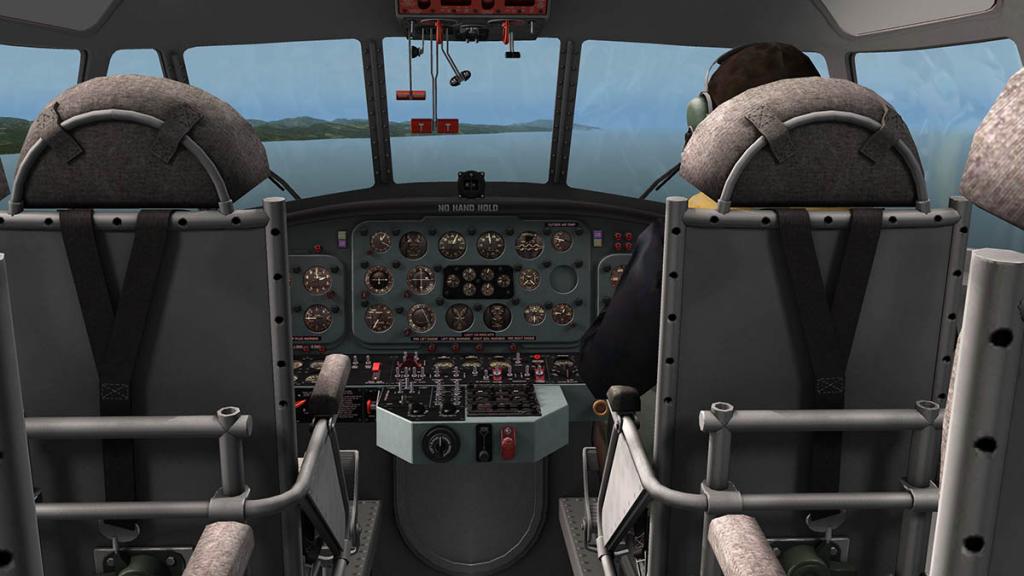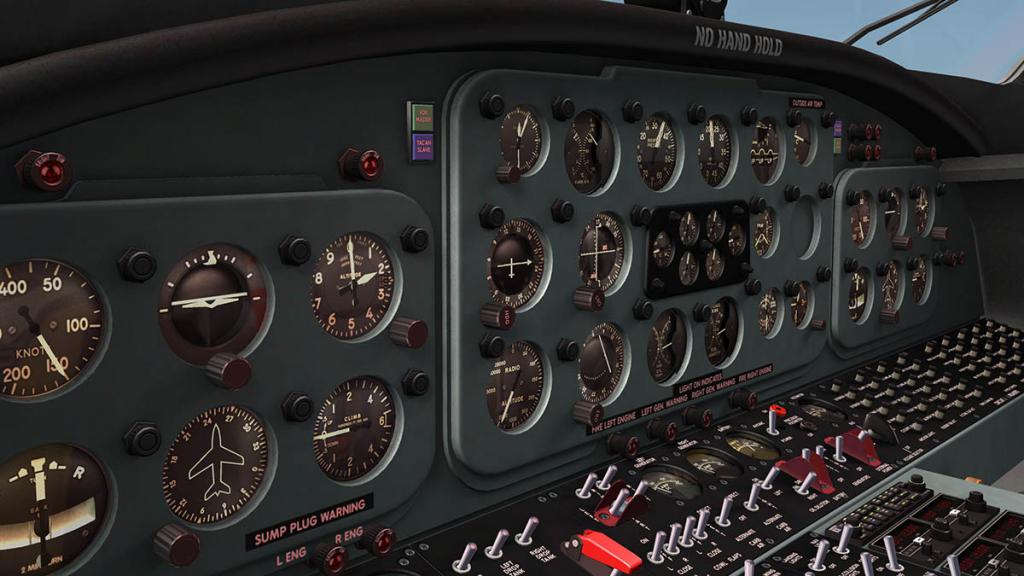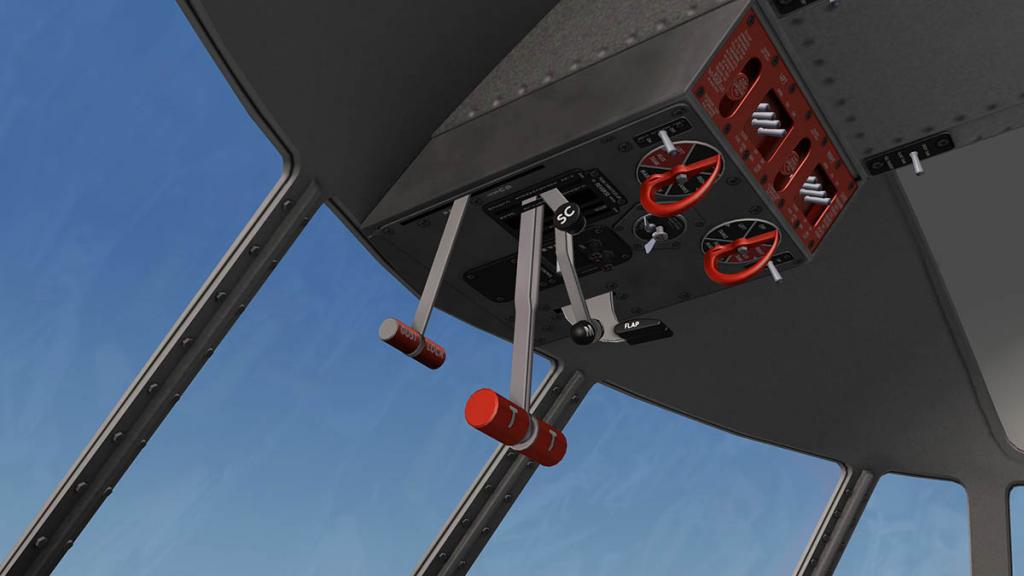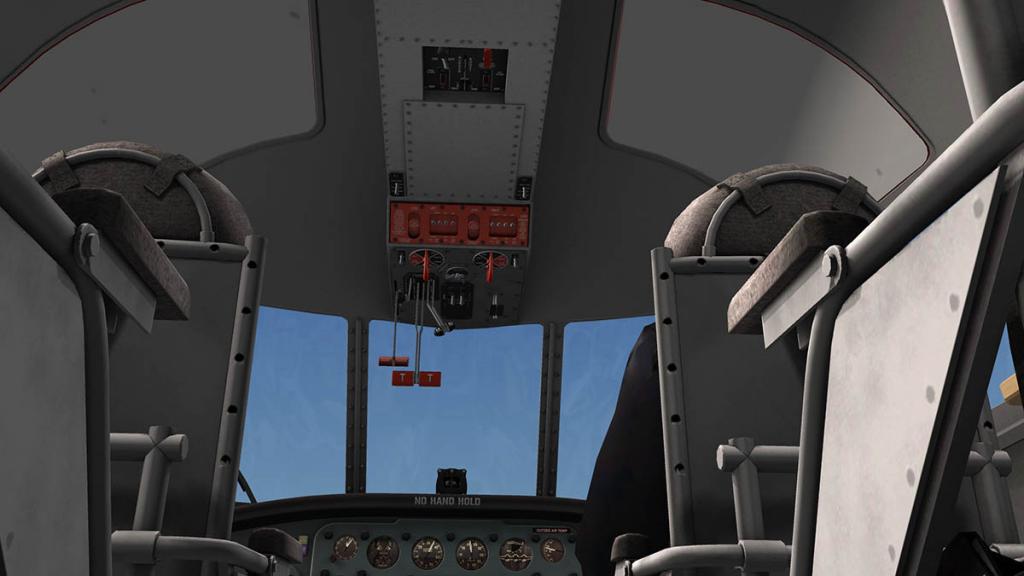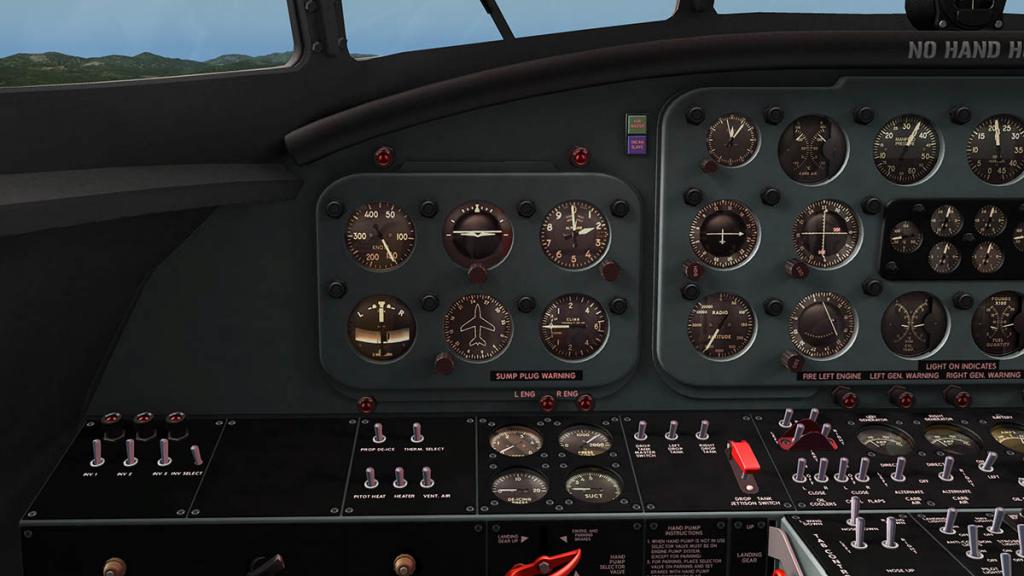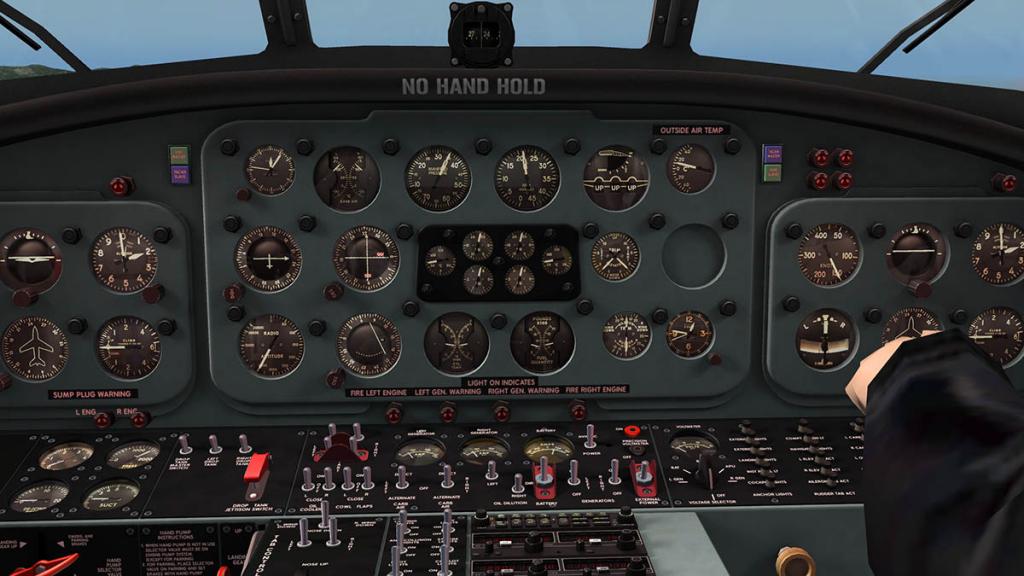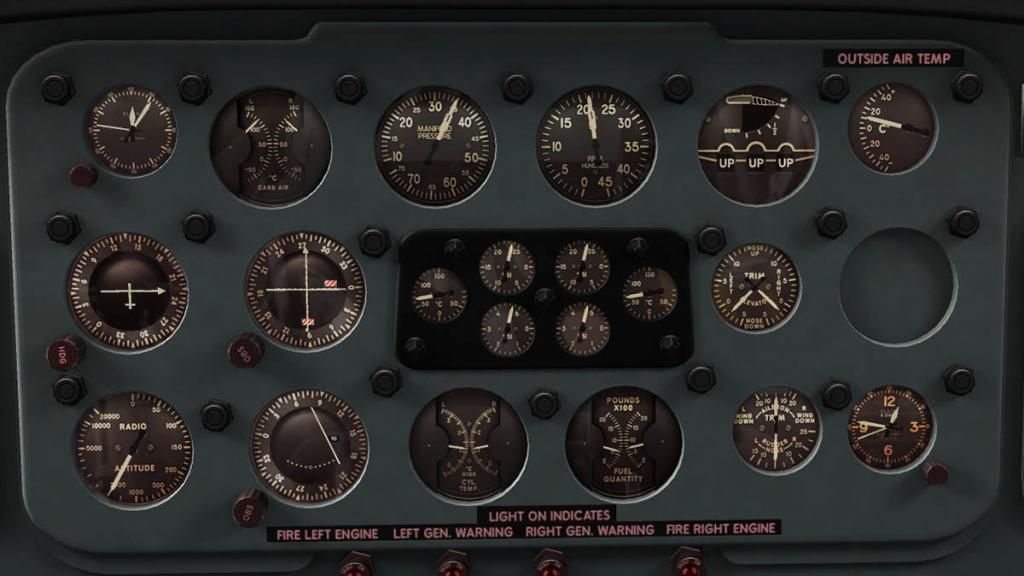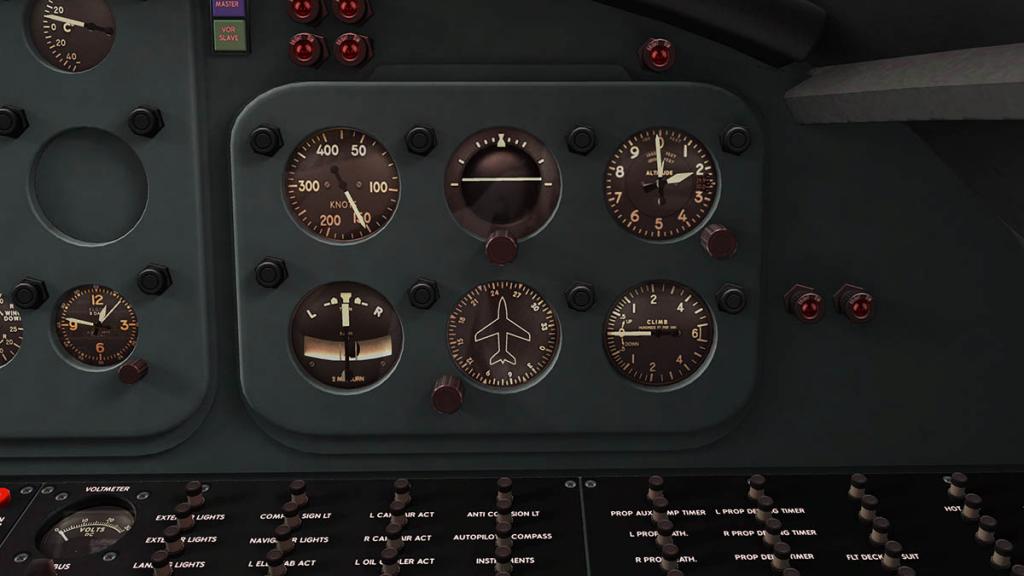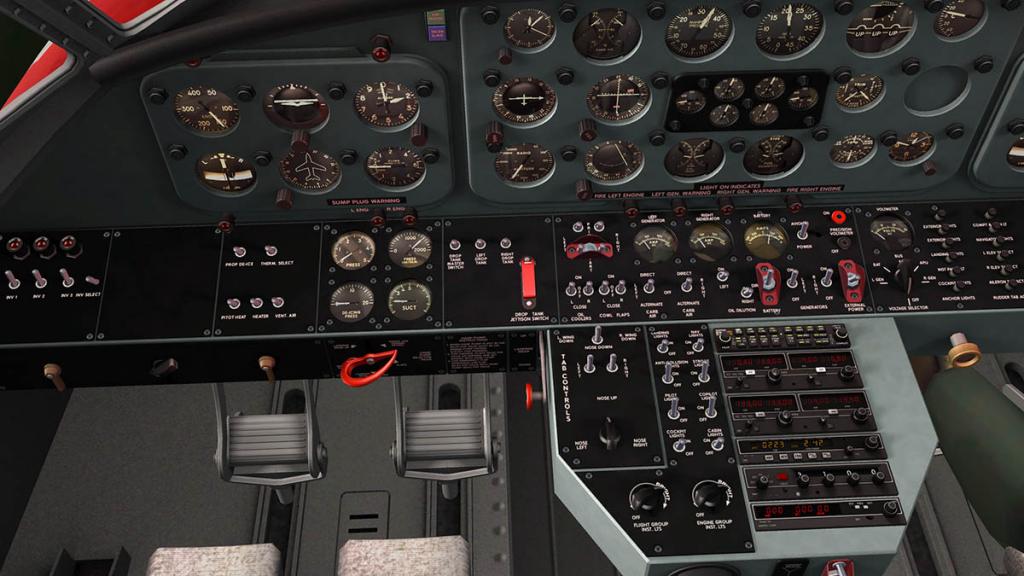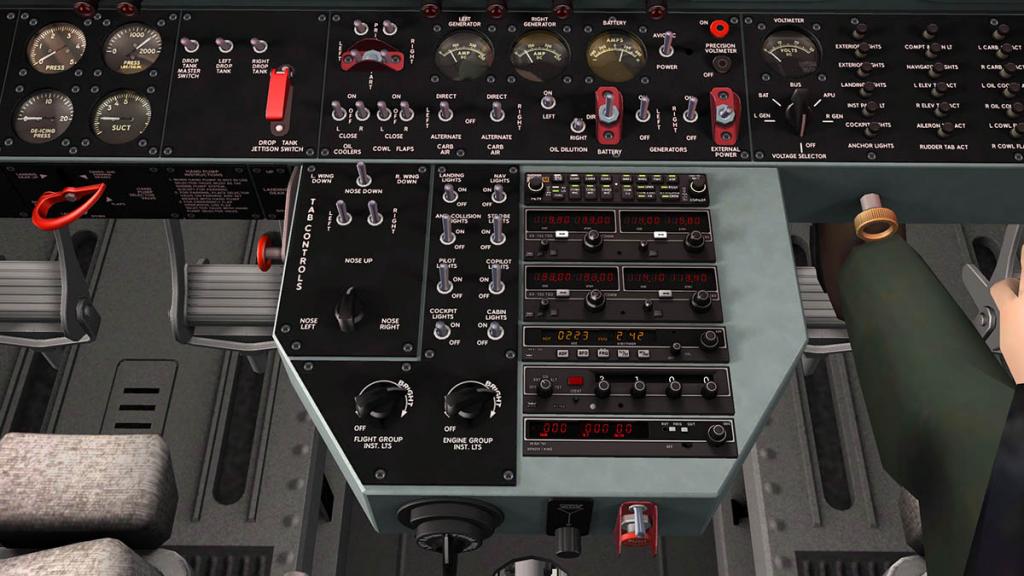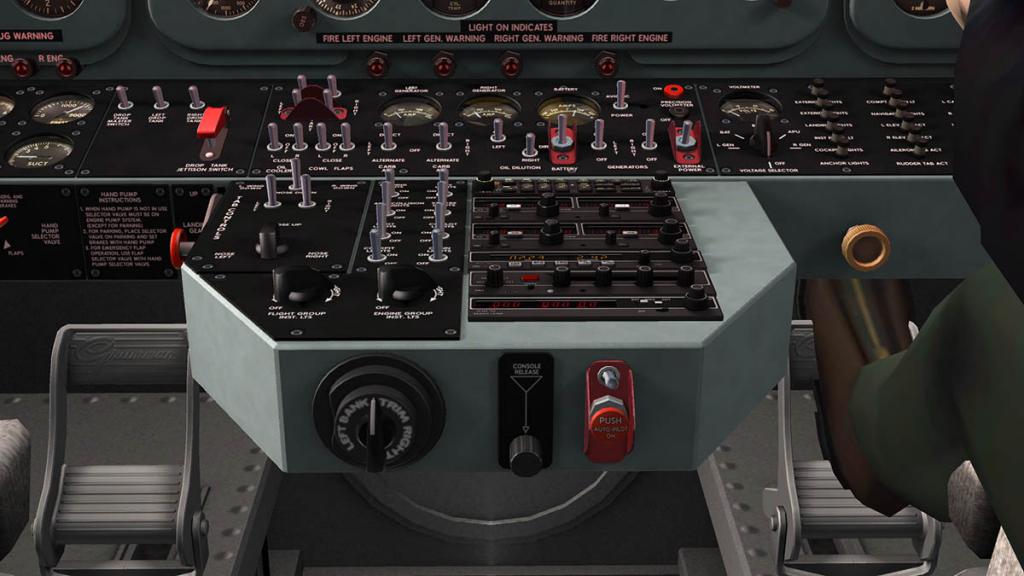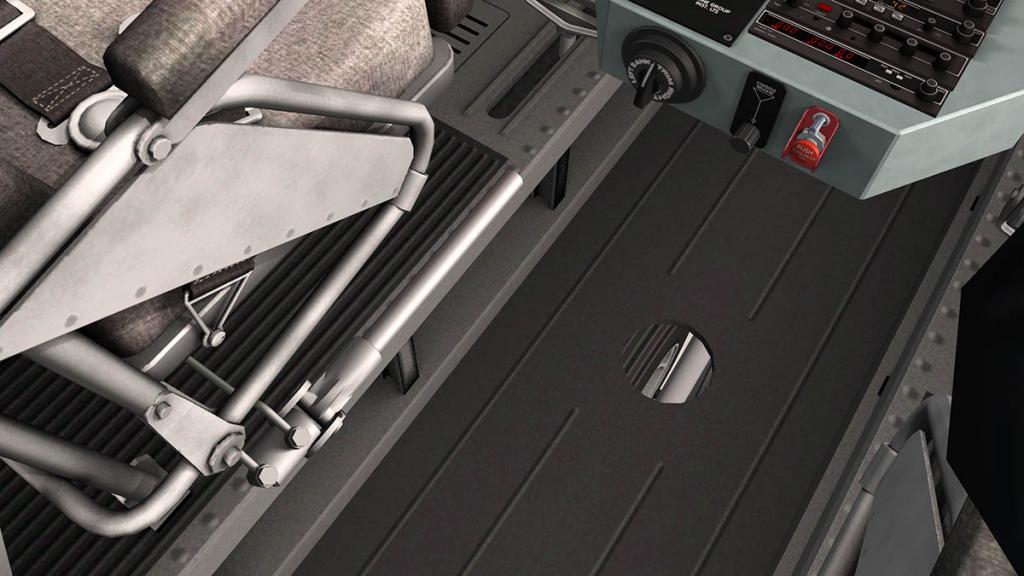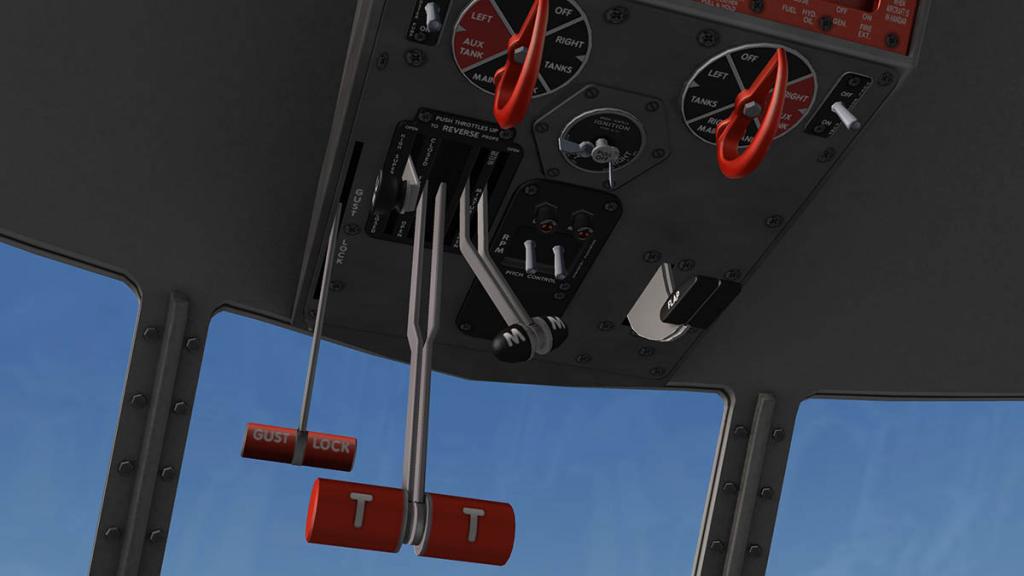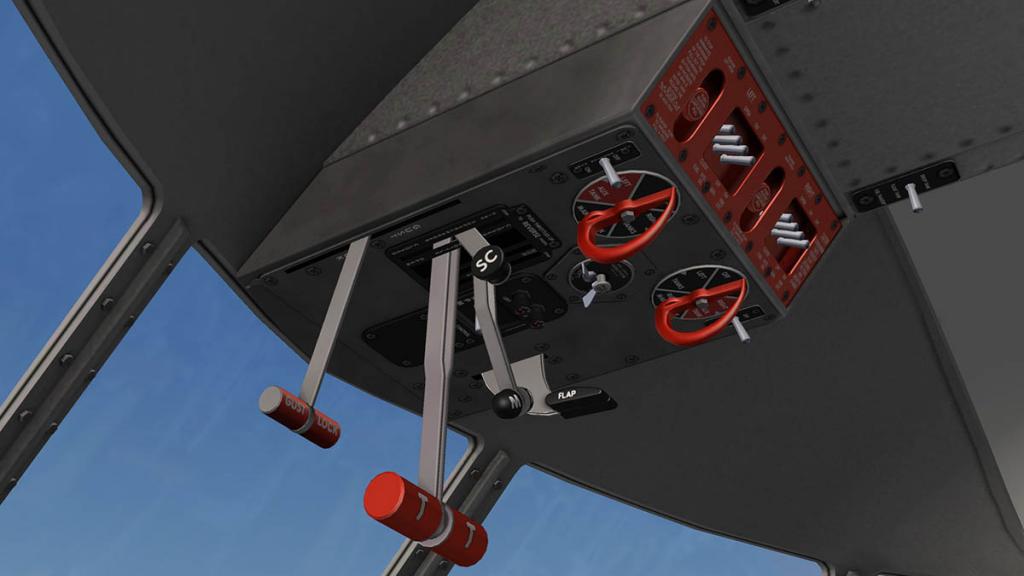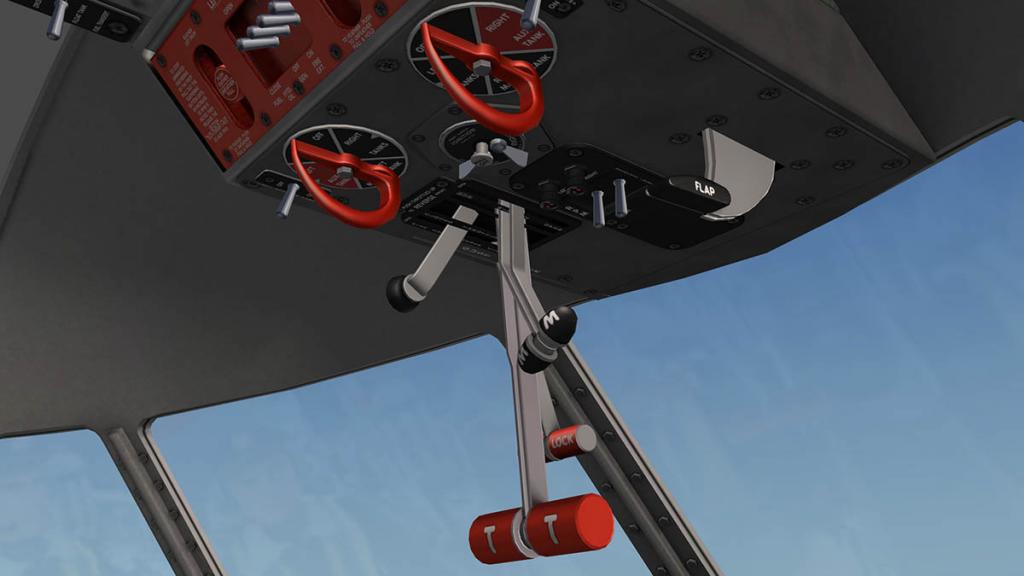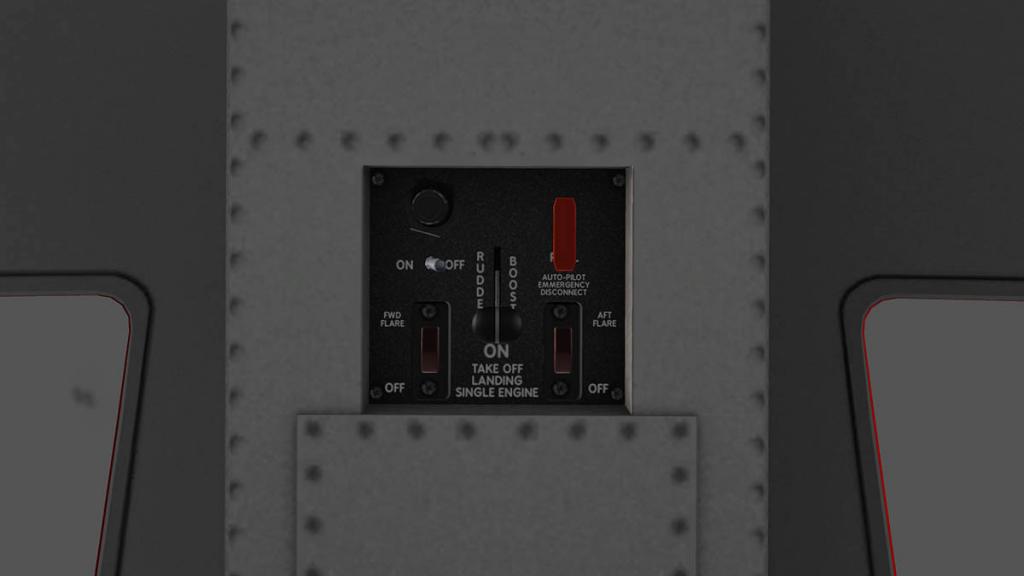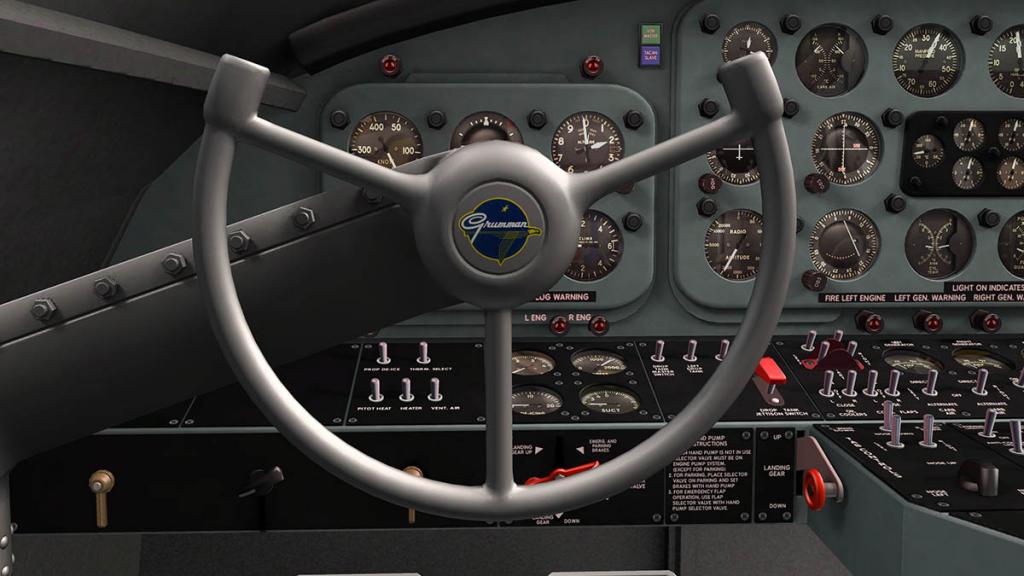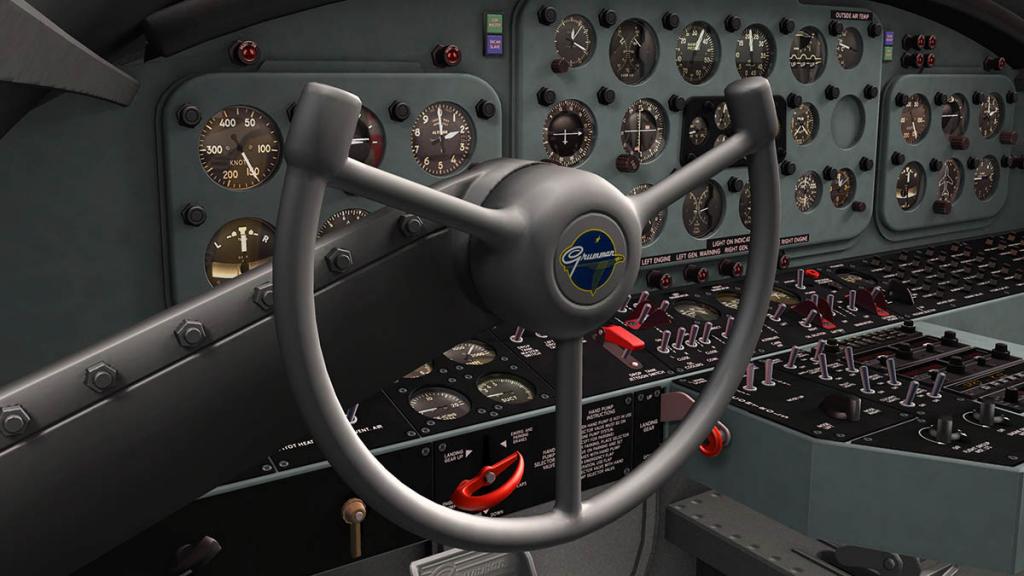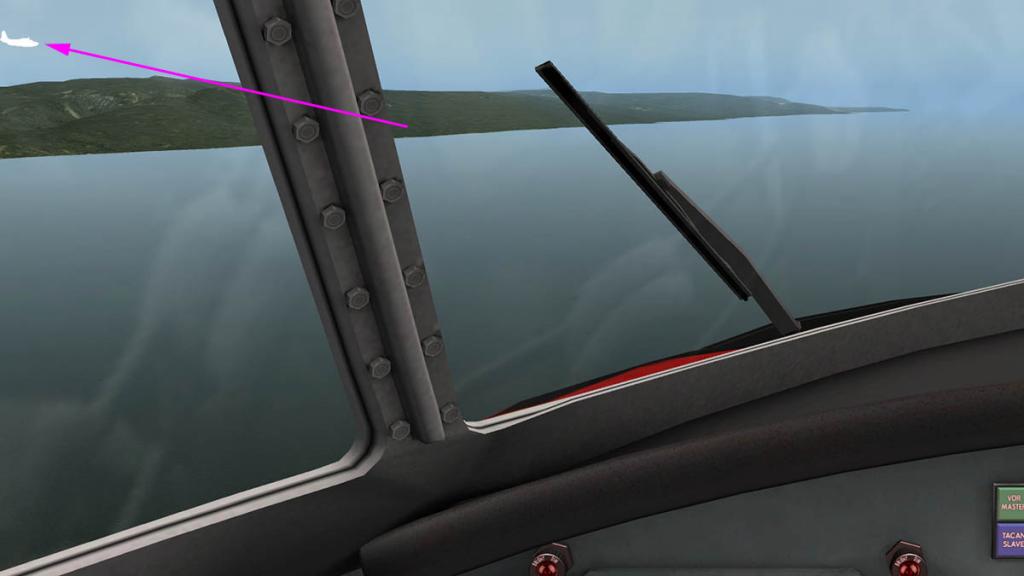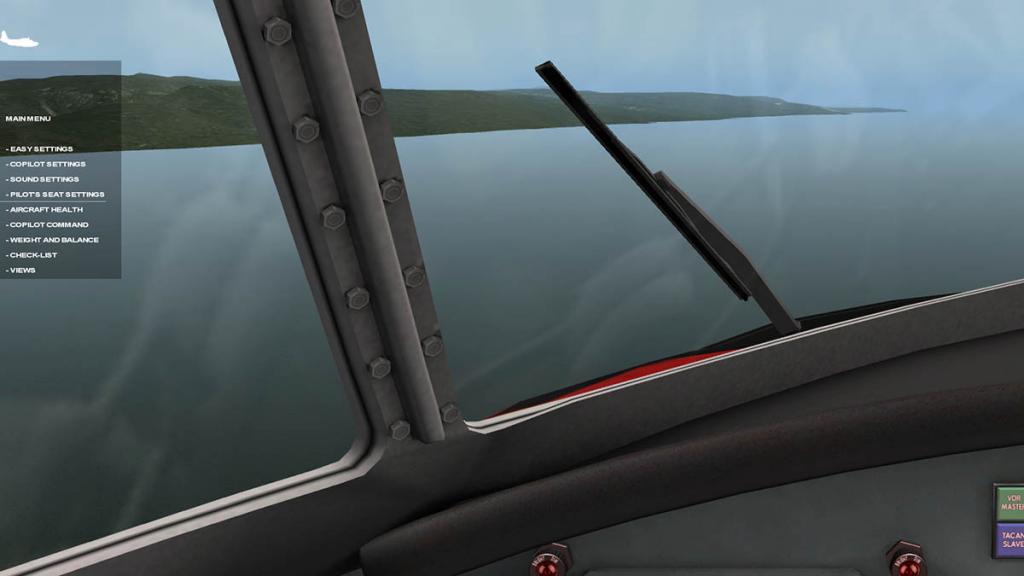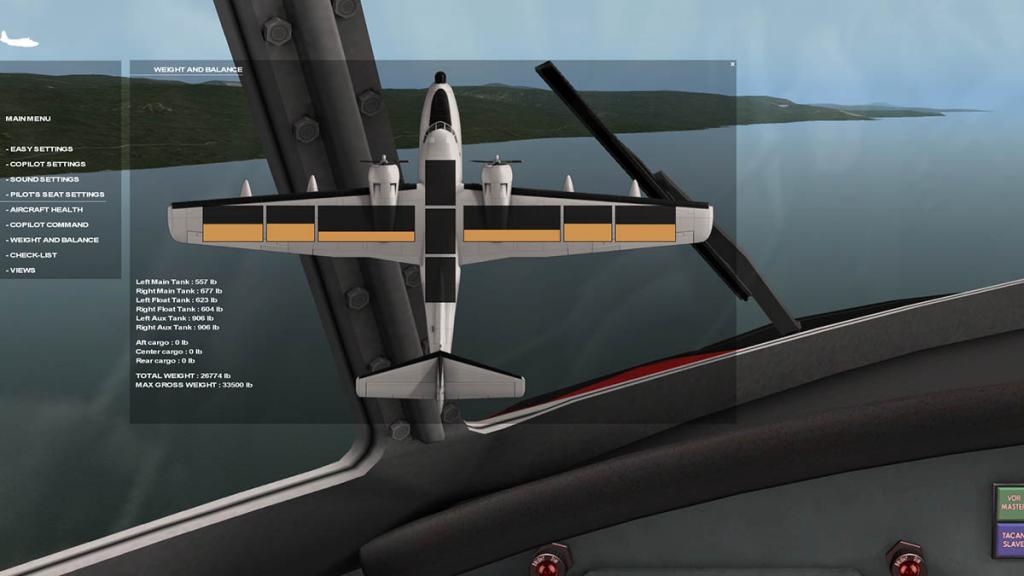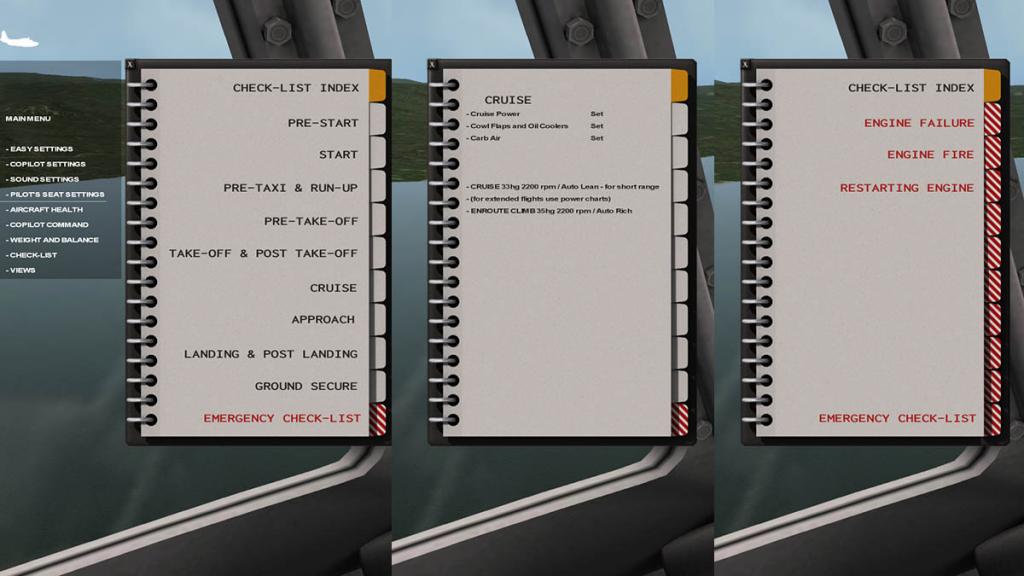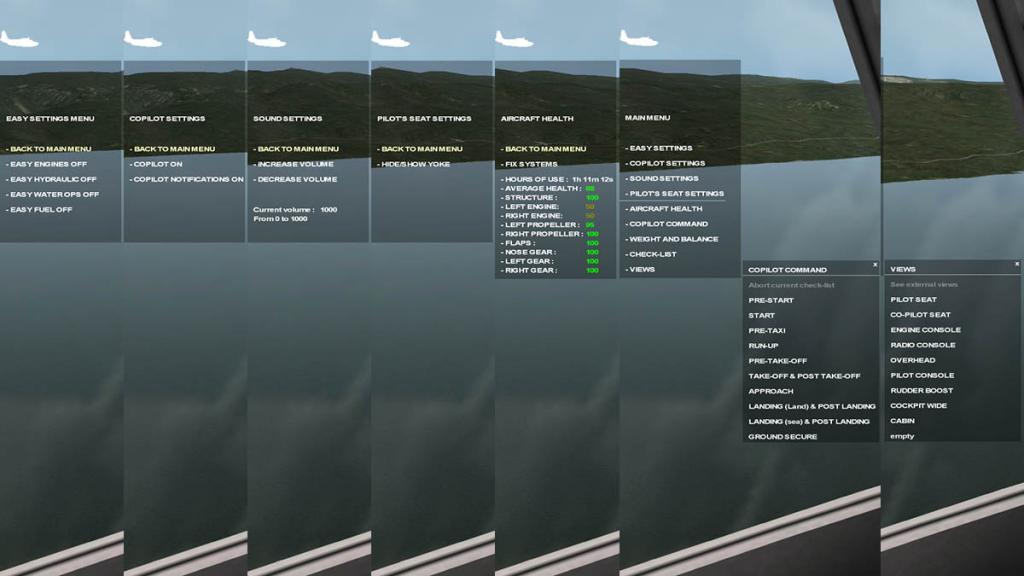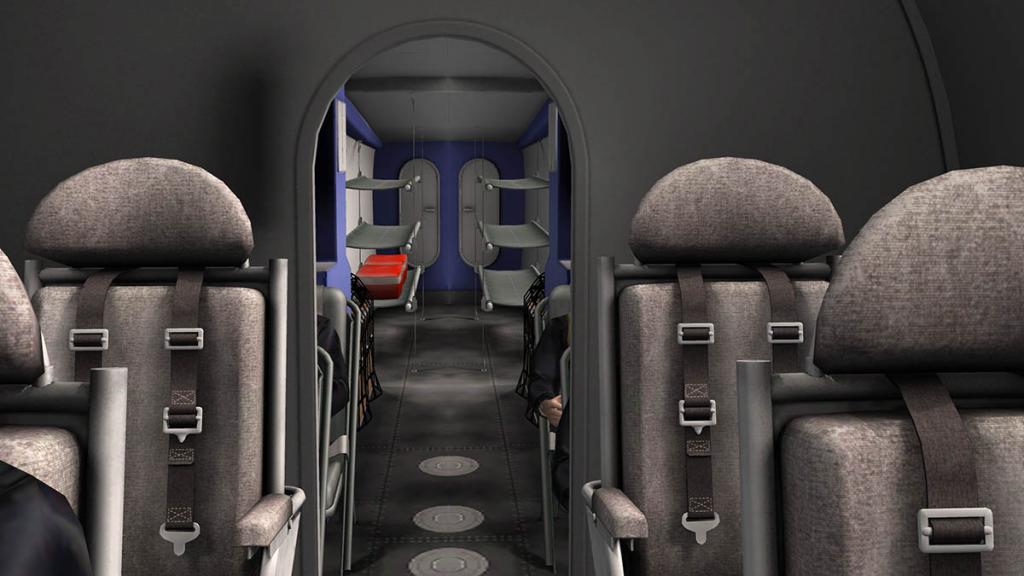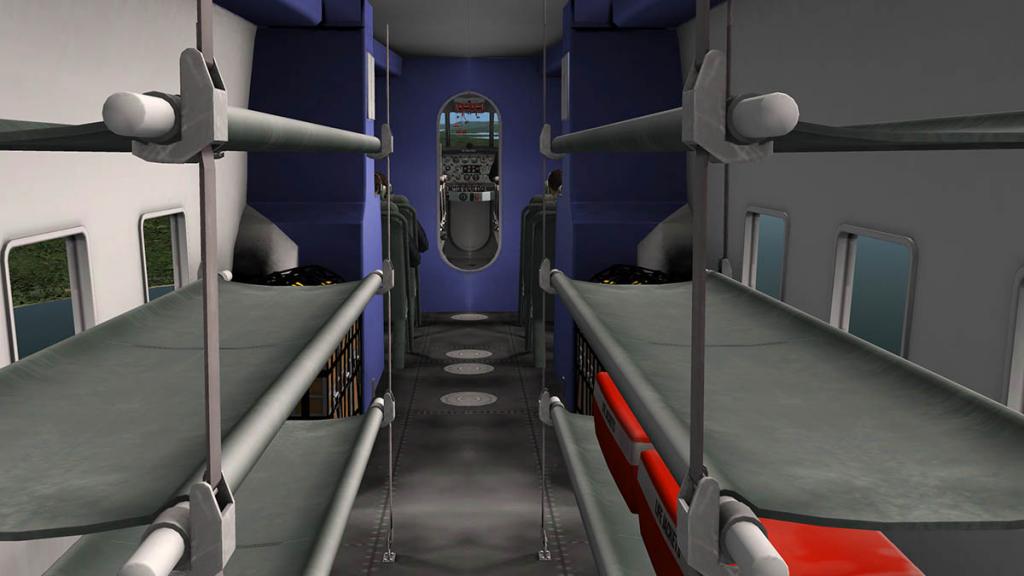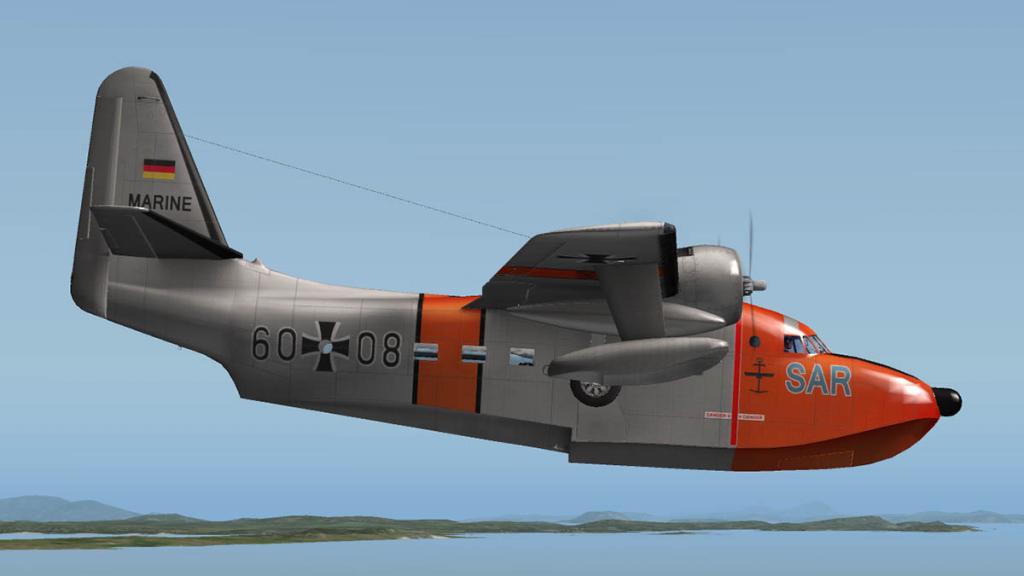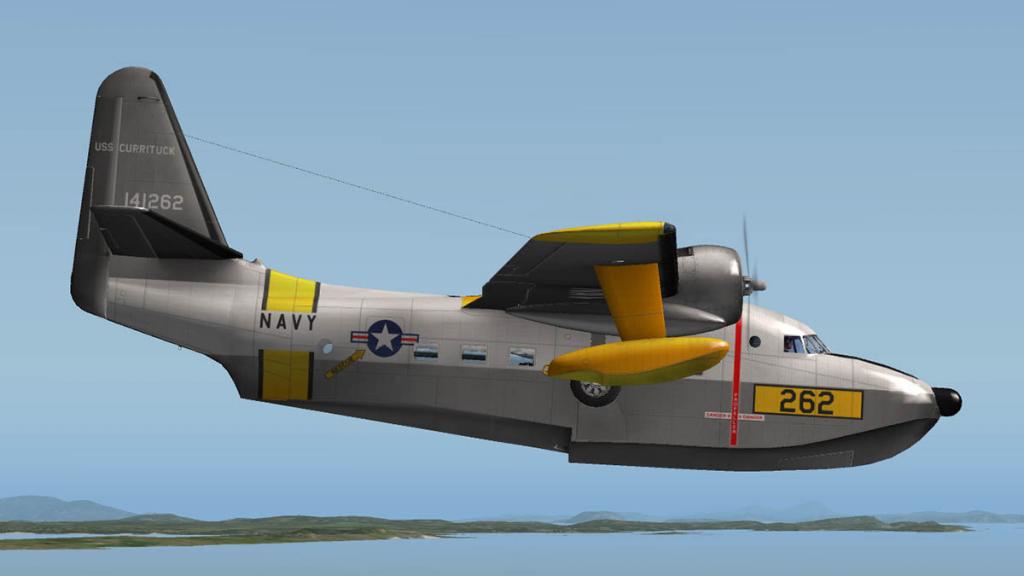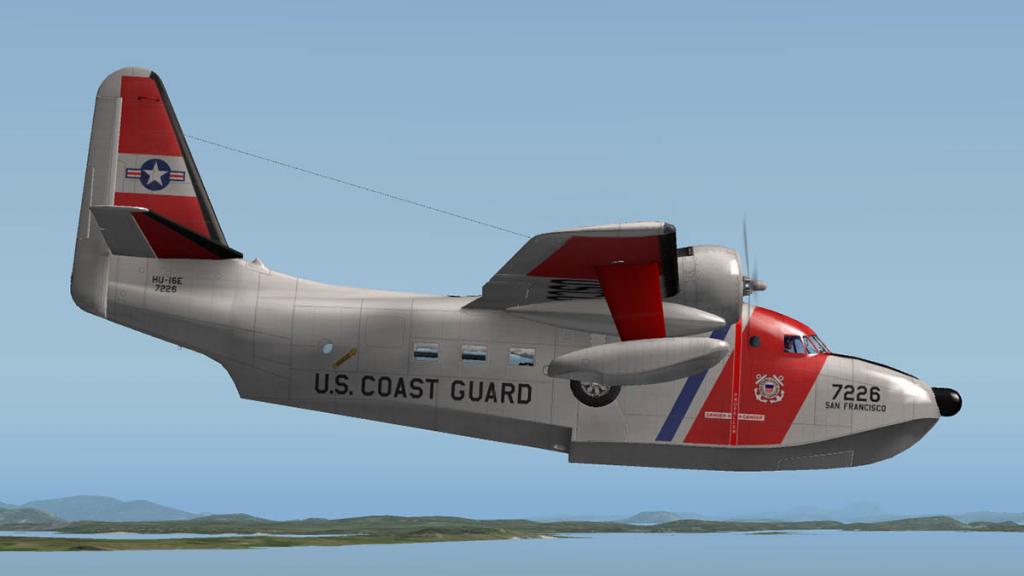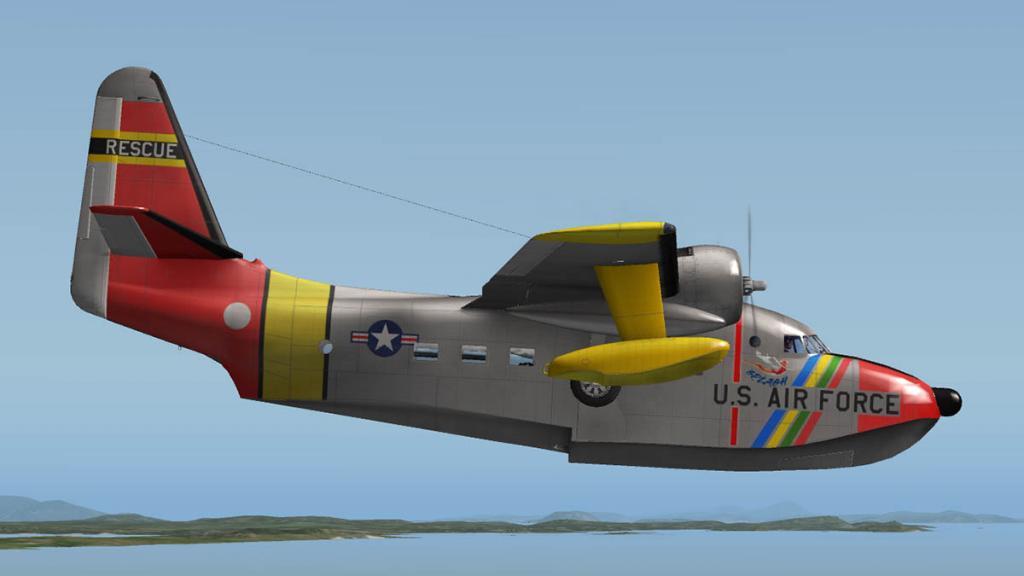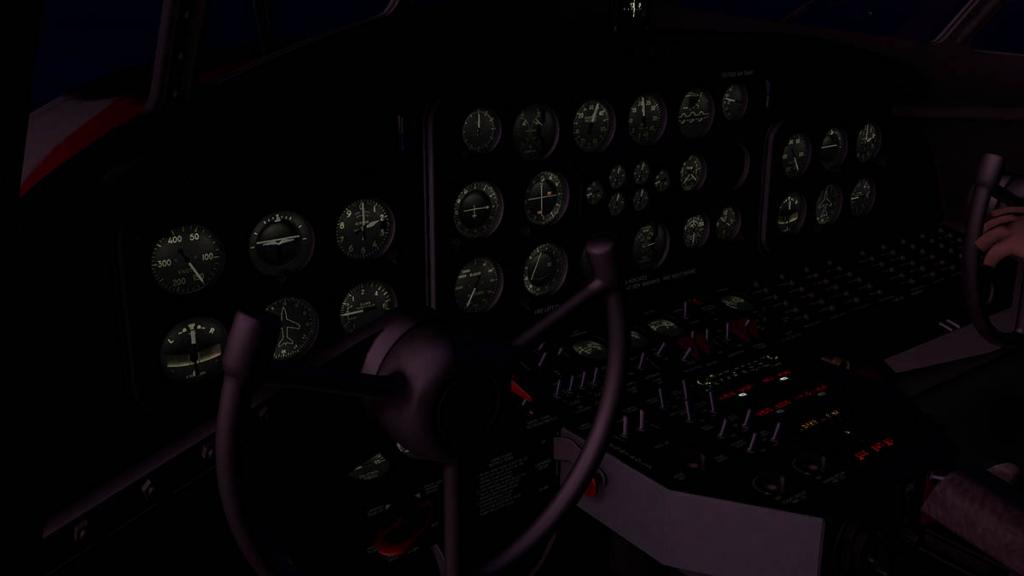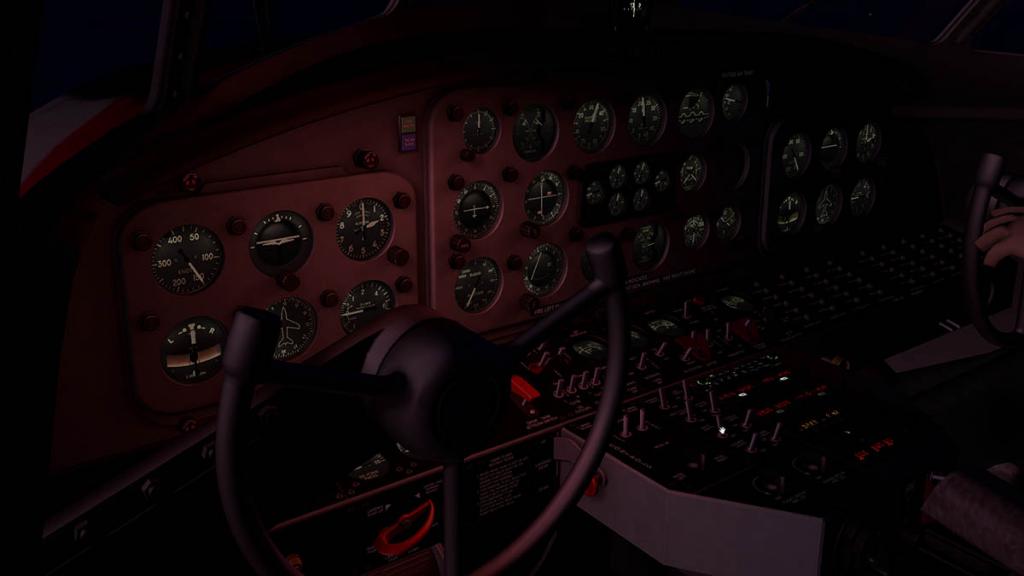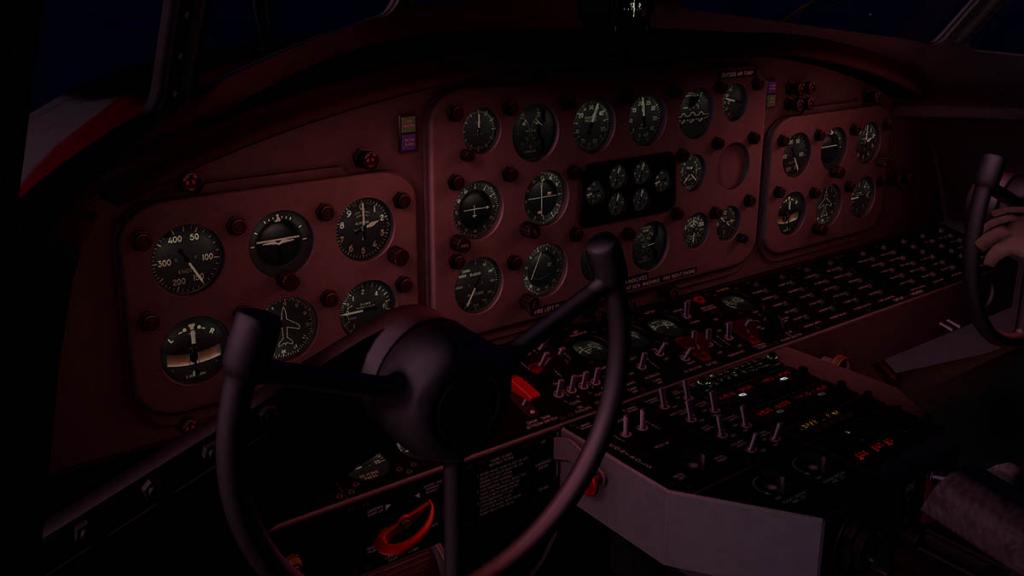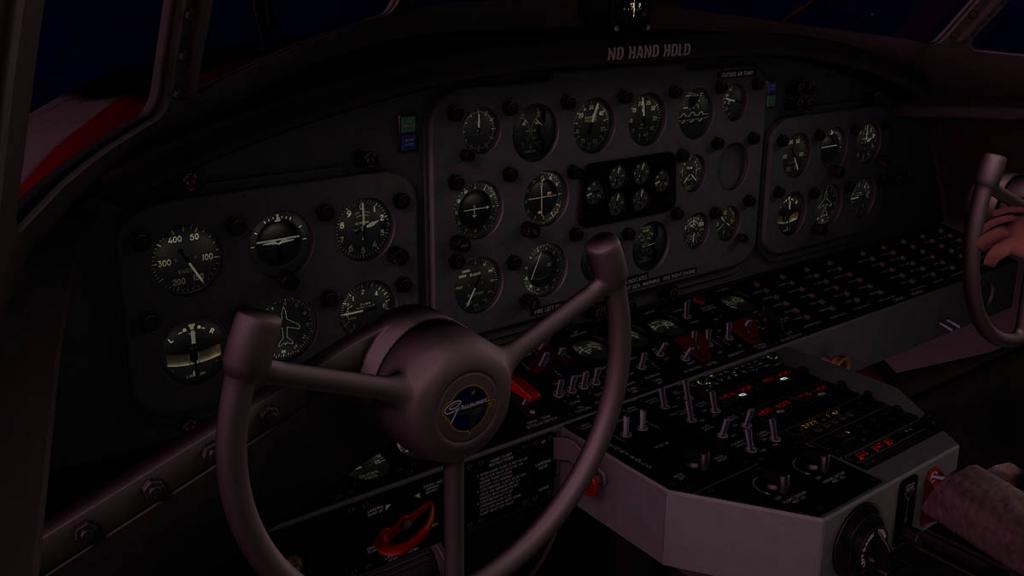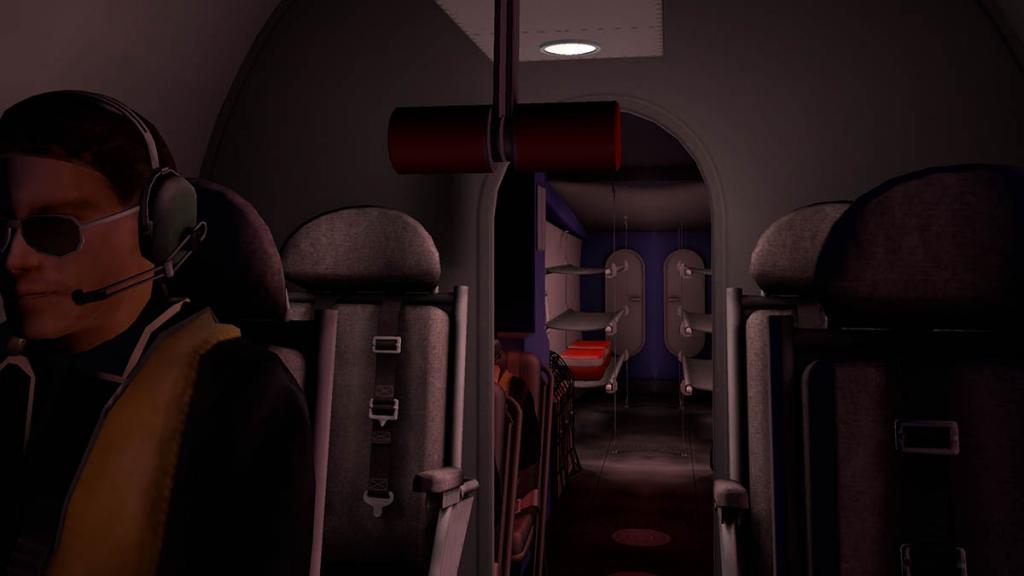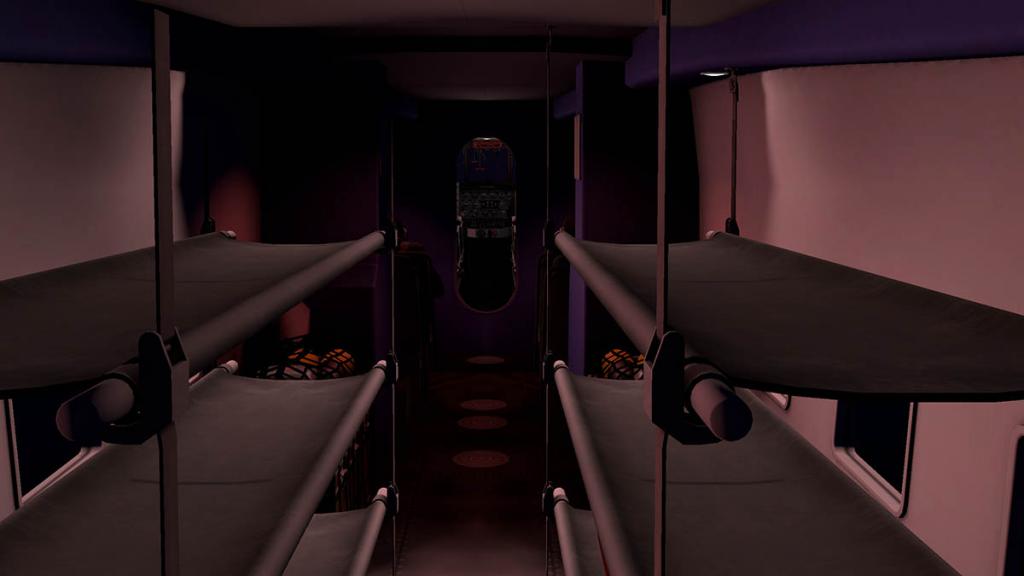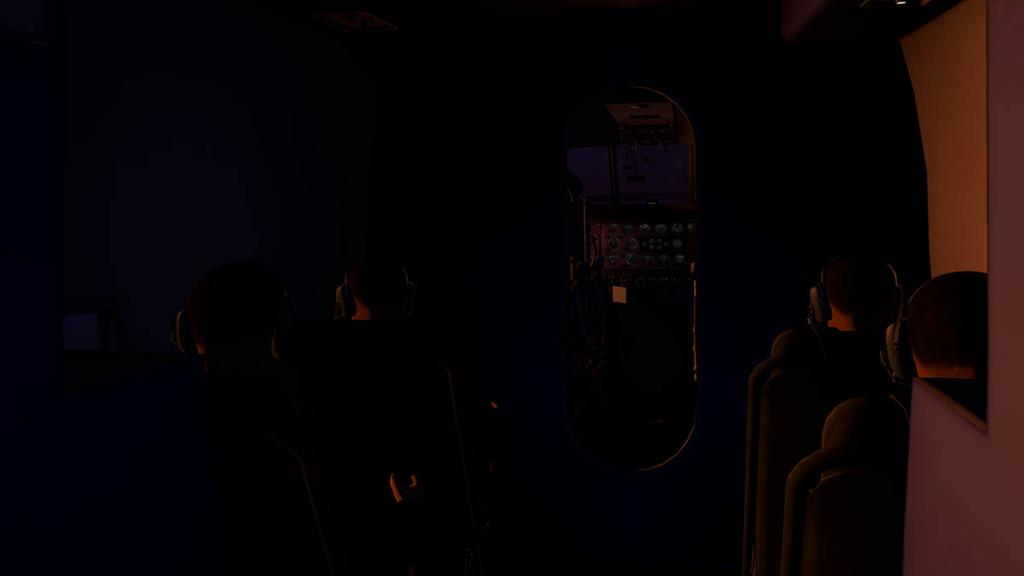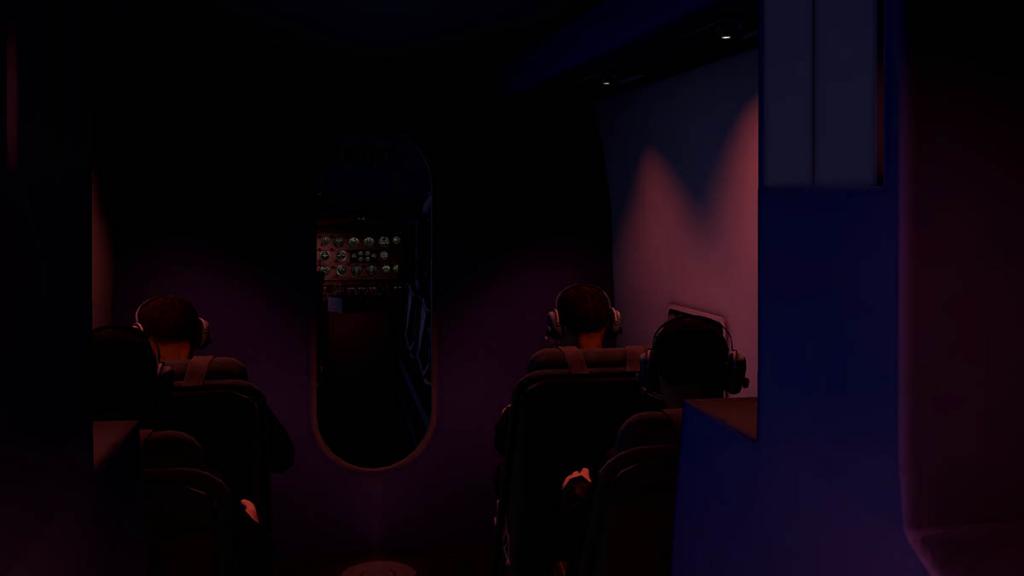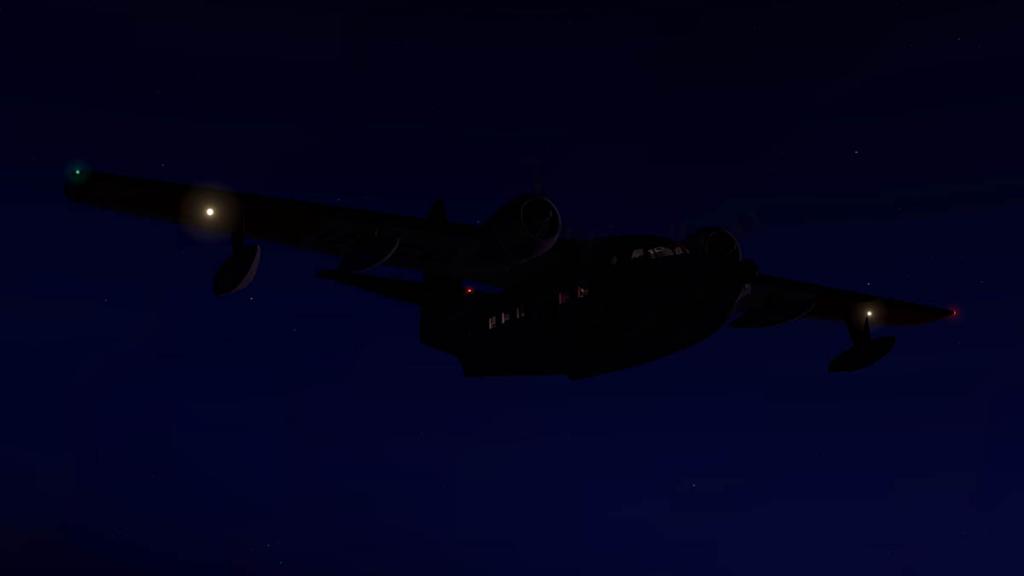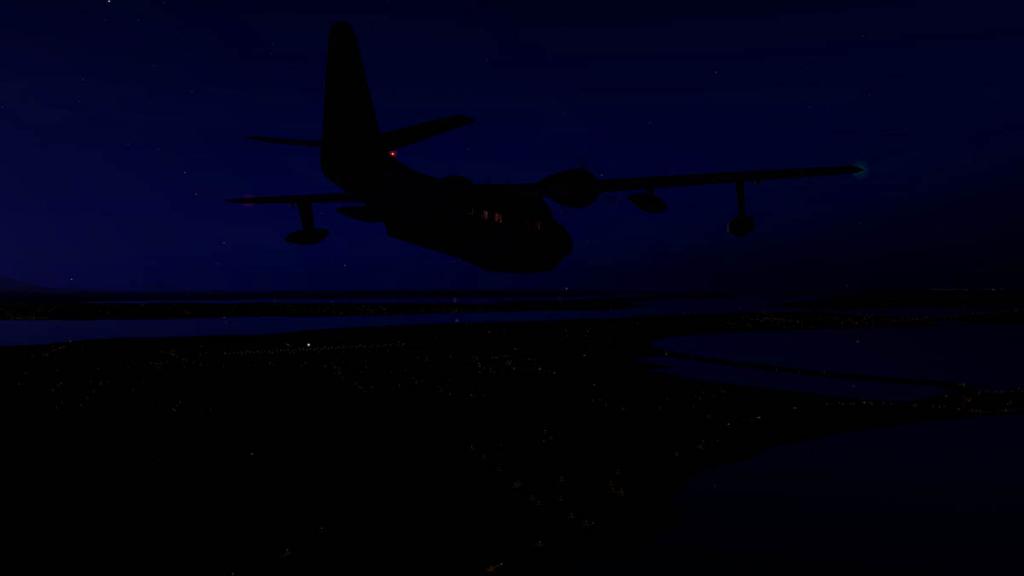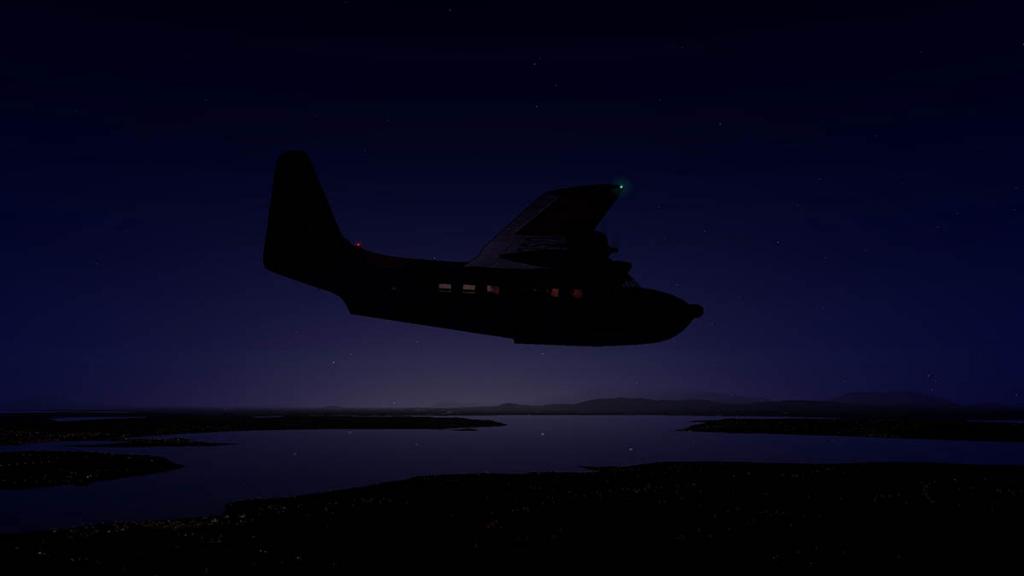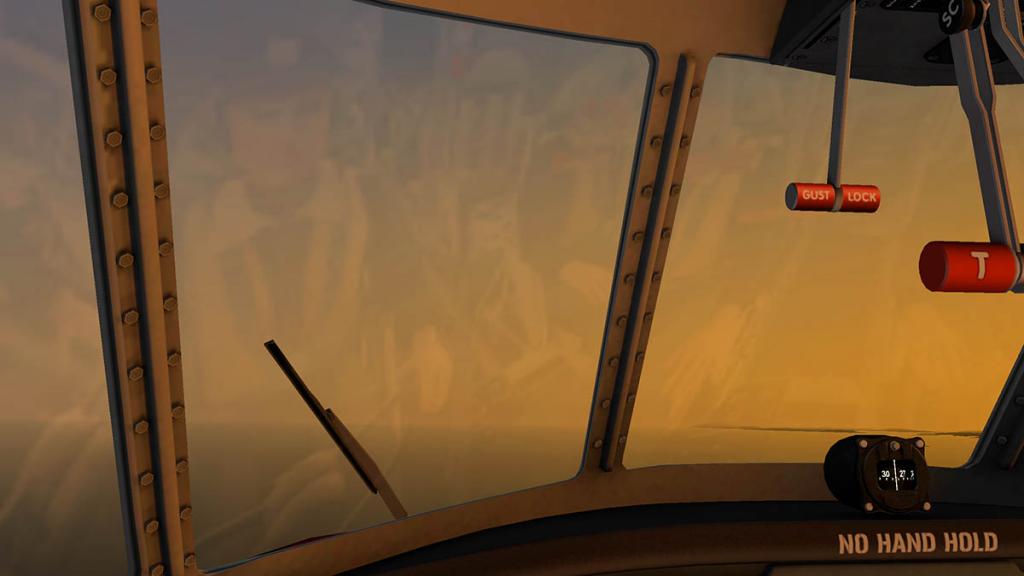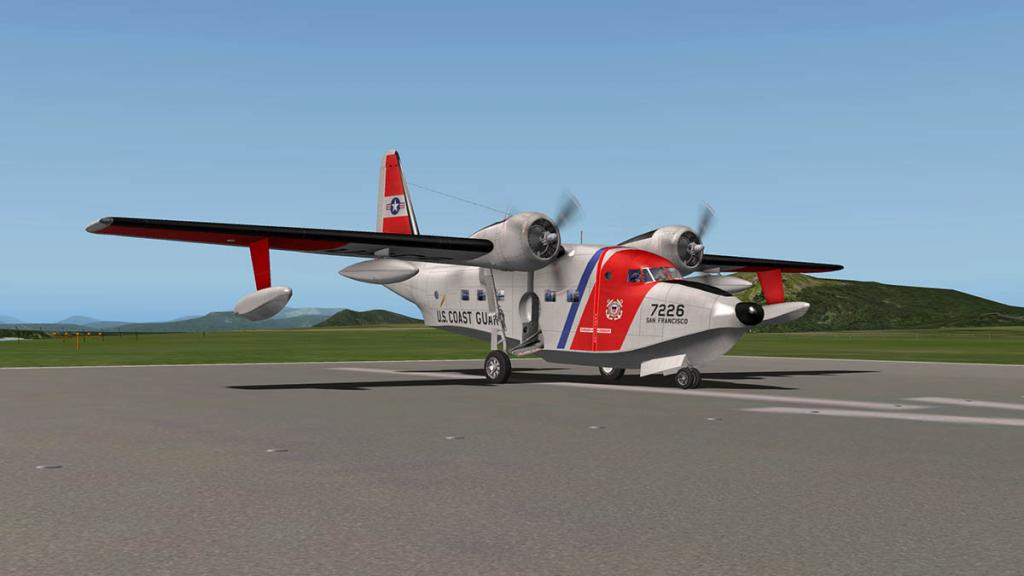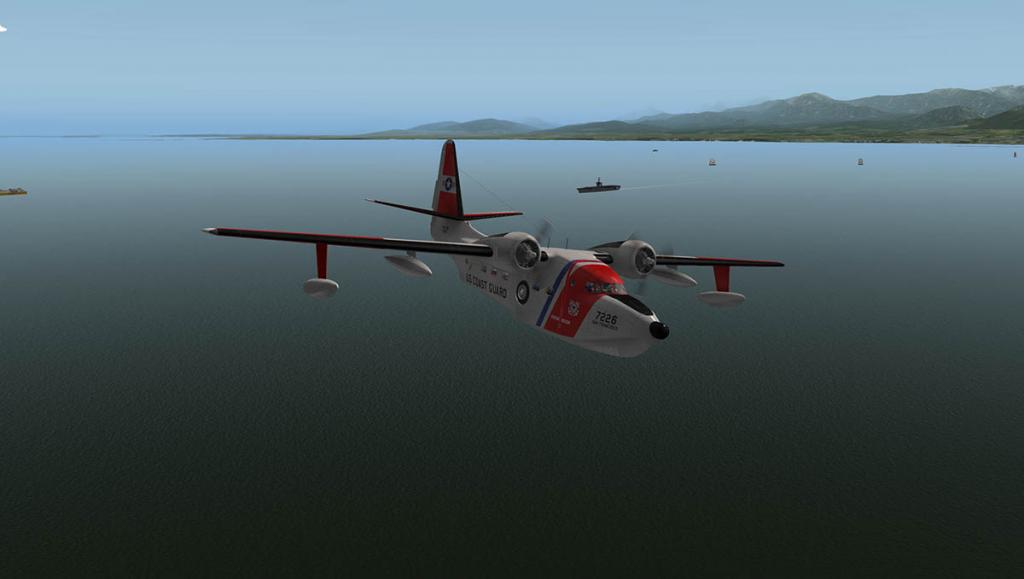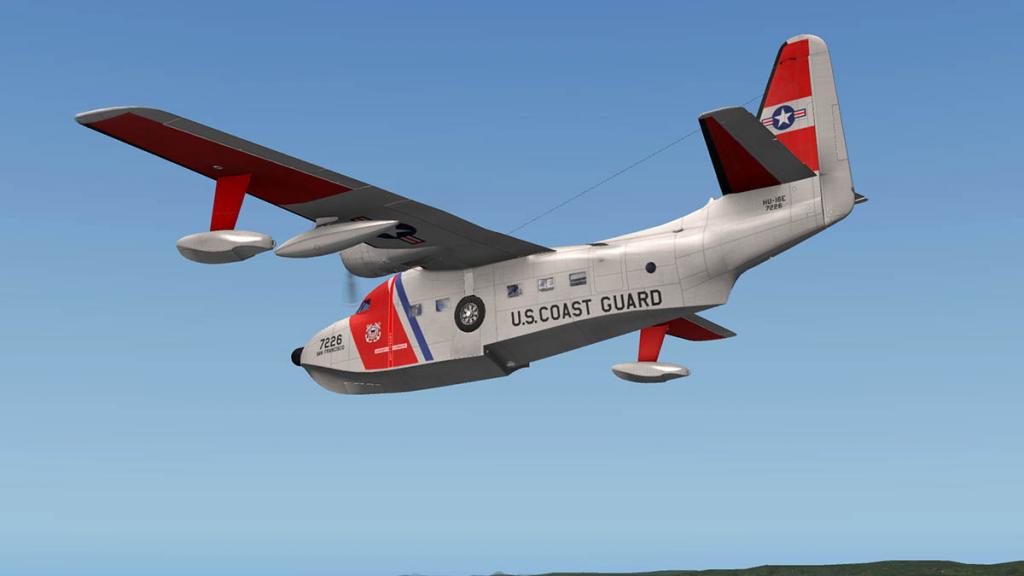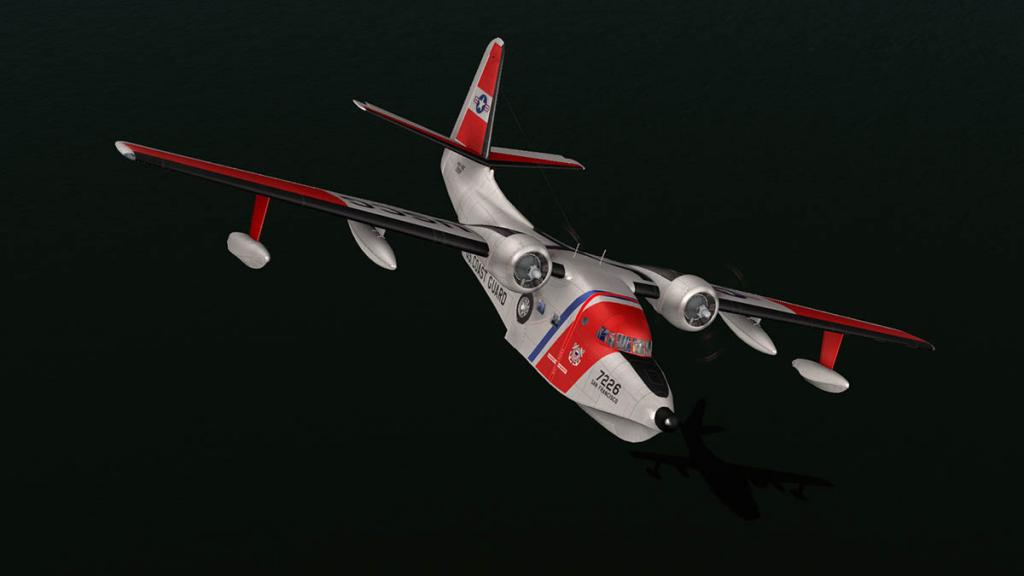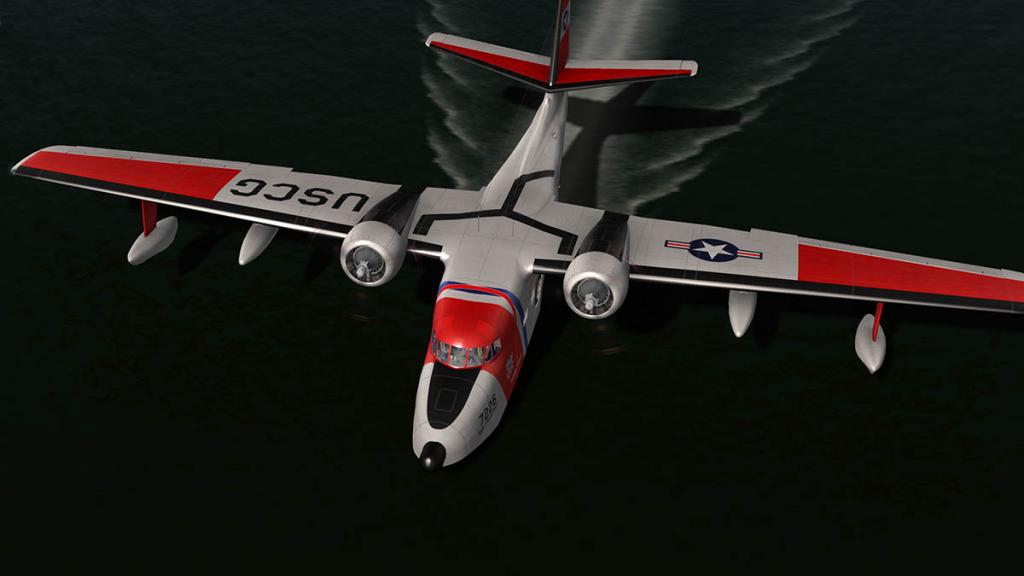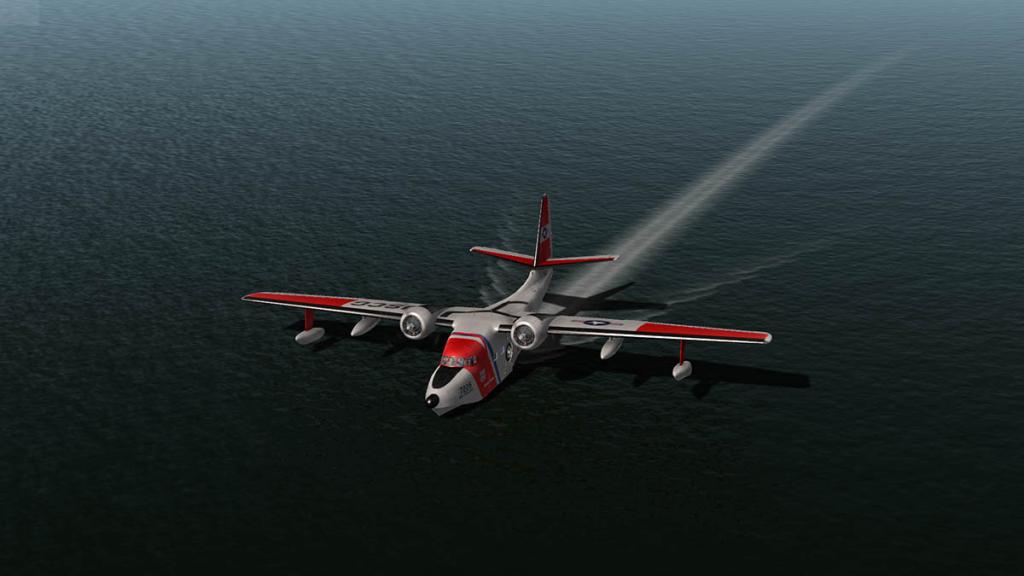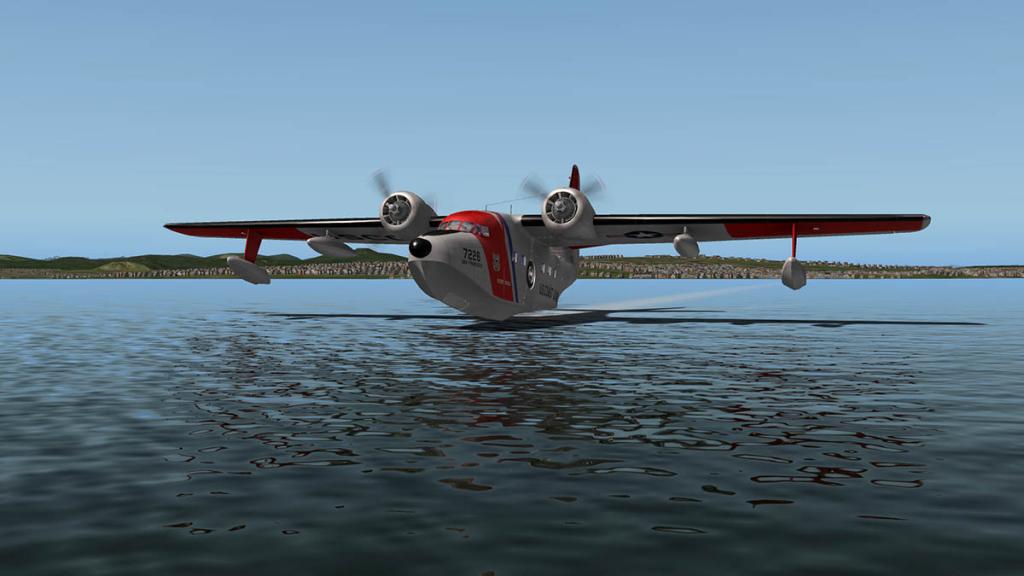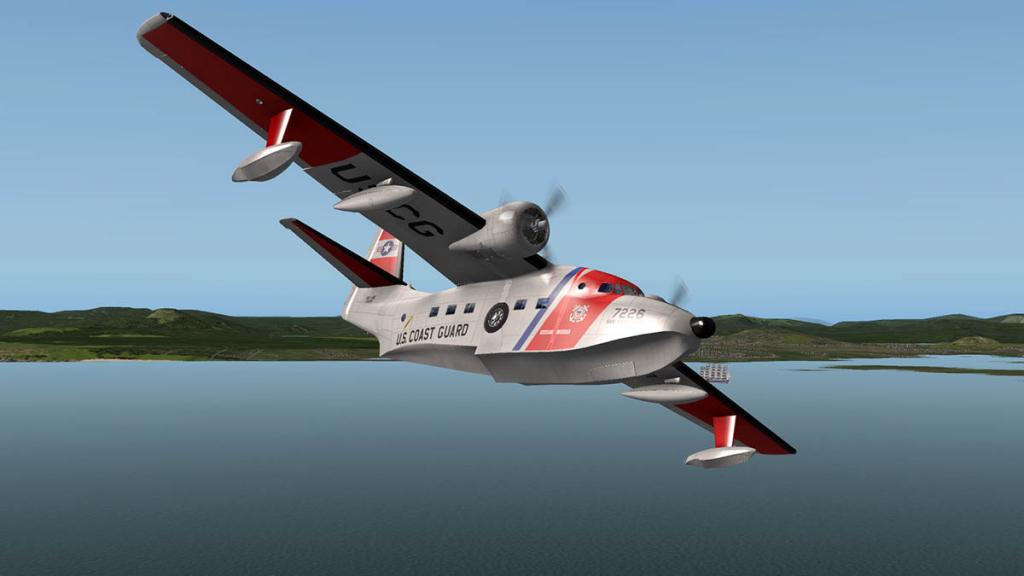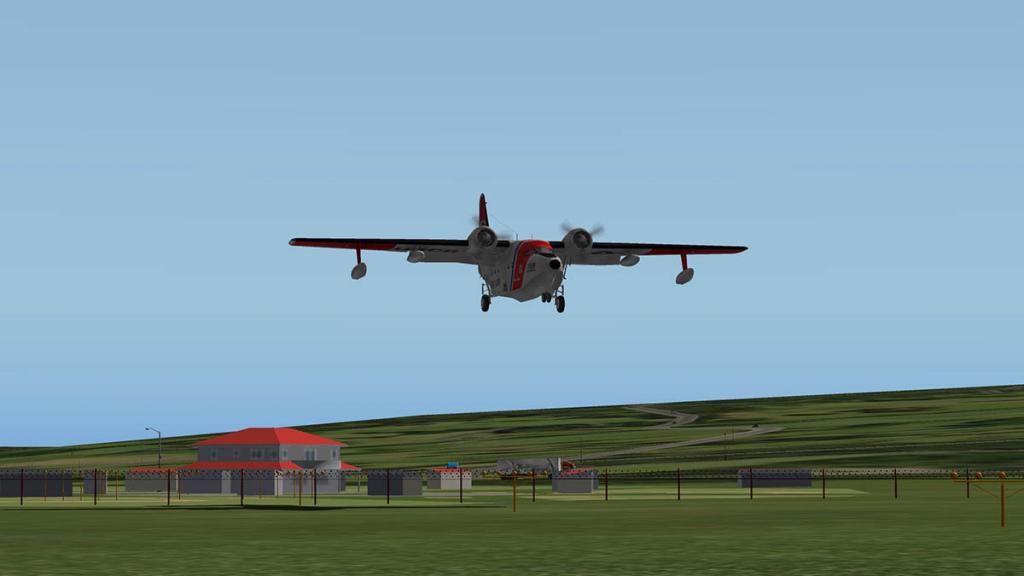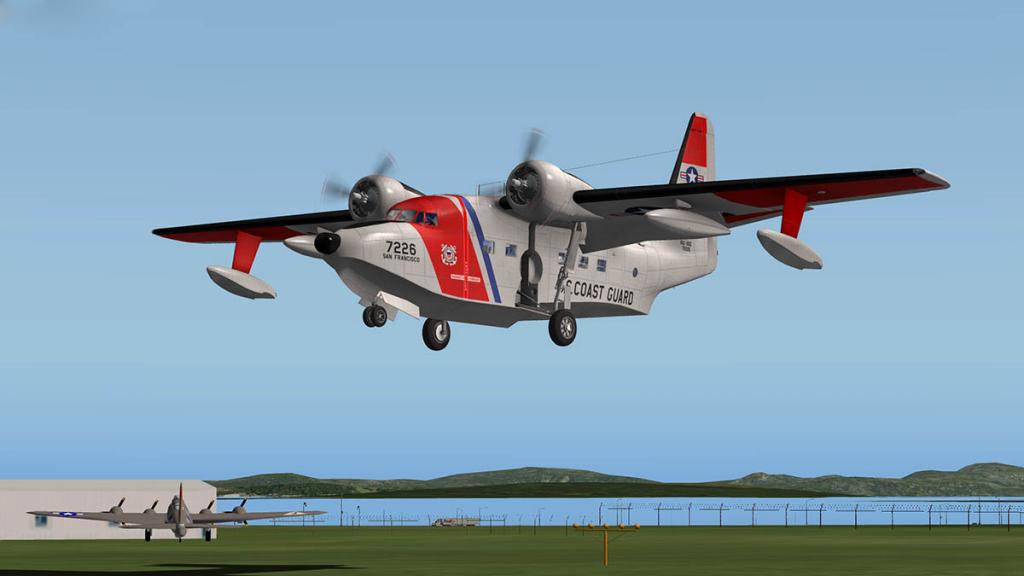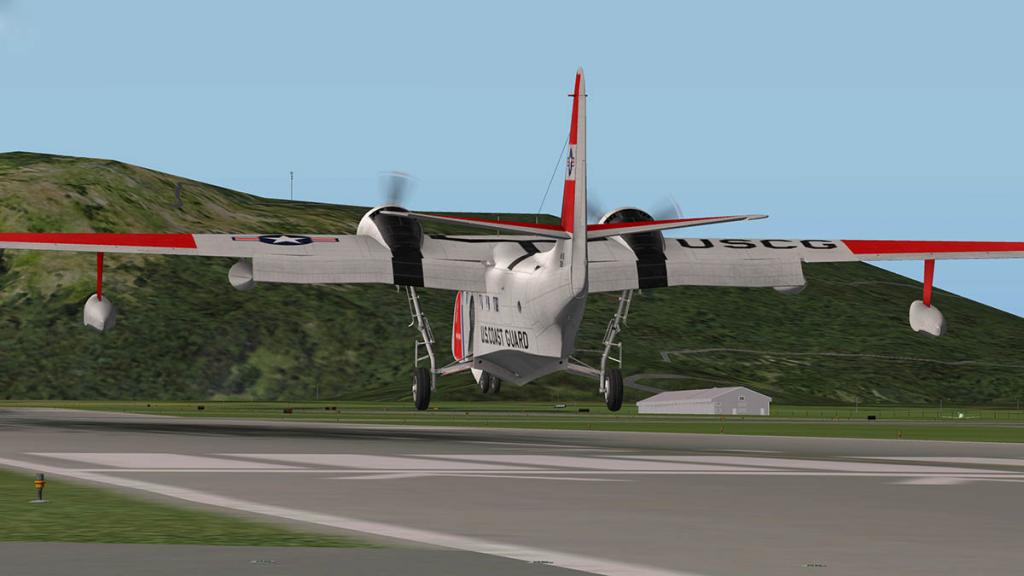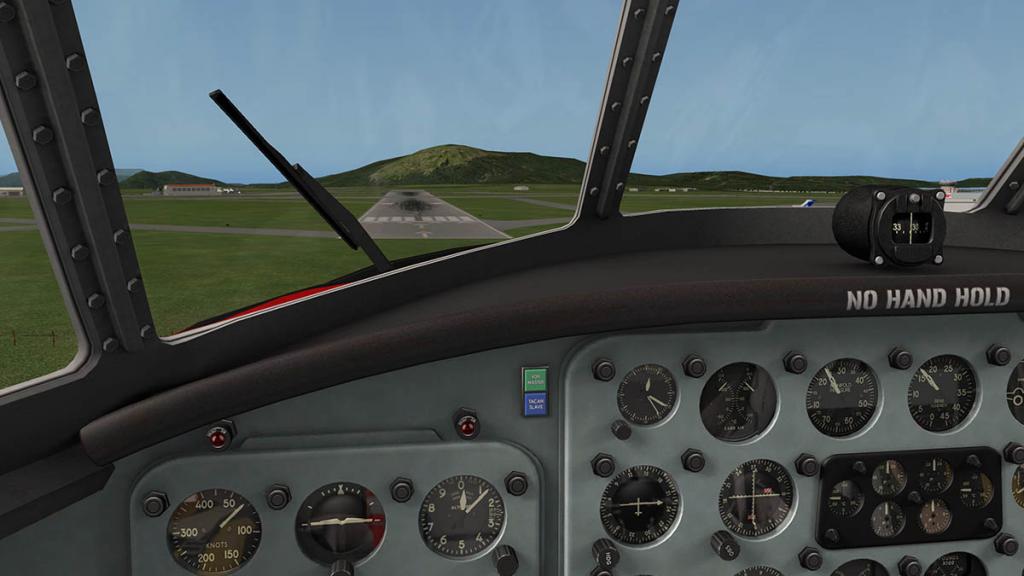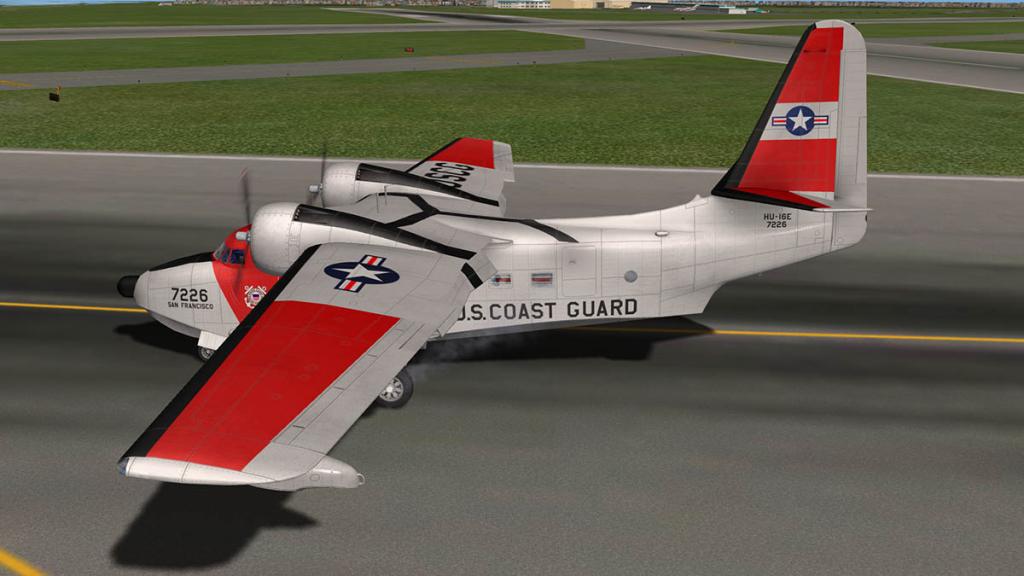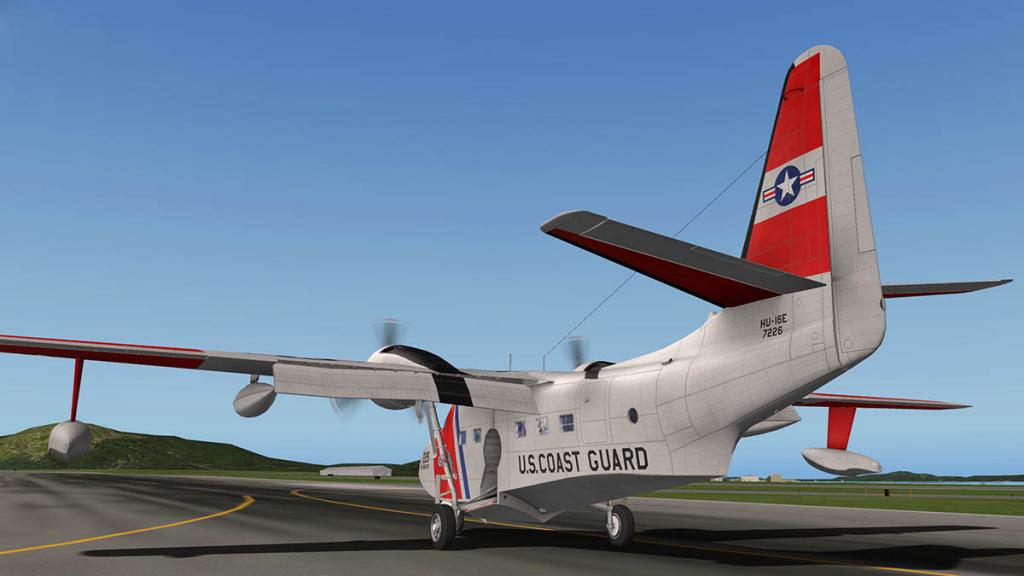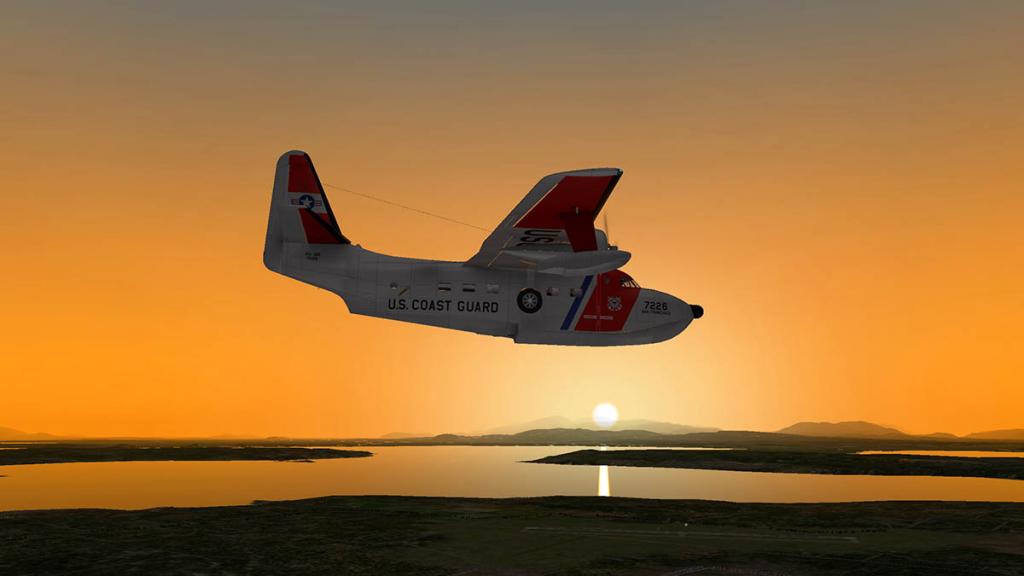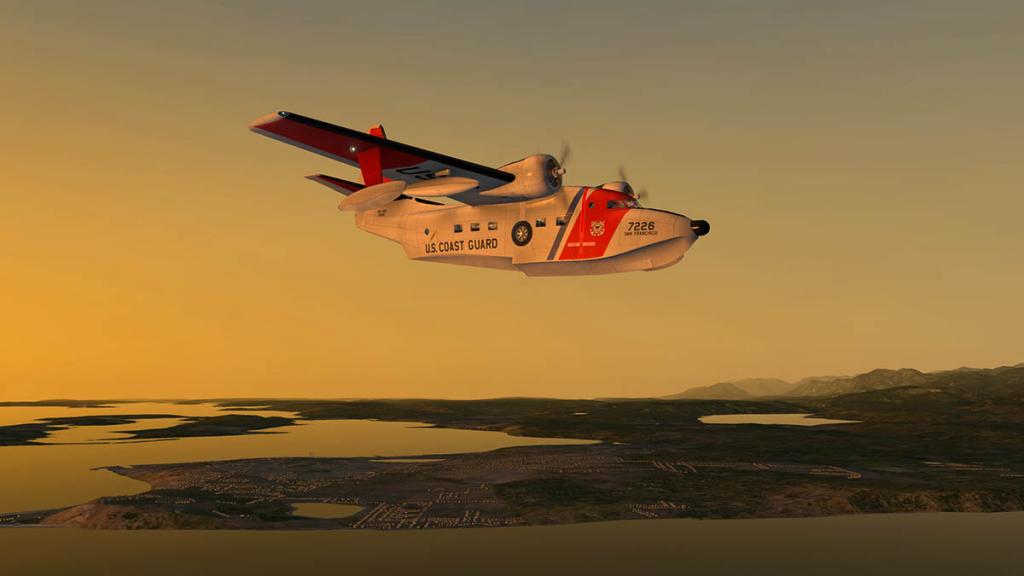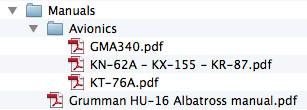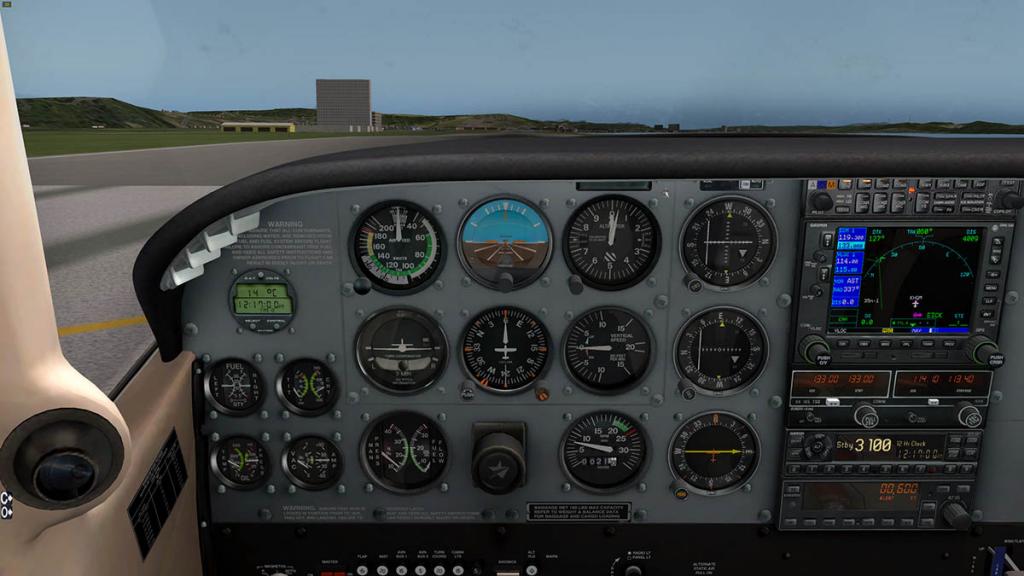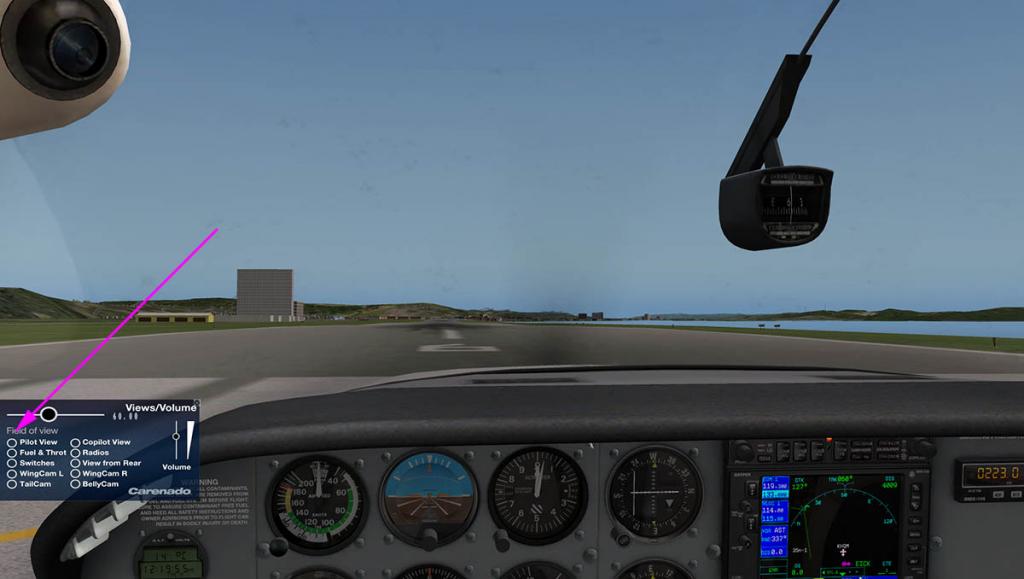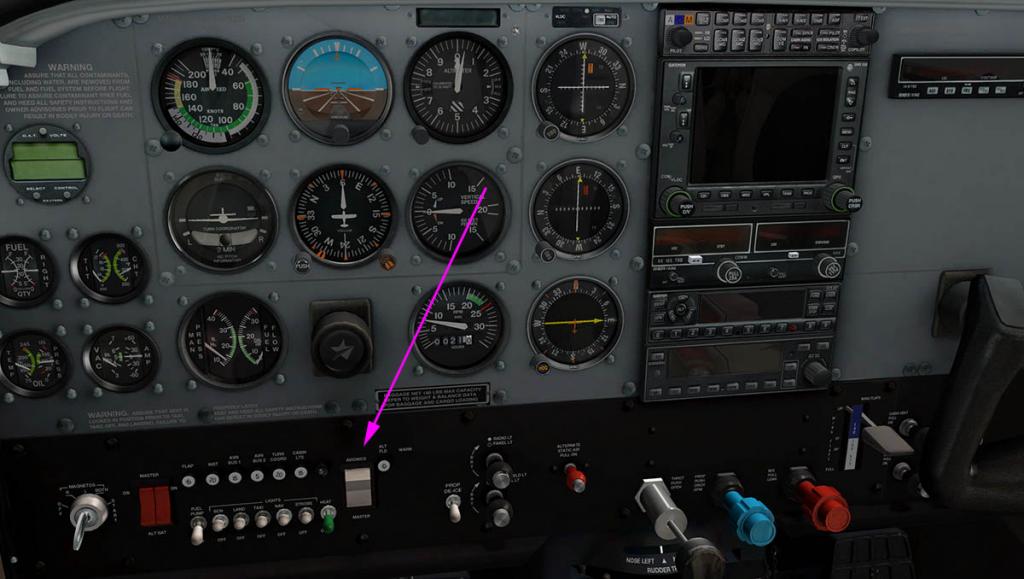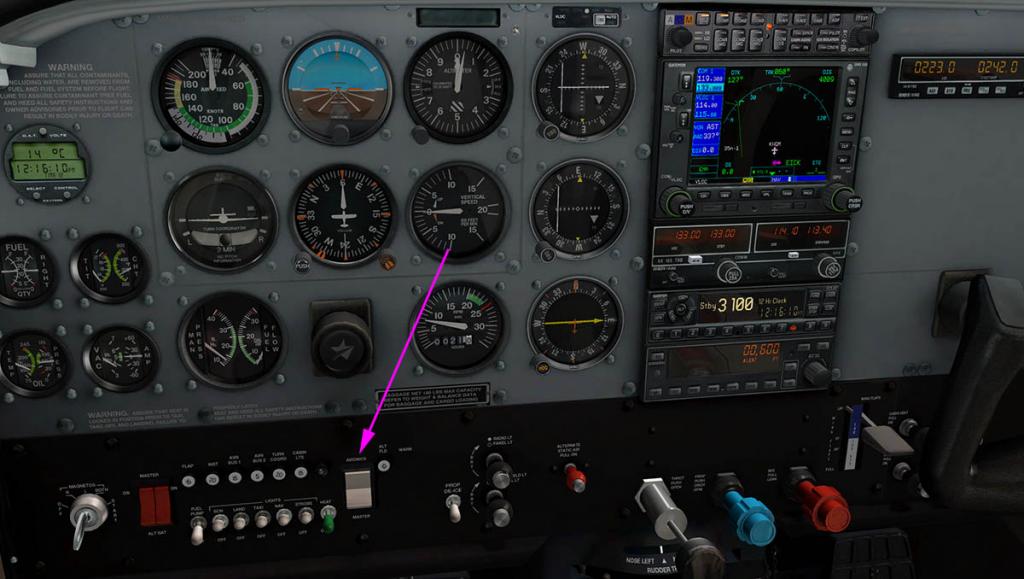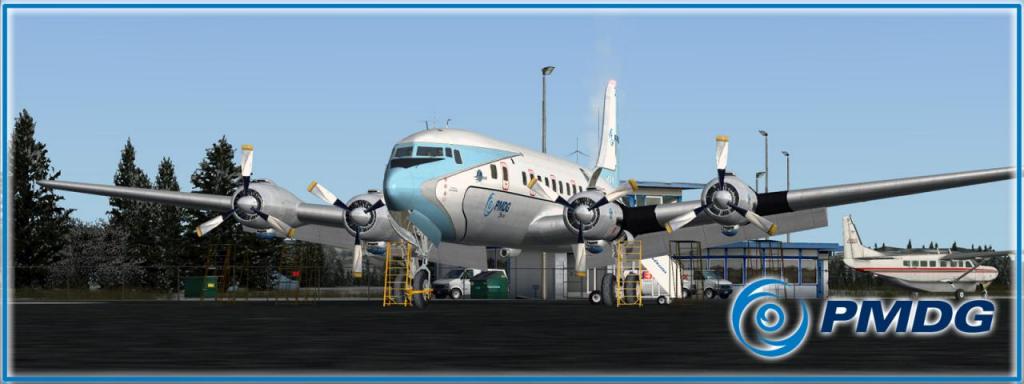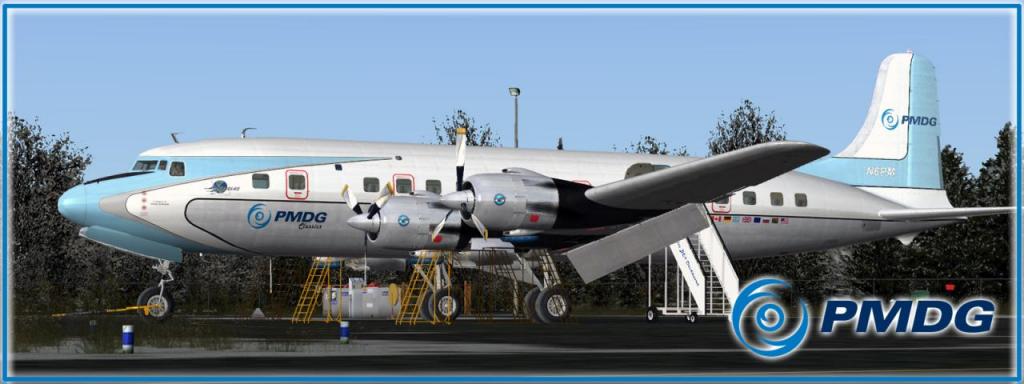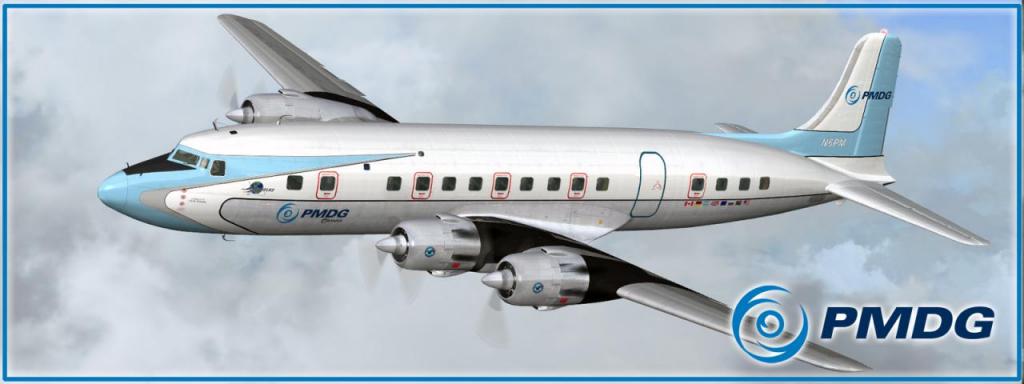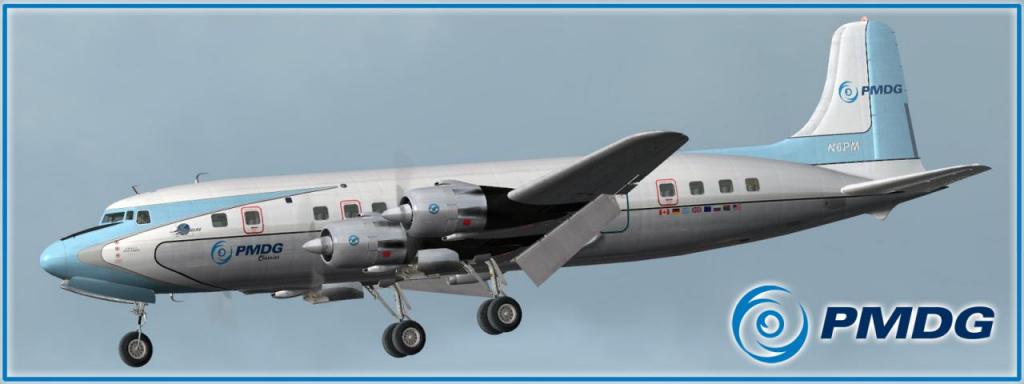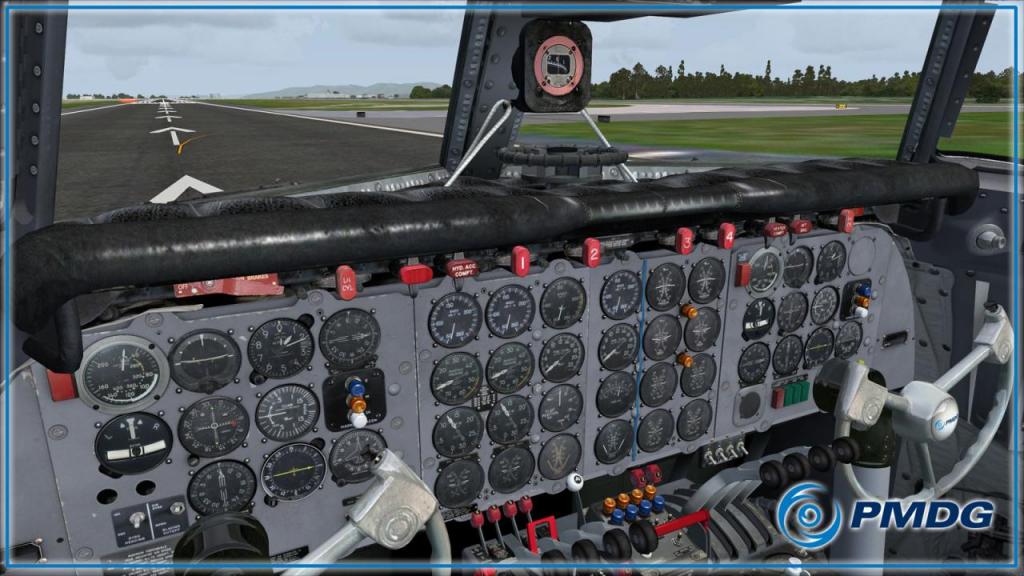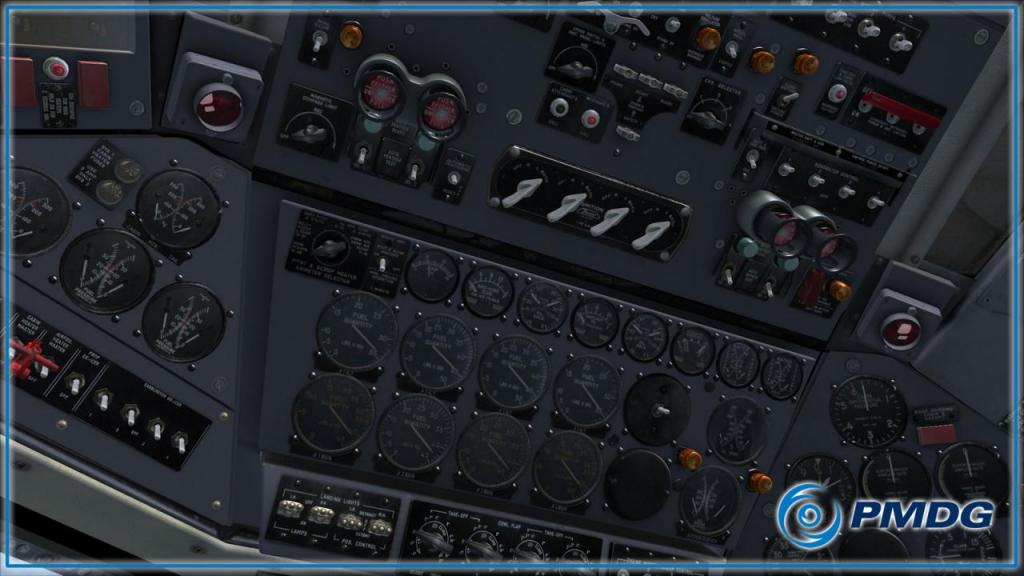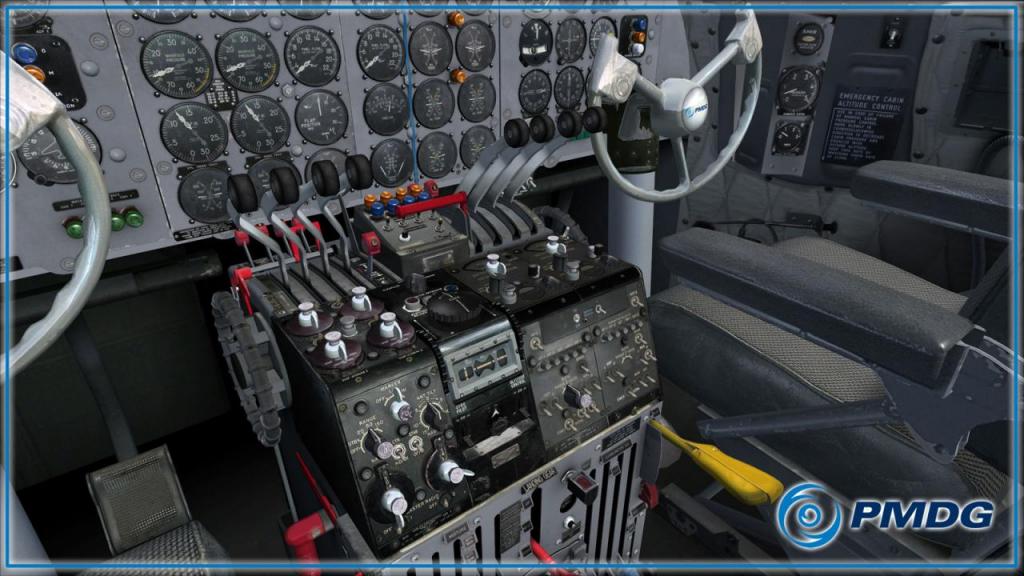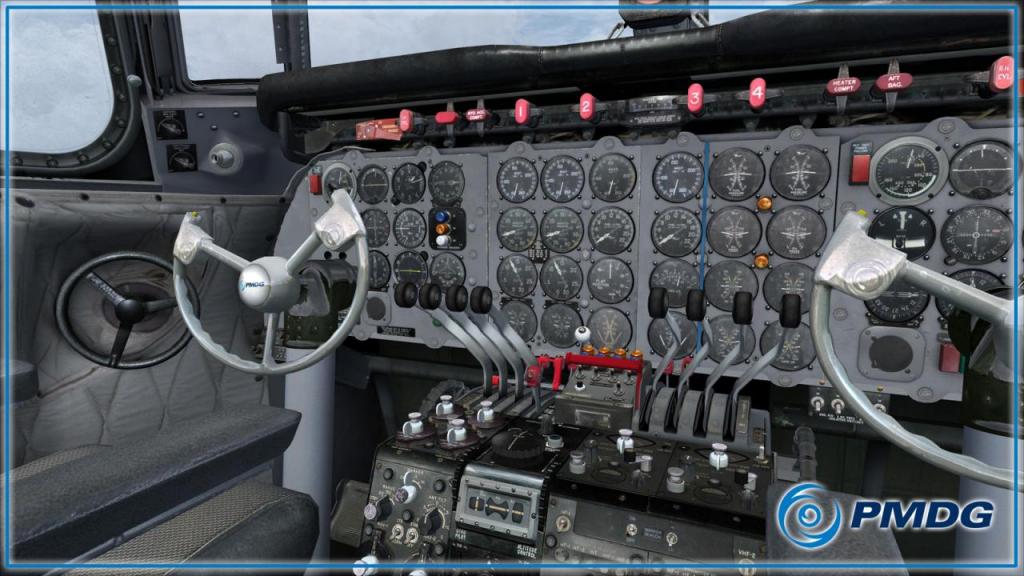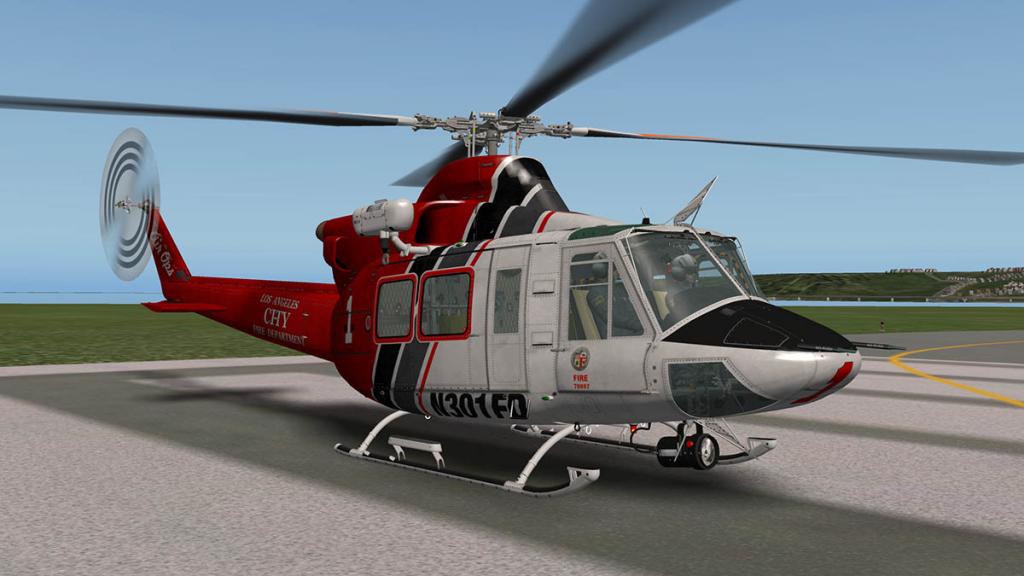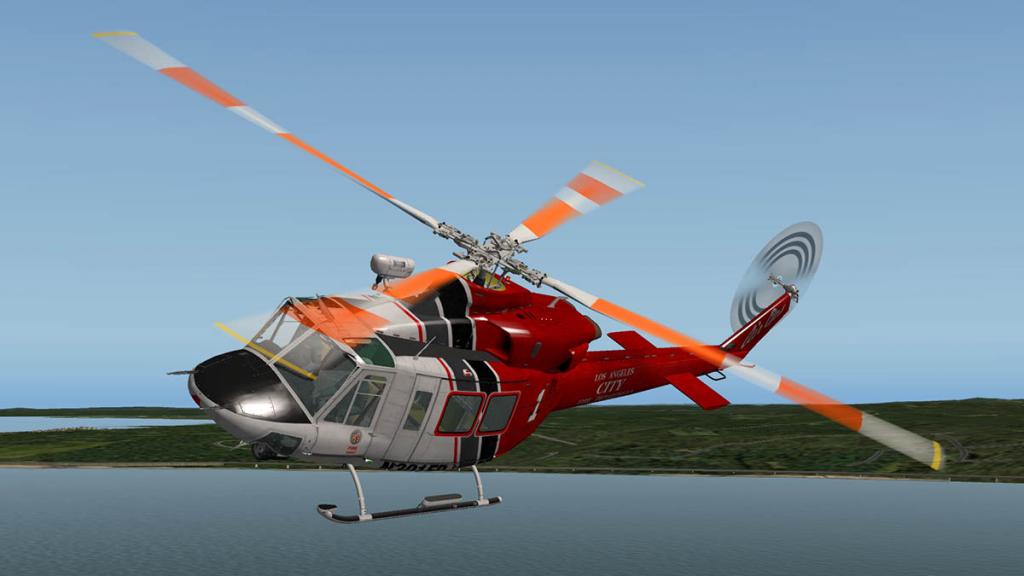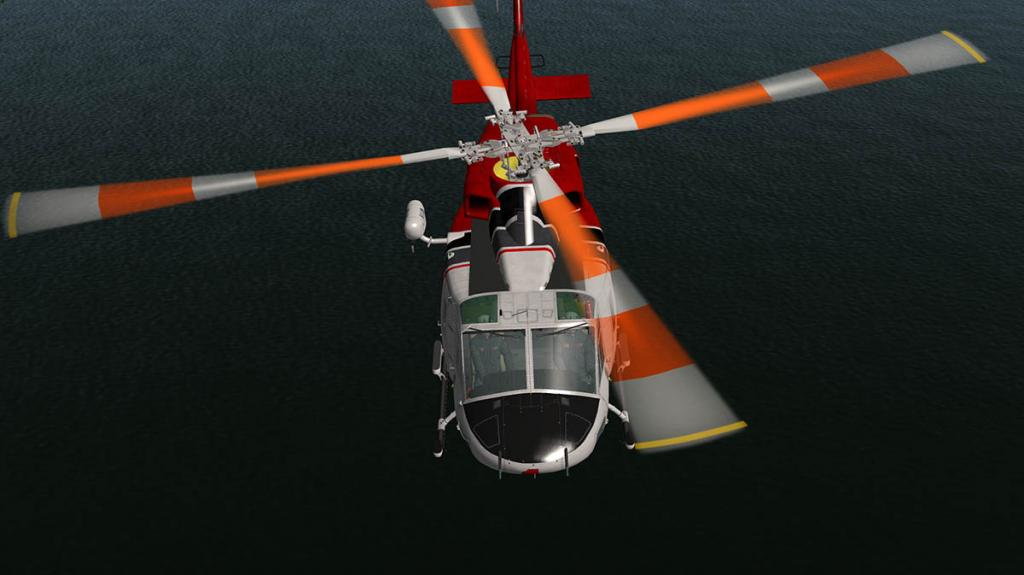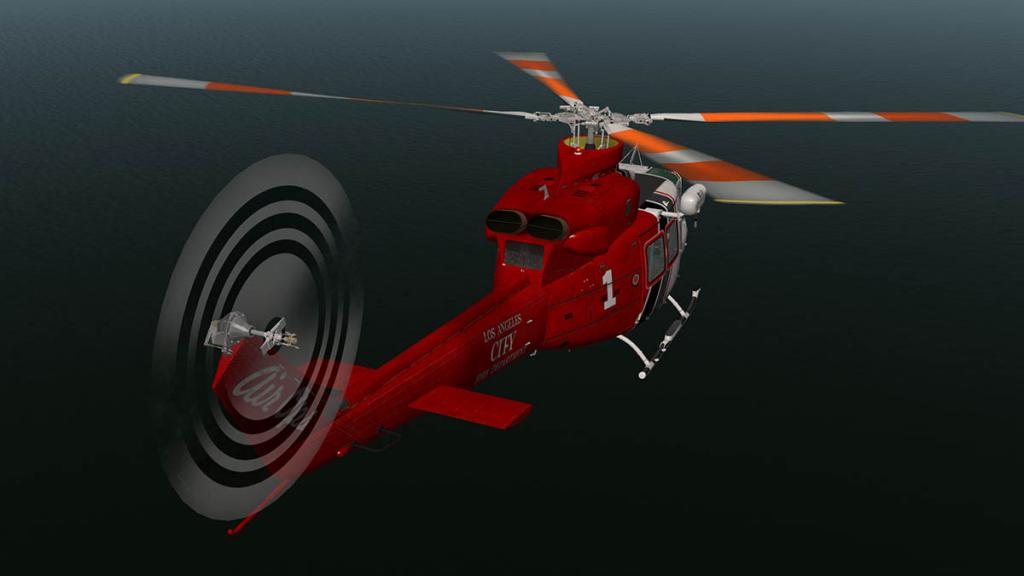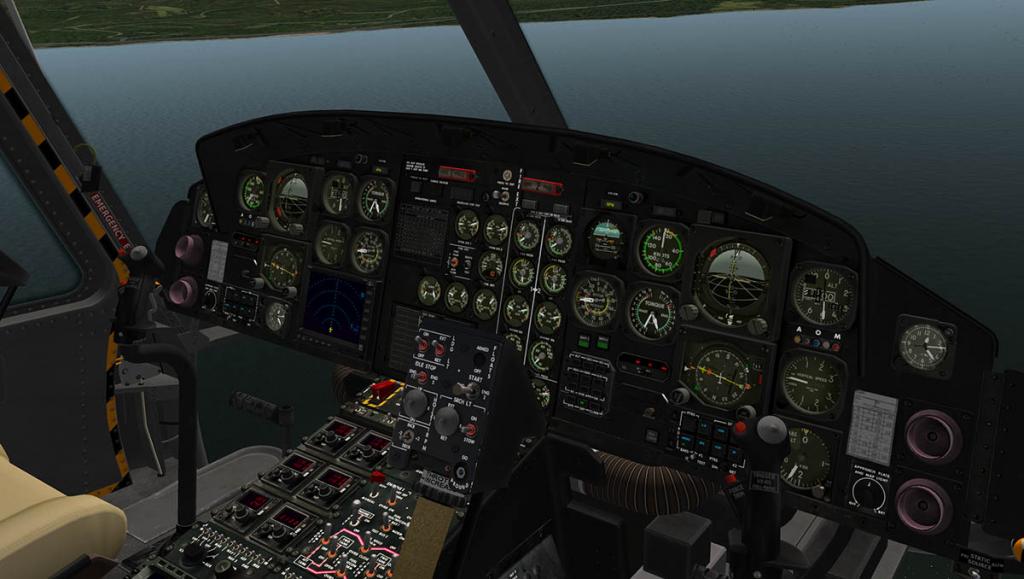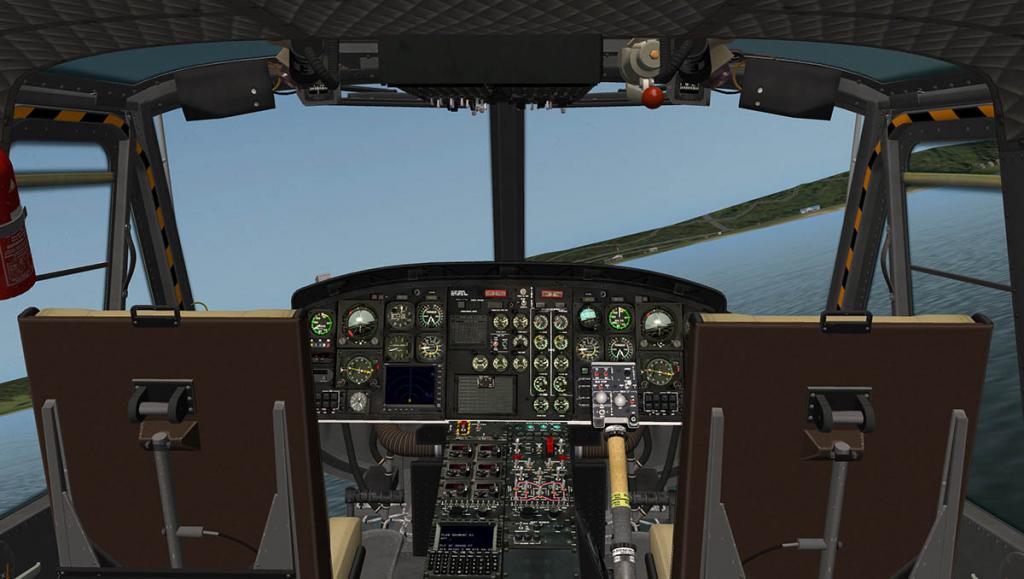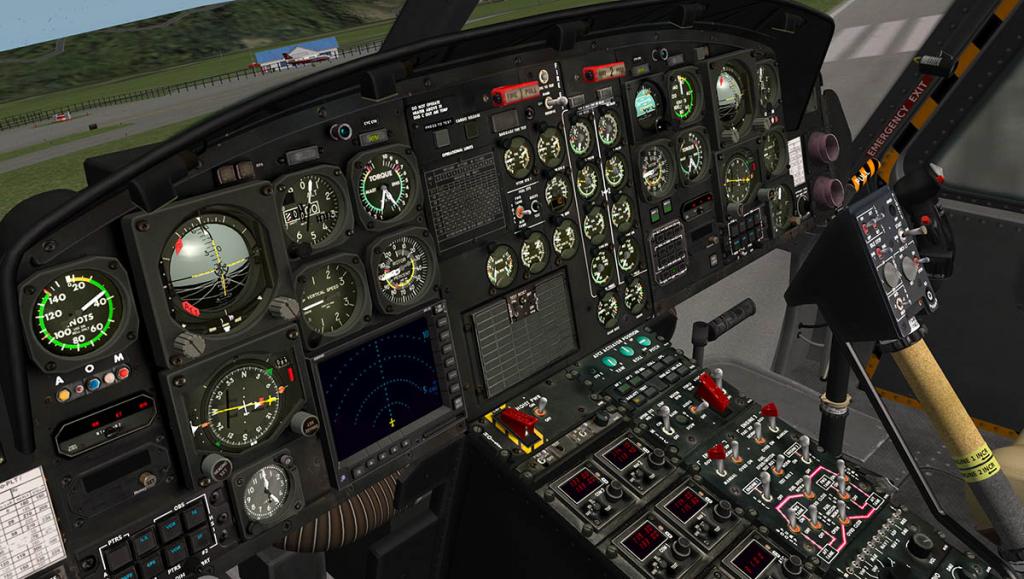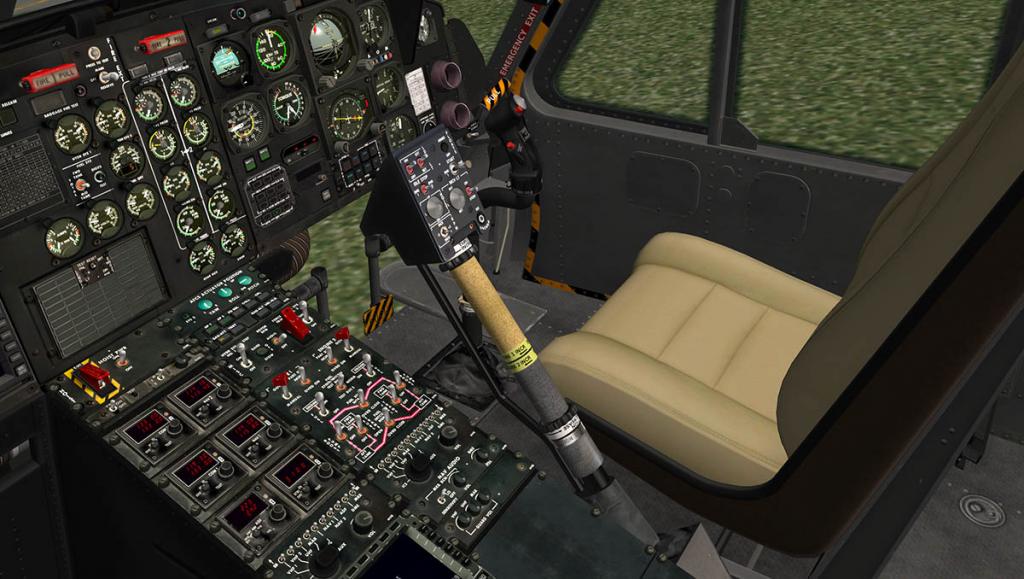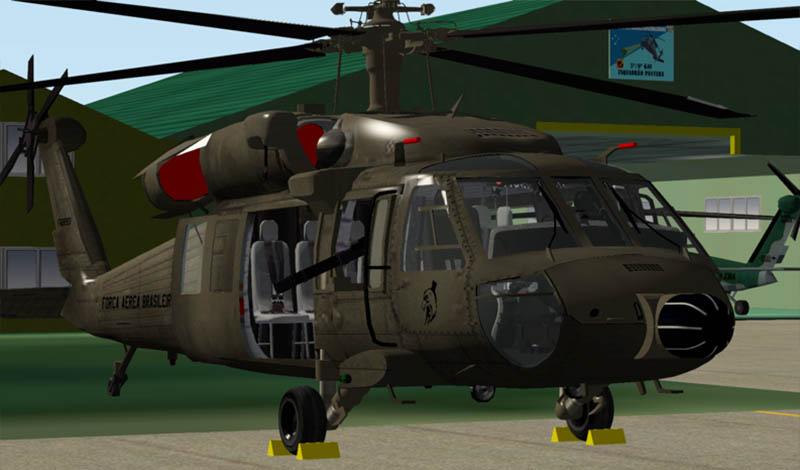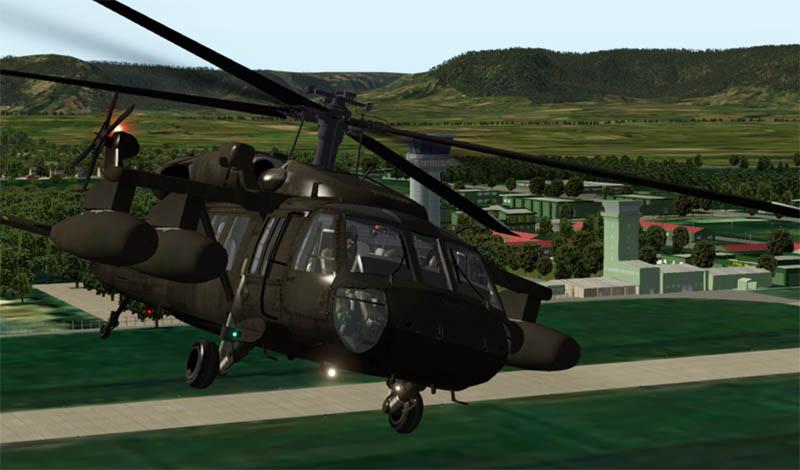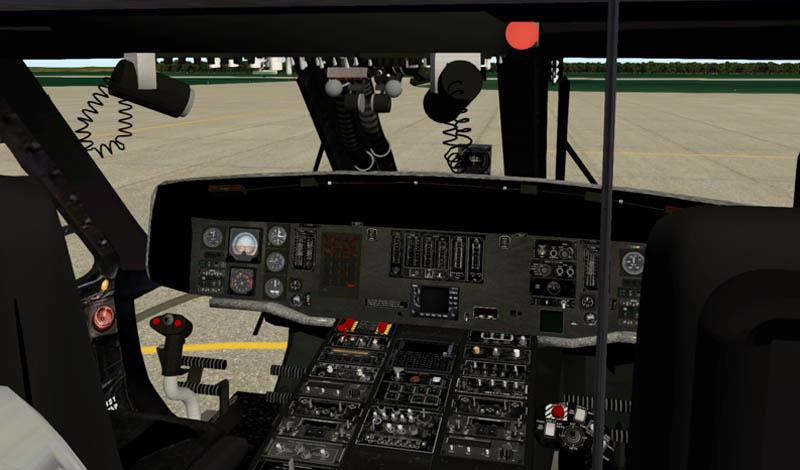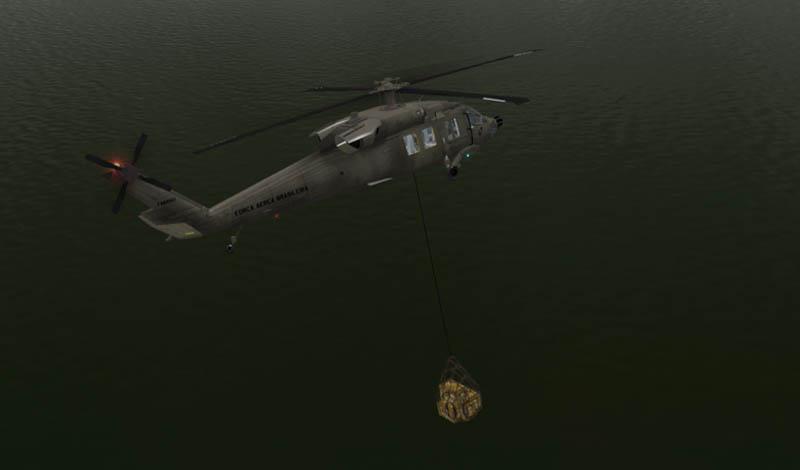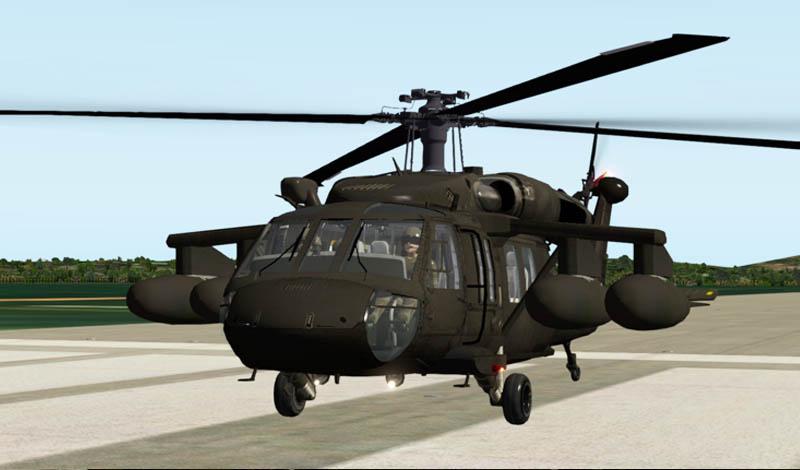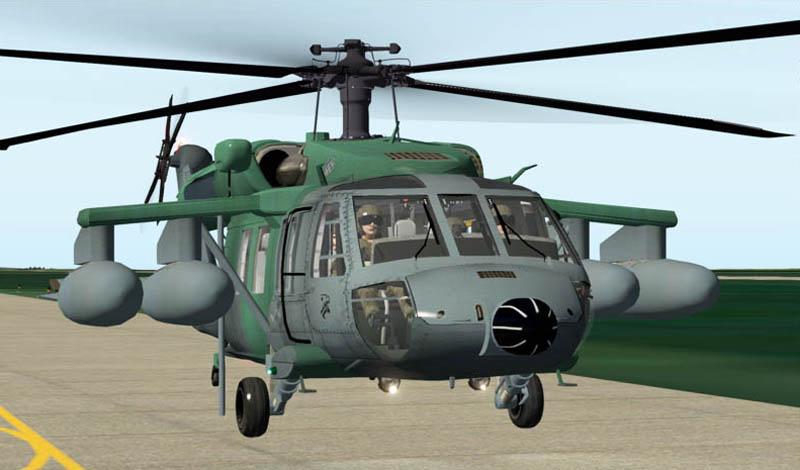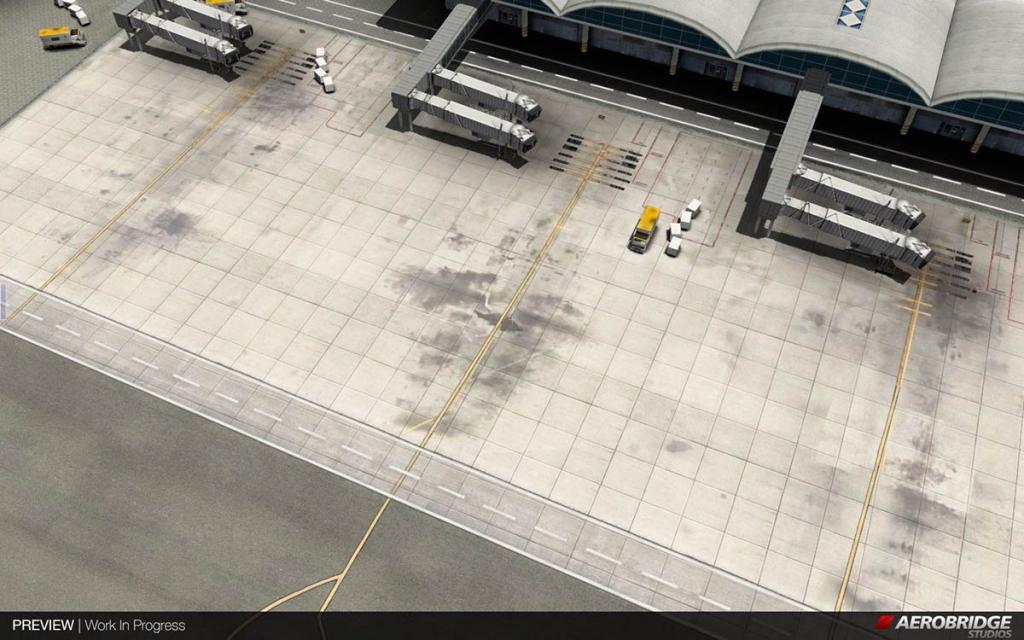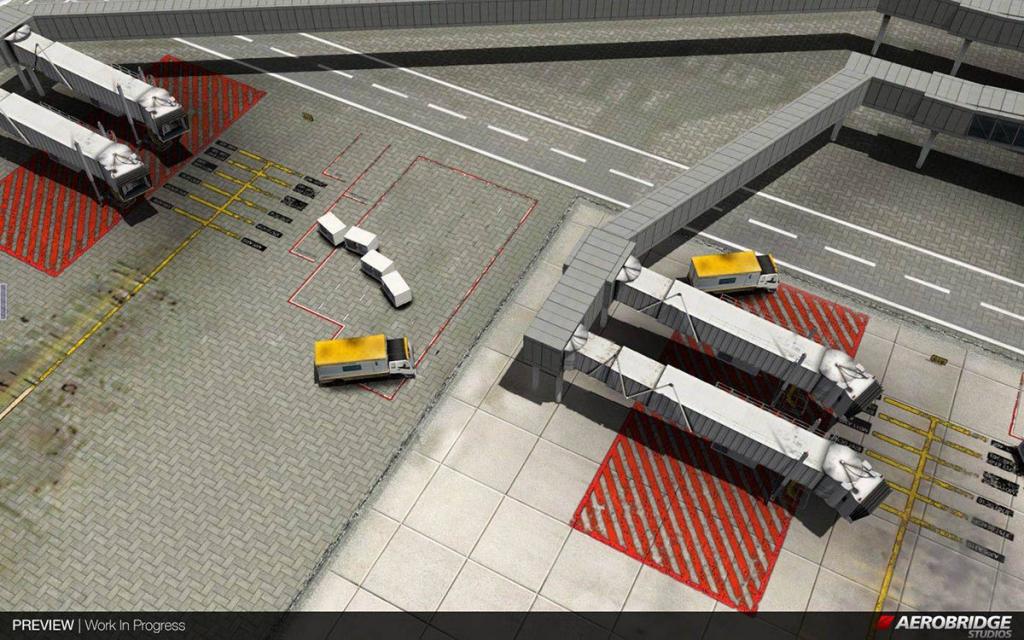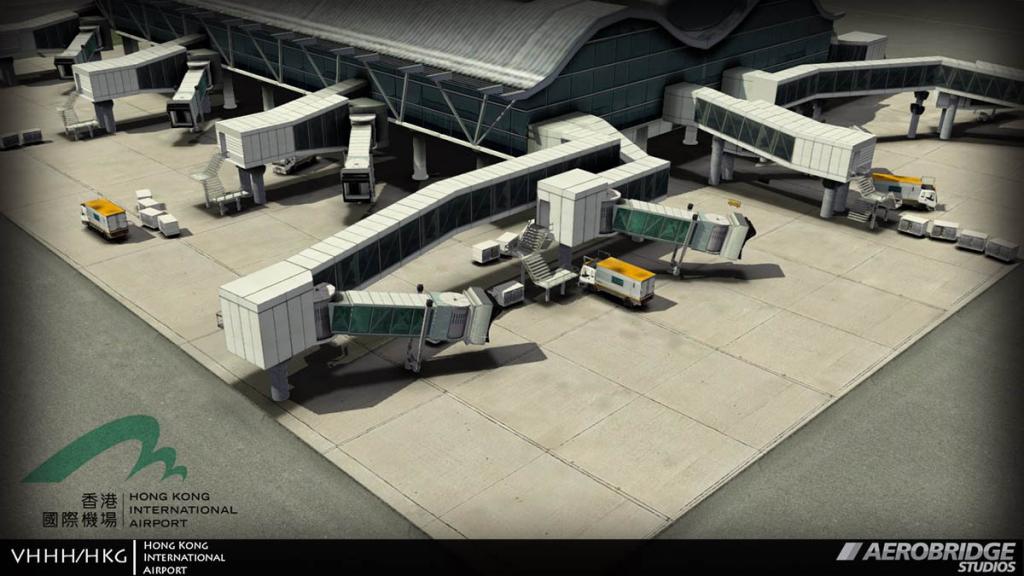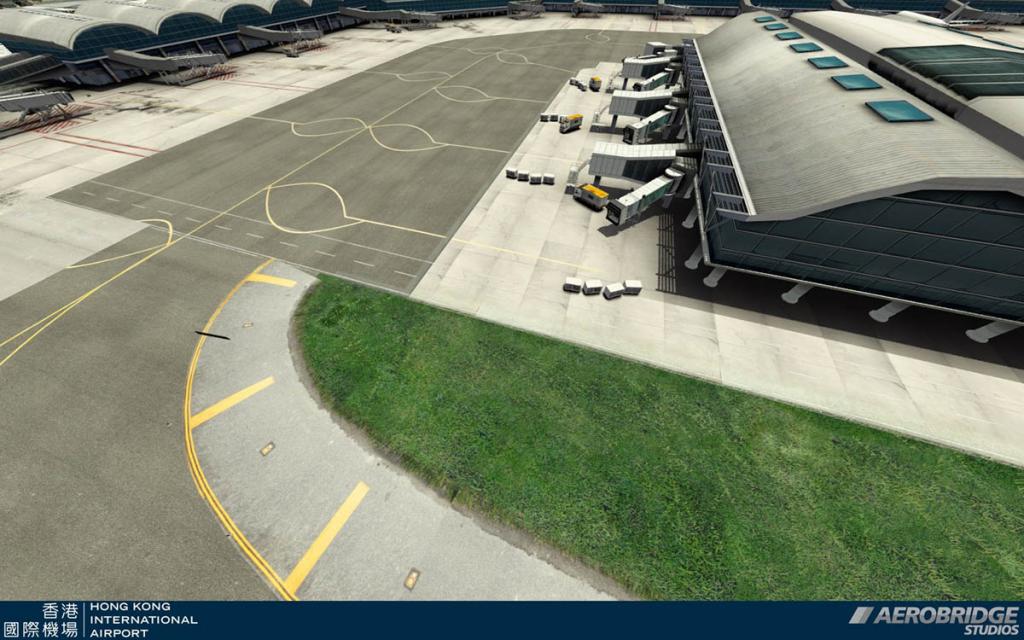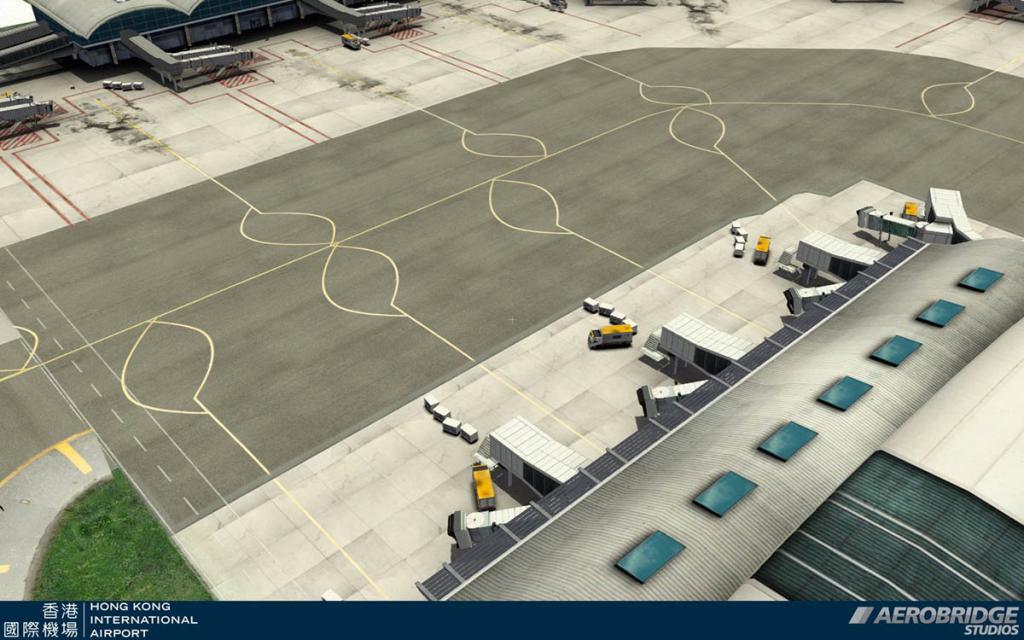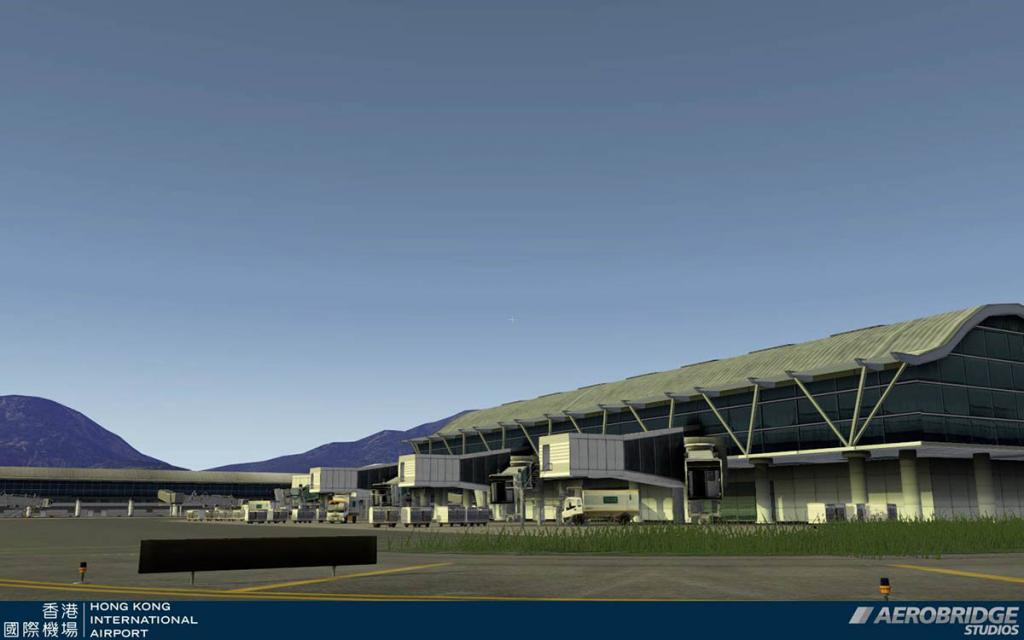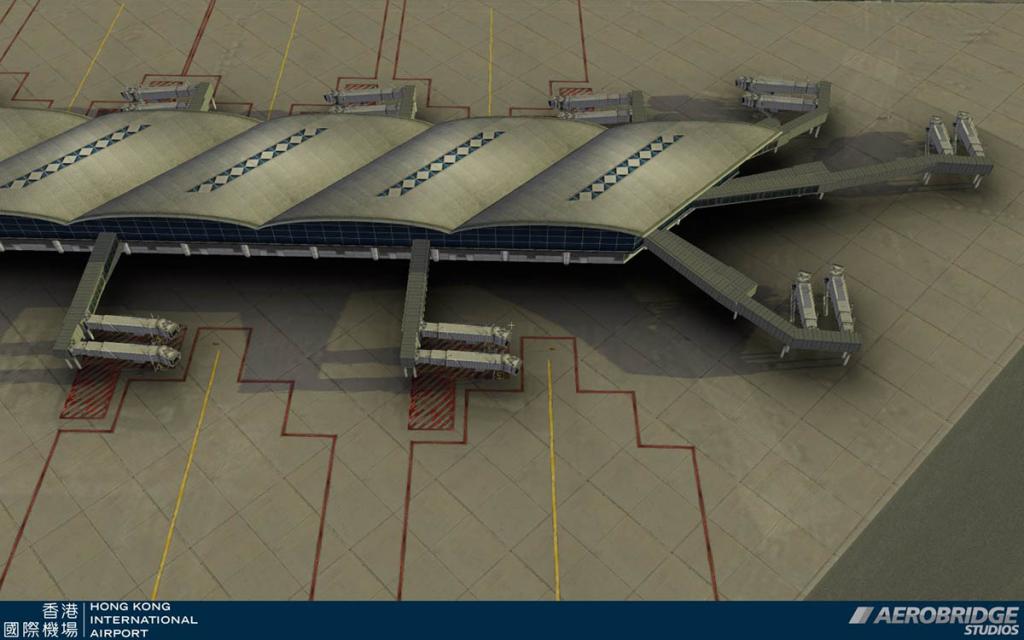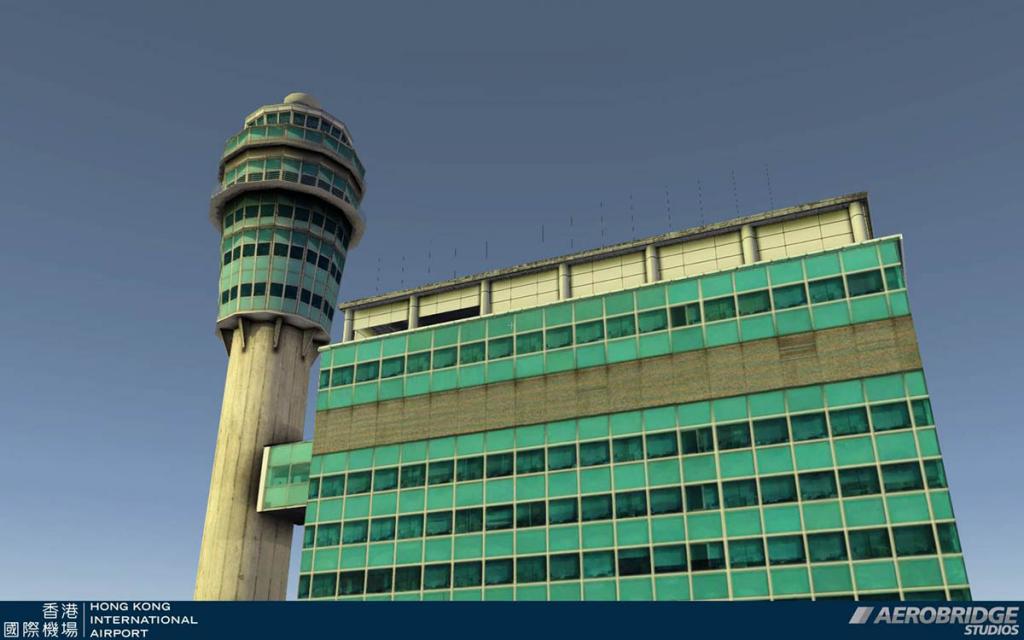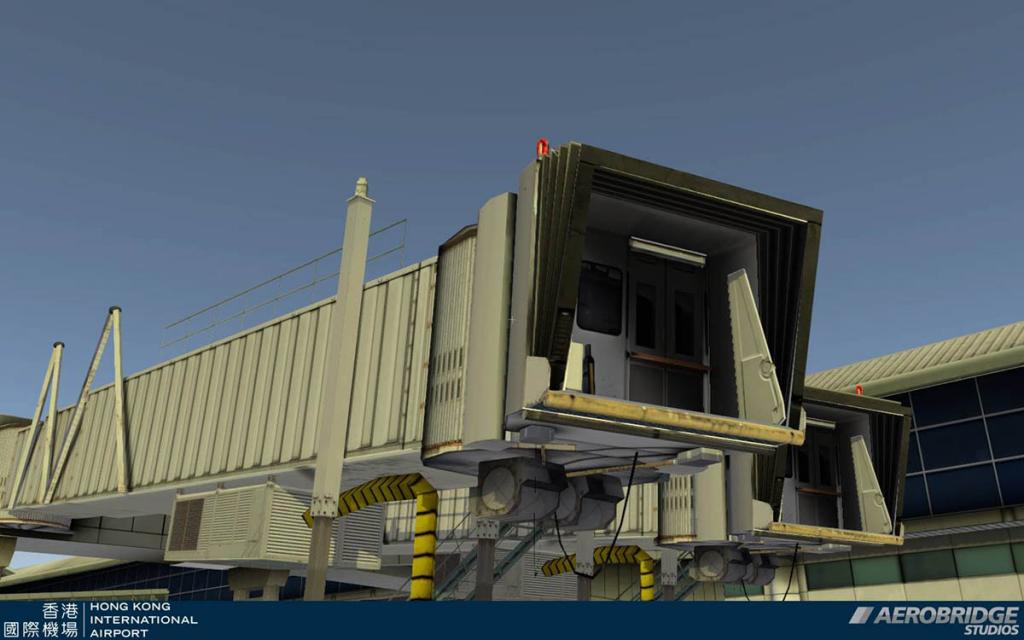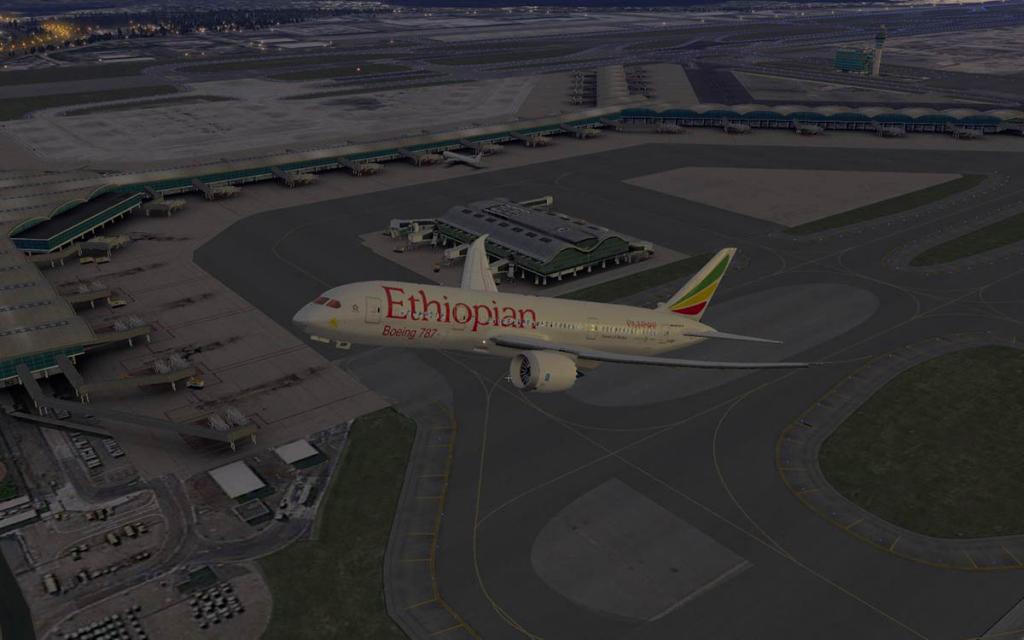-
Posts
2735 -
Joined
-
Last visited
-
Days Won
356
Content Type
Profiles
Forums
Articles
Everything posted by Stephen
-
Scenery Review : Seattle, WA - Gateway to Boeing Country by Tom Curtis In another giant scenery set here from Tom Curtis is a collection of airports that are mostly significant with the aircraft manufacturer of the Boeing Aircraft Company. Which is based in Seattle in the North Western portion of the United States in Washington State (WA). The overall scenery is not new but is a collection of sceneries that have been updated and refined. KPAE - Paine Field was a separate scenery package but has now been inserted as part of the Boeing Country package. One airport is completely new and that is KTCM - McChord Field which is a large military base of some significance. So Boeing Country comprises in total of six airports in: KSEA - SEA-TAC, KTCM - McChord Field, KBFI - Boeing Field (Boeing), KRNT - Renton (Boeing), KPAE - Paine Field (Boeing), KPWT - Bremerton National. (google maps) I personally bought the KPAE - Paine Field and added bonus KRNT - Renton scenery when it was released as such for US$10 a few years ago, and certainly deeded it was good value, looking over the updates I can say they have had a refinement, nothing much as the originals where pretty comprehensive in their layouts, but the simple addition or change to the type of aircraft that are parked around (now mostly B787 Dreamliners at KPAE) works very well, the textures feel lighter and slightly sharper as well. To get an idea of the landscape and placements of the sceneries around Seattle, I did a very wide and long landing circuit before going into McChord Field. It also provided a great first impression on the new scenery in the package. Arrival in the Boeing C-17 Globemaster III was flying North and to the East of Seattle at 7500 ft. And situated just slightly to the South of Seattle is the cluster of KSEA, KBFI and KRNT. The heading was kept on going north until the C-17 was just above Snohomish before a left turn with Everett just to right on the turn... Now Paine Field, is known as Everett sometimes and other times it is labeled as Snohomish Airport as well, But Silver Lake is closer than both? Looping around KPAE you turn directly South over central Whidbey Island for the long run down Puget Sound directly to down to KTCM - McChord Field. Seattle comes up on your right and as you pass again KSEA, KBFI and KRNT are in vogue, To your left is Bainbridge Island and past the Island is Bremerton and the airport Bremerton National at the head of the inlet. Altitude is now going down to the ILS approach height of 1800ft of RWY16 while passing over Vashon Island. On my right are the double bridges of the Tacoma Narrows bridges that Tom Curtis has modeled into this scenery (It has moving traffic on the bridges as well), and then I am on the final approach to McChord Field. First view of McChord Field is simply great. The scenery looks very authentic filling the windows of the big C-17. The runway and the side taxiways look very well created and again very realistic. Once down and on the reversers I note two sets of arresters wires across the runway, and one for each approach of from the North or from the South. Once at taxi speed and I take taxiway E to taxiway H, It is a long roll to taxiway E but you have more off runway options by landing from the south on RWY34. Just before entering Taxiway H, I glance right and the view from the cockpit is really really good... Impressive. The big C-17 0186 is quite a nice fit on D ramp between its brothers on the flight line, shut down and opening the aircraft up you felt you had arrived back at the base. KTCM - McChord Field (Joint Base Lewis-McChord, Lewis Field) McChord Field is the home of the 62d Airlift Wing, Air Mobility Command, the field's primary mission being worldwide strategic airlift. The 62d Operations Group flies the C-17 Globemaster III transports from McChord Field. It consists of four airlift squadrons in 4th Airlift Squadron, 7th Airlift Squadron, 8th Airlift Squadron and 10th Airlift Squadron and an operational support squadron. More support is provided by the 62d Maintenance Group, 62d Mission Support Group and 62d Medical Squadron. In 1917, the citizens of Pierce County, Washington approved a bond measure for $2,000,000 to buy 70,000 acres (280 km²) of land to be donated to the Federal Government for use as a military reservation. This land became Camp Lewis (and later Fort Lewis). Ten years later, in 1927, another bond measure was passed to establish an airfield just north of the military reservation. The airfield, named Tacoma Field, officially opened 14 March 1930. On 28 February 1938 the airfield was officially transferred to the United States Government. In 1945 McChord was designated as a permanent station by the Army Air Forces. It was assigned to Continental Air Forces in April 1945, becoming headquarters of the 1st and 2d Bomb Wings after their return from combat in Europe. On 1 August 1946, McChord was assigned to the new Air Defense Command, with a mission of air defense of the United States. During the Cold War, numerous fighter-interceptor squadrons were stationed at the base, as well as Radar and Command and Control organizations, the 25th Air Division being headquartered at McChord from 1951 until 1990, The airbase had become independent of Ft. Lewis in 1947 following the creation of the Air Force under provisions of the National Security Act of 1947 and was subsequently named McChord AFB, the airfield was then renamed McChord Field, in honor of Colonel William Caldwell McChord. 16/34 10,108 (3,081m) Asphalt/Concrete 160/340 3,000 (914m) Asphalt (assault strip) ELEV AMSL 322ft Tom Curtis notes that David Austin who had worked on the McChord flightline, has given his time and knowledge of the AFB to create a lot of the detailing in this scenery. And that in depth detail certainly shows. Large and sprawling the AFB is, the scenery goes a fair distance in every direction. D ramp is the centre and is dominated by four huge hangars 1-4 and the control tower, to the south is the fire station and then the USAF Air Museum which is located midfield with what looks like a large administration building set out behind. Going on to down to the far south on E ramp is the Air Defense Alert in the “Alert Barn”. Set between C ramp which is the main maintenance area and hangars and the large "prepping" J ramp is the base operations buildings and block house (nuclear proof?) with further north the VIP receiving centre is on B ramp. detailing is excellent as Tom Curtis has not just placed aircraft, but also has the crews and various maintenance equipment servicing the giant aircraft, this theme follows through out all the sceneries in this package as all the airport ramps and areas are very well filled with great filling out of a visual experience. Far north is a large freight building and C-5A Galaxy sitting on the ramp of which I would note as ramp A. Across the runway(s) on the Eastern side are some more buildings by a lot of holding pads, which look a little empty, and maybe a few aircraft stored here would have filled it out a little. far south on the eastern side is LIMA Pad where they store the explosive armaments (live pad). All taxiways are exceptional quality, but you have steer quite carefully in a C-17 as they can be slightly narrow for an aircraft of this size. And note the arrester wires across the runway. The scenery does have photographic (ortho) underlays set out and covering the standard X-Plane textures and so in some places they can be quite flat and blurry, even with my render settings being set "very high". The KTCM ortho is not to bad, but some airports as we will see will find the ortho a bit more obvious. Overall KTCM - McChord Field is a magnificent addition to this area and the package, and also very highly usable as a base from which to leave or arrive in military style simulations. KSEA - Seattle–Tacoma International Airport or Sea-Tac (KSEA/SEA) KSEA or Sea-Tac is the main international airport of the Seattle area. It is also part of the X-Plane demo area and you can see why this area around this airport and others in this package were chosen for such a role. Sea-Tac is so versatile as an airport that you really need good scenery here to get the very best out of X-Plane as a simulator. I use KSEA more than most airports in X-Plane just because of that huge versatility. My operations also have a huge range from here. I run cargo from Sea-Tac to PANC in Alaska which is my favorite run, and passengers south to SFO, LAX and out to HNL in Honolulu, Hawaii. For regional flying I love the flight up the sound to Victoria International, of which is the most frequent I do in X-Plane and you can fly GA (or Helicopter) around to loads of very small drop off islands (Friday Harbor), and another really great loop is out to KHQM - Bowerman Airport on the coast which is really great scenery by FoxThree and gives you then the choice to fly right around the mountain range or like I do again head up to Vic, Intl or just return back to KSEA. Watercraft are in a dream world here as there are so many great places to aim for and return to, again KRNT (Renton) is a great base for that. The airport was constructed by the Port of Seattle in 1944 to serve civilians of the region, after the U.S. military took control of the Boeing Field for use in World War II. The Port received $1 million from the Civil Aeronautics Administration to build the airport, and $100,000 from the City of Tacoma. The first scheduled airline flights were Northwest and Trans-Canada in 1947; Western and United moved from Boeing Field in the next couple of years, and Pan Am moved in 1952–53, but West Coast stayed at Boeing Field until after the Hughes merger. Two years later "international" was added to the airport's name as Northwest Airlines began direct service to Tokyo, Japan. In 1951, there were four runways at 45-degree angles, between 5,000 and 6,100 feet (1,500 and 1,900 m) long; the northeast-southwest and northwest-southeast runways intersected just west of the north-south runway that eventually became today's runway 34R. The runway was lengthened twice, first in 1959 to allow jets and then in 1961 to handle traffic for the upcoming Century 21 World's Fair. The two-story North Concourse (later dubbed Concourse D) added four new gate positions and a new wing 600 feet (180 m) long and 30 feet (9.1 m) wide. The one-story South Concourse (now Concourse A) opened in 1961, adding another 688 feet (210 m) to the length of the airport. The 800-foot (240 m) long Concourse B opened in December 1964. It added eight gate positions, bringing the total to 19, a 12,000 square feet (1,100 m2) area housing international arrivals, and the offices of U.S. Customs, Immigration, Public Health and the Department of Agriculture. Concourse C opened in July 1966. Just four years later, it was again extended to include another 10 gates, bringing the total to 35. The Port embarked on a major expansion plan and lasting from 1967 to 1973, adding a second runway, a parking garage, two satellite terminals, and other improvements. A$28-million new terminal literally swallowed up the old 1949 structure as it was built over and around it. Opened in 1973, the new terminal quadrupled the area for public use. On July 1, 1973, the Airport opened two new satellite terminals, along with an underground train system to connect them to the Main Terminal. In the mid-1980s, the Main Terminal was renovated and another 150 feet (46 m) was added to the north end. Concourse D was expanded in 1987 with a rotunda that added four new gates. In 1993, Concourses B, C, and D were renovated. On June 15, 2004, the 2,102-foot (641 m) new Concourse A was unveiled with 14 new gates, a dozen new restaurants, new artwork and the airport's first moving sidewalks. The new 3rd runway opened on November 20, 2008, with a total construction cost of $1.1 billion. Parallel to the existing two, the new runway was sited far west of the existing runways, so as to allow 2 simultaneous landings in times of low visibility. The airport's older two runways were too closely spaced to allow use of both during low visibility which is a frequent condition in the Seattle area. A new control tower was built beginning in 2001 and opened November 2004, at a cost of $26 million. The floor of the new tower's control cab is 233 ft (71 m) above ground level; the tower's overall height including antennas is 269 ft (82 m). The three parallel runways run nearly north–south, west of the passenger terminal, and are 8,500 to 11,900 feet (2,600–3,600 m) long. During 2008, the airport averaged 946 aircraft operations per day, 89% being commercial flights, 10% air taxi operations, and 1% transient general aviation. 16L/34R 11,900 (3,627m) Concrete 16C/34C 9,426 (2,873m) Concrete 16R/34L 8,500 (2,591m) Concrete ELEV 433 ft / 132 m AMSL First thing to note is the relationship between KSEA and KBFI - Boeing Field, because they almost overlap each other... Landing from the North and you will fly right over Boeing Field if using 16L, 16C or 16R, so having that scenery in place would certainly give you a great approach, In fact the approach from the North is great because there is a lot of traffic and movement under the flight path. There is an issue with KSEA in that as Tom Curtis recommends that the "runways follows contours" option is turned off. This creates a strange feeling as with the flat base under KSEA you then get cliff walls down to other parts of the scenery (including KBFI) which is not a great look visually, turn the contours on and the runways bend so much in that one end of the runway is totally out of sight of the other end? And a lot of the airport objects (buildings) will then float (mostly just on a corner)... but the gradients look right around the airport. So overall it is a no win situation, I mostly keep contours on because I hate the sharp walls and KSEA looks better on both approaches. The airport itself is almost all on the Eastern side of the three runways in a straight line from South to North. The areas are from the south - Alaskan Airlines and Delta maintenance and fuel storage - Main Terminal area - Cargo South - Control Tower - Cargo North. Behind the terminals are various hotels and one seriously large carpark. The main terminal is a wide X from the front with four concourses.... Concourse A (south - east) 14 gates (A1–A14) - Concourse B (south - west) 13 gates (B1, B3–B12, B14, B15) - Concourse C (north - west) 10 gates (C9–C12, C14–C18, C20), 12 parking slips (C2B–C2H, C2J–C2M) - Concourse D (north - east) 10 gates (D1–D5, D7-D11) All concourses are domestic (if you count Canada as domestic as well) , Alaska Airlines dominates in C, D and N (north satellite), Delta in A,B and S (south satellite) Delta Connection B and S, Southwest Airlines B, American D, Air Canada (and Air Can Express) A, Frontier Airlines B, JetBlue D, United/United Express A and Virgin America B. There are two Satellite Terminals (North and South) in north S there is 14 gates (N1–N3, N6–N11, N13-N16), Five Parking Slips (N12A-N12D, N12F) and in the south S 13 gates (S1–S12, S15), 4 parking slips (S16A–S16D). North satellite is again Alaska Airlines but the South satellite is the main International off-shoot terminal servicing - British Airlines, All Nippon Airways, Asiana Airlines, Condor, Emirates, EVA Air, Hainan Airlines, Hawaiian Airlines, Icelandair (interesting!), Korean Air and Lufthansa. Top five domestic destinations are: 1 Los Angeles, California pax 910,000 - Alaska, Delta, United, Virgin America 2 San Francisco, California pax 844,000 - Alaska, Delta, United, Virgin America 3 Denver, Colorado pax 753,000 - Alaska, Frontier, Southwest, United 4 Anchorage, Alaska pax 686,000 - Alaska, Delta, JetBlue, United 5 Phoenix, Arizona pax 634,000 - Alaska, Southwest, US Airways, American Airlines Top five international destinations are: 1 Tokyo (Narita), Japan pax 409,119 - ANA, Delta, United 2 Vancouver, Canada pax 382,818 - Air Canada, Alaska 3 Amsterdam, Netherlands pax 248,356 - Delta 4 Seoul (Incheon), South Korea pax 248,198 - Asiana, Korean Air 5 London (Heathrow), United Kingdom pax 195,951 - British Airways Cargo operations ABX Air - Cincinnati, Los Angeles, Portland, San Francisco, Vancouver Ameriflight - Oakland Alaska Air Cargo - Anchorage, Cordova, Juneau, Ketchikan, Sitka, Yakutat Cargolux - Calgary, Glasgow-Prestwick, Luxembourg China Airlines Cargo - Miami China Cargo Airlines - Shanghai-Pudong EVA Air Cargo - Anchorage, Dallas/Fort Worth FedEx Express - Anchorage, Indianapolis, Memphis, Oakland Korean Air Cargo - Seoul-Incheon You have to plan in advance to find a gate as they are mostly full, but there are a few available in each concourse and satellite, there are a few regional none airbridge gates that are great for Dash, ATR and big twin operations, but again you need to locate them before you arrive as if you don't you will spend a lot of time taxiing around trying to find them. There are a few working (marginal) airbridges and ramp traffic animations and a pushback (and forward Southwest jet) to keep the airport lively. Ramps are very full and has well set out features to give the airport a busy feeling, you couldn't really better this working airport aspect. Tom Curtis is very good in providing not only the main airport infrastructure, but the hotels and side buildings that make up a full visual scene, here it is very comprehensive even with rotating signs. The various cargo ramps cover most of the north of the airport and are split by the new Control Tower. There is a lot of space available for parking aircraft here and I usually use Cargo north because the really bigger freighters can easily park here and you are only a very short taxi to 16L or 16C for a southern departure. The control tower is very well modeled, and the (tower) view is good, but a few obstructions come in if you turn the full 360º around. Which does spoil a sit and watch arriving and departing aircraft if you like that sort of thing. All X-Plane ATC taxi routes are sorted and the runs with the A.I. aircraft is very good, If there are still to many call-offs. There is a private jet hangar and a few GA parking hangars on the western boundary side. Overall KSEA is extremely good scenery, and like I noted very useable in many functions. KBFI - Boeing Field or King County International Airport. (KBFI/BFI) Except for the World War II period, when it was taken over by the U.S. government, Boeing Field was Seattle's main passenger airport from its construction in 1928 until Seattle-Tacoma International Airport began operations in the late 1940s. The Boeing Company continues to use the field for testing and delivery of its airplanes, and it is still a major regional cargo hub. It is also used by Air Force One when it visits the Seattle area. The Boeing Company has facilities at the airport. As with the final preparations for delivery of Boeing 737 aircraft after the first test flight are made at Boeing Field as there is a delivery centre here, other Boeing facilities at the airport have also included a paint hangar and flight test facilities. The initial assembly of the 737 was at Boeing Field in the 1960s because the factory in Renton was at capacity building the 707 and 727. After 271 aircraft, and then the production moved to Renton in the late 1970's. Production of military airborne early warning and control aircraft based on the 737, such as Project Wedgetail (Australia) aircraft and Peace Eagle (Turkey) aircraft is still located at here. The Museum of Flight is on the southwest corner of the field. And among the aircraft on display includes an ex-British Airways Concorde, which is positioned in the scenery. Helijet, which is an helicopter airline based at Vancouver International Airport in British Columbia, does scheduled Sikorsky S-76s to the Victoria Harbour Heliport in British Columbia and then on to Helijet's Vancouver Harbour Heliport near downtown Vancouver, B.C. A few airlines still operate out of KBFI in: Kenmore Air - Friday Harbor, Nanaimo, Orcas Island, Port Angeles, Tofino San Juan Airlines - Anacortes And Cargo: ABX Air - Cincinnati, Portland, Vancouver Airpac Airlines - Vancouver Air Transport International Ameriflight Nolinor Aviation UPS Airlines - Chicago-Rockford, Louisville, Vancouver, Ontario (CA) 13R/31L 10,000 (3,048m) Asphalt 13L/31R 3,710 (1,131m) Asphalt ELEV 21ft /6 m AMSL KBFI is a large and complex scenery in that it has so many different elements. It a Boeing Company airport but also a working one for light GA aircraft and smaller regional services (Including helicopters). KBFI is no doubt an interesting place to operate out of, but for me it will be for the regional and helicopter services and the delivery of aircraft to be flown to their respective bases either in Australia (Qantas/Jetstar/Virgin) via HNL/NAN(Fiji)/SYD or via Keflavik (Iceland) to Europe. Boeing use mostly the north-western/south-western sections of the airport and the eastern side is mostly GA or Aircraft services with hangars which are expertly recreated. There is a big Industrial feel on the west side of KBFI, as besides the ramps of final fit-out of aircraft there are a lot of factories, storage buildings and hangars. There are simply too many factories to count, but they really fill the scenery right in. The small control tower is situated mid-field, and you get a great 360º view with the "tower view mode. nestled between the factories is the Museum of Flight and right beside the museum is the "Red Barn" also known as Building No. 105. Built in 1909, the building was used during the early 1900s as Boeing's original manufacturing plant. There is another historic building on the east side with the original terminal still operating, but as a cafe. But that does not mean you could not use the great ramp area in front for operations. There are a lot of well created storage hangars at the north-east point and various hangars and offices right down this General Aviation flightline. Behind the eastern scenery the X-Plane10 traffic is simply excellent and gives the airport a real buzzy feel of activity. To help in the general views from KPFI, I recommend two packages. The first is Simon W's Plausible CBD 1.4 and Honni's Custom Seattle 0.2 that both add in the Seattle city skyline, both are excellent and Simon's is really great at night. KFPI is again even by itself as scenery is excellent, as part of the package it is very, very good and very usable, personally I will be using King County more now than KSEA for my lighter local/GA flying. KRNT - Renton or Renton Municipal Airport (KRNT/RNT) Renton is really two airports set around one single runway. On the west side is the Renton Municipal Airport, which is really a General Aviation/Seaplane base, and on the east side is the Boeing Renton Factory that churns out the hundreds and thousands B737 series aircraft. The factory has had an illustrious career in producing Boeing aircraft from the start of WW2 to today. Famous aircraft built here includes the Boeing B-29 Superfortress (built 1,119), Boeing C-97 Stratofreighter (built 943), Boeing 707/KC-135, Boeing 727, Boeing 757 (built 1,050) and the B737 series that is production today. The first four Boeing 747's were also refurbished here. But on December 13, 1969, one of the aircraft (N732PA), when landing on the 5382 foot long runway landed short and the right wing landing gear was torn from the aircraft and the number 3 and 4 engine nacelles contacted the runway. So as scenery goes; Renton is certainly a big part of aviation history. 16/34 5,382 (1,640m) Asphalt/Concrete EVEL 32ft / 10m AMSL At first glance Renton looks older than the other sceneries (except for KPAE) but that is because of the shade colouring of the photo (othro) underlays. They are are plainly lighter squares that stands the scenery out from the X-Plane default textures. The actual object buildings are of the same standard as the rest of the package. The scenery is great because it is so closed in from the surrounding suburb and city. Overflying to land on RWY34 is always a great approach. First the Municipal Airport on the west side, I use the water ramp or the official name as the "Will Rogers - Wiley Post Memorial Seaplane Base", is the area in most of my seaplane reviews because it is ideal on getting the aircraft in and out of the water with a large on land ramp area behind. Even though this GA based airport is quite small by standards there is still plenty of room to park up, and business jets are easily used here as well (On business to Boeing). There is also more GA parking and hangar space on the south-east corner as well if you need even more. The control tower is by the size of the airport really small, but well positioned on the western side about halfway up the field, there is a good refueling point here as well. (note: the named Will Rogers - Wiley Post Memorial Seaplane Base was named for the fact that these two famous personalities departed from this point on their ultimately-fatal trip to points in Alaska.) The final fit-out flightline is very well done, and usually the starting point of my delivery flights, or any test flying I do from KRNT. There are more final fit-outs in another section behind the football field that has been built up around the image in the ortho layer, but it looks a little gaudy and quite too soft and washed out to be effective. There are various buildings and test facilities that are very well reproduced around the final fit-out areas, and certainly it all works very well as scenery. On the north part of the scenery fronting Lake Washington is the main factory area. This is well represented by the wider older assembly factories and the newer boxier taller buildings, all are very well modeled and even detailed right down to waterside cafe. KPAE - Paine Field or Snohomish County Airport KPAE/PAE Paine Field was originally constructed in 1936 as a Works Progress Administration project. At the time of development, it was envisioned that the Airport would create jobs and economic growth in the region by becoming one of the ten new "super airports" around the country. Paine Field was taken over by the U.S. Army prior to entry into World War II as a patrol and training base. In 1947 it was transferred to the U.S. Air Force which continued that operational plan until the early 1960s. On July 25, 1966, Boeing announced that it would build the Boeing 747, a jet airliner capable of carrying nearly twice as many passengers as previous models. To build the giant jet, Boeing had to construct a facility large enough to handle the world's largest commercial jetliner. Land just north of Paine Field was chosen to construct the new facilities, including some development on the airport itself. Both the local government and the FAA concurred with the development. Work on the massive building began in August 1966 and the first employees arrived in early 1967. The 747 made its first flight at Paine Field on February 9, 1969. There has been numerous ideas to restart scheduled air passenger services or air cargo service from the airport, mostly by Allegiant Air and Horizon Air, but to date it is still Boeing that totally dominates the Snohomish County Airport. KPAE does however have four flight schools — Chinook Flight Simulations, Regal Air, Northway Aviation and Everett Helicopters — making it a popular destination for flight training. There are also a number of flying clubs on the field. Today Paine Field is the primary assembly location for Boeing's wide-body 747, 767, 777 and some 787 aircraft. 16R/34L 9,010 (2,746m) Asphalt/Grooved 11/29 4,504 (1,373m) Asphalt 16L/34R 3,000 (914m) Asphalt ELEV 606 ft / 184.7 m AMSL Like KRNT you notice the ortho photo underlay significantly and here more so. On my original KPAE I hated it so much I pulled them all out because they ruined the effect of the scenery, It worked to a point very well. but you lose a few taxiway details and other small noticeable things, but overall it was a sigh of relief. Here again you have that big square of textures with very straight lines defining the edges of the scenery. Will I do it again and pull them out? maybe or find a better solution in trying to match them better or working on the edges to take away the box shape. Cleverly Tom Curtis has updated the scenery by simply changing the produced aircraft to more of the versions of the B748i and B787 Dreamliner, and it works wonderfully well. Yes there still are a lot of B777 in various stages of final assembly, but the overall look is right up to date. There has been a few more items in and around the production aircraft as well with even POTUS has dropped in Air Force One for a service. The scenery is dominated by those huge original Boeing 747 assembly buildings on the north boundary and the large doors are covered by the latest Boeing graphics as well and it is still the the world's largest building by volume. There are plenty of nooks and crannies to explore in parking up any Boeing and testing aircraft and it all feels very realistic from the cockpit, however those flat orthos spoil it a little from the outside on the more open spacious areas that don't have any building or objects on them as the flat graphics are a little soft and buzzy. The delivery center is central to the scenery and it is very well done here with one bay filled and one empty for you. Again right through the KPAE scenery there is great detailing around the aircraft like in high scissor lifts with workers working on various parts of the planes and other final-production fitouts. Most of the scenery in concentrated around the fit-out ramps, but you do have the new Future of Flight Aviation Center that is opposite the main assembly buildings on the south boundary. KPAE is in a way a strange scenery and in effect a one mission reason to go there. to collect a new aircraft, which is the same as the Airbus scenery in Toulouse. But I get more out of both of them as I use them for aircraft test flights as well as that is the reason Paine Field was an attraction to me in the first place. KPWT - Bremerton National Airport (KPWT/PWT) Bremerton National Airport is the largest airport on the Kitsap Peninsula with an all-weather, fully lit 6,000-foot runway. It was known as Kitsap County Airport until July 1, 1983. And is totally a General Aviation airport with 99% of movements there in the GA catagory. During World War II Kitsap County Airport was used by the United States Navy as an outer landing field for NAS Seattle. Military use continued throughout the Cold War and it would occasionally host temporary detachments of aircraft from the Navy. BNA has a second runway which has been closed for some time. The second strip has been used as a drag strip by Bremerton Motorsports Park. In 1954, Kitsap County Airport was the site for the SCCA Seafair Nationals. Today the airport is very active with flying days and car racing meetings around the airport. 1/19 6,000 (1,829m) Asphalt EVEL 444 ft / 135 m AMSL KPWT is like KPAE and KRNT and defined by the ortho underlay and is quite easy to distinguish the airport from the surrounding textures. Certainly the best place to base your GA aircraft for the Seattle area, If you don't want all the traffic from KSEA getting in the way of a weekend flight. The airport is dominated by the slightly gaudy terminal building that comes across in X-Plane as more purple than the real terminal which is more in a dark blue colour, but otherwise the airport is skillfully done. There is an airport diner and a well set out carpark area and a few large hangars, in the southern area it is just mostly aircraft storage/hangarage. Just watch that you do select the right runway here in 1/19, as the closed runway does look very realistic from the air on approach. Scenery night-textures Tom Curtis is very good with the lighting in his sceneries, but is not overly productive in placing more lighting than is needed, mostly to cover the frame-rate pull-down of the heavy lighting effects of HDR. KTCM - McChord is not overly lit and quite sparsly in areas, but it works very well close up or from a distance. All the ramp areas are nicely covered and the building textures are very good. KSEA - Sea-Tac is well lit on the ramps and gates but there is not a lot of freestanding lighting. The odd thing is the underlay which from a distance looks like a one of those neon printed circuits. KBFI - Kings County has great spot lighting on the work ramps and on the main ramp areas in front of the hangars and parking areas. Again the underlay intrudes but this time as washed out colours under the objects. But the proximity to KSEA is a great view from the air for both airports at night. KRNT - Renton has great lighting effects and certainly on the fit-out ramps and the drop down lighting and great textures on the factory buildings. However everything is ruined by the underlay, here you have bright spots of green and huge white blobs that make KRNT look like a lit up putt-putt golf course at night. KPAE - Paine Field again has that neon printed circuit look from the underlay but only brighter than KSEA, a few blobs of colour are unwelcome hideous as well. The ramps are all very nicely lit, and the main assembly buildings are well lit with good textures and graphics. KPWT - Bremerton is probably the best lit scenery of all in the package. Great ramp lighting stretches right along the flightline and covers all the ramp areas, but the highlights are the carpark areas which cleverly uses standard lighting pole objects with X-Plane HDR effects to give a range of lighting variants, and very effective it is. All buildings and hangars have great lighting textures and lit signs as well and that makes the whole scenery very realistic from the point of view from the aircraft on the ramp. Summary With Gateway to Boeing Country there are a lot of airports here that are situated on one tile that you would think they would crush your machine to a halt. But Tom Curtis's sceneries are very, very kind to you and in that even if you don't get that really fine detail of say fuel drums or grass, and there is still a lot detailing that is associated to that particular airport or section of scenery. So your frame-rate is very good even with so much in the size and the versions of the airports it has to carry. The textures help here as well, because they are very good in that you can get away with your render settings set in "high" (Instead of my usual "very high" of which was still very highly usable in here anyway as in with all the images that are shown here) on my marginal computer graphic power, there is a slight blurriness with the "high" setting, but overall the textures are very good and highly usable and have been refined for this package. The debatable context here is in with the ortho photo underlays. I can see the reasoning why these photographic plates work very well in X-Plane9, but I am in the corner of not seeing the same point in X-Plane10 and as when they are being used in this X-Plane version in that other developers have worked them in to the actual context of the scenery with great results. The better urban default graphics now also make the argument even more irrelevant. But I do know than many will defend their uses till their last breath, so the whole argument is on going and always debatable. On my original purchase of KPAE and KRNT I quickly pulled the orthos out and will certainly do the same here or try at least to tone (desaturate) them down to lower the visual impact, and certainly at night where they don't work in any context. So let us talk about value... well let us not talk about value?... Why?... Well you certainly get a lot of scenery here to cover the very large area of Seattle, and with this package you can then fill in a wide significant section of your X-Plane scenery system in just one simple go, and with all that quality scenery to boot at the same time... in that the cost is simply irrelevant. The scenery is highly flexible as well in that it can cover almost all of your flying needs for airports in KTCM - Military, KSEA-KBFI - Commercial and regional, KPWT - GA, KRNT - GA and Seaplanes, KPAE - for deliveries and aircraft testing, and you have a great selection of destinations both local and international that which anyway which way you look at it the scenery really covers almost every aspect that you need. If you already own or have Tom Curtis's the Canadian mirror scenery of "Inside Passage" with this Seattle based one then certainly you are covering the huge area of the North-Eastern part of the North American continent. The package does now include in the price KPAE - Paine Field and the extra new military airport of KTCM - McChord AFB, which alone is worth buying as a separate parcel of scenery. Tom Curtis will on application if you have purchased KPAE send you the updated version and also on application is an X-Plane9 version as well, but remember this completed package is now optimized for significantly for X-Plane 10 with its features and animations. So as an overall package with "Seattle, WA -Gateway to Boeing Country" you getting a very large selection for a very reasonable price. No doubt this is amazing scenery and one you will use for years to come, just like I have over the last few years. ________________________________________________ Yes! the "Seattle, WA - Gateway to Boeing Country" scenery by Scenery4xp (Tom Curtis) is now Available from the X-Plane.OrgStore : Seattle, WA - Gateway to Boeing Country Price is US$29.95 Features Fully functional customized ATC at all airports. All airports have custom night lighting fort realistic night operations Added global shadow options for all static aircraft and many ground vehicles Rebuilt terminals and hangers to eliminate occasional flashing effect (Z-Thrash) that could be seen when viewing an object from a distance. Night and day textures Many static objects All .dds textures for performance increase Photo real ground textures Animated Ground Traffic use Ground Traffic by Marginal Installation: Download is 95.5meg to an expanded 228.40meg Boeing Country and 81.10meg KPAE. You will receive both folders for Boeing Country 10.5 and KPAE - Paine_Field 10.5 in that both are then required to be inserted into your "Custom Scenery" Folder. Any older Seattle area sceneries must be removed, except the default KSEA Demo Area which is needed to still be in the custom folder (I found no effects or issues). In another folder are the plugins that are required for the animations in the scenery in "AutoGate" and "CustomSBDatarefs004" that are to be inserted into the Resources/Plugins folder in X-Plane unless you have the latest versions already installed. The pdf manual included is a poor graphic? the best way to read the manual is to go to http://www.scenery4x...AC/READ_ME.html for the complete installation instructions which should be read. Technical Requirements: Windows, MAC or Linux - X-Plane 10.20 or higher - 32 and 64 bit compatible. 512Mb VRAM - 1GB VRAM Recommended Version 10.5 Last updated: August 11th 2014 _______________________________________________________________ Review by Stephen Dutton Copyright © 2014 : X-Plane Reviews 22nd August 2014 Review System Specifications: Computer System: - 2.66 Ghz Intel Core i5 iMac 27” - 6 Gb 1067 Mhz DDR3 - ATI Radeon HD 4850 512mb Software: - Mac OS Mavericks 10.9.2 - X-Plane 10 Global ver 10.25 (final) Addons - Saitek x52 Pro system Joystick and Throttle Aircraft - C-17 Globemaster III by Dawson Design and Virtavia - US$34.95 X-Plane.orgStore (C-17 Globemaster II)
-
Competition! : Winners! X-Plane Reviews have listed the winners below in no order, as per usual we had four that we just could not divide on and so we have given out a special commendation prize for the huge effort put into the entry... and so a huge congratulations to them for their entries. And a huge thanks to all who spent their time to note their views on X-Plane. If you are wondering if the competition was an exercise in feedback on the site, it was not planned that way but on how you use X-Plane and how it relates to you as a simulator and this is the aspect that X-Plane Reviews based its final decisions on.. The comments are interesting in hindsight because it does mean X-Plane Reviews are on the right insights on what you want to know and read in reviews, and the pros and cons of the releaes. We could easily post photocopy (or Xerox) style reviews on every new release in X-Plane (just the facts) but that would be boring. In all scenery or aircraft there certain known items that would be boring to repeat ad nauseam in every review which would go for pages and pages. So our point is that the aim is to focus on the features and the things that make the aircraft different and attractive and the things that are not, and in doing the review process if we find something that should be explained to get yourself up to speed quickly (In other words, we have spent the time, spending days to get our heads around the issue or screaming at the computer in frustration) to fly and enjoy the best aspects of the release in X-Plane. Again to highlight the notes on frame-rate, if I don't mention it then it is fine, as my Mac is semi-powerful my point of difference is that if it works well for me then 95% of computers will have the same results. And secondary aspect is to see how the release relates to being in the simulator itself. I want to put the release to work so to speak. If it is in service or has a job to do and how well it relates to that scenarios and then shows us its strengths and weaknesses, There is nothing more valuable that running a "heavy" from one side of the world to another as it not only shows how it works in that environment, but also how the X-Plane simulator as a whole has progressed in relation to the release. In fact you are evaluating two aspects at the same time with one the release and then secondary the simulator as it progresses. Both results I will always pass on to the users. A final aspect is just to explore our X-Plane world, go to places you would never go and note the reasons we go there and the history of why it is significant, I was top every year in school for geography... my guess is I am still exploring. So the selection of the winners are based on this aspect of you getting the very best out of the simulator. Investing in add-ons is money to be just that in investing in the simulator, and we all purchase for many different reasons. If I do occasionally (okay a lot) get over excited it is because of the simple fact that "I love this so much, then you should to", a bit biased? No not really because if it is that good then you will love it as well, and share the love. Not every time does it have to be totally perfect at release, if you are paying monies then should it be? The simple fact is that simulation does not work that way. All and even the very best will be updated over the next 12 months of their release, our position is that we need need to gaze a little and see the investment in six or twelve months time and where it will be and not where it is now, many would be confused when we have effused a lot over something that quite obviously has flaws. But we are looking at the things that are quality of the basic elements and not the usual in your face issues that are usually fixed in an update or two, The Boeing 748i from SSG is a good example of a poor release version to the excellent aircraft it is today. Above all else I am very proud of our track record in that area. But the last thing to say on reviews is that the one thing that has become most important of the three years I have posted reviews is that the first impression is not always the right one. Quite a few have become firm favorites only after flying them after a period of time. Many a review has been late (even by weeks) because I have to scrap the original assessment of the aircraft (and scenery as well) and reassess it a different way, and unexpectedly many have wound their way into my heart in a way that was totally unexpected and many are not the ones that I expected to be part of my hangar collection or would have personally invested in them. So to the winners.... tsmercer - FlightFactor/Vmax Boeing 777 My favorite aircraft review was for the B200 King Air. I had been eagerly awaiting the B200 having once flown a full motion B350 sim before. I was hoping that the file would be an accurate modeling of its flight dynamics and the details in the review gave a great impression of how it flies. I love how the details of the review are presented in the context of a multi-leg flight. It gets all the details in there, but gives I nice narrative to keep it interesting. The thing that I loved most about the B200 review in particular was the not only the history of the development of the B200, but the history of the Royal Flying Doctor Service. It was a neat bit of history that gave the aircraft a mission other than the executive hamburger run. It was also great how that mission lead into the context of the review flights. Thanks to the descriptions of the review, I purchased the aircraft. The review accurately captured the nuances of the aircraft and it's my favorite turboprop in X-Plane. The aircraft hits a great sweet spot in my hangar. I love that I can get in and out of nearly any airport with it, but still be fast enough that I don't get bored with long stretches of en route flight. It doesn't require nearly as much setup time as the CRJ that I also fly regularly, but still offers enough performance and complexity to be a handful and keep me engaged. On top of all that it's an absolutely gorgeous model with great cockpit ambiance. Congratulations on one year of great reviews! PJS37 - FlightFactor/Vmax Boeing 757 My favorite review is the Final Frontier Scenery review. The reason this is my favorite is because the reviewer understood my plight it felt like when he started off with Juneau (Juneau being where my wife is from an somewhere I am familiar with and enjoy flying around). Every sim I have tried the default Juneau is usually way off. Heck half the time I couldn't even find mesh scenerey that didn't incorrectly render the Juneau area. So when I saw X-Plane had an nice Juneau scenery upgrade I began my migration to X-Plane 10 (Ever so slowly) I hadn't bought the scenery however because I was worried that there would be issues with it or it would look too dated in X-Plane 10. Then I found xplanereviews.com and boy was I glad I did. You guys have single handily reviewed everything I had the slightest interest in an helped me make clear and informed decisions. The final frontier review was just what I needed to jump head first into X-Plane finally after many many month of waffling and retreating back into the safe comfortable arms of the familiar. So I reformatted my PC a week ago have only X-Plane installed as my civilian sim and started buying up add-ons. The Final Frontier review is an excellent example of the work you guys do so well. It is objective; it shows the clear issues (Such as the texture blurriness of the add-on) but also compares it across the spectrum to add-ons available elsewhere and explains to me as a consumer why this is the one I should spend my money on. Darrick - SSG/Vmax Boeing 748i Happy 1st Anniversary X-Plane Reviews!!! I might be a new member here but i've reading your reviews since last year. I really like all your reviews, so it was very hard just to pick one. But in the end i decided to go for your Aircraft review of FlightFactor Boeing 757RR-200, Cause It really is just mindblowing your review is 100% accurate describing this add-on. The Details in the 757 is just gorgeous, I enjoy looking at every detail of this 757. I also like how it handles it is a very nice and fun aircraft to fly. I also like how its nit really complicated and very user friendly. I really think all the measurements in this add-on is perfect. As soon as the FlightFactor B757RR-200 I was really excited as it was one of my 4 Favourite Aircraft. Since it was a new release I need to get reviews first before bought it, I could not find a very Detailed review till i found your review. As soon as I red the review over and over again I decided to go on and buy the add-on. Your review is different. Its more reader Friendly, It made me easier to understand for I'm still a learner to Xplane. Your reviews are very 'light' but has very deep and detailed information users should know. I like how you Divide the parts by sharing your first Impressions and share people who and what is FlightFactor. Pictures!!! Your Pictures are top notch shows the detail of the aircraft form beginning to the end. Your exterior and interior Pictures of the Aircraft is quite a lot so it gives the user lots of pictures to see before they buy the add-on. I also enjoy reading cause you tell us how the plane works so we sure know when we own the add-on. When I first tested my FlightFactor B757RR-200 I did not regret it at all thanks to your review I was sure to buy this add-on. I really like your Conclusion it gives the readers mind a confident and ready feeling when buying the add-on. X-Plane is a great game with your reviews its even better. Thank you for all your Reviews! Two Thumbs Up! Wish you all the best for xplanereviews.com and Happy Birthday!!! Hope I can be one of the 3. Thanks. Yes you are! special commendation prize MadMckMax - Daniel Klaue Embraer ERJ 140 Choice of Review Although I'm very new to this website (I was introduced via forums.x-plane.org). I've had a quick look at the content and I've chosen the since it is the review that I can most relate to. I've bought other products from this developer, and was considering this aircraft as a result. Motivation for Choice Speaking as a 13 year old wannabe pilot, one of the most exciting things about this article is how it links the simulation to the real world with historical references. The down to earth nature of the review raises its credibility and motivates me towards considering purchasing the 732. The fact that Stephen Dutton has conducted a full documented flight also adds value. His balance between opinion and fact is just right. eg."The chunky (and quite worn) Pilot and Co-Pilot yokes do take up a lot of the panel view, removed you can now see the instrumentation clearer." Good terminology, paints the picture, combined with vital information, exactly like you'd want it! Note Due to the quality of add ons and reviews here, I will be visiting this site often as long as I still fly on X-Plane (likely a long time, as I am starting gliding training this year!). Also, the community here is just superb, so far I feel very at home here and I admire how much effort the managers of the site put into communicating with the brilliant community they've created. Summary · Stephens review of the 732 offers an excellent balance of information, and personal opinion · Immersive and thorough review · Helpful when comparing products · Adding confidence to the consumer · Supplying advice/feedback to the seller/developer · Overall positive contribution to the X-Plane Community. Thanks for taking the time to read this, Max His prize is the ERJ-140 by Daniel Klaue! everyone else is a runner up... well done. A small note in some out worldly spelling mistakes that creep in, The system we use has a final click that switches the review to HTML before posting, In the process I have found it does strange odd things to the text (plus block text whole paragraphs), I fix most but some still creep on through... odd business. Stephen Dutton Copyright©2014: X-Plane Reviews 15th August 2014
-
Aircraft Review : Embraer ERJ 195 LR by X-Crafts Embraer S.A. (Empresa Brasileira de Aeronáutica) started as a state owned manufacturer with their first product which was a turboprop transport, the Embraer EMB 110 Bandeirante that was first flown on the 16 April 1973. Today Embraer is known for their series of E-Jets that have been so successful that they are now fighting with Bombardier of Canada as the third largest aircraft manufacturer in the world. The series is split into two parts in the regional markets with the ERJ 135, 140 and 145 jets and the longer range (E-Jets) of the versions 170, 175, 190 and 195 aircraft and coming soon with their second generation of the E-Jet family, as the E-jets E2, which are due from 2018. The E-Jets are well represented in X-Plane with the E-140 from Daniel Klaue, and the 170 and 190 LR from SSG (Supercritical Simulations Group) and here now is the E-195 LR from X-Crafts. X-Crafts announced the ERJ 195 LR in May 2013 and the design has pushed forward well ever since, and now we have the release of the aircraft. First views of the aircraft is the excellent 3d work. The aircraft looks really good and the detailing is first rate. There isn't a lot of really fine detailing as X-Craft has used the textures to simulate the access panels and component panels that make up the spars, flap runners and wings. The main work is very smooth with no odd 3d shapes or bad angles. The smaller detailing is just as good, with opening pilots/co-pilots side windows of which are the things I really love for realism. All doors and cargo doors open individually (via buttons in the cockpit) and the detailing can be seen inside the cargo holds is very well done. But try to disembark your passengers and your in trouble as the autobridge and stair alignment is not set. The cockpit is shockingly great as well. The 3d work is exceptional from the driver's seats and everything is sharp and clear. It is beautifully modeled, but the FMC is just the standard X-Plane version. The panel is dominated by the five display screens, very bright and very clear... but they seem a little empty in places? The MAP display is quite barren with the Nav map being very small, you need to go all Sherlock Holmes with a magnifying glass to see your fixes? As they are just small dots on a screen. More oddness is in the fact to get your Systems/Status display you have to go to the 2d panel and then back to the 3d panel to use it? The rest of the menu selections in Flight Controls, hydraulics, Fuel, Electrical, ECS and Anti-Ice displays don't work? Switching between the 2d and 3d views you will find the 2d is much more a horizontal perspective than the correct 3d view. The aim was for the 2d to help with the frame-rate and you are provided with a 2d/3d version and just a 3d version which you switch over by replacing one .acf file for another .acf file. I found both files to be both 2d and 3d? so couldn't check if the 3d was better than the 2d/3d combo. There was a HUD in the 2d that I couldn't find in the 3d either? In most cases it feel like you are flying a completely different version if you just switch over between the views. The cabin is well appointed with all seats and great overhead walk-on-luggage bins. The cabin is a nice place to be, so overall ERJ's 195 fit-out and layouts are very good. I flew two routes with the E-Jet, the first from KMVY Martha's Vineyard to KBOS Boston and the second from YSSY Sydney to YPMQ Port Macquarie in Australia. Both are really short hops for an aircraft of this size, but the idea was to fly from a very light scenery to a heavy one to see how the aircraft related to that... The problem is the ERJ didn't and to any one of them either? The problem comes down to the frame-rate, It is horrible? All that wonderful 3d work is pulling down the aircraft to single digits... So overall the aircraft is unflyable. Okay I am slightly over exaggerating the issue and I admit that as I can fly the aircraft. but there is something not refined here and the aircraft acts really badly to almost nothing that could create a frame-rate pull down. Here we have an outside view of the aircraft and we have (highlighted) a plentiful frame-rate of 41fr (as my texture resolution settings are very low), zoom in and it plummets to 11fr? what has changed?... nothing... the scenery is a very low count and my graphic intake is only 368mb with plenty of headroom there? Put the aircraft on the runway and you are sitting pretty at 35fr at the hold, push up the throttles and half way down the runway and the frame-rate collapses to a horrible 9fr? again what has changed?... nothing? And on it goes. After a while it gets frustrating with these come downs and you don't really fly the aircraft but stutter around with moments of fast free air. When the ERJ 195 flies it is brilliant, but over a period you are ready to bin it. You can kill the centre camera as it will gain you 10fr's, This idea never works because it takes the wholescreen view and duplicates it twice but the second is compressed down on to the smaller screen, frame-rate will hate that. Speed tape on the PFD (Primary Flight Display) does not show knots but only the .Mach number, which makes it impossible to set your transition speed and speed marker before takeoff, You can only set your speed when you get within the correct range with the pointer and so that is in the climb phase... really annoying. On landing the reverse thrust handle goes forward, but on the ERJ the throttle actually goes backwards to the MIN and MAX REV position below the idle position, the reverse thrust is barely adequate either as it feels like the MIN setting than the MAX setting, and the company will have to go through sets of carbon brakes a week just to keep the aircraft in service. And so all these little annoyances add up. To check again I flew now in the beta 10.30b8 from SYD to PQQ. Sydney has just had its Botany Bay dredged and grass taken away and the water resumed to its normal state (thanks to the update) and I wanted to get back to business now that SYD was back into X-Plane operations again. The resolution is quite low and all the "autogen" switched off, but Sydney is quite heavy scenery and I did get the ERJ to sit above a bleak 20fr, but still workable. (Note the SSG ERJ 190 LR gave me 40fr in the same settings?) Aussie flag flying it was time to depart. And on the taxiway B (B10) going to Runway 16L the dreaded frame-rate stuttered in again at 9fr if you zoomed in to close? The aircraft does feel a little bit better in the new beta (b8). And I climbed out over Botany with no dramas, with a tight left turn as per normal departure from RWY 16L and climbing at 1800fpm. A 90º turn north will set you up right for the quick ride up the coast to Port Macquarie. There are fifteen liveries, with six with the aircraft (White, House, Flybe, Lufthansa, Air Dolomiti and Augsburg Airways) the rest are hard to find but are here at X-Craft's Content on the .Org. These include BA, Azul, Air France, Virgin Australia, and Polish LOT And four great variations on the JetBlue livery in - Stripes, Mosaic, Blueberries and Barcode. the liveries are all excellent and well done and look great on the aircraft. Coming down from the cruise altitude (FL260) you need the airbrakes to contain the speed as it will quickly run away from you and at only 1800fpm in the descent. The autothrottle should hold it better than that. In the turn to approach there is a lot to like when the aircraft performs well, but stopping on the runway is again another wide-eyed hold your breath moment with another set of carbon brakes worn out on the end of RWY 21, but with just a little room left to turn around... The detail under the speedbrakes and lowered flaps is again exceptional. Parking up at YPMQ is very tight, and the passengers were lucky the front window of the pilots side opened so they could disembark down the unaligned stairs! Summary You would think I would really hate this ERJ 195LR from X-Crafts? But I don't. Frustrated yes, but the balance between what is really, really good does funny enough outweigh the issues. The aircraft by design is really outstanding, but not refined or finished in a complete way. When it works, it is brilliant and would quickly become one of my favorites as I like it that much. It does not have either the outstanding features of the SSG 170, 190 versions and it is still a standard X-Plane FMS of which a fully operating FMS is really now a requirement on payware aircraft and certainly on these sort of regional routes. Most annoyances are just simply bugs, even though it has already had an extensive beta period, but I don't know about the frame-rate as that is a tricky one, the worry here is that the aircraft does not react in a way that causes the usual frame-rate issues, certainly the heavy 3d work is having an effect here. To develop an aircraft of this quality you have to pretty good, and certainly X-Craft is a developer house to watch because the work is very good, but in the important area of testing and refining that last 5% of 100% required of payware aircraft it has still come up short. For value it is excellent at that under US$20 price, fully refined and completed it would have been at least worth the US$25-$30 sector with a full FMC in there, you are paying twice that for the JRollon CRJ200. So the quality for value the aircraft is outstanding... So is it worth the purchase? The answer is yes because the release ver2 should fix up those niggles and then you will have a very good aircraft, a bonus however is to a have a powerful computer to over-ride the frame-rate if just in case the those issues can't be refined or dialed out. _________________________________________________________________ Yes! the Embraer ERJ 195 LR by X-Crafts is now available from the X-Plane.Org Store here : Embraer ERJ 195 LR Price is US$19.95 Installation : Download is 395.30 mb which is unzipped to your X-Plane in your regional Jet folder (if you have one or "Heavy Aircraft") at 839.10mb with the extra liveries loaded. Support Thread : ERJ-195 by X-Crafts Review by Stephen Dutton Copyright © 2014 : X-Plane Reviews 12th August 2014 Technical Requirements: Windows, MAC or Linux - X-Plane 10.25 or higher - 32 and 64 bit compatible. Joystick required 1GB VRAM Recommended Current version: 1.0 _________________________________________________________________ Review System Specifications: Computer System: - 2.66 Ghz Intel Core i5 iMac 27” - 6 Gb 1067 Mhz DDR3 - ATI Radeon HD 4850 512mb Software: - Mac OS Mavericks 10.9.3 - X-Plane 10 Global ver 10.25 (final) and a test flight in 10.30b8 Addons - Saitek x52 Pro system Joystick and Throttle - Bose Soundlink WiFi Speaker Scenery - SYDNEY YSSY Version 4.0_.3b 2 SYDNEY4.0_.3b 2. by MIKX - KMVY Martha's Vineyard by dkm (ver3.1 .org) - YPMQ Port Macquarie by VOZ (Barry Roberts)
-

Happy Birthday! : X-Plane Reviews is One Year Old...
Stephen replied to Stephen's topic in Comments and Announcements
Passion, just a lot of passion! -

Aircraft Review : Boeing 732 TwinJet by FlyJSim
Stephen replied to Stephen's topic in Airliners Reviews
The Dash is on sale now and again and certainly worth the purchase, I flew it only on the weekend and it is so good. No we have not reviewed it and yes we will do so. When we started last year a big part of the plan was to go into the back catalogue and relove the best and bring them out to show why and how good they still are. In that list is the Dash Q400, C-17 and the CRJ200, and X-Plane Reviews will certainly cover them in the next few months. The biggest surprise was that how little time we had to do this between current releases. We covered a few but we will try to move more very soon. SD -
Aircraft Review : Agusta Bell AB412 by X-Trident No helicopter is more renowned and as well known as the "Huey", It was and still is through licenses with Agusta (Italy) and Westland (UK) one of the most versatile helicopters ever built. But before you go and play really loud "Ride of the Valkyries" and scream "I love the smell of napalm in the morning" while half dressed with a cowboy hat on, this "Huey" is not that two bladed iconic aircraft the UH-1. The 412 is the later built advanced four blade main rotor twin-engine utility helicopter version that flew in the late 70's (August 1979). And this initial model was certified in January 1981. The version here is the Agusta (Now Agusta/Westland) AB412 and to note that the Westland version is the "Griffin" (HAR2). Over the last three decades just under 900 aircraft have been built. The 412 is in widespread use for a number of utility roles, including EMS, SAR (Search and Rescue), Police and Fire services and oil rig support, its twin engine configuration being an asset, particularly in the latter role in flying offshore. It is also well serviced in military service. Power is by 2 × Pratt & Whitney Canada PT6T-3BE Twin-Pac turboshafts, 900 shp (671 kW) each. Performance - Maximum speed: 140 knots (161 mph, 259 km/h) - Cruise speed: 122 knots (140 mph, 226 km/h) - Range: 402 nmi (463 mi, 745 km) - Service ceiling: 20,000 ft (6,096 m) - Rate of climb: 1,350 ft/min (6.86 m/s) - Power/mass: 0.2663 hp/lb (437 W/kg) The "Huey's" advantage was its box like fuselage with a tail and rotor section added on at the rear, this gave this utility aircraft a huge amount of flat space inside the cabin and created a very versatile and utility machine. But the very square fuselage shape also gave the aircraft another advantage with those two very large front windows in the cockpit that gave the pilot and copilot a great view forward and scan area. Today the "Huey" is so well known and so familiar it has taken on an almost mystical significance in aviation. For X-Plane users we have waited a long time for a really good version on this aircraft, one to savour and to satisfy a wanting to fly an aircraft of this caliber. So even before the aircraft was released it had a very large expectation pressed upon it and so the designers had a lot of or all of that expectation to live up to. Above that, helicopters in X-Plane already have a big reputation for quality and features. So does the AB412 live it up to that high expectation? Yes and more... The AB412 is not as highly featured as the AS350 B3+ and the recently released Bell 407 from Dreamfoil Creations, but in every department it delivers in spades. More so in the gut feeling department, you don't just like this aircraft, you love it and get seriously addicted to it... The AB412 is a relationship breaker so you have been warned. Close up the detailing is exceptional. Make sure you have the "draw per pixel lighting" ticked on your Rendering Options menu to see the perfect riveting and paneling detail of the outer skin. And you certianly won't be disappointed in any area. Glass including those distinctive green panels over the pilot and copilots heads are close to perfect, and fly into the sunlight and the front and side windows are realistically perfectly mottled and worn. Detailing is very good and down to even the wiring held on by tie-clips on the front struts and the twin-exhaust outlets set up high. Design Helicopters are however about real detailing in the smaller points of the aircraft, and the highlights here are the elements of the rotor designs. How helicopters fly is mostly by small movements at points you can't really see. So to have that perfect animation of the workings of a rotor design in going to show you more than just a load of pretty good 3d design element work. In this area the AB412 is exceptional. The biggest movement is with the collective, that gives the blades the bite (twist) they need into the air to lift the aircraft. Then there is is the pitch (up - down) and roll (left - right) movement of the (cyclic) finer push rods, that changes the angles of the blades to the rotor head. The whole design work and animation of the actions here is simply excellent and right down to the rotor notice on the main shaft assembly. The tail rotor assembly has the same intricate part work and movement. You don't just get the blades actual yaw movement, but also the linkages in there actions on how the blades actually do move. It is brilliant stuff to activate (via rudder pedals or joystick yaw movement). It is all very impressive. Menu The aircraft's Menu is in the X-Plane banner "plugin" menu. I like these plugin menu's because they don't tab up the screen and are very easy to use. The Menu is not very extensive but highly useable. First on the list is a slowing down of the rotor action (Rotor Demo Mode) so you can see how it works, Panel View 1 is for the overhead panel view, Joystick Safe Mode Some Macs have joystick issues and this is a safety (I haven't experienced anything?), GPU Toggle a GPU for external power to the aircraft, Remove Before Flight You get a full set of tags and tie-downs with the aircraft. A sub-menu also covers crew and extras which you can toggle them on or off, included is a Pilot, Co-Pilot, Three crew, Guns and Patient. In the guns option, when the door is closed the gun is set in the stored position. Open the door and you have an optional gunner and the gun is positioned ready for action. It is best used on the military version of the AB412 as you have other extras all over the aircraft like flares (on the rear tail), wire cutters and infrared camera or thermal imaging cameras. Overall I really loved the crew menu, It is great just to have what you need when you need it, The Pilot will always be shown with the power running, but the rest are switchable. This gave me the option to fly with two crew to the base then pick up the extra crew and then fly to the pickup zone (aircraft carrier or Rig) and then add on the patient. Then fly back to base and drop off the the crew and patient and then fly back to the home airport to stand down. So it is all very efficient and easy to do. The front doors open via the door handles inside in the cockpit 3d view, The rear are clever and are two-piece doors, Open the larger one and when it is finished moving you will get another manipulator to open the second smaller portion, same in reverse. The left and right larger doors can also be opened by pressing Shift/F1 or F2. The cabin is well fitted out with a bar/canvas type seating bench and that familiar diamond soundproofing matting that is a classic look on the "Huey". The internal detailing is excellent here. Cockpit We are so familiar with the classic huey cockpit that it is second nature to us. But here it is so real, we can now actually not only look at it in real detail, but also interact with it. The design is so perfect. A small note in that a few switches are still not usable, not a big deal in what is missing. But they will be activated as the aircraft proceeds with more updates in the future. Nothing really important though is missing. The cockpit is dominated by those two very large collectors, the pilot's collective is larger than the copilot's. Stop/Start switches are on there with landing and large external light switches. On my version the Search light didn't work. Hoist and RPM switches are not working either. The main feature however are the two large throttle grips for each engine that you can turn to add on power or reduce the torque (power), full twist is idle. Seriously great to use, but wait for the rotor percent % to get to the full 100% power before moving the collective. The instruments are beautifully recreated. Overall the panel looks very crowded with instruments but they soon become familiar. The Standard Six don't really stand out as there are only five in the altimeter, artificial horizon, Heading, Vertical Speed and Speed (knots) There is a ABS (radar) altimeter and a spare backup artificial horizon and clock (far right). Engine (rotor) power % to 100% and Torque for each engine are also in the central viewing zone. Slightly centre and stacked are the twin engine gauges with from the top... GAS Prod (Gas producer rotation speed) - ITT (turbine temperature) - Engine Oil (Temp and Pressure) - Fuel Pressure - Gearbox Oil (Temp and Pressure). Arranged next in the centre are from the top are - hydraulic Sys 1 and 2 (Temp and Pressure) - Fuel quantity (two tanks left & Right) - Electrics in Volts and AC-DC. Below is a battary of system alerts and warning lights. The copilots side is much simpler with the Standard Six instruments and a large weather radar (X-Plane version). All instruments are very easy to read and use, but you do need to be familiar with them all to get the best out of the aircraft. There is also a set of custom commands that you can set for keyboard or Joystick inputs for and they are listed in the manual. The box like Overhead Panel (OHP) is mainly Electrical switches (master and Gen), lighting switches and knobs and wipers, which are three speed. To the rear are the multi-rows of fuses. Airvents surroundi the box structure with a rotor brake on the right (on/off) with no animation? There are twin compasses (one for each pilot) on the top of the main windows crossbar. On the pedestal are the basic radios in Comm 1&2 - VOR 1&2 - ADF and IDENT (transponder). Fuel panel switches (main) with boost pumps and engine governors. Hoist power switches and the Autopilot, I will cover the Autopilot more in depth in flight. Lighting The Panel lighting is very good (bright), but not with a lot of depth, you can set the brightness via the turn knobs on the OHP, but it does not change the perception much, but just brighter or darker. Using the HDR does not give you much difference but only the more shading on the rear cabin lights and that is about it, So the HDR is not really a feature here and so you can save your frame-rate and leave it switched off. There are spot lights around the cockpit but I couldn't get them to work on the version I used. Flying the Huey! With all the electrics on and the fuel load set and ready to go. It was time to start the turbines, you switch on the NON-BUS to start each engine via the switch on the collective (fuel on) and start up whine begins, Once one engine is at idle then start the same sequence with engine no. 2. On this early version and no checklist I found the NON-BUS was in one position to start one engine and and other position to start the other. Once both engines are at a nice idle speed and warmed up, you can then twist up the double throttle grips and wait while the engines scream up to 100% power. The dials are simply excellent in the way they read out the settings. Slight slow pull of the collector and gradually you grip the air. Then you are off the ground and in control with the cyclic and rudder pedals of which don't need much movement or yaw against the tail (a little only is needed). The aircraft is really nice to handle even in this low hover position. More collective and a slide slightly to the right and your moving with a little left rudder to send you left and away from the pad. The aircraft is powerful and you feel the lift and the translational lift to forward flight and more speed is easy and progressive. If you are not smiling by now then you should be. The aircraft is simply amazing in the feeling department as you chop your way faster through the sky. The sounds are excellent with that great turbine whine filling your ears, adjust the pitch and there is this great "chop, chop, chop" sound that is so familiar. It gives you goosebumps and the AB412 just makes you smile so hard now your mouth hurts. In the air the aircraft looks simply brilliant as you slide it nicely into turns and find your new heading... Autopilot The first issue with the autopilot is seeing it? As huge head of the collective blocks it out from view from the pilots position. So you either have to move sideways or set a view point to access it. The AP is in three parts... The main activation switches on the pedestal and the individual item switches that are set on the panel. A third panel is the adjuster point with a display and knob. SAS is "off" and ATT is "on" in the first mode in that will take control of the aircraft but just hold the current heading, speed and height. On the panel you can lock in your height (500ft) by pressing the "ALT" button to "CAP"(capture). Change the altitude via the knob (700ft) and the ALT goes into "ARM" mode. then press VS (Vertical Speed) to pitch the aircraft to the new altitude, you can adjust the pitch (VS) again via the knob. (sometimes you may have reduce the collective or gain the collective to help the VS speed), your vertical speed will then show on the VS instrument. IAS on will allow you change speeds via the knob, you have to be very careful when you come out of the AP and certainly with the speed setting, It is best to regulate the speed by first turning it off here on the panel button than just turning the whole lot off via the ATT/SAS button on the pedestal. Get it wrong and the aircraft will quickly dive or climb to a position you will not recover from. So it is best to turn them off one by one on this set of buttons on the panel and really go in reverse to then turn off the ATT switch. The HDG (heading) is adjusted via the knob on the heading instrument when activated. and when your VOR (1&2) or NDB frequencies are set you can activate them via the radio switch panel below the heading instrument (the nav-aid direction pointers are on the outer ring of the heading indicator) You very quickly fall into the ease of the AP system and flying the aircraft, set a new turn and the aircraft will nicely turn to the new heading and resumes its powerful push forward, medium distances are a breeze as the aircraft covers the ground very quickly, you can easily see why the AB412 is so popular in the EMS/SAR roles. Night lighting externally is very good. There are small strobes on the aircraft and they flash well (bright) even in the daylight and look very realistic. Two (one top and one under the tail) red beacons and a landing light and EXTernal light. View inside and the aircraft looks great traveling in the low light conditions. Liveries There are 12 liveries and two plain white ones and still you would want more! There are so many different liveries out there, and all are very good. The mix is excellent but a few more military versions would be nice and there is (at this point) just one American one in the LA Fire Department. There are two white versions in the plain (default) and Custom with all the extras added. And there are various differences between them like ice landing pads and pontoons and various lighting settings. Mission My mission objective today is to fly out to a rig and collect a patient and then return back to Glasgow Prestwick (EGPK), situated off the West Coast of Scotland. The AB412 is very good when you come off the power and has the drag to reduce the speed to the point you want to go through the transition to the hover phase. Many helicopters struggle here and the speed can be hard to wash off, but the AB412 can be perfectly controlled right though these phases. Once on the deck the power was wound down to idle and as I was going to be here for a short while I powered the aircraft down completely. Once our patient was secured and the crew loaded it was time to power up again and head back. A slight hover to check the slight wind and then a turn away from the rig required light touches to the collective and turn of the cyclic and rudder pedals. Once back on the correct course back towards Prestwick, I reset the AP to 125knts and 500ft. The crew were very happy with the space in the rear but the patient quite obviously was not doing as well with all the moaning and groaning going on. The approach to Prestwick (EGPK) was slow at 60knts and I then reduced my height to 50ft above the runway as an approach. The helicopter pads are situated around the rear so you have fly past and then loop around parked aircraft to find the landing places. Again the trasition to the hover was immaculate, Helicopters by nature are hard to fly, but if they are well calibrated then your learning curve and feeling of the machine is going to be far easier, As I eased down towards the ground you have to watch the AB412 does not tend to slightly swing as if you get into a swinging match with the hover you will lose, so it is as easy as she goes. Half an hour later and the AB412 is shutdown and ready for the next flight in a few hours. Summary Aircraft are like relationships... Some people come with expectations and usually live up to them. Some you just don't like at all, not because there is anything wrong with them but you just don't match up well together "It is a just a personal thing", a few you are not sure of, but after a few weeks of getting to know them you then really like them... Then there are the ones you just simply totally go overboard over, totally obsessed with them and want to be around them every living minute.... That is the Agusta Bell 412! Does hedonistic behavior make you biased? Not if you are aware of their faults then I don't think so. The AB412 does have a few very minor issues like a few switches not working (or going the wrong way) and AP can behave a little oddly with my joysticks, In most cases it is perfectly fine and this is all just fine tuning anyway which will but sorted by the updates. The AB412 is not nestled to the brim with features, menus and extras and like, but what it does deliver in features are really well executed. My wish list? Well I would have liked rain and mist effects on the windows, Helicopters are the best when flying in poor wet conditions. It is noted with the developer so that might come in the future. On the rest AB412 delivers in every department and X-Trident have done a great aircraft with excellent detailing, and it is mostly noted in the gut-wrenching, loving every minute of flying this a really great aircraft and one as famous as the "Huey". It is brilliant, It delivers... And certainly one of my favorite aircraft in X-Plane... Certainly the number one at this moment. ___________________________________________________ Yes! the Agusta Bell AB412 from X-Trident is now available from the X-Plane.Org Store here : Agusta Bell 412 (note: current release is not the release 1.0 version but a final beta 0.9, all users will be updated automatically when available) Price is US$35.95 Installation : Download is 276.mb which is unzipped to your X-Plane Helicopter folder at 326.30mb Support Thread : Bell 412 by X-Trident ___________________________________________________ Review by Stephen Dutton Copyright © 2014 : X-Plane Reviews 30th July 2014 Technical Requirements: Windows, MAC or Linux - X-Plane 10.25 or higher - 32 and 64 bit compatible. Joystick required 512Mb VRAM - 1GB VRAM Recommended Current version: 0.9 Updated store# Review System Specifications: Computer System: - 2.66 Ghz Intel Core i5 iMac 27” - 6 Gb 1067 Mhz DDR3 - ATI Radeon HD 4850 512mb Software: - Mac OS Mavericks 10.9.3 - X-Plane 10 Global ver 10.25 (final) Addons - Saitek x52 Pro system Joystick and Throttle - Bose Soundlink WiFi Speaker Scenery - EGPK Glasgow Prestwick International Airport by GOLF 1 - free .org (EGPK Glasgow Prestwick International Airport 1.1) - Oilrigs - Khamsin (turn on Oilrigs and Aircraft Carrier in X-Plane Render settings)
-
Competition! : X-Plane Reviews first anniversary competition and win either a Boeing 748i, 777 or 757! To celebrate X-Plane Reviews first year anniversary we are holding brilliant competition to win either a : FlightFactor/Vmax Boeing 777 Worldliner Professional FlightFactor/Vmax Boeing Aircraft:757 Professional SSG/Vmax Boeing Aircraft:747-8i Advanced Great prizes and well worth a few minutes of your time to enter: Well what we want to know is - "What is your favorite aircraft or add-on we have reviewed on X-Plane Reviews in the last twelve months and why?" Just write in the "comments" below what your thoughts are.... Conditions: Only one entry only, more than one will be deleted... so make it count. You must be a registered as a member with X-Plane Reviews to give a valid comment... "Guest" comments will be deleted. Keep the comment to around 350 words, monologues will be deleted. (unless very funny!) The best three will of course win one of the prizes in no order, Judges decisions are final. The winners comments will be posted as a separate post on the X-Plane Reviews site. Competition runs for 14 days till midnight 14th August 2014 (winners will be posted on the .Org) Have fun and lets us know on how really great the X-Plane Simulator really is. Stephen Dutton X-Plane Reviews Note! to sign up as a member then use the Account link : 1st August 2014 Copyright©2014:X-Plane Reviews
-
Happy Birthday! : X-Plane Reviews is One Year Old... Yes! X-Plane Reviews is now One Year old today and counting. This time just only a year ago we were sitting here facing a completely empty site. Nothing except the challenge ahead. And we have exceeded even our own expectations, but without X-Plane's constant evolution and expansion then we could not have reported and reviewed so much in such a short time. Without doubt the biggest surprise over the year was certainly the amount of releases and projects that have filled these posts. We expected busy times but also the many quiet times and they never seemed to come to pass, as releases are now almost year round and average about one every two weeks, with a very large project release about every three months. Above that is simply the high quality of these releases, many are simply extraordinary in quality and features and there are very, very few that don't come up to mark. So every review was pushed higher and higher as the months went by in every area in features and quality that really any purchase today is not going to fail your expectations or live up to your investment into the simulator. The amount of releases can also push your own boundaries in that there is so much to absorb and then learn as the ideas and features are sometimes quite complex, but still need to be dissected and then explained so everyone can understand and get the very best from the project. In most cases what you see on the site posts is only a quarter that we do behind the scenes to post the very best information to you. I don't do all this by myself and I have a big thanks to Adrian, Wycliffe and Joe for their invaluable contribution and mostly giving their valuable time to post on this review site over the past year. More people to thank is Nicolas Taureau from the X-Plane.OrgStore that gives us the support and quick updates to bring you the latest reviews almost as they are released. To Dan Klaue who can explain things that are simply unexplainable (To me anyway) and to the amazing developers that have created the amazing world we fly in and let us bring their efforts and skills to our reviews. So we start another year, and still there will be more and more great projects that will excite us and to be explored and reviewed. And X-Plane will continue to become one of the very best simulators ever released and we are living and enjoying the journey that will continue well into the future. Its been an amazing ride to date and it won't slow down anytime soon... and most of all is our thanks to you the users for joining us and giving us the great feedback that is required to run sites like these, this is your site more than anything and the best place to get the best reviews in X-Plane. And to celebrate our first anniversary X-Plane Reviews is going to run a Competition! Prizes are in no order of a: FlightFactor/Vmax Boeing 777 Worldliner Professional FlightFactor/Vmax Boeing Aircraft:757 Professional SSG/Vmax Boeing Aircraft:747-8i Advanced Details and conditions will be posted on the Competition post, So get in and have a chance to win one of the most significant aircraft that has been released in X-Plane over the last two years... Stephen Dutton 1st August 2014
-
You have to log your IP address (computer) into the X-Plane Menu - NET Connections/iPhone/iPad Page... and be on your Wi-Fi network. Then open your browser and put the IP address into your browser address bar. And it should work (you may get a warning "Allow Access", so you will have to "Okay" that) I made the page into a "Add To Home Screen" so it is there all the time on my desktop. If you want the full details on how to install they are in the "DOCS" with the B777 - "Remote - CDU - How To" SD
-
Aircraft Update : Boeing 748i Intercontinental Advanced v1.04 by Supercritical Simulations Group (SSG) Route : VHHH (Hong Kong) to WSSS (SIngapore) Supercritical Simulations Group (SSG) has updated the Boeing 748i Intercontinental Advanced to version 1.04. The big news though is that the sale price has been kept on as the new entry price for the aircraft, so you get a whole lot more for a whole lot less. The price is now set at US$45.00. So what do we have in the SP3 v1.04 update? Quite a lot with first the new cockpit textures that does give the aircraft a quality glow in the cockpit. My first reaction to the initial release aircraft was "I don't think I could spend hours and hours in here", were the textures that bad? Well no not that bad but certainly not good enough for an aircraft of that price range. Flying long, long hauls means spending a lot of time looking at things to keep the interest up, but overall it is more the feeling of how it felt sitting in there in a realistic environment, and in reality the B748i just didn't deliver... but it does now. The cockpit is now as good as any high end payware environments, it is frame rate friendly as well. As has the external textures that been given another once over to refine them even more. Systems have also had more refinements as well, a lot has done behind the scenes, but others include hydraulic system AUX pump behavior and indications, bleed/pressurization behavior at cold and dark startup, electronic checklist, custom autobrake and anti-skid system logic, Improved ADF display, Improved VNAV (A lot of work there), Improved fuel consumption calculations and a lot of work on the FMC by FJCC (Javier Corte). The FMC is now very good, but you will require a knowledge on how FMC's work to the very best out of it, there is always a bit of cleaning up to do to get the clean route you need, STARs are the worse. But once done it works very well, There is a trick on reloading a flightplan as well, and you will need to reset the SID /STAR at each end of the imported route. The biggest feeling that comes through with the B748i now is how well it does its job through the whole service route. The systems and procedures are uncannily smooth, from the moment you pull back on the yoke to set your pitch up, to the wheels touching the destinations runway. All aspects of the flight are overwhelmingly realistic, with lovely turns and manoeuvres right throughout the whole flight profile.. In short is a very nice rewarding aircraft to fly, certainly if you really like the "heavies". To see what the new v1,04 update feels like I flew the B748i from VHHH (Hong Kong) to WSSS (SIngapore), which is a short three hour hop for an aircraft like this, but it will still give you a feeling of what the aircraft is like in service. You can tow the aircraft around the ramps with the tow-truck (2 speeds - forward or pushback) and with that it is easy to manoeuvre this huge aircraft into the right bay, but watch stopping as the brakes don't work on the aircraft if the power is off... so it keeps on going. A GPU is also provided for external power, which is a very nice addition. Cargo doors open, but I don't like the open one and open all main passenger doors, so I keep them closed. These items are all controlled by the menu (Pad?) on the left of the pilot. It can also allow you to set up the weight and passenger loads and another menu is great for loading in the correct fuel loads, either from a manual setting or from the FMC. When loading a fuel truck is now positioned below the left wing. Note: you have to have the park brake on to use the fuel truck, I found that my keyboard setting for the park brake would let off the brake but not activate it? (not the custom SSG park_brake setting). You can either use the Fuel Truck with the brake on and the push-back truck with the brake off... but not together. Setting up the FMC is easier because it pops out by pressing the F8 key. But I found an issue in the past with that I could type into the FMC directly from my keyboard, but everything else including my screen was frozen? It was a problem when usually when reloading in a flightplan in that I then annoyingly lost control of the aircraft, but could only type into the FMC? I found that if you pressed the white button on the top of the (popout) FMC then the left pad would show "KEYS" to denote that you can then type in with the keyboard, press the same pad on the right side of the FMC and you get control back... problem solved. You are restricted to just the two airport ICAO ARR/DEST points on saving the flight-plan (VHHHWSSS). Which means if like me you can't designate say the runway or approach direction in the wording of the flight-plan if you have more than one plan for that route. As noted you have to add in the SID/STAR onto the installed route to finish it off, and the STARS can still be very messy and in need of cleaning up... This does take a little time out of setting up the aircraft. But once done and all the preferences for takeoff, cruise and landing are completed the FMC works very well. THE "PROG" (flight Progress) page on the FMC is excellent, with updates (fuel) and distances to the next waypoint and final destination. Startup of each engine on push-back will fill in the time for the long distance needed here on the push and the airport map on the MAP display is simply excellent for knowing (or learning) your route to the active runway (25R), to activate the airport layout just set the MAP distance to 5nm. Flaps are set to 10º and the excellent forward edge slats (rear flaps) are very well designed and animated to the that very efficient wing of the B748i. The aircraft needs a little shove of power to get all that weight moving and more power is required in any turns, but it is very easy to find the right taxi speed and considering the size of the aircraft it is easy to steer and place correctly on the taxiways, again the airport map display really helps. Power up and the aircraft tracks very nicely even with a little crosswind. At 185knts I rotate and the pitch is very clean at 30º. Many aircraft at this point tend to porpoise a little on the climb out, but the 748i is rock solid. I had the LNAV selected so at 400ft when I engage the autopilot the aircraft hits the track perfectly and then curves to the left away from VHHH, Hong Kong. My transition altitude is 7500ft ASL, so my climb is 2500fpm at 225knts. I found that taking it slow is the route with heavy, heavies like the Boeing 747 (A380) and the B748i is simply wonderful in the turns and the climb to the trans altitude. When there I cleaned the aircraft up and set the speed a little higher to 280knts and start the climb to 30,000ft at 1700fpm. You do need to do a lot of homework in setting these aircraft up for routes and weight settings. SSG provide you will full sets of tables and performance data in their "SSG 747-8 Advanced FCOM" manual and there is a "SSG 747-8 Advanced Quick Start Guide" and "SSG 748-i Normal Checklist" as well. There is a "SSGCUSTOMLIST" for setting your keyboard input directly to the plug-in. At FL300 I increased the speed to .82m and stepped up to my final altitude of FL350 over the next 400nm. You can see an excellent clock and timer on the menu display that also gives you an update on your fuel flow and gross weight. So how far have we come? Those images (above) were the original release images and the current aircraft cockpit (below) is certainly a far, far better place for flying in now. So much work has gone into this aircraft in the last six months and the credit goes to SSG in what has been overwhelmingly achieved. We have listed the liveries many times before in the updates and release reviews. So I will note the extra liveries now also available to the B748i. The Delta is superb and I like the British Airways (BA flies the B748F Cargo version), The Air Force One replacement looks great as well and there is the German Lufthansa World Cup (Winners) livery. The Cathay Pacific "Asia World City" livery I flew in this update is excellent as well, and SSG have released for all your oil rich top 1% in world monetary reserves a Boeing Business Jet (BBJ) that you can play tennis in the sky on. Liveries supplied include : KLM, Korean Air, Lufthansa, Air China, Air Force One, Boeing Sunrise, Boeing Blue. Frame-rate now is very good considering the huge size of the aircraft in X-Plane, it will even on my machine run with the 10.30 clouds (tested here) and still have a bit of head room. Only issue is that this big people mover flies mostly from huge mega city to huge mega city, and that means One very large custom scenery to another very large custom scenery. So adding one very large aircraft to a very large custom scenery is always going to really test your graphic chip. Dropping the textures will help a little, but you can get away with it. In the air the aircraft looks simply amazing. As noted it will do lovely sweeping turns at waypoints and click off the NM with ease. Closer to Singapore the weather deteriorated as I came down to 7500ft ASL, you have a great target line to give you the exact point you want to be at a certain height on the MAP display. Note the excellent independent duel MAP displays for both Pilot and Co-Pilot, you can set one on the ILS - APP and the other still on the PLN (Flight-plan) display and a glance over will give you all the approach information you require. Rain started early and you have great water effects, but they come on at 250knts which is too high a speed. The aircraft is very good in low speeds, but you have to watch the drop in the speed zone between 20º flap and 25º flap position as the speed is to fall from well over 200knt to around 185knts and you have to cater for that, but even at that low speed the aircraft is as steady as a rock turn to the approach vector. On final's just before collecting the ILS you now have 30º flap and 175knt and reducing the speed down to a very handy 155knts when in the ILS. The aircraft was a very fast 180knts in the early days, but the adjustments now means that 155knt approach speed is acceptable. I collected the ILS at 1700ft, "Too Low", well I always like a low collection to keep the speed in check. On landing the reversers kick in well but the nose was very slow to come down on the tarmac... wind? or a breeze? directly ahead it might be, but it took too long for me. Again the airport layout of WSSS on the MAP display was excellent in finding the right gate to park the aircraft. Parked up and the power GPU attached I looked back at a successful fulfilling flight. Summary I evaluate my flying on how well I performed in every aspect of the flight, how I interact with the aircraft and how I handled it over the service. The issue is the situation that is it the aircraft that not quite perfect that makes you make slight mistakes. Or did you make those minor mistakes that add up to a poor flight. The evaluation is not just your performance but also the aircraft's or the designers/developer of the aircraft you are flying. In other words you are looking for the perfect simulation, that perfect integration of you and the aircraft together. To get that perfection or as close to the real world in performance you practise and evaluate at every step on what or where you fly. But the aircraft has to right as well for you to achieve both goals. You sit back as the aircraft winds down and evaluate your flight and you can have several answers, It was perfect, It was okay with a few minor mistakes or that was a "Complete disaster". In most cases it is the middle line that you achieve, but your aim is still "perfect", and most times you do achieve some sort of perfection or professionalism in what you are doing, and remember these are very complicated machines to operate correctly and to the numbers. Overall it comes down to "That was really, really good, I am very happy with that" (Performance)... So how does that relate to the SSG Boeing 748i? The aircraft is now extremely good and on par with the B777 and the B757 from FlightFactor and FlyJSim's twin 60's Boeings the B722/732. It flies extremely well, and does all the profiles right on the numbers, but more importantly it feels right, and it feels very good... Nothing is totally perfect, but then neither is the B777/757 as well.So if you like heavies then the SSG B748i certainly should be part of your fleet, It is nothing like the release version from before Christmas 2013. and it is now stocked with features. Better still the price is lower as well so your buck now goes both ways... Great value and a great deal. Yes it is and a great aircraft to master as well. Stephen Dutton Installation. Download is 191.40mb (expanding to 515.50mb on disk). just drop into your Aircraft folder and the activation (key) is required. Documents. http://xplanereviews.com/uploads/monthly_12_2013/post-2-0-57053200-1387759550.jpg Yes! the SSG Boeing 748i International Advanced is now Available from the X-Plane.OrgShop : Boeing 747-8 Inter Advanced The v1.4 update is free to all users that have already purchased the SSG - B748I Adv (check-in at your account at the X-Plane.OrgStore) Price is US$45.00 Developer Site : Supercritical Simulations Group (SSG) Support Forum : SSG Boeing 748i Advanced .org[ Update By Stephen Dutton 25 July 2014 ©copyright 2014 : Stephen Dutton Technical Requirements: Windows XP or Windows Vista or Windows 7 / 8 (32 or 64 bits) or MAC OS 10.7. Sorry not compatible with Linux X-Plane 10 fully updated. 32 or 64 bit. (X-Plane 9 not supported) 4GB RAM/512 MB VRAM (8GB RAM and 1GB VRAM Highly Recommended) Current version : 1.04 (Service Pack 3) - last updated July 17th 2014 SP3 - Version 1.04 update details : - All-new cockpit textures - Enhanced external textures and normals - Fixed EEC in cold and dark start mode - Electrical drive disconnect capability added - Improved hydraulic system AUX pump behavior and indications. - Fixed the bleed/pressurization behavior at cold and dark startup - Added advisory regarding the yaw dampers - Working electronic checklist - Enhanced custom autobrake and anti-skid system logic that works well with hardware pedals - Added “UP” indicator for flaps on the PFD speed tape - Added slip/skid indicator to PFD - Changed some light annunciator behavior. - Fixed the traffic interaction with SquawkBox and the ND - Improved ADF display on ND - Improved VNAV, especially on initial climb - Better ND track presentation - Improved fuel consumption calculations - FMC allows cruise level below 10,000 feet - A/T Switch doesn’t move down on touchdown during autolands - NOT ON INTERCEPT HDG logic improved - GPS/IRS(3) / or LOC/IRS(3) displayed on ND, as appropriate - External view in replay mode fixed - The word “DELETE” is erased when used on the FMC - FMC messages are deleted just by pressing the CLR key - Updated FCOM and Quick Start Guide manuals
-
Aircraft Review : Sikorsky UH60 / S70A Black Hawk by BFDG (Brazilian Flightsim Development Group) If the UH-1 Iroquois or Huey dominated the 60's and 70's then the UH60 Black Hawk has dominated the 80's, 90's and 2000's and certainly every Hollywood action movie since. The Black Hawk was the successor to the iconic UH-1 in that the UH-60A entered service with the U.S. Army in 1979 to become the U.S. Army's main tactical transport helicopter. The Black Hawks have served in combat during conflicts in Grenada, Panama, Iraq, Somalia, the Balkans, Afghanistan, and other major conflict areas in the Middle East. The UH-60 features a four-bladed main and tail rotors, and is powered by two General Electric T700 turboshaft engines. The main rotor is fully articulated and has elastomeric bearings in the rotor head. The tail rotor is canted and features a rigid crossbeam. The helicopter has a long, low profile shape to meet the Army's requirement for transporting aboard a C-130 Hercules with some disassembly. It can carry 11 troops with equipment, lift 2,600 pounds (1,200 kg) of cargo internally or 9,000 pounds (4,100 kg) of cargo (for UH-60L/M) externally by a sling. The Brazilian Flightsim Development Group (BFDG) has been around since 2009 and they have produced a few freeware aircraft in the AEROTEC A122B/T23 and in development is the Embraer 312 / T-27 Tucano. The UH-60 Black Hawk is BFDG's first payware aircraft. Aircraft Versions There are six versions of the UH60 in the package and all are separate aircraft in separate folders. This make for a large download of 979.30mb of which the add-ons to the versions are quite small. They are listed in the versions of with or without the radardome. Clean version Two Tanks Four Tanks On the ramp First thing to note is that the aircraft is not sitting directly on the ground? And it is not in the hovering mode either. The UH-60 looks odd and feels odd in this view in that when you touch down, you are still sitting well above the ground. The shadow does not match the aircraft either? Helicopters in X-Plane have lately carved a niche of very high quality and features. In this area developers are on the top of their game and with every release you will find it very hard to find if they could keep rising to more higher and better heights, but they do. Into this scenario is the fact that any new developer is most certainly faced with an extremely high set level of quality and flight characteristics to compete with. X-Plane is turning pro (professional), certainly in the payware sector and you have to deliver an aircraft that is expected to be at a certain level of quality. That said, any new developer has to also start somewhere, the pros have had a long development life of aircraft and learning and are expected to be at that level. First born aircraft are always going to be a bit rough and ready and certainly in the high standard of payware. And that brings us to the UH-60 Black Hawk. The basics are correct to a standard, but looking at the 3d modelling on the UH-60 it is a bit heavy and clunky, there is no finesse in the design here. and you can see it in the curves and the object shapes, some areas are fine like with the main panel, but many areas are just average and clunky with longer lines on the curves than there needs to be. Textures are poor in quality or even more in application, the heavy modeling soaks up your graphic memory like a heavy water tank, If you have 1gb in or more in graphic memory you should be fine, but it struggles everywhere else as the minimum comes in around 616mb which is way to high. Adjusting the texture res right up helps a little, but not by much, the inside textures are still quite basic and poor. The aircraft is dark? and hard to get light into, and the textures and liveries don't shine in quality on the surfaces, but the aircraft shines like a beacon. Switching on the "draw per pixel lighting" does not show any bump map highlights, which means there are no ridges or lines to reflect the light, and so the body of the aircraft is completely flat (smooth). The front undercarriage is well modeled, the rear single wheel a bit spindly and moves with the yaw movements. Aircraft power off will provide wheel chocks and engine, aerial/pitot covers (red) and external tags. There are no menus, so features are opened and closed by buttons that are oddly placed, The pilot's door opens via a button on the joystick, but the side doors are opened via a required setting of a key or joystick command that usually opens the Flight_Controls /open_canopy (toggle), there is also no views feature. You can open the forward rear doors to allow the gunners to protrude out (gunship mode) via a flick switch "Master ARM" on the centre pedestal. But like on the real UH-60 you can't have any slung tanks loaded as the gunners will fire straight into them. (In this case the gun nozzles will sit inside the inner tanks). Inside the 3d work of the seating and internal fittings is quite good. So the fit out is great, but detailing like rear door handles (that usually activate the door animations) are missing. The actual rotor assembly is well crafted but limited in design. Movement in the collective is animated but in only in an up and down movement? The collective should twist the blades to change the blade pitch to give lift. The changing movement of the blades produces here a sag (when the collective is down) or an uprising of the blade when the collective is full, presumable to give that up swept blade effect when flying. When rotating the blades don't look very natural in motion as they seem to be out of sync. The whole main rotor assembly won't adjust as well for the pitch or side movement and the rear four blade propeller is fixed?... with no yaw animation. Inside the cold cockpit the panel is quite good and realistic. Depending on the resolution setting, the instruments are very good to average. Many of the switches work, but many don't and many of the knobs don't rotate when you move them with the manipulators and look quite artificial on the overhead panel, and some manipulators only work in the )+ and not the -(. On the pedestal are the Fire extinguishers, Drop tank control, Master arm (gun mode), Chaffs and Flares, Autopilot VNAV engage, NOE flight mode, FLCH flight level change mode and engage buttons and indicators, COMM 1, COMM 2 and NAV 1, NAV 2 radio, flight director, XPDR (transponder) ident and code switches, Fuel boost/primers and FMS (Flight management system). The search lights and landing light switches are on the collective. On the cyclic are three buttons for opening the pilots door, Hoist and crew member or Helicopter Rope Suspension Technique (HRST) and far right a slung load. Overhead panel has Navigation/Beacon/Strobe lights, backup pumps hydraulic pumps, APU start button, Avionics switch, Battery switch Generator switches No.1 and 2, Fuel levers and Engine RPM, Fire extinguishers, Windshield wipers (2 speeds), Cockpit/Instrument lights, Pitot heat (annoyingly always in the off position) Ignition buttons, Inverters, Windshield heat and Engine de-ice. Engine controls are straight on or off, and have no idle position. This is annoying as well because if you like me do always do a landing too collect your crew or cargo then you just lower the power to idle while the work is happening around the aircraft, certainly if you are transferring on board ship or on the ramp, then you power up and fly away. I powered down the UH-60 and it just wound right down to a stop, and then the aircraft had to be totally restarted? Flying the UH-60 Black Hawk Just leaving the ground you know something is not quite right about the flight model? Push the cyclic forward and the the attack position of the pitch down does not happen as the aircraft goes flat?, Helicopters work by the lift of the collective and changing the pitch of the rotors in the direction you want to go (forward, back or sideways), here to get more forward speed in if you put the tail down? The Black Hawk does have that huge whale tail stabiliser and its job is to keep the aircraft in a level attitude in flight. But you can't right off the basic helicopter flight characteristics to that aerodynamic aid. Leaving the hover and forward flight and the tail will flip to the left without adjusting the yaw? This effect will come back when coming off the power (say in a descent) and then you will get a series of shudders to the left from the tail. In the hover it can resume its slight tail shudder that shows the flight characteristics are not tuned. So all through the flight modes you are aware of the drag modeling is simply not correct. After the Auto-Rotation in the hover mode the aircraft is not to bad and you can land it quite easily. I would note it as an Arcade Game type of flying than real simulation flight, and many users would enjoy that type of flying. So landing of taking off from the carrier is quite easy, but staying on the deck is slightly harder in the fact that with the collective full down the aircraft wants to tip forward nose first (no idle remember) so the only way to keep the tail down is to keep the cyclic full back? The main instrument panel is quite basic, with the Standard Six instruments for both the Pilot and Co-Pilot and the rest a nice sets of vertical parameter LED's, One set for each pilot is for the RPM and TRQ (Touque) but the engine & rotor gauges aren't actually properly calibrated and are the incorrect settings, and the digital torque does not match the readouts. The centre batch is for Fuel - XMSN - Engine oil (X2) - TGT Temp - Ng Speed. There is a comprehensive warning panel with an annoying "Lo Rotor" warning that can't seem to be solved and the warning whining sound means you have to either turn your sounds off or suffer it. lower centre is a standard Garmin GNS430 gps (not the 10.30 version) that is stretched vertically to fit the panel. Sadly you couldn't use many of the buttons or indicators because the text was out of shape or simply non-readable. The autopilot is basic and works well with the aircraft at a slight tilt to the right, but you have to set the SAS2 and FPS before using the LNAV or VNAV modes. If flying in the rain then the wipers (2 speeds) are not connected to the glass and the blades will sweep over each side of the glass. Liveries There are four liveries with the aircraft : Forca Aerea Brasileira (default) - Pantera - US Army - US Army (Black) (there is a paint kit provided) Livery quality is poor and you will need a high resolution setting to get any life out of them. Features You can use the underfloor hoist to carry a cargo load and the side hoist/winch to allow the (HRST) team or a single crew member to be lowered to a ship or landing position. The line below is quite straight so if you turn the aircraft at an angle the bugger on the bottom end will move in line with the aircraft. But as features they are both fun in the right context with like I did here in transferring crew and cargo to the Perry Class frigate from the USS Nimitz. Night Lighting The red lighting in the cabin looked and felt really good, and overall the lighting was not to bad, The Strobe (red & white) felt a little too large, but the Nav lighting was fine. You can adjust some lighting on the OHP (two out of four) and that cast a nice red glow on the panel, and the Standard Six instruments felt a little dull... but I could not get the OHP to light better either. There is a spot light and landing light under the front fuselage and are excellent for landing or close ground following flying. Summary Many of the basics with the UH-60 Black Hawk are well done, but a good portion needs more far development to realise the aircraft's full potential and even in some areas a total rethink. I would rather it be out here though and seeing the aircraft get the attention (and fixes) required than sitting in development hell for years or simply disappearing off our radar. No doubt the UH-60 is a great aircraft and we in X-Plane want this aircraft in our simulator. Like I noted is in that helicopters are at a high level in quality now in X-Plane and the step to level is very high, that does not mean that the UH-60 could not be sorted, In the short term the flight model needs a complete overhaul and the textures need to be more efficient and have better quality with also big reducing the overall size of the files (graphic use is far too high or inefficient for the size of the file). In the long run it requires a menu system and a better way of adapting the features with a one model + extras than the current each model for each version approach that adds to a huge download file. Yes the UH-60 looks like a Black Hawk and yes it is a great aircraft, and if you approached it as a arcade game to fly around in doing missions then you would get a lot of fun out of the aircraft, but for the serious helicopter pilot you would find it wanting. Yes! the UH60 / S70A Black Hawk by BFDG is now available from the X-Plane.Org Store here : Sikorsky UH60 Black Hawk Price is US$24.95 Support Thread : BFDG Sikorski UH60L/S70A Black Hawk Installation: Download is a hefty 979.30meg to an expanded 2.08gb! that is positioned in your X-Plane "helicopter" aircraft folder. (each version is separate and each version will require (X-Plane) view settings to be applied to each aircraft. Documentation: Pilot Operational Handbook - Manual is 25 pages. _________________________________________________________________ Review by Stephen Dutton Copyright © 2014 : X-Plane Reviews 19th July 2014 Technical Requirements: Windows, MAC or Linux - X-Plane 10.25 or higher - 32 and 64 bit compatible. Joystick required 1GB VRAM Recommended Review System Specifications: Computer System: - 2.66 Ghz Intel Core i5 iMac 27” - 6 Gb 1067 Mhz DDR3 - ATI Radeon HD 4850 512mb Software: - Mac OS Mavericks 10.9.3 - X-Plane 10 Global ver 10.25 (final) Addons - Saitek x52 Pro system Joystick and Throttle - Bose (mini Sound link) Scenery - EGOV - Valley : rcmarple .org
-
Aircraft Release : C195 Businessliner by Alabeo Alabeo has released the Cessna 195 that was manufactured by Cessna between 1947 and 1954.The 195 was the first Cessna airplane to be completely constructed of aluminum and features a cantilever wing, similar to the pre-war Cessna 165 from which it is derived. The wing planform differs from later Cessna light aircraft in that it has a straight taper from root chord to tip chord and no dihedral. he 190/195 fuselages are large in comparison to other Cessna models because the 42" diameter radial engine had to be accommodated upfront. There are two rows of seats: two individual seats in the first row, with a comfortable space between them and up to three passengers can be accommodated on a bench seat in the second row. The C195 is powered by a Jacobs R-755-A2 engine of 300 hp (225 kW) and the engine was first certified on 12 June 1947 The aircraft come with a full feature list that includes: - HD Textures - Superb material shines and reflections. - Volumetric side view prop effect - Dynamic propeller shines effect. - High quality 3D model and textures. - Blank texture for creating your own designs. - Accurately flight characteristics - With/without fairings option Quality is as expected from Alabeo the aircraft is absolutely excellent. Included is: 4 hd liveries 1 Blank texture Normal Procedures PDF Performance tables PDF Quick Reference PDF NOTE: This aircraft is only for X-Plane 10.21 (or higher) Technical Requirements: Windows XP or Windows Vista or Windows 7 (32 or 64 bits) or MAC OS 10.6 (or higher) or Linux X-Plane 10.21 (or higher) Pentium 2 GHz - 4GB RAM/512 MB VRAM 104MB available hard disk space Price is noted as US$22.95 For more information then go to Alabeo : C195 Businessliner Stephen Dutton 16th July 2014 Copyright©2014: X-Plane Reviews All images supplied courtesy of Alabeo©
-

Aircraft Review : Blackshape Prime v1.3 by dmax3d
Stephen replied to Stephen's topic in General Aviation Aircraft Reviews
Well both "custom Instrument" changes require you to know how to change the instrument in PlaneMaker and in the code, with values and dataref's, I didn't go down that path for a review because it is not relevant for the review. Check with .orgStore support to get a link to dmax3d. -

Aircraft Review : Bombardier Challenger 300 by Dden Design
Stephen replied to Stephen's topic in Airliners Reviews
Well your looking in the wrong place? The default flies are in the Challenger 300 main objects folder... They are are "text_1.png" for the fuselage and "text_2.png" for the wings and tail. Just swap them over with the same as the C-GJCV versions (make sure you keep the default ones) There is the "text_1_LIT.png" and ""text_2_LIT.png" files to replace as well... SD- 29 replies
-
- dden design
- x-plane10
-
(and 1 more)
Tagged with:
-

Aircraft Review : Boeing 732 TwinJet by FlyJSim
Stephen replied to Stephen's topic in Airliners Reviews
Well I would like to take the credit, but FlyJSim did the all the magnificent work! It is a great aircraft and I sure you will enjoy it. SD -
Aircraft Review : Grumman HU-16D Albatross by HydroZ and Khamsin The Grumman HU-16D Albatross was a military development of the Grumman G-73 Mallard that was primarily used as a search and rescue and combat search and rescue aircraft by the U.S. Air Force, the U.S. Navy and the U.S. Coast Guard. Originally designated as the SA-16 for the USAF and the JR2F-1 and UF-1 for the USN and USCG, it was redesignated as the HU-16 in 1962. The aircraft is a large twin–radial engine amphibious flying boat, and with its deep-V hull cross-section and substantial longer length hull enabled it to land in the open sea. The Albatross was designed for optimal 4-foot (1.2 m) seas, and could even land in more severe conditions (with assisted jet-takeoff). The USAF version the SA-16 was used extensively in Korea for combat rescue, where it gained a reputation as a rugged and seaworthy craft. Later, the redesignated HU-16B (long-wing variant) Albatross was used by the U.S. Air Force's Aerospace Rescue and Recovery Service and saw extensive combat service during the Vietnam War. In addition a small number of Air National Guard air commando groups were equipped with HU-16s for covert infiltration and extraction of special forces from 1956 to 1971. It was also employed as an operational support aircraft worldwide and for "skunk runs" from the former NAS Agana, Guam during the Vietnam War. First flight of the Albatross was on the 24th October 1947, and the aircraft was manufactured between 1949–1961and the number built was 466 aircraft. Performance : Maximum speed: 205 knots (236 mph, 380 km/h) : Cruise speed: 108 knots (124 mph, 200 km/h) : Stall speed: 64 knots (74 mph, 119 km/h) : Range: 2,478 nmi (2,850 mi, 4,589 km) : Service ceiling: 21,500 ft (6,550 m) : Rate of climb: 1,450 ft/min (7.4 m/s) HydroZ and Khamsin As developers both HydroZ and Khamsin are both well known to X-Plane with their respective aircraft in the Pottier P130UL "Bleu Citron", Consolidated PBY-5A from HydroZ and the B-25 Mitchell, Chipmunk, Munda (WW2) airfield, T-28 "Trojan" and various Laminar Research projects like the Oil Rigs and USS NImitz/Perry Class ships from Khamsin. Both are hugely talented and here on the Albatross they combine their strengths to create this classic flying boat. The modelling of the HU-16 is excellent as expected from both developers, really great detail on an aircraft which is quite stubby in profile. You need the selection of the "draw pixel per lighting" checkbox "on" to see the great riveting and structural (hull and wing) detailing of which on the hull is excellent. However the "draw pixel... " gave me quite a hit in framerate while switched on with my 512mb graphic card, dropping the "texture resolution" down to "Normal" did offset most of the hit cost. So you have to be aware of your graphic boundary (In my case 512mb) as if the aircraft goes over it drops the framerate quite hard. The actual loading of the aircraft is only 212mb, so you do have a fair space to play with, keep it within the boundary and the aircraft is however very good in and around the framerate (61fr) and even HDR can be used easily as well. The highlight of the HU-16D is the landing gear, brilliant animation as it unfurls out of the sides of the aircraft and this is certainly a full sets of complicated landing gear to create and animate. It is clever and fun to activate and the struts and links are a marvel. There is not a lot of dirtying down close up, but it is very well done. The front wheel in real life is a castoring wheel, but it does not quite come off in X-Plane, you can try to turn via the engines or in real life by the brakes (Left or Right) and that is why it does not work very well, the update will go back to standard X-Plane (yaw) turning system (note this has been done in v1.1. As a second note Laminar Research has updated the castoring function for v10.30). The strangest thing was I couldn't find any doors or hatches to get in or out of the Albatross?... There is a couple of panels above the pilots and hatches up on the rear of the fuselage and a panel in the rear roof, but none can be seen from the inside or are removable? The role of the Albatross To understand this aircraft and its functions and to get the best out of flying the machine, is to understand its role. The primary mission is to fly way and far out to sea to find downed airmen or lost boats. And then when you get to the area you then need to stay on station for a period of time. The range is huge at just under 2,500nm but the flying speed is only about 150knts -140knts flat out. At that speed and that huge range you are going to be gone for a very long time. But if the area is quite close it does mean you can stay on station out there at a very low speed for a considerable amount of time if you need to search out a large sea area. The aircraft is also brilliant for island hopping and tourist areas. The cockpit, instruments and the flying controls are also placed and used for this same role requirement. The cockpit is WW2 late war-post war designed and kitted out. Khamsin's interior design (His B25-Mitchell was excellent) is always one of his major strengths and he does not disappoint here. It is a great design of tubular seating and metal paneling detailed cockpit. The main panel is perfectly recreated with all the correct gauges and dials and sets of switches for about everything you will need to fly a long distance flying boat. The standard six set of instruments are set out on separate metal panels for both the Pilot and Co-Pilot, Instrument detailing is extraordinary in quality, deep and olde world realistic. The centre instrument panel is again breath-taking in design, beautiful work. They include: Two Clocks (one in real time and one timer) - Carb temp (left and right) - Manifold pressure - Tachometer - Wheels and flaps Position indicator - Outside Air Temp - ADF pointer - VOR 1/VOR 2 pointers - Radio altimeter - Cylinder head temperatures - Fuel Qty - Rudder and Aileron Trim Tabs Position Indicator. Centre in a separate black panel are mostly pressure instruments of - Oil temp left and right - Oil pressure left and right - Fuel pressure left - Fuel pressure right. Above and positioned the on top of the glareshield is a standard compass. On a lower shelf on the pilots side is another set of gauges for the Hydraulic Main System Pressure Gauge - Hydraulic Sub-system Pressure Gauge and the De-Icing Wing and Tail Suction Gauge and Wing and Tail De-icer Pressure Gauge. The electrical panel is set centre on the shelf with Generator (left and right) and Battery Gauges. then on the right (centre) side is the Voltmeter and Voltage Selector switch. The shelf on the Co-Pilots side is the rows of fuses. Sticking out from the shelf is the pedestal console... Here you have the Radio sets of Garmin 340 Audio Selector - Bendix King KX155 COM1-NAV1- Bendix King KX155 COM2-NAV2 - Bendix King KR87 ADF - Bendix King KT76A XPDR (Transponder) - Bendix King KN62A DME. Aircraft lighting switches inside and out plus the instrument lighting knobs, and a TAB controller, which is an electronic trim TAB control. I wish the HU-16 had just the standard trim wheels, I found the switch version a bit awkward to use to find the correct trim, worse you would need to reset it back to neutral before landing. On the very rear of the pedestal is the autopilot. There is no doubt this system is used in the context of allowing the pilot to not have to worry about to many actions while flying the aircraft in a search scenerio. It does really only one thing, fly the aircraft at a set height and in the pointed direction. A switch will activate the autopilot, but it does not do anything until you press the "Big red" button... Set your aircraft up straight and level in the require altitude and on the correct bearing and then hit in the red button. The aircraft will then hold the altitude and heading for as long as there is fuel in the tanks! simple really, to change heading or altitude just pull out the red button and do the required changes and when set just hit the button in again to lock the changes in. Easy, well yes it is and you soon get into the rhythm of the aircraft flying in this direction, then popping out the button to do a change of heading and popping it back in again and then aircraft does the rest in keeping the new heading automatically. It makes it easy when searching in strokes at a set height and only require simple changes of direction. There is also a "Left Bank Trim Knob" that will turn the aircraft 180º to go back down a course. All these tools are made for long stretches of over water flight and then to keep you on station while searching below, the basis is to keep the workload as low as possible on the pilot while in both these modes. Some basic details are well done as well. Look down at the floor and you can see the position of the front undercarriage wheels through a circular hole (It shows a metal flag when the gear is down), old fashioned but it works. (Note the excellent detailng on the tubular seats) Up right on the roof is the "Overhead Control Panel" which is full of levers. First is the red "Emergency Control Panel" or Fire panel which can dowse an engine if required (more so on these sort of aircraft). There are two large "Fuel Tank Selector Controls" or handles that switch to select the various tanks around the comprehensive fuel system. There are six tanks with two large ones with bladders in the wings 340 Gallons (2040lbs) per wing, One tank in each of the outboard floats 209 Gallons (1254lbs) in the right float and 212 Gallons (1272lbs) in the left and tanks in the two drop tanks which hold 304 Gallons (1824lbs) per drop tank. The main tanks replenish from the auxiliary tanks in a transfer system. In a failure you can go directly to which tank you require fuel from. If not required you can drop the drop tanks. There are two Fuel Booster Pump Switches each side of the fuel tank selector handles with the Ignition Switches between them (fuel and electrical, ignition? that worries me) The ignition switch unit is a two engine type, incorporating a master ignition switch plus an individual ignition switch for each engine. The master switch is marked PULL OFF. The master switch must be in the on (pushed in) position for the individual engine switches to operate. Each engine switch has four positions which control the four circuit conditions available. The positions are : BOTH, L, R and OFF. The Flaps Control lever is on the right side of the OH panel. The flaps are in four settings in Up - 1/4 - 1/2 - 2/4 and Down. Propeller RPM Switches and Lights Two RPM control switches are for changing engine speeds by altering the propeller governor settings., These toggle switches (one for each engine) have three positions. The INCREASE and DECREASE positions are momentary, or spring loaded in the OFF position. Standard Mixture Control levers (two, one for each engine) and engine shut-off. Throttles have built in reverse pitch and no safe guards, so be careful in flight not to activate the reverse. I found activating the reverse pitch on landing sent me off the runway to the right? but this (hopefully has been rectified in the v1.1 update), To turn on the water you use the throttles for each engine in the direction you want to go, It is tricky to do, but it can be done. There is a "Gust Lock Control" to lock all the primary control surfaces to neutral, i thought my joystick had lost connection with X-Plane when nothing moved, but I had the gust lock on (silly me). Final lever is on the OH is the Supercharger Control Handle. The Supercharger can give you a shove to gain altitude above 12,000ft as the lower range might not give you enough power to do so. As with all items on an aircraft of this vintage you have to be gentle with the Supercharger or it might blow a gasket. Hydraulics and systems (and sub-systems) are perfectly recreated and pressurised to 3000psi and there is a back up hand pump between the pilot's seat to get pressure into the system for the emergency operation of the landing gear, wing flaps, and emergency and parking brakes. De-iceing systems are also very well represented with both wing and tail de-icing systems, and windshield defrosting and defogging. High up behind the pilots on the roof is the rudder boost controls (not to used on Takeoff, landing and single engine flight) and FWD and AFT flares. The two yokes are a classical work of art. You can almost feel that cold round metal in your hands and the great Grumman badge in the centre. They can be hidden in the menus. The menus are located under the white aircraft icon on the top left of your screen and are quite comprehensive. There are nine sections in: Easy Settings - Co-Pilot Settings - Sound Settings - Pilot's Seat Settings - Aircraft Health - Co-Pilot Command - Weight and Balance (manager) - Checklist - Views. Most menu items are mostly standard items with a few features worth mentioning. "Co-Pilot Notifications" are tag notices by the menu icon that say things like "I manage the engines, captain", It is your preference to keep them on if they annoy you, but sometimes relating to the engine performance they can be very helpful. Aircraft Health is showing you the condition of the aircraft, the engine heath (L&R) will start around only 60% and either go down if you abuse them or go up to 100% if you look after them (or coax the best out of them). Co-Pilot Commands are a run through of the checklists and the Co-Pilot will do what the checklists state, great for starting up the aircraft or shutting it down, and the actual separate visual checklists are excellent with a clever "Emergency Checklist" section. The Weight and Balance section is great for knowing where you fuel loads are and the amount of cargo (weight) you want to have on the aircraft. In many ways it is like the version from FlyJSim but not as comprehensive. As noted Khamsin does excellent internal cabins or rear cockpit spaces, and the Albatross is of no exception. The aircraft is very well fitted out with emergency equipment and stretchers. Four crew are placed in the forward cabin and are very realistic. Because of the watertight doors the cabin has a real nautical feel about it, it is a real shame there were no hatches that opened. Liveries There are four liveries - U.S. Coast Guard (default) - BUNDESMARINE - NAVY : 262 - USAF : N226GR. All are excellent and with great texture resolution (note the Xplane9® textures are only 2K were as the Xplane10® are 4K. Lighting Cockpit lighting is simple but versatile and effective. The actual instrument lighting is excellent as the banks of dials glow magnificently in the dark, You have a separate red light over the pilots station and one over the Co-Pilots, and a single cockpit light overhead that gives you a great but not overwhelming light on the instruments. Using the four adjustments you can created many different feelings in the cockpit of which all are very good. In the rear cabin it is also well lit but with just one switch on or off, but again it on how you use the lighting in if you want the cockpit dark and the rear section bright or the other way around... it all works. Exterior lighting is minimal but good. There are two drop down landing lights in the wings, Nav and strobe lights and a red beacon set low before the tail. At night the cabin and cockpit glows and looks very realistic in flight, the early morning light highlights the excellent reflections on the windows. Flying the Flying boat For all its bulk the HU-16D Albatross is quite a nice aircraft to fly. It is a STOL (Short Takeoff and Landing) so any flap will get the wheels off the runway in quite a short distance, Full throttle you do have a lot of power and you can climb easily at around 1200fpm, but cautiously (5 min max). The Grumman is an old aircraft and those decades old engines have to be lovingly coaxed and willed to perform. Push them hard at full throttle and they will burn out really, really quickly and you are out of business before you have even started. Gauge your throttle at only 1/4 of its travel and even 1/2 throttle is going way over the limit and you will stay in the safety zone. Your Co-Pilot will let you know if you leave on the "Notifications" in that the best speed for "Max" speed and the best speed for "Cruise" at around 150knts, and if you keep to that you will be fine. You're eyes are on the "manifold pressure" on those two nine cylinder Wright R1820-76A/B/C/D engines as you can't have a "high" manifold pressure or either a "low" pressure either, but only that sweet spot in the middle at 35%. Going higher (but not faster) then you will need the Superchargers to pull you up there (you get there eventually), The only time you can get more speed is of course in a dive, but even then you are lucky to push that needle up to far (unless you are twirling down out of the sky!) Flying around on station the aircraft surprisingly light to fly. Just a forefinger and thumb is required to keep the aircraft doing what you want it to do. So once you set yourself up in cruise you will find yourself enjoying the flying. The aircraft does fly slightly pitch down, I tried the TAB system to try to trim the aircraft better, but it didn't like that and just climbed slightly, so I just let her be. Sounds (especially in the cruise) are excellent, They don't drone too much but give you a comforting background to your flying in the cockpit. The stutter and fire at startup and power ranges are all excellent, so you can't really fault any of the sounds. Landing and taking off from the water is very good, The low 70knt full flap speed will be very close to the stall speed, but you can get that just right without losing height before touching the water. Taking off is a skill to be learned, It is your choice to use a small flap drop, but in this case I don't... The problem from taking off from water is the drag to speed range, any flap will take off any speed that you will need to get airbourne, So I go for a very long ride and build up the speed with zero flaps, once the ground effect kicks in and the aircraft will rise a little out of the wetstuff the drag will start to disappear and then you can find a decent vertical speed and away you go off the water. Some aircraft require flap to start and then once they start to lift out of the water you pull the flap up for the speed, but here in the HU-16D I didn't try those tricks. Landings will require a little skill. You need as much a low speed as you can get, and under full flap at 70kts you are again managing the speed to stall zone. Your approach needs to quite flat as well as the issue is the travel on the main gear is quite high. Get the descent too fast or too steep and those wheels will be so compressed then go straight into a rebound that will send you flying again. Even a slightly wrong landing will send you bouncing around like you are sitting on a skyhopper. The trick is a slow and very flat approach and a touch of getting the rear wheels softly down on to the tarmac. As the speed is very slow then a short braking zone is all that is required, as noted on this earlier version a reverse of pitch will just sent you to the right and off the runway (fixed in the v1.1 update). Summary Aircraft like the HU-16D Albatross are interesting to fly and master. This version comes with a lot of (old fashioned) systems and flying skills. But it is a great aircraft to fly and it can be flown on missions that are very different in range and profiles. Go island hopping or looking for that island way out in the Southern Atlantic or Pacific Oceans it is a very versatile aircraft. Flying is for the long distance and the on station mission aspect and the aircraft and controls are designed for that operational capabilities, great autopilot - pilot interaction. The aircraft is very well created by both HydroZ and Khamsin. That cockpit and beautiful panel work is excellent in design and as a reproduction of such an iconic aircraft. Water operations are excellent and the systems depth in realistic engines failures - engines mixture settings - fuel management, including drop tanks - Realistic systems behavior - Hydraulic systems - Cold weather and De-icing are all covered. And it is available for both Xplane9® and Xplane10®. Only short cut is the none operating doors or hatches. So as an investment it is great value, great quality design and the Albatross great aircraft to fly and is highly realistic in operation. Yes a certain winner from HydroZ and Khamsin. Installation and documents: Download is 162.10meg and the aircraft is deposited in the "Seaplane" X-Plane folder at 212.30 meg. Details on how to convert the aircraft to Xplane9® are included. Make sure the aircraft is the updated v1.1 version. There are six documents covering the aircraft: five that cover the Radio operations and one manual The Grumman HU-16D Albatross is now available from the X-Plane.Org Store here : Price is US$29.95 - Grumman HU-16D Albatross Developers Site: HydroZ.net and Khamsin.org Dev Support : Grumman HU-16D Support Review By Stephen Dutton 12th July 2014 Copyright©2014 : X-Plane Reviews Technical Requirements: Windows , MAC OS 10.6 (or higher, no PPC) or Linux X-Plane 9.70 and X-Plane 10.25 or higher - 32 and 64 bit compatible 4GB RAM/1GB VRAM - 250MB available hard disk space Version 1.1 (last updated July10th 2014) Review System Specifications: Computer System: - 2.66 Ghz Intel Core i5 iMac 27” - 6 Gb 1067 Mhz DDR3 - ATI Radeon HD 4850 512mb Software: - Mac OS Mavericks 10.9.3 - X-Plane 10 Global ver 10.25 (final) - Hi rez planet textures from ISDG - Hi-Res Runway textures by Jack Skieczius Addons - Saitek x52 Pro system Joystick and Throttle - bose Soundlink -Mini portable speaker Scenery - CYYJ, Victoria International by Royaloak - free (X-Plane .org)
-
The AVIONICs switch is just a power on/off for all the avionics? There is no on/off for the GNS350 as a separate switch, it either comes on or not with all the rest of the avionics? If the GNS350 does not function when all the rest is working then my guess it is an installation issue? I note how to do that in the review. SD
-
Around the traps : What is on our radar X-Plane can feel like a relentless monster sometimes, you can at times just barely breath as one thing after another just keeps coming out. There used to be the quieter times of slow development and spaced releases that you could get a breather or two to reflect on the past or take a view of the future. As like all beasts X-Plane can seem to be standing still, but when you look back only over the last six months then Christmas 2013 feels like a lifetime away and the changes since then are profound, go back a year earlier and X-Plane in as much (certainly in the scenery department) has certainly changed in a significant way. For releases X-Plane used to have two big windows that revolve around holidays, One is the northern summer in that after a few weeks at the beach they huddle around their computer screens because they want to finish off that scenery or project sitting on their hard drives, and so in the late August and early September will bring a lot of finished work to our simulator before most head back to the office and few more months of the hard grind. The Christmas holidays create a double whammy in that most heavy payware developers will want their aircraft or add-on under your X-Plane Christmas tree to fly on Boxing day and in the free work period just straight after, so the releases will start coming in around late November right up to Christmas Eve. After Christmas it is another "finish the project" period and you will get a lot of finished scenery coming in January. Easter is an interesting one because people either blow caution to the wind and go away somewhere and blow everything bit of cash because they just want freedom from routine or otherwise they will simply hunker down to save the cash and worry about the world. But the periods between these two windows are now becoming just as busy as payware and scenery designers are not restricted to career work hours, as for many now X-Plane is their work. Still most can have a secondary job to pay the weekly bills and keep the wolf from the door. The great news is that as X-Plane add-ons have lifted high in quality, then so has the purchase price. Most top end add-ons now are in the $50 and higher dollar/euro bracket up from the $20-$25 bracket means it can be a way to survive the economic costs of just living, so the more we buy these top end add-ons will certainly mean that the developers can have more time creating them (It moves from being a hobby to a full time occupation) and working full time will also means shorter development times and more product coming into a store near you. All this is great news for our simulator, because it is growing faster and better all the time. One of the biggest hindrance within the simulator is that X-Plane was looked on as a sort of hobby, a man shed for simulation (It certainly was when I joined up) but like everything else it has to go either forward or simply die because it won't attract new blood that brings in the new ideas and innovation. PMDG Simulations Over the last year or so PMDG Simulations which is a major FSX/P3D stalwart has toyed with the idea of creating a product for X-Plane (a test the waters, sort of thing), Mr PMDG in Mr Robert Randazzo has always noted that he wanted to be in X-Plane and has had a lot of discussions with Laminar Research in which direction the simulator is going. The problem is that Laminar Research can be a bit slow in going in that direction (They always do get actually there and you usually get a far better simulator when they do) but for a commerce business like PMDG or other big FSX/P3D businesses it is very hard to that fit into their business model. However working with Laminar Research is also a great interaction as well in the fact that you want a certain element that does not exist, then Laminar Research can and usually does oblige and usually very quickly, Ask Microsoft for the same help and your email will go to a large empty building with a "For Lease" sign on it. But with everything it comes down to numbers or bank accounts. And here X-Plane is in the cart or the horse situation. X-Plane is growing, but the amount of return for an investment is still low compared to playing it safe like staying in FSX/P3D. But that creates the other situation in that other users won't use X-Plane because they don't want to lose their expensive add-ons that they love because PMDG are not in X-Plane for them to fly their investments in. Many a comment is "I really love to try X-Plane but I would lose my PMDG B737NGX" is a big issue and it works the other way round, would you want to lose your FlightFactor B777/B757 or Peters Aircraft A380 to move on to another simulator? The answer for me is no and so it works both ways. But adapting to another code can not only increase your business but also your overall share of the simulation business. in this case we are talking about Carenado. No one company has influenced X-Plane more than Carenado, in not only creating a higher price point for its aircraft and finally broke that $20 price ceiling. But also bringing into the simulator a very high quality of product that is still being chased and overwhelmingly admired. In the GA category in X-Plane then Carenado simply now own it lock stock and barrel. And their products are better in X-Plane than in the other sim areas because of X-Plane's better dynamics and lighting features. So if you are a learner pilot or trainer then what would be your simulator of choice in the GA market with an aircraft model that suits your flying skills... X-Plane and Carenado would certainly be at top of your list and the gap between the FSX release and X-Plane release of the same model of aircraft is getting more and more closer. So finally PMDG decided to jump off the fence and announced an announcement in Mid-June that they were finally coming into X-Plane and the details were to be announced in Mid-August, and that there will be not one but two X-Plane projects (to still just test the waters!). Many users are noting that PMDG in the simulator is a significant change for X-Plane. As in Carenado's prophecy they where right, but PMDG will be going into an area that is already very competitive in X-Plane and that is in the big heavy aircraft category, but it is also the area of the biggest rewards as users are now already used to investing in the $50-$100 American dollar range, and PMDG's products are not cheap as they sit more towards the $100 mark than the $50 mark on the scale, and when you are investing that sort of cash in an add-on investment then it had better deliver. Success or failure however in X-Plane is really based on how well you can transition from one platform to the other. Carenado uses one of the best and a genius in the transition and geniuses are not thick on the ground, most can be counted on two hands. Most transitions between FS and X-Plane that have used a good developer however have been very successful like with Virtavia & Dawson Designs with their excellent Seaking and C-17 transitions, so it can be done. Throwing money at the issue is not the answer because a good X-Plane developer may be good and fresh and thinks they are ready to work in that higher level that top payware demands, until they realise that in that level their skills have still a long way to go in the ever fast moving developing development cycle. Pressure can come from above and all that money has been spent and the product is stinking at the store, another leading developer has found that just rolling out products that are years old in FSX and worse are not adjusted to the demands of X-Plane will not find instant returns coming into the bank and their future X-Plane release sheet is now blank. But certainly PMDG will be smarter than that and will deliver quality aircraft that will be tuned ready for the X-Plane simulator. There is a lot of speculation as just what PMDG will (test) out in X-Plane. Most users will want their excellent B737NGX and no doubt it would be a huge seller and a defining moment in X-Plane if it was released on the platform. Not only for X-Plane users, but as if it was available in the simulator it would bring many "sitting on the fence" FS users to the X-Plane platform. However that is also the whole point. The B737NGX is just too big a step for a first release as it would be more of a commitment than a test. It may be the second release noted in the announcement, but certainly not the first release. I also think that PMDG are going to be smart and release an aircraft on two platforms at once to gauge the response and that will also mean the aircraft would have been developed up from scratch for X-Plane and not just a conversion of old stock... and that aircraft will be the "Douglas DC-6B Cloudmaster". No I don't have inside information on any releases, but this is my choice of the release because it makes great business sense. It will be a new product, It will be in a better cost point between $50-$75 US dollars, It has the attraction of an iconic status and as a thundering four engined fire breathing piston-engine airliner that you would certainly want it in your hangar. Helicopters For vertical flight aircraft X-Plane has some of the very best available. In quality we lead the pack not only in just the shear equipment they deliver but also in the variants and ways you can set the aircraft up. Very rarely do you have a poor helicopter released in payware, the standard is always simply overwhelming and if you are not interested in vertical flight then you are really missing out on a major dimension of simulation that is available in X-Plane. I myself was also cautious when approaching these spindly unwieldy machines. But I persevered (Okay I swore a lot and crashed even more) and now I would say I was reasonably competent, but I still practise at least once a week if not flying them in a review. But this year has been a banner year, last year was also good with the a simply brilliant machine from Dreamfoil Creations and Nemeth Designs and the by Virtavia & Dawson Designs in December, The update to the earlier this year brought the DMO Flight Design into the realms of greatness and of course there is the again from Dreamfoil Creations that was jaw-droppingly good. A note still to the older by ND Art & Technology that still causes users hearts to swoon in flight and operation. Many now have trainer-wheels with an arcade game approach to learning how to fly them, but still practise makes perfect. But at least you can start somewhere with these aids and get into the club... you will be glad you did. Two new aircraft are due soon that will make you finally want to take that vertical flight plunge... Bell 412 First up is the Bell 412, it is a Huey, but not a Huey in the sense of the double-blade Vietnam War, Peace and 60's and all that, but the more modern twin-engined four-bladed version that plucks idiots off mountains and sinking boats. The B412 is a serious bit of kit, and sounds like no other with a great chop-chop suey noise when changing the angle of attack. It is coming soon. Sikorsky UH-60L / S70A Blackhawk/SH-60 SeaHawk It is amazing that X-Plane does not have the Blackhawk/Seahawk in the simulator. It is one of the most iconic choppers of the last 50 years. Well wait no more as the Brazilian Flightsim Development Group is going to make your dreams come true. Multi-role versions and the Naval Seahawk version to practise those carrier landings is going to keep you happy for a very long time. VHHH - Chep Lok, Hong Kong Another item that caught my eye and made my heart go a bit faster was a scenery/airport from Aerobridge Studios. VHHH or Chep Lok airport in Hong Kong is a huge gateway to the East, and finally a payware developer is willing to do an airport out of the USA/European circle. Most users love their long hauls and myself included, but there is nothing out there when you get there in a real big quality scenery. The Far East is just that.. Too far out. This airport in Hong Kong should hopefully change that way thinking and allow us to start and end a long haul at a decent gate. Quality is astoundingly good, as is the tiny detailing in closeup. The very last image shows you how very far along in development VHHH is. And how quickly Aerobridge have recovered from losing the whole VHHH project to a hard drive meltdown. I hope that VHHH will change the course of the far east being off our radar in terms of really great scenery, because there is a gold mine in great Asian airports waiting to be created and discovered. No release date is yet noted from Aerobridge Studios. So is simulation slowly dying? Many development houses are saying that investment is slowly disappearing, as that is in the FS realm as the lack of FS development is now starting to kick in. products have very long development periods and a short shelf life and most developers have to look years ahead to plan for now. X-Plane may be a far smaller pond, but that may be also our saving grace as X-Plane can adapt and change (as we have done over the last few years) to accommodate these huge changes. Our developers are now as good as anything else on the market and in some cases far better, and they still have a lot of product gaps to fill. Deep down many people love flying and even more the huge challenge of flying an aircraft that is never ever possible in real life. The world today provides so many more distractions, but there are still more than ever more enthusiasts piling in with pride their work for many other X-Plane users to share, like I said at the start of this post, X-Plane is busy, busy... busier than ever and with so much coming in the future it is an exciting place to be. Stephen Dutton 8th July 2014 Copyright©2014 : X-Plane Reviews DC6B_Classic images are courtesy of PMDG Sikorsky UH-60L / S70A Blackhawk/SH-60 SeaHawk images are courtesy of Brazilian Flightsim Development Group VHHH-Chep Lok images are courtesy of Aerobridge Studios
-
First the quote... "Would the CT206H be as good without the GNS350 option? Yes of course... but it is far, far better with it.", Well if Laminar Research had not released the 10.30 update with the GNS350 option then would the aircraft be just as good? well it is, but with the GNS350 option being available it takes the aircraft to another level again. Second, there are two reasons here, one is that aircraft can produce asymmetrical thurst because propellers only turn in one direction and the thrust can be directed not in a direct force to the rear but to slightly to one side as to the shape of the propeller, of which you have to correct for with yaw (known as the P factor). Single engine aircraft are the worse for this because there is no second engine revolving in the opposite way to counteract the forces. Some twins with both the engines revolving the same direction can be worse with yaw (even worse if the engine speeds are not synced together). Second reason is that Laminar Research found there was a slight difference in the numbers on the air flow between the right and left wings that make aircraft fly slightly off line, again that was corrected by more yaw. (I think it was -3, but don't quote me on that). This has been corrected for v10.30.


